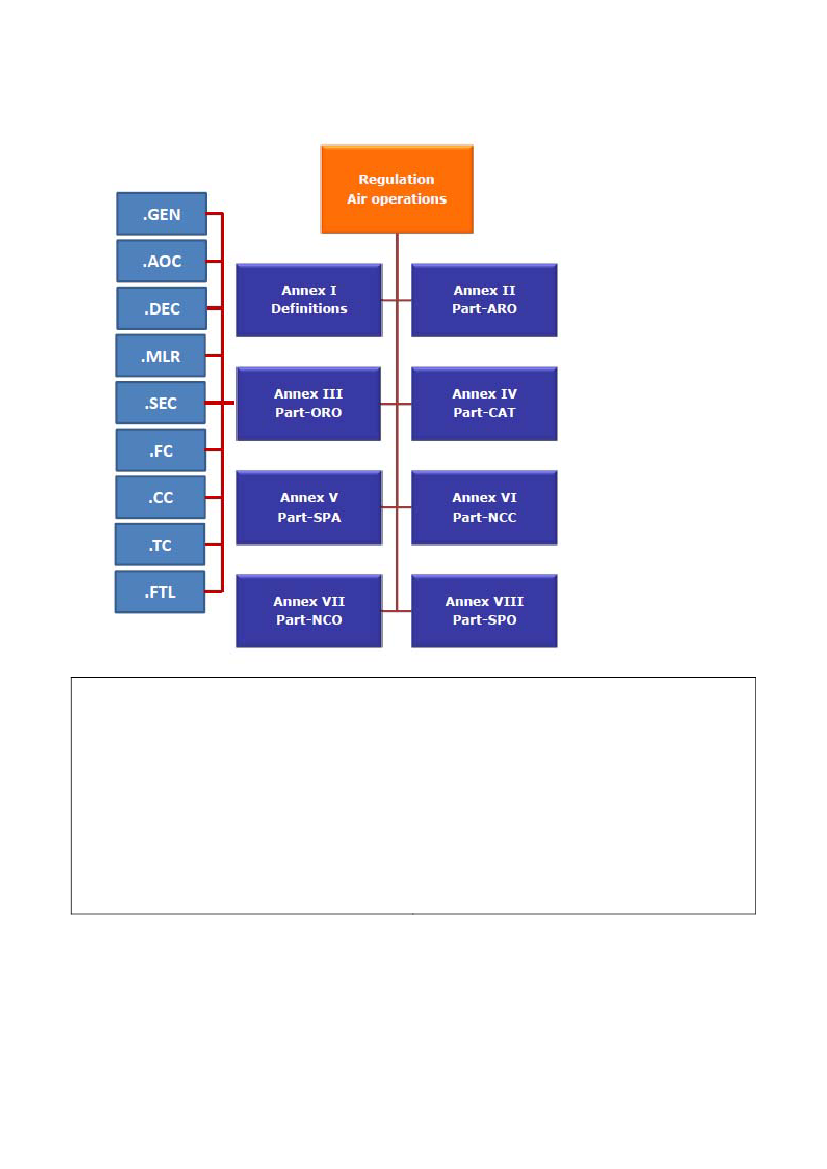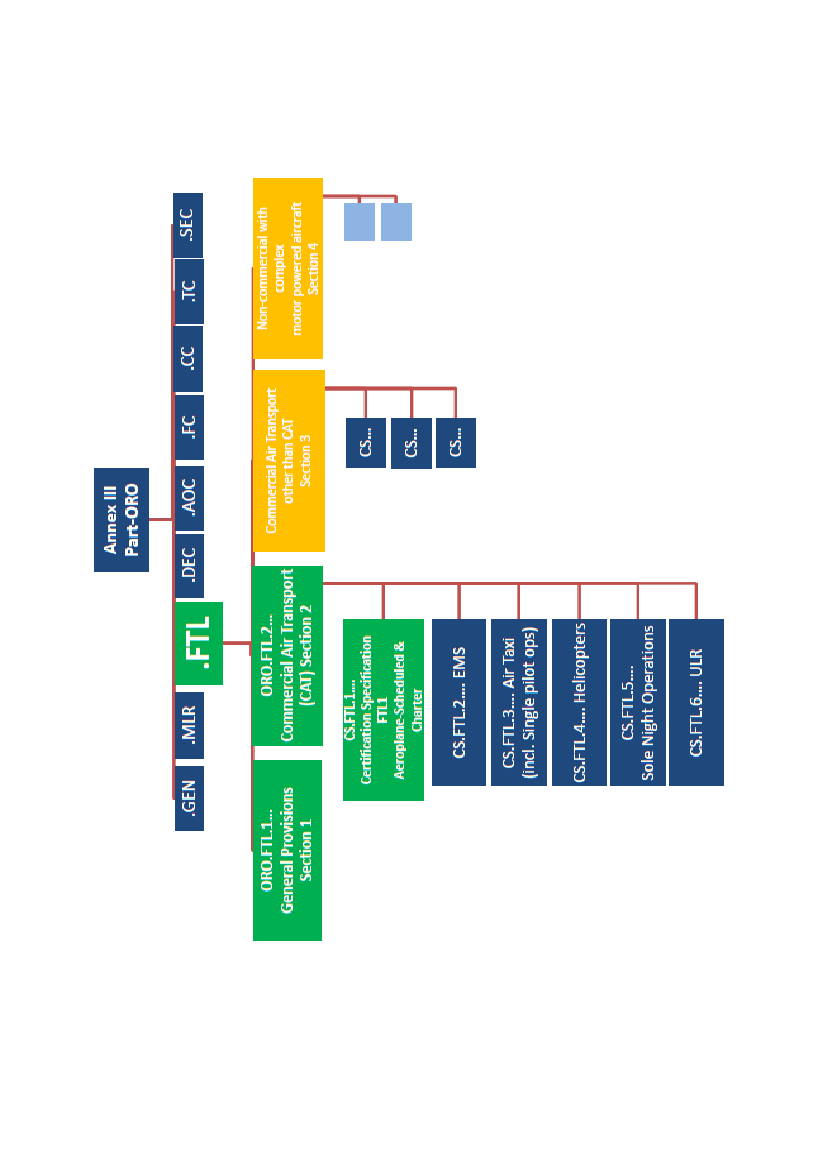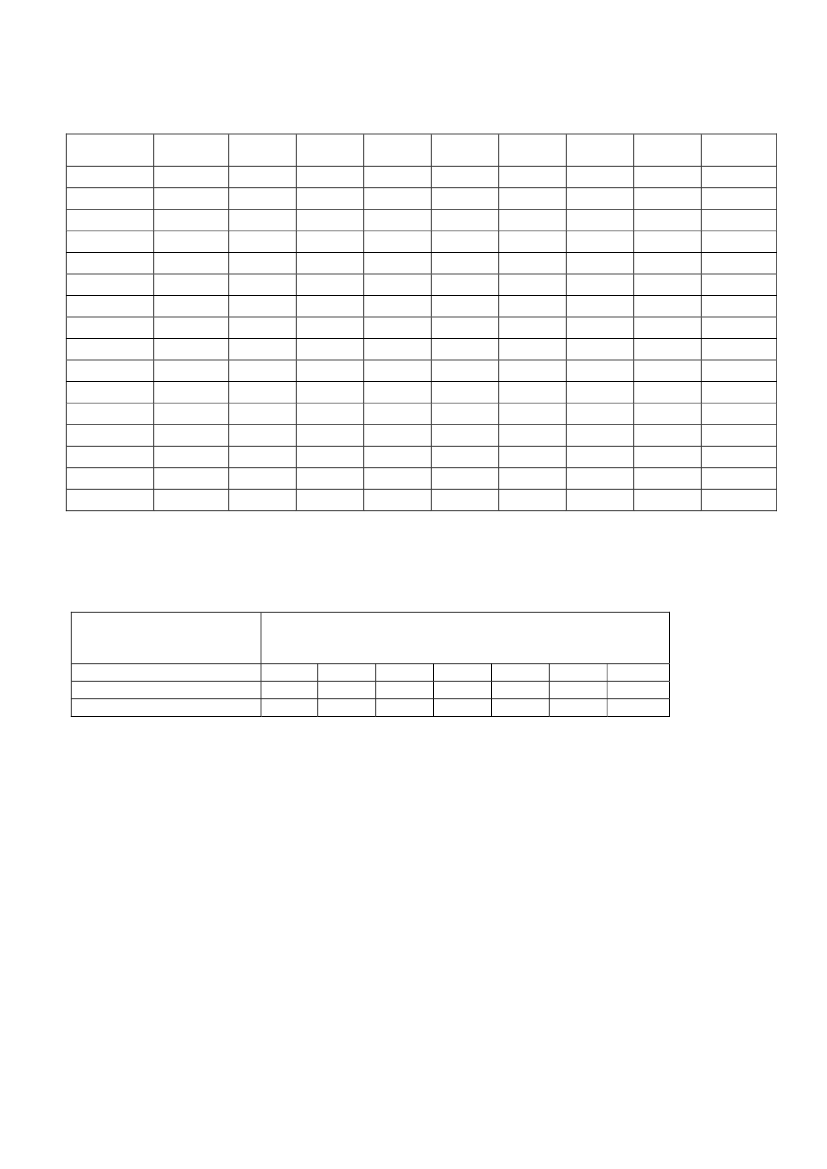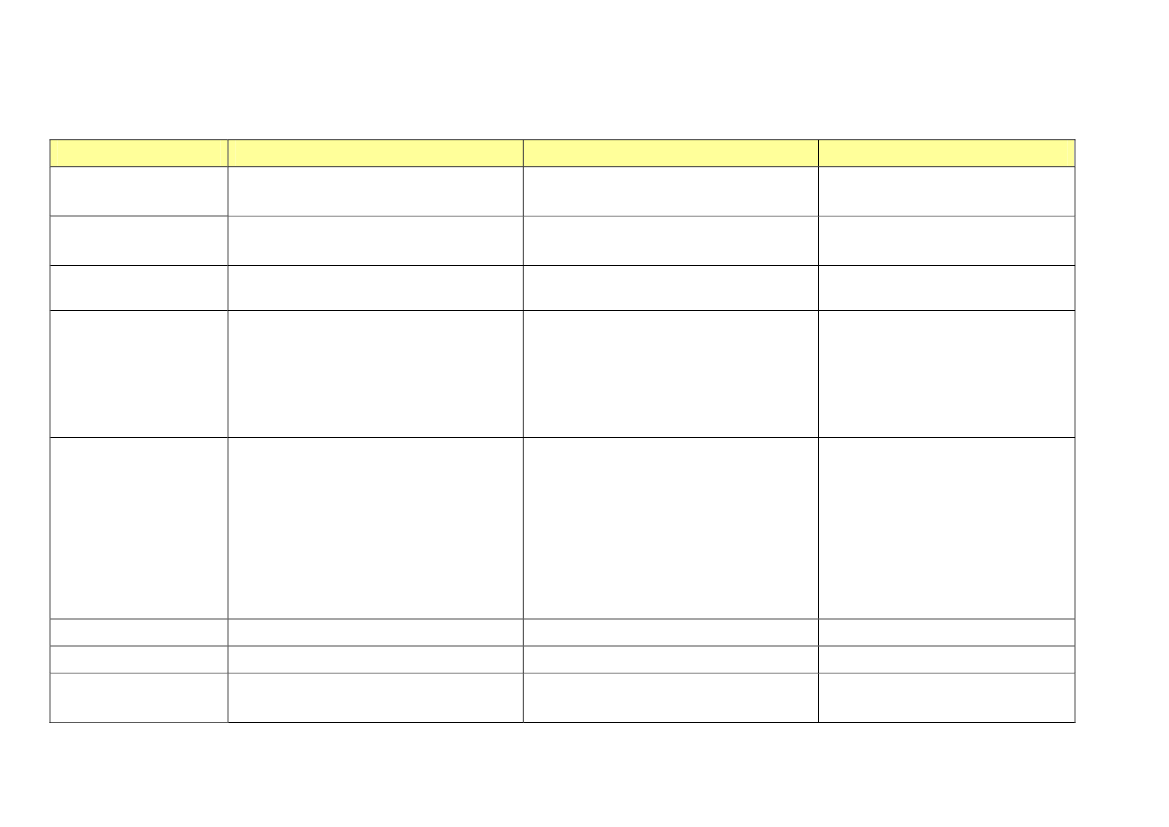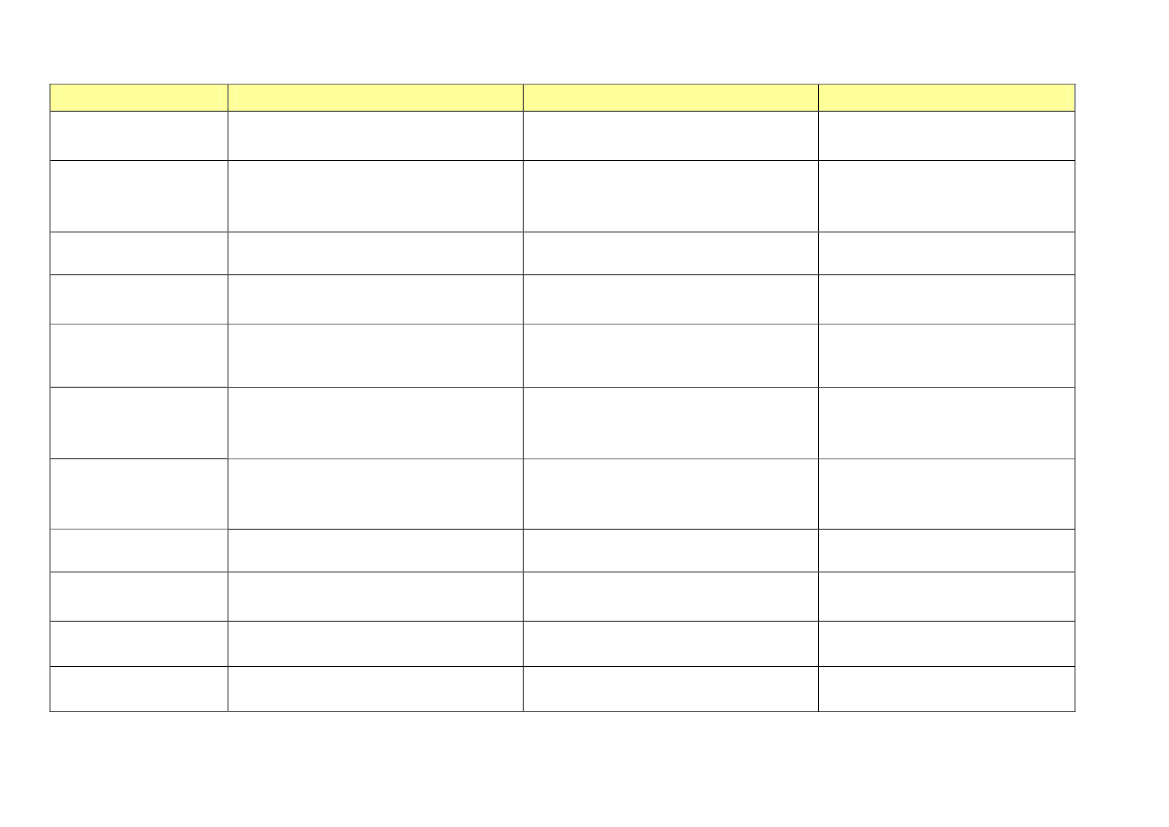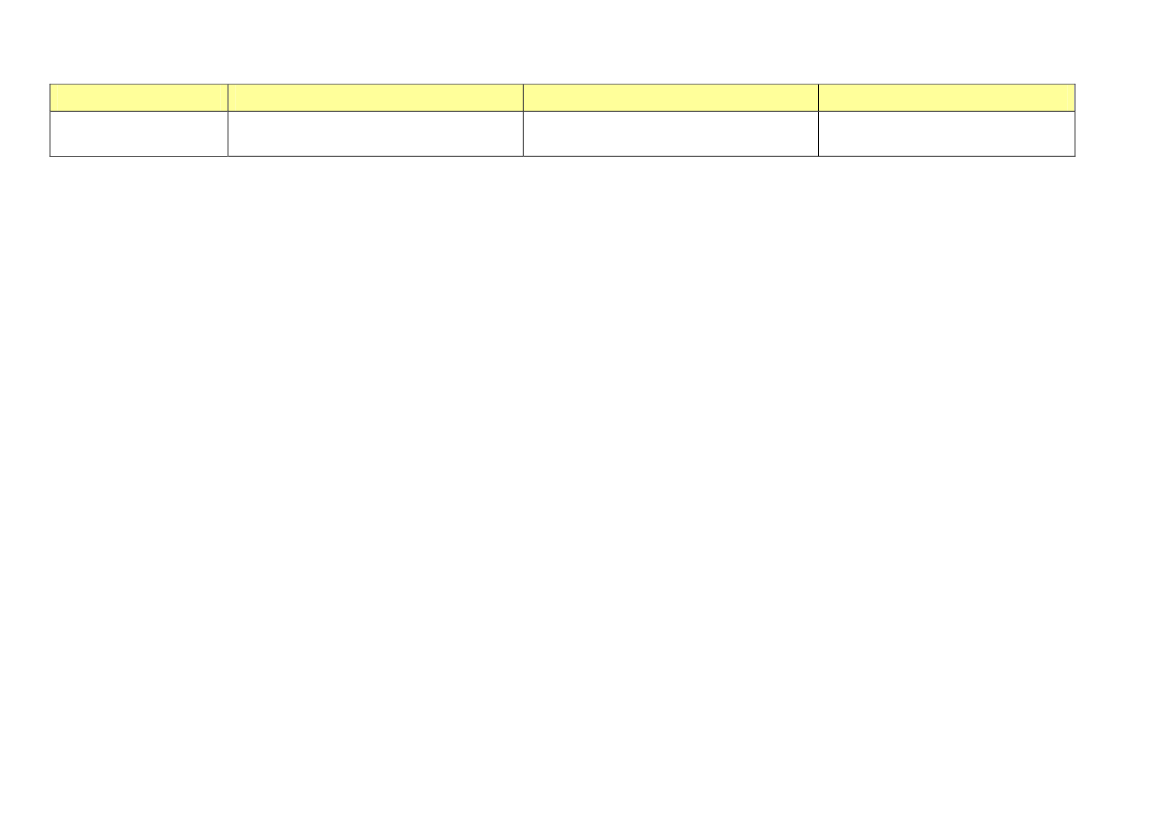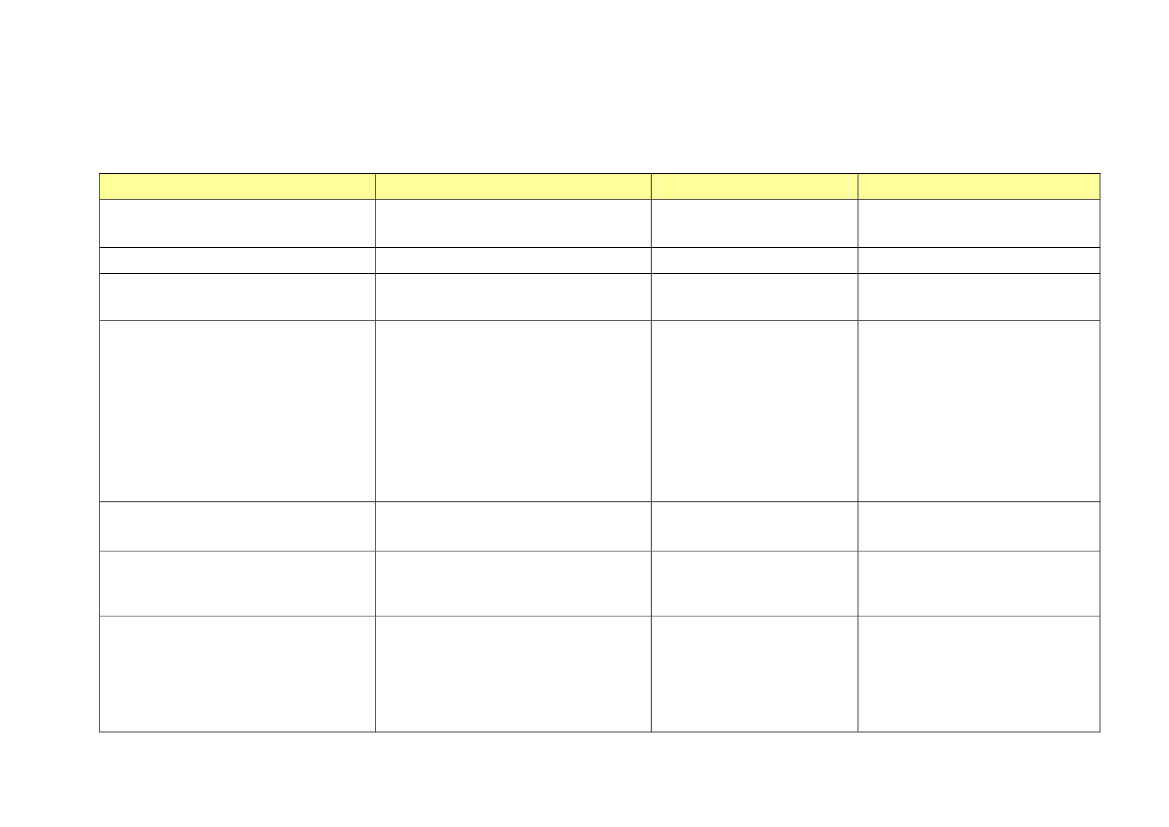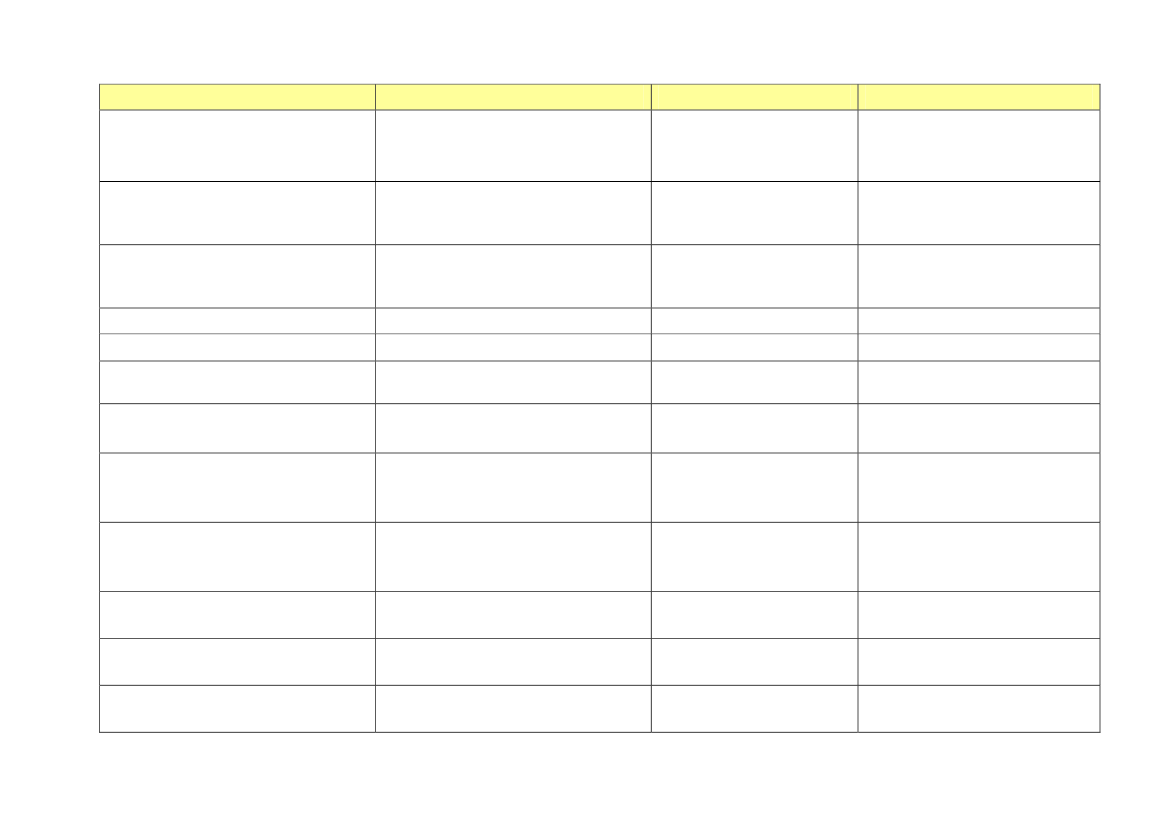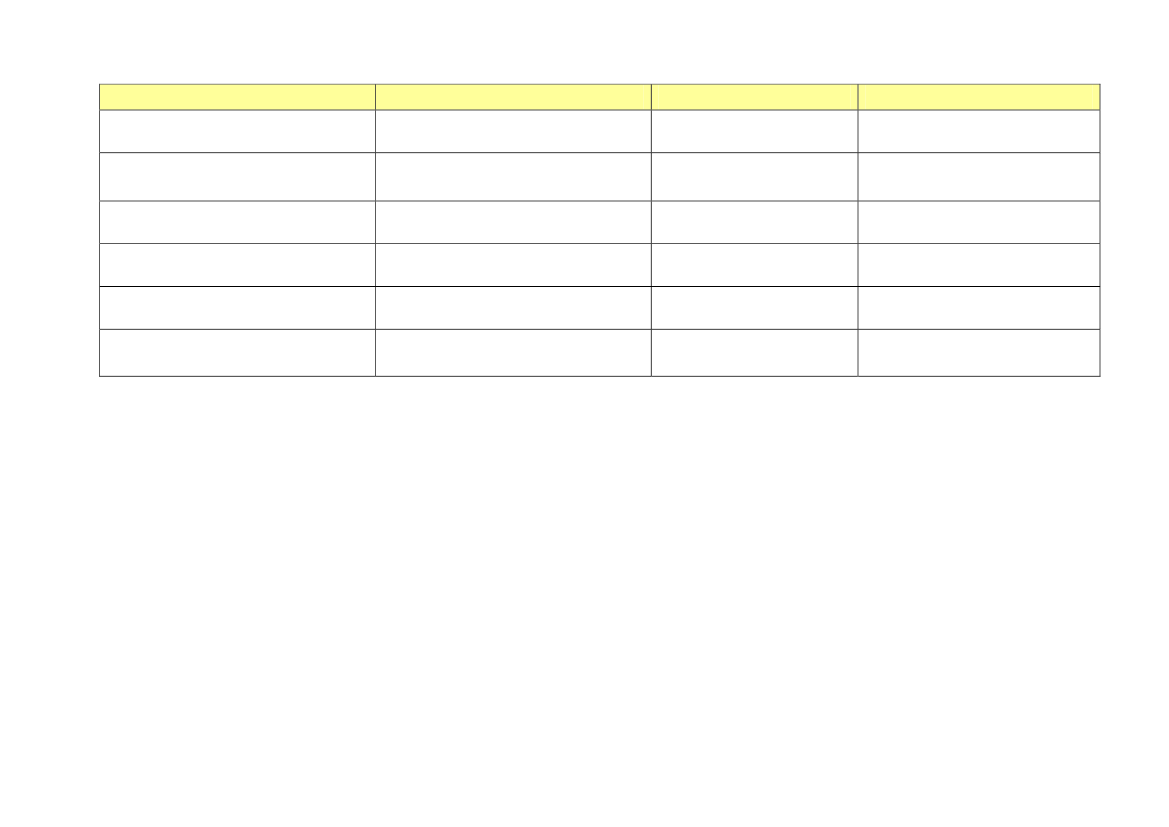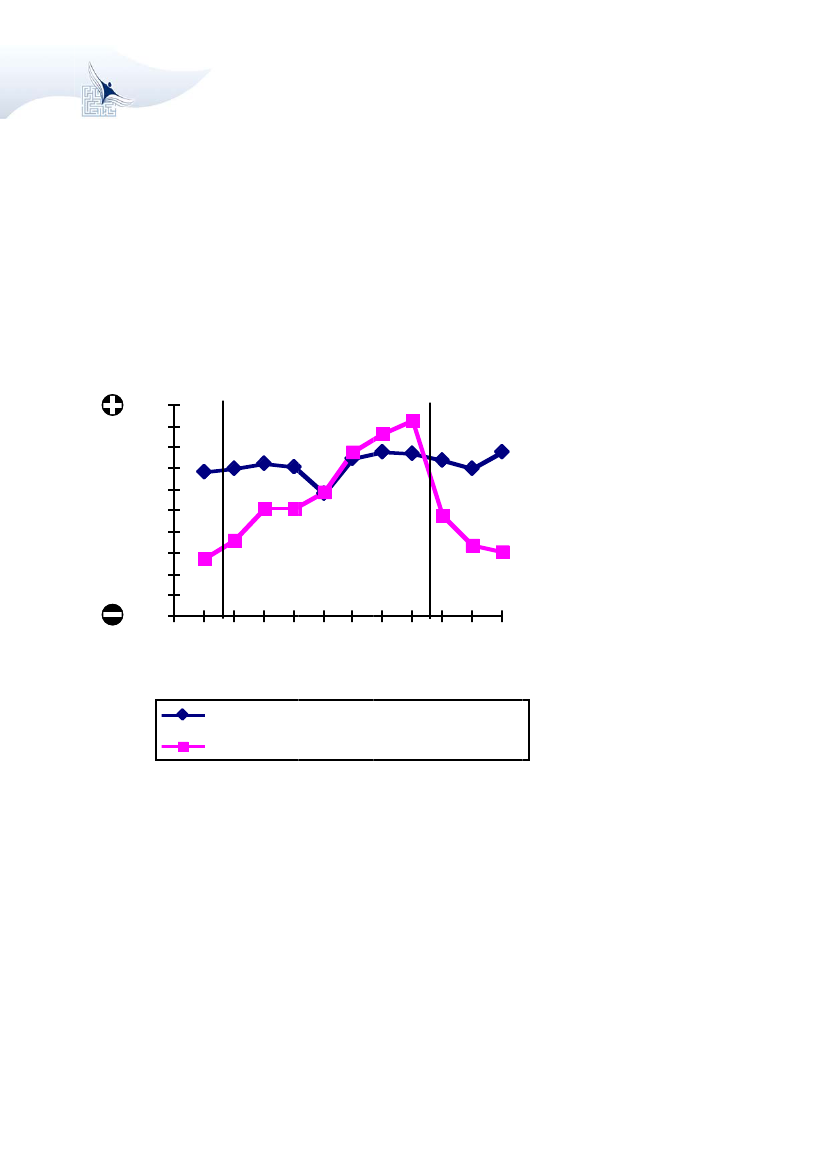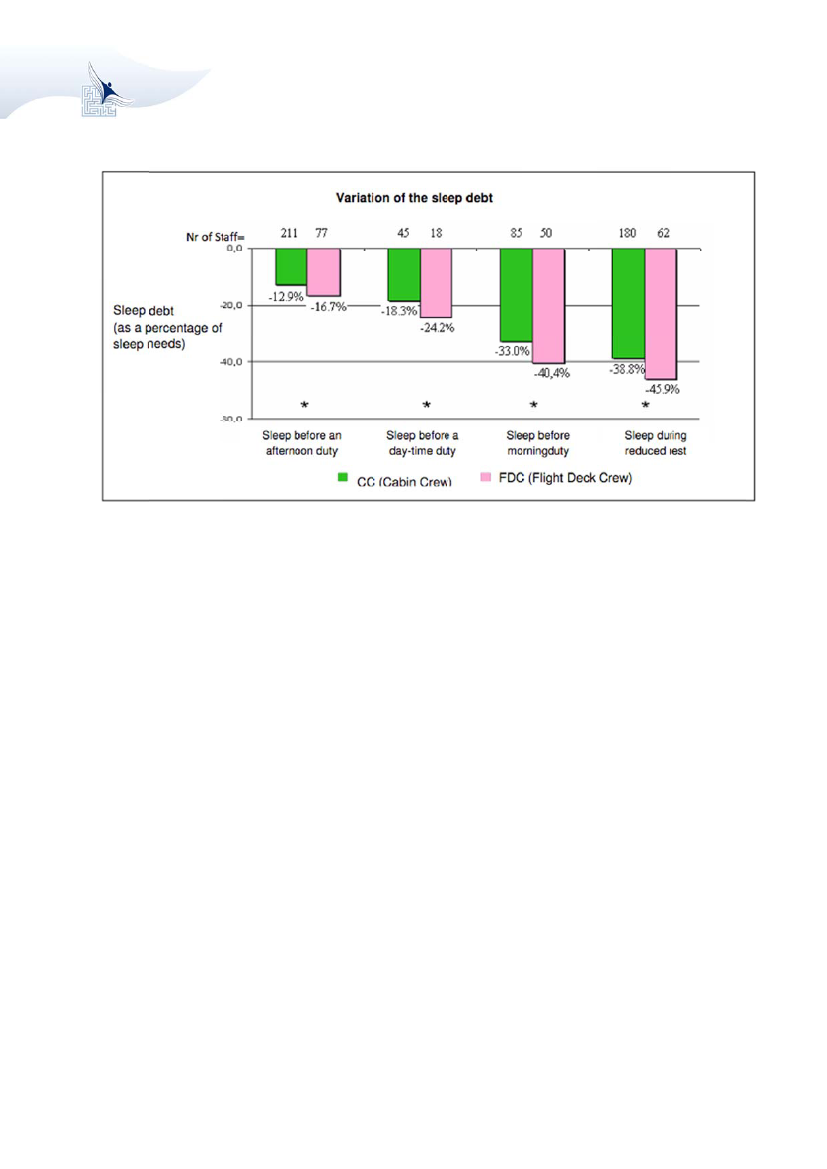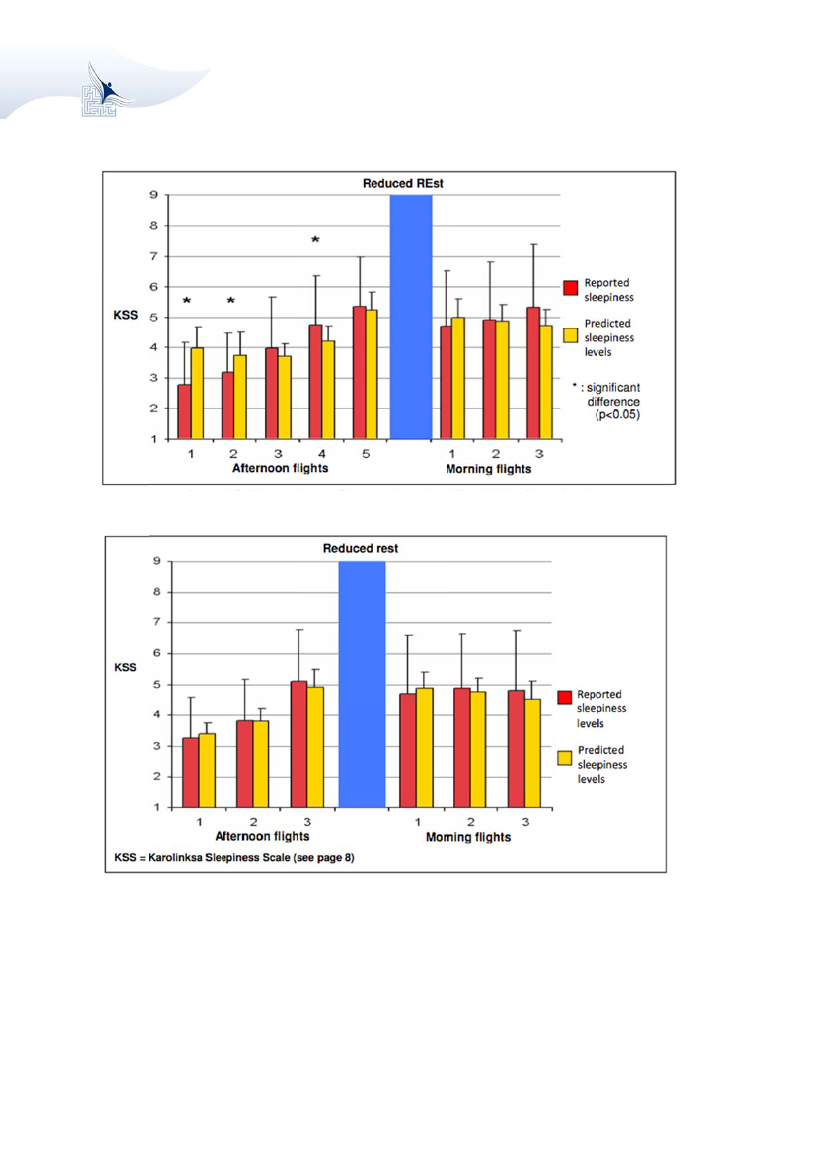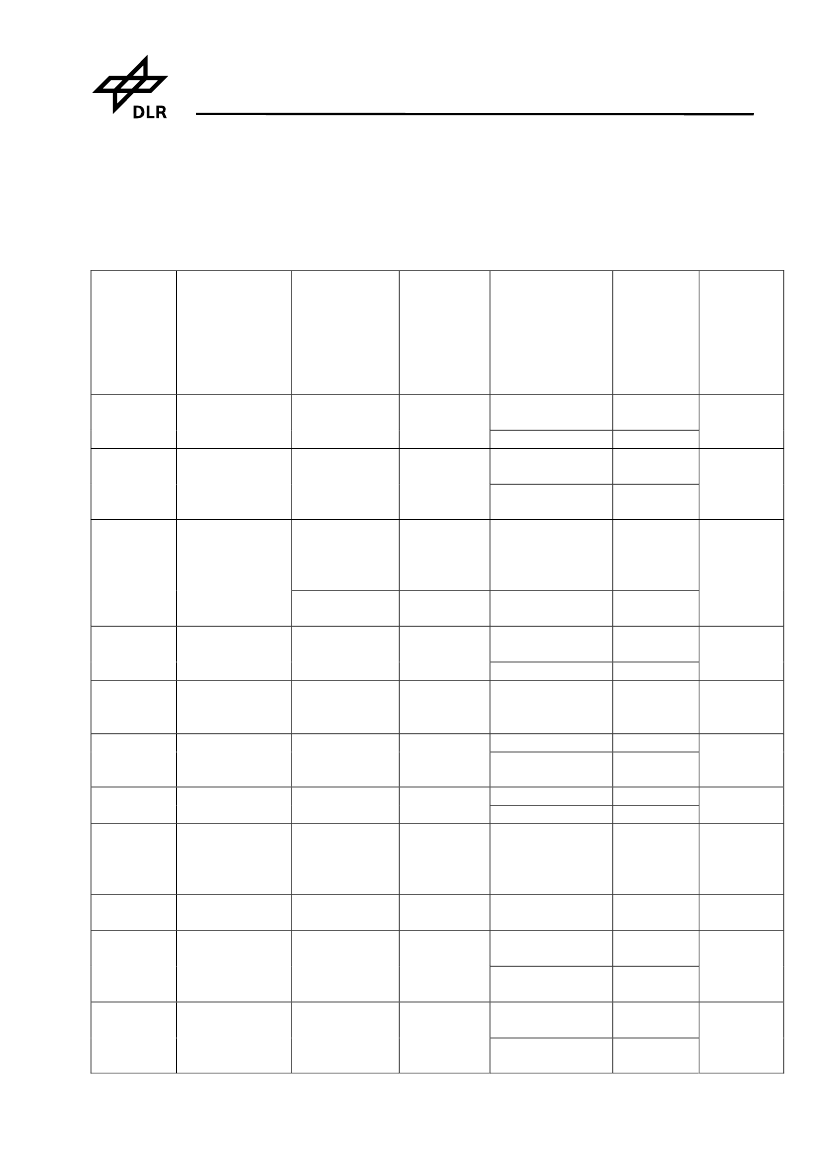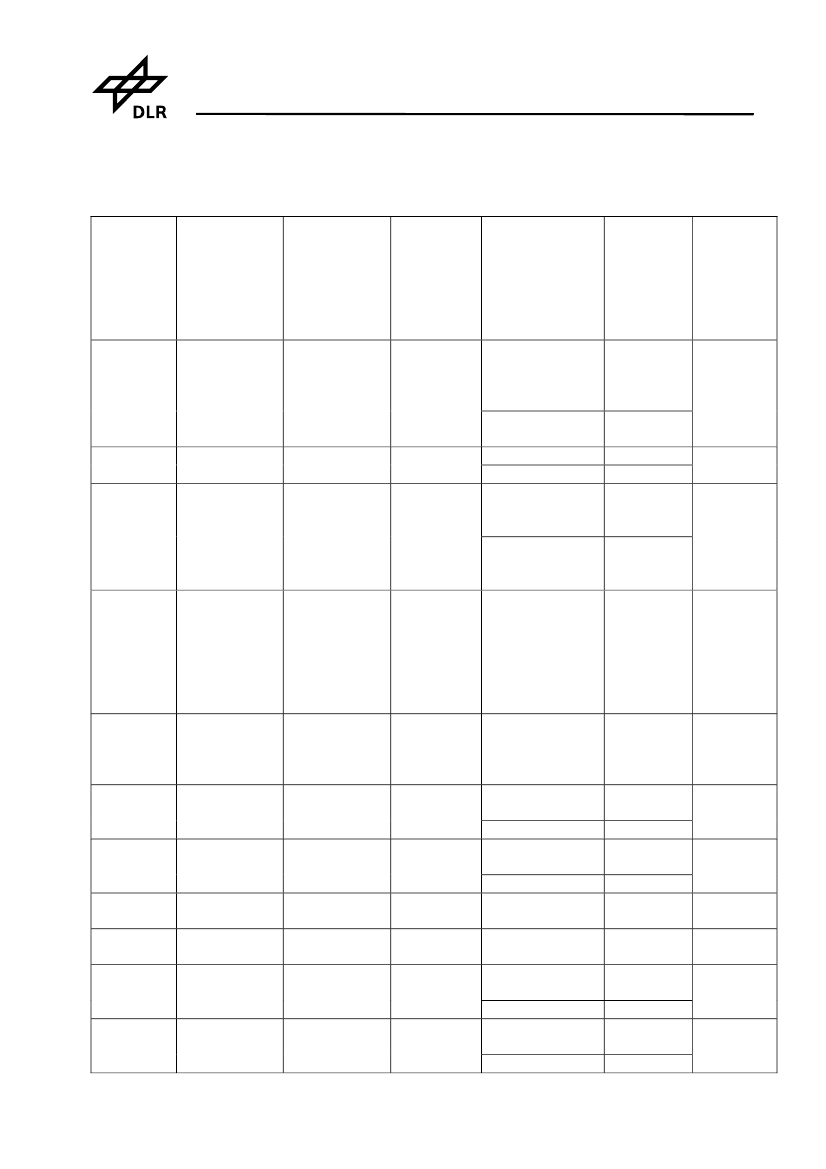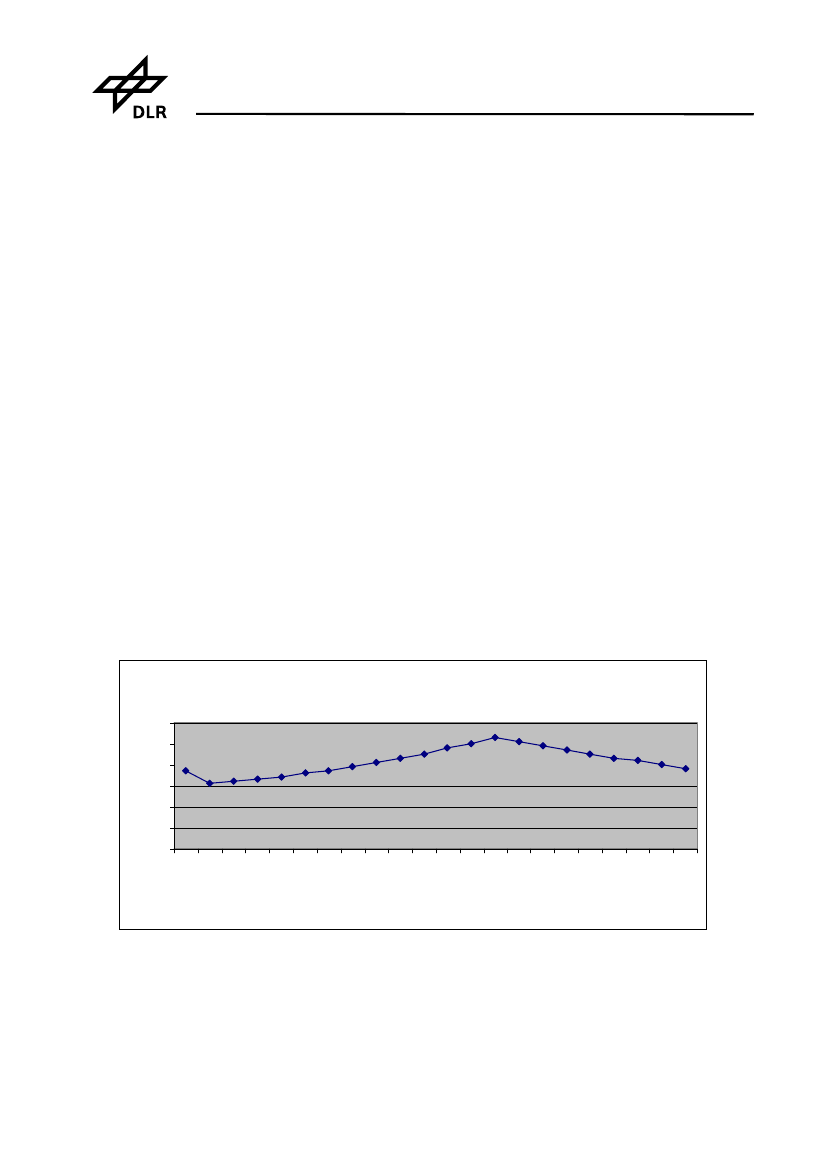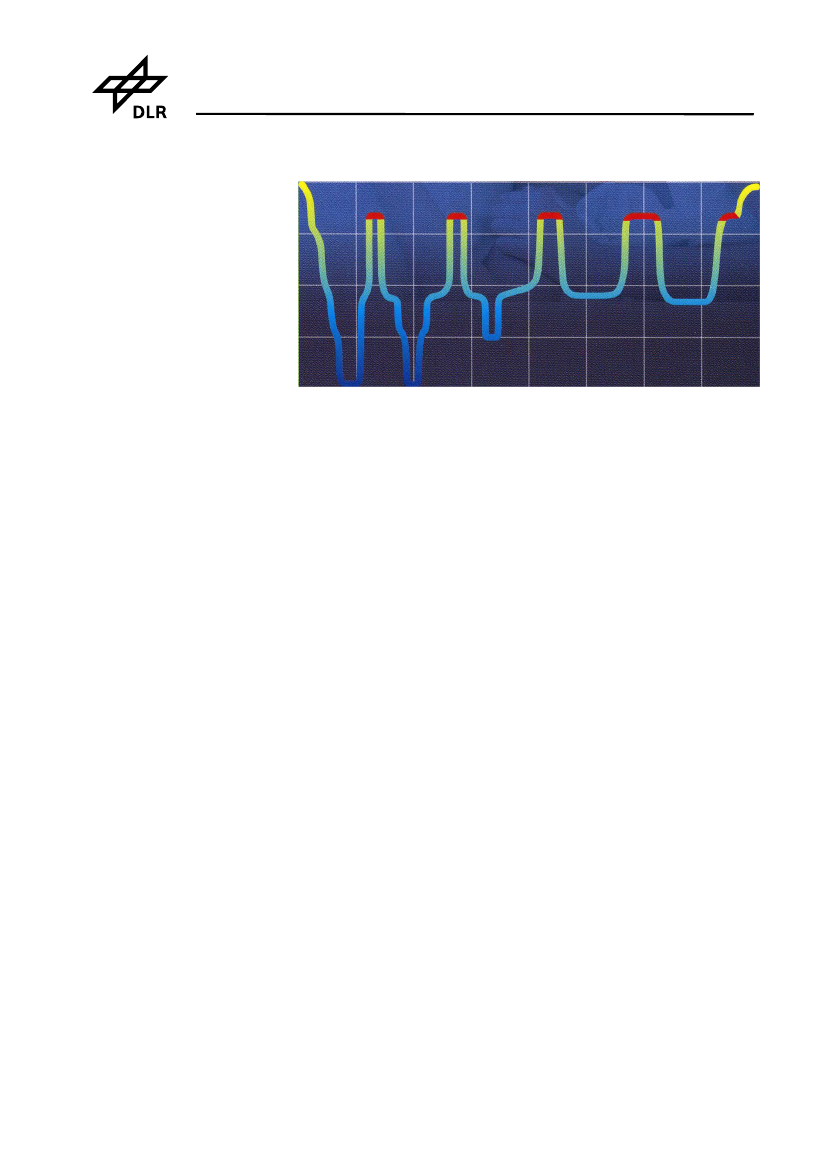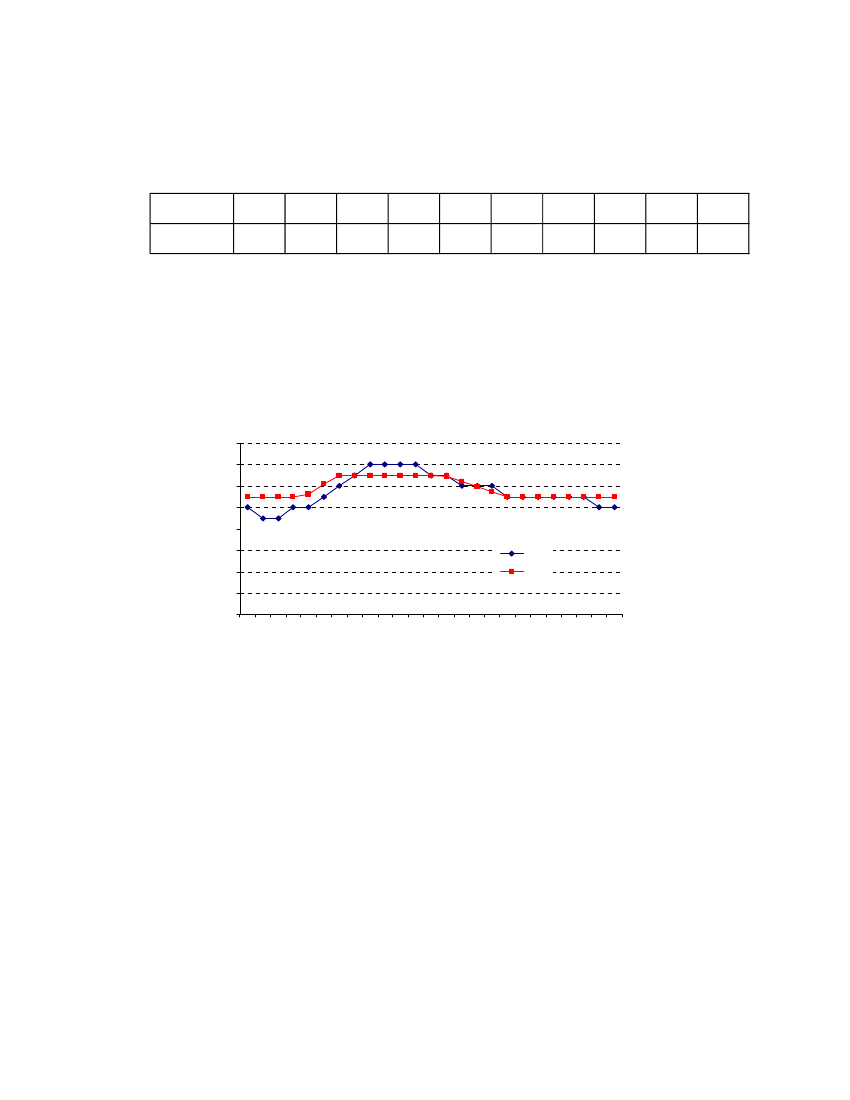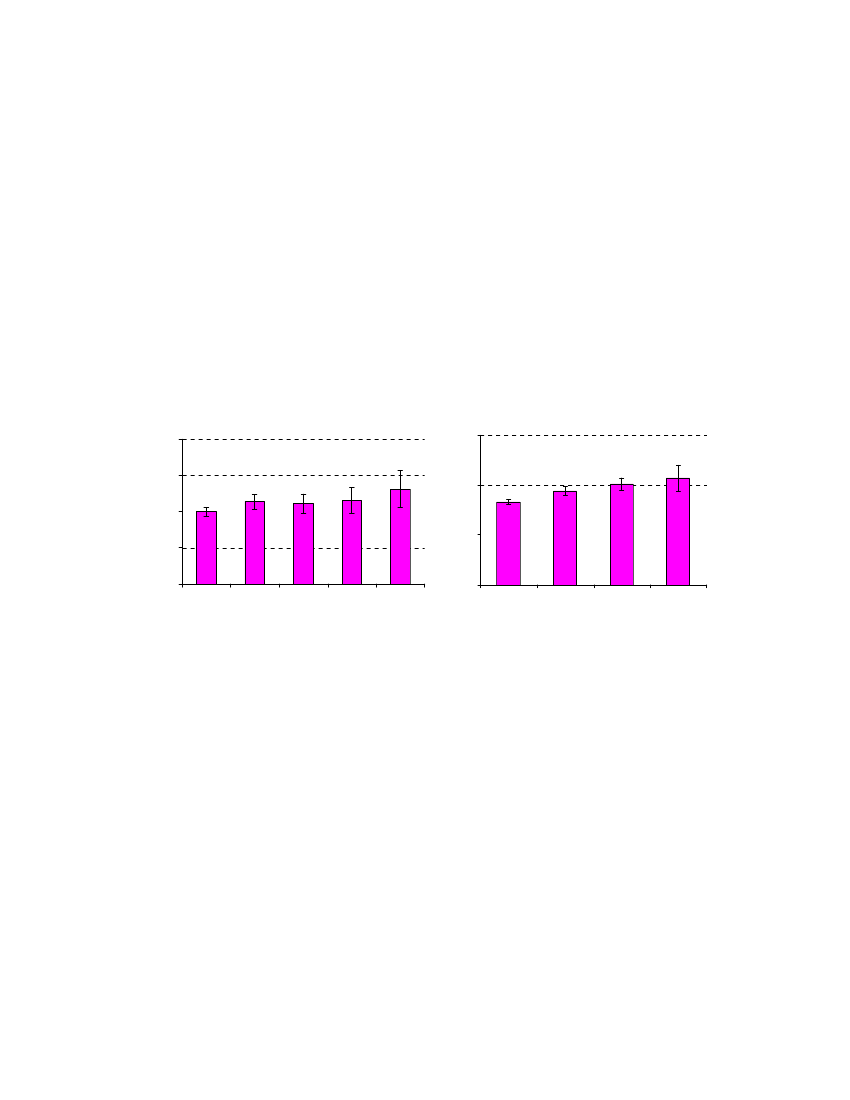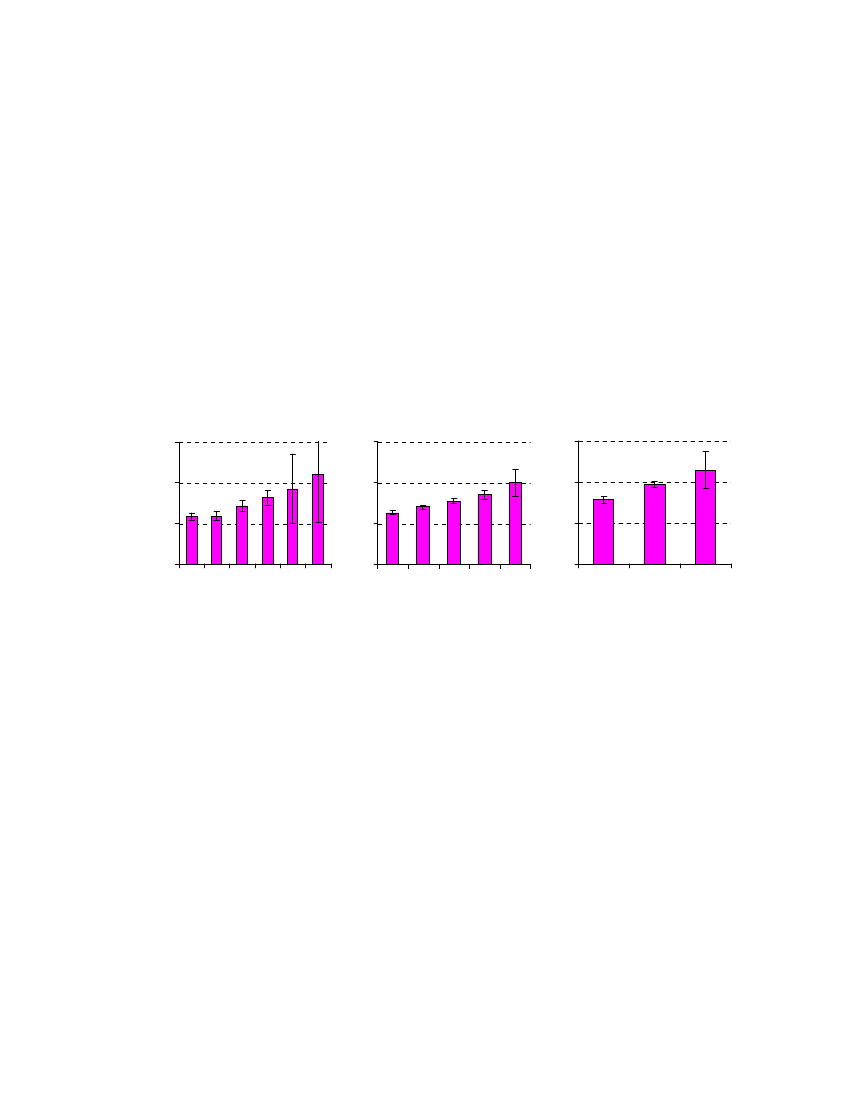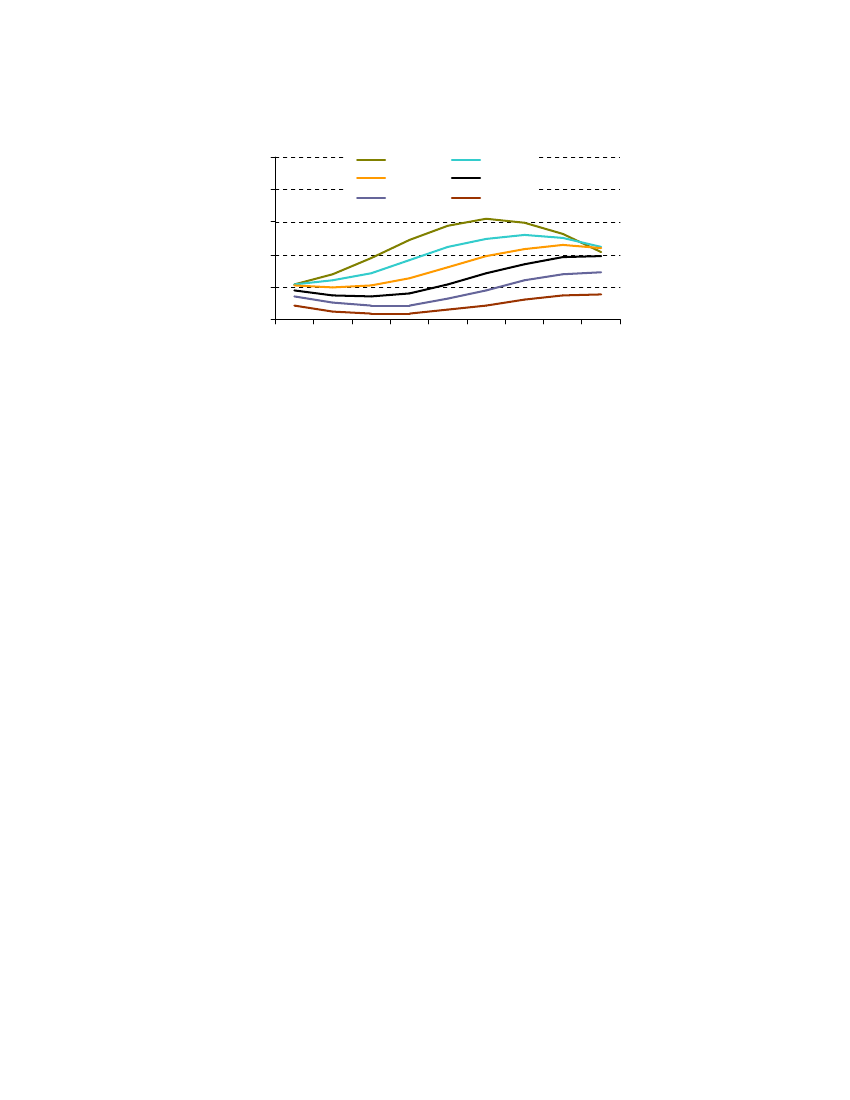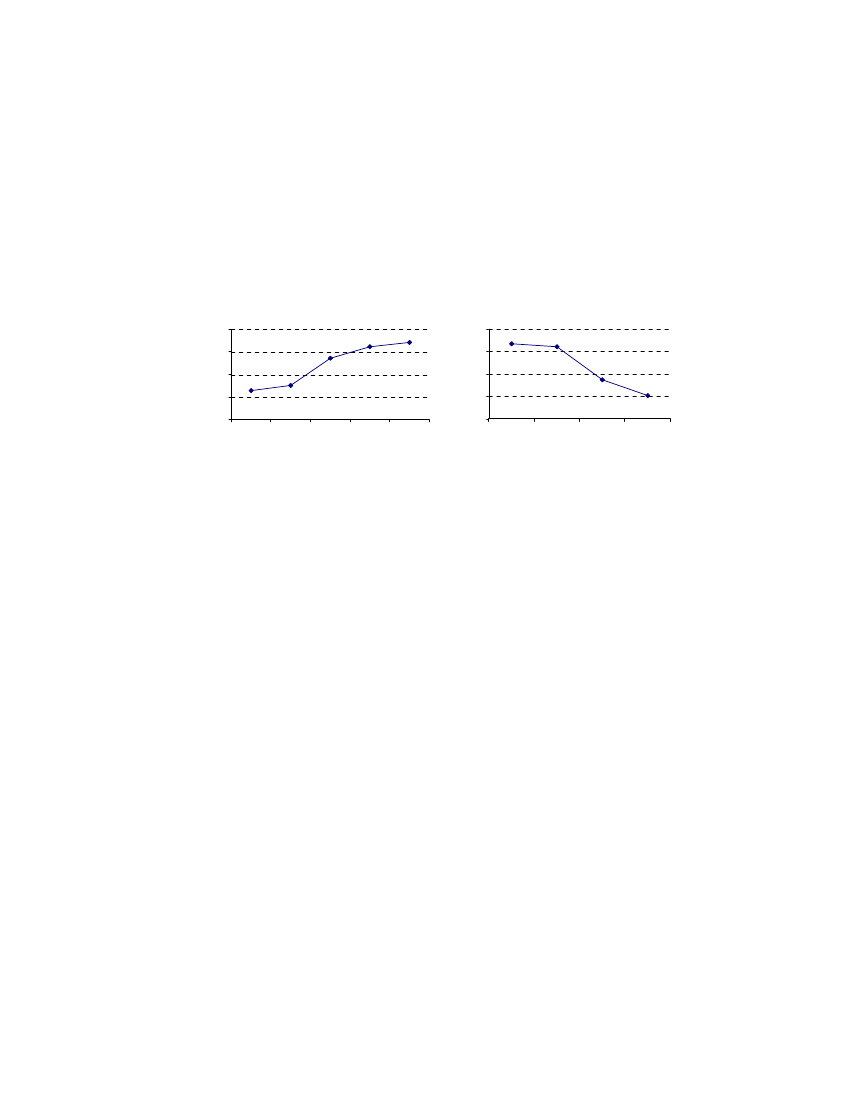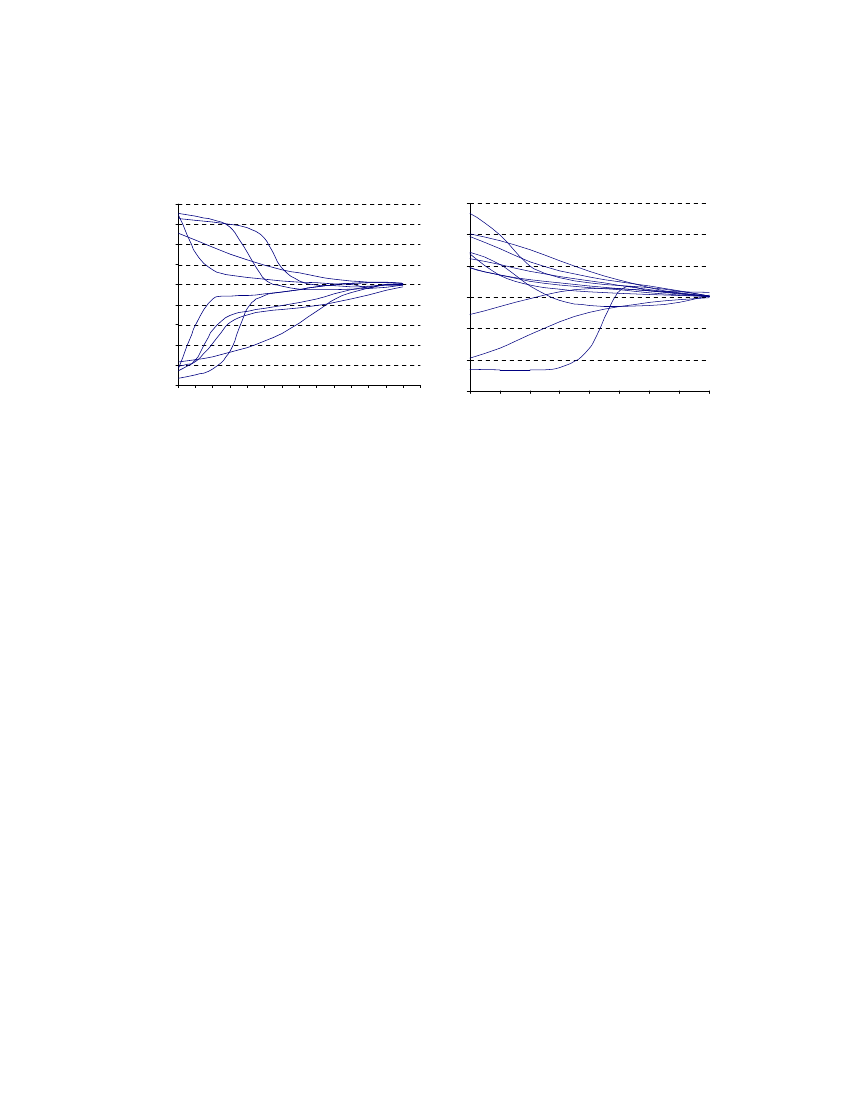Transportudvalget 2011-12
TRU Alm.del Bilag 232
Offentligt
18 Jan 2012
European Aviation Safety AgencyCOMMENTRESPONSEDOCUMENT(CRD)
CRDTONPA 2010-14RMT.0322 (FORMER OPS.055)Draft Opinion of the European Aviation Safety Agencyfor a Commission Regulation establishing the Implementing Ruleson flight and duty time limitations and rest requirementsfor commercial air transport (CAT) with aeroplanesanddraft Decision of the Executive Director of the European Aviation Safety Agencyon Acceptable Means of Compliance and Guidance Material related tothe Implementing Rules on flight and duty time limitations and rest requirementsfor commercial air transport (CAT) with aeroplanes
‘Implementing Rules and Certification Specificationson flight and duty time limitations and rest requirementsfor commercial air transport (CAT) with aeroplanes’
R.F010-02 � European Aviation Safety Agency, 2012. All rights reserved. Proprietary document.
CRD 2010-14EXECUTIVE SUMMARY
18 Jan 2012
This Comment Response Document (CRD) provides updated draft rule documents andresponses to comments received on the NPA 2010-14 on flight and duty time limitations andrest requirements for commercial air transport (CAT) with aeroplanes.The objective of task OPS.055, as required by the legislator, was to update the flight and dutytime limitations and rest requirements (FTL) for CAT with aeroplanes taking into accountrecent scientific and medical evidence. To fulfil this objective:the flight and duty time limitations and rest requirements specified in EU-OPS1Subpart Qhave been reviewed;the provisions for areas in EU-OPS Subpart Q currently subject to national provisions inaccordance with Article 8.4 of Regulation (EC) No 1899/2006 (e.g. extended flight dutyperiods with augmented flight crew, split duty, time zone crossing, reduced rest andstandby) have been suggested; andthe use and role of fatigue risk management (FRM) and individual flight time specificationschemes have been considered.
The Review Group which was set up to give expert advice to the European Aviation SafetyAgency (hereafter referred to as the ‘Agency’) on this task met seven times during thecomment review process to discuss the comments received on the NPA. The Agency alsocontracted three independent scientists to provide scientific input on the questions raised inthe NPA and on a number of additional questions agreed upon with the Review Groupmembers. Furthermore, a special meeting with the Advisory Group of National Authorities(AGNA) was convened in accordance with Article 7 of the Rulemaking Procedure2.The Agency has included in this CRD all existing Subpart Q FTL requirements as ImplementingRules (IRs). The changes to Subpart Q have been minimal and limited to issues wherescientific evidence had identified a clear need for safety improvement.As a result of the analysis of more than 49 000 comments received on the NPA, theconsultation of the Review Group, the scientists’ reports and the conclusions from the ad hocAGNA meeting, the following changes to the initial proposals of the NPA are proposed:Unlike in the NPA, the CRD proposes Certification Specifications (CSs) for all theelements that were at the discretion of the Member States under EU-OPS (the so-calledArticle 8 provisions).The maximum daily flight duty period (FDP) for the most unfavourable starting times hasbeen limited to 11 hours.A far more comprehensive set of rules addressing the effect of significant time zonecrossing.The NPA’s Guidance Material recommending spreading out duty periods evenly byincluding a cumulative duty limit for any 14 consecutive days has been upgraded and abinding limit of 110 hours in any 14 consecutive days has been introduced.Provisions to mitigate cumulative fatigue due to disruptive schedules have been added.Annex III to Commission Regulation (EC) No 859/2008 of 20 August 2008 amending CouncilRegulation (EEC) No 3922/91 as regards common technical requirements and administrativeprocedures applicable to commercial transportation by aeroplane.Management Board Decision concerning the procedure to be applied by the Agency for the issuing ofopinions, certification specifications and guidance material (‘Rulemaking Procedure’), EASA MB 08-2007, 13.6.2007.
1
2
R.F010-02 � European Aviation Safety Agency, 2012. All rights reserved. Proprietary document.
Page 2 of 103
CRD 2010-14
18 Jan 2012
An additional type of standby — the so-called ‘long-call standby’ — has been introduced.To cater for unforeseen circumstances in actual flight operations arising before crewmembers have reported for duty, requirements for ‘delayed reporting’ are replacing theinitially proposed rules for ‘short-term re-planning’.The requirements for the extensionrefined. The rules for the extensionbeen simplified; the time needed asFDP is now simply a function of theplanned extended FDP.of an FDP due to augmented flight crew have beenof an FDP due to in-flight rest for cabin crew havein-flight rest for cabin crew to achieve the extendedtype of in-flight rest facility and the duration of the
Specific rules concerning home base are addressed in a CS. Initially the proposed ruleforesees that the home base is a single airport location; however, deviation from the ruleis permitted under Article 22.2 of the Basic Regulation3.Finally, reduced rest provisions have been tightened. The CRD proposal mirrors thecurrent national practice of several Member States. Since the provisions are reflected in aCS, deviation will be possible under Article 22.2 of the Basic Regulation.
The Explanatory Note provides detailed information explaining the proposals as a support topotential commentators. Therefore, it should be read before placing reactions.
3
Regulation (EC) No 216/2008 of the European Parliament and of the Council of 20 February 2008 oncommon rules in the field of civil aviation and establishing a European Aviation Safety Agency, andrepealing Council Directive 91/670/EEC, Regulation (EC) No 1592/2002 and Directive 2004/36/EC(OJ L 79, 19.3.2008, p.1), as last amended by Commission Regulation (EC) 1108/2009 of theEuropean Parliament and of the Council of 21 October 2009 (OJ L 309, 24.11.2009, p. 51).
R.F010-02 � European Aviation Safety Agency, 2012. All rights reserved. Proprietary document.
Page 3 of 103
CRD 2010-14TABLE OF CONTENTSA.EXPLANATORY NOTEI.II.III.IV.V.B.I.II.INTRODUCTIONSCOPEUPDATE ON THE PROCESSOVERVIEW OF THE CHANGES PROPOSEDHOW TO SUBMIT REACTIONS
18 Jan 2012
556686970717373848485
PROPOSED RULEDRAFT OPINION — DRAFT COVER REGULATION TO REGULATION ON AIROPERATIONSANNEX III, PART-ORO (ORGANISATION REQUIREMENTS)SUBPART— FLIGHT AND DUTY TIME LIMITATIONS AND REST REQUIREMENTS
III. DRAFT OPINION — ANNEX II, PART-ARO (AUTHORITY REQUIREMENTS)SUBPART OPS — AIR OPERATIONSIV.V.DRAFT DECISION — CERTIFICATION SPECIFICATIONS, FLIGHT TIMESPECIFICATION SCHEMES
DRAFT DECISION — ACCEPTABLE MEANS OF COMPLIANCE (AMC) ANDGUIDANCE MATERIAL (GM) TO PART ORGANISATION REQUIREMENTS (PART-ORO)91SECTIONVIII — FLIGHT AND DUTY TIME LIMITATIONS AND REST REQUIREMENTS9197103103103103
VI. EU/JAR-OPS REFERENCE — EASA REFERENCEC.APPENDIXI.II.III.COMMENTATORSCOMMENTS RECEIVEDSCIENTISTS’ REPORTS
R.F010-02 � European Aviation Safety Agency, 2012. All rights reserved. Proprietary document.
Page 4 of 103
CRD 2010-14
18 Jan 2012
A.I.1.
Explanatory NoteIntroductionThis CRD contains a summary of the comments received on the Notice of ProposedAmendment (NPA) 2010-14 on flight and duty time Limitations and rest requirements forcommercial air transport (CAT) with aeroplanes, which was published on 20 December2010. This CRD also contains a revised rule text and an overview of the proposedchanges.The text of this CRD has been developed by the Agency, based on the commentsreceived on the NPA, on the input of the OPS.055 Review Group and on the reports fromthree independent scientists4. It is submitted for consultation of all interested parties inaccordance with Article 52 of the Basic Regulation and Articles 5(3) and 6 of theRulemaking Procedure.When developing rules, the Agency is bound to follow a structured process as required byArticle 52(1) of the Basic Regulation. Such process has been adopted by the Agency’sManagement Board and is referred to as the ‘Rulemaking Procedure’.The purpose of this Comment Response Document (CRD) is to develop an Opinion on theImplementing Rules on flight and duty time limitations and rest requirements forcommercial air transport (CAT) with aeroplanes as well as a Decision on the relatedCertification Specifications (CSs), Acceptable Means of Compliance (AMC) and GuidanceMaterial (GM). The scope of this rulemaking activity is outlined in the Terms of Reference(ToR) of rulemaking task OPS.0555, which is included in the Agency’s 2010–2013Rulemaking Programme.The Agency is directly involved in the rule-shaping process. It assists the Commission inits executive tasks by preparing draft regulations, and amendments thereof, for theimplementation of the Basic Regulation which are adopted as ‘Opinions’ [Article 19(1)]. Italso adopts Certification Specifications, including Airworthiness Codes and AcceptableMeans of Compliance and Guidance Material to be used in the certification process [Article19(2)].A Review Group of National Aviation Authorities (NAAs), airline, flight and cabin crewrepresentatives supported the Agency in the review of the comments and in thepreparation of the CRD. This Group was chaired by an independent advisor and includedan observer from the European Commission. It met seven times during the period fromApril to November 2011. During these meetings the Review Group discussed thecomments received on the NPA and the proposed changes to the rule.With a view to receiving scientific input on the NPA 2010-14, the Agency issued a call fortender and contracted three independent scientists who provided three scientific reportson the questions raised in the Explanatory Note of the NPA and on an additional set ofquestions that had been prepared by the Review Group. The three scientists and theReview Group convened a 3-day meeting in May 2011 where the draft scientific reports(that had previously been sent to all Review Group members) and the scientists’ answersto the questions where discussed in detail. Following these discussions, the threescientists submitted their final reports in late September 2011.
2.
3.
4.
5.
6.
7.
45
The reports from the three independent scientists are annexed to this CRD in section C.II.http://www.easa.eu.int/rulemaking/docs/tor/ops/EASA-ToR-OPS.055(a)_OPS.055(b)-00-20112009.pdf
R.F010-02 � European Aviation Safety Agency, 2012. All rights reserved. Proprietary document.
Page 5 of 103
CRD 2010-148.
18 Jan 2012
The Agency has taken due account of the scientists’ advice contained in their reports.The scientists’ advice is separately listed in each of the comment summaries for each ofthe key topics of Section IV of this CRD.Due to the large number of comments received, this CRD does not follow the traditionalformat: it was not technically possible to generate a CRD using the Agency’s CommentResponse Tool (CRT). Therefore, the Agency used the alternative method for processingall comments posted via the CRT: this CRD does not contain a response to each of thecomments that have been sent to the Agency. Comments have been grouped accordingto subject together with a response to the grouped comments in Section IV of this CRD. Acopy of the individual comments and a list of the commentators are provided in SectionC.II and C.III of this document.
9.
II. Scope10.This CRD includes a proposal for Implementing Rules (IRs), Certification Specifications(CSs), Acceptable Means of Compliance (AMC) and Guidance Material (GM) on flight andduty time limitations and rest requirements for commercial air transport operations byaeroplanes other than air taxi, emergency medical service (EMS) and single pilotoperations. The FTL requirements in general are the same for flight and cabin crew withfew marginal differences.Today’s FTL requirements for commercial transportation by aeroplane are laid down inSubpart Q of EU-OPS6. They are the result of long-lasting negotiations based onoperational experience of former national legislation. Therefore, the European Parliamentand the Council when adopting Regulation (EC) No 1899/2006 specifically requested theAgency to conduct a scientific and medical evaluation of Subpart Q [ref.: Regulation (EC)No 3922/91, new Article 8(a)] and to assist the Commission in the preparation ofregulatory proposals, if required:‘By 16 January 2009, the European Aviation Safety Agency shall conclude a scientific andmedical evaluation of the provisions of Subpart Q and, where relevant, of Subpart O ofAnnex III. Without prejudice to Article 7 of Regulation (EC) No 1592/2002 of theEuropean Parliament and of the Council of 15 July 2002 on common rules in the field ofcivil aviation and establishing a European Aviation Safety Agency, the European AviationSafety Agency shall assist the Commission in the preparation of proposals for themodification of the applicable technical provisions of Subpart O and Subpart Q of AnnexIII.’
11.
III. Update on the process12.The related Notice of Proposed Amendment (NPA) 2010-14, dated 20 December 2010,was open for a 3-month public consultation. By the closing date 20 March 2011, theAgency had received 49 819 comments from 2 715 individuals and organisations,including National Aviation Authorities (NAAs), professional organisations and privatecompanies.46 957 comments out of the total 49 819 comments were placed by individuals. Of thoseindividual comments some 98.6 % (i.e. 46 340 comments) originated from individualcommentators who had identified themselves as crew members in airlines operatingAnnex III of Commission Regulation (EC) No 859/2008 of 20 August 2008 amending CouncilRegulation (EEC) No 3922/91 as regards common technical requirements and administrativeprocedures applicable to commercial transportation by aeroplane.
13.
6
R.F010-02 � European Aviation Safety Agency, 2012. All rights reserved. Proprietary document.
Page 6 of 103
CRD 2010-14
18 Jan 2012
under CAP 3717, the United Kingdom of Great Britain and Northern Ireland’s (UK) flightand duty time and rest requirements. Of all individual comments 98.0 % (46 057individual comments) were duplicates or near duplicates and an important number ofcomments was either assigned several times or to paragraphs not corresponding to thecomment.14.Next to the comments from individuals, 1 518 comments were placed by 28 creworganisations, 748 comments by 30 individual operators, 199 comments by 9 operatororganisations and 397 comments by 12 NAAs.All comments received on the NPA 2010-14 were reviewed, analysed for their relevancewith regard to the proposed changes and summarised per rule paragraph. Due to theunprecedented high number of comments received, the Agency acquired an electronictext analysis toolkit designed by the University of Massachusetts for government agenciesto deal with large amounts of comments on legislative proposals. This tool was used toidentify duplicate comments and near duplicate comments and to sort commentsaccording to the relevant paragraph. Comment summaries, related responses tosummarised comments and the proposed revised rule text were discussed with theReview Group. The composition of the Review Group was based on the composition of theinitial Rulemaking Group as regards the distribution of group members from differentstakeholder groups. Group members that had resigned during the review phase werereplaced following the rules of procedure for the membership of rulemaking groups.Seven meetings of the Review Group took place on the following dates:16.18 and 19 April 2010;17, 18 and 19 May 2010;7 and 8 June;14 and 15 September 2010;19 and 20 October 2010;9 and 10 November 2010; and29 November 2010.
15.
A special meeting of the Advisory Group of National Authorities (AGNA) was convened inaccordance with Article 7 of the Rulemaking Procedure on 24 October 2010 because someNAAs had expressed concerns in their comments regarding the NPA proposals on themaximum daily flight duty period (FDP) during night hours, the need for an additional 14-day duty limit, the need for additional provisions to compensate the effects of disruptiveduty patterns, and on reduced rest provisions.During this meeting representatives of National Aviation Authorities provided guidance tothe Agency on the following 12 questions:The maximum allowable daily flight duty period (FDP) at the most favourable timeof the day.The maximum allowable daily FDP at night.The need to keep the 1-hour extension versus its integration into the basicmaximum FDP.The reduction of the maximum allowable daily FDP for more than 6 sectors (beyondSubpart Q).The impact of the window of circadian low (WOCL) on the extension due to in-flightrest.The impact of the number of sectors on the extension due to in-flight rest.The possibility of using economy seats for in-flight rest.
17.
7
CAP 371 The Avoidance of Fatigue In Aircrews, Guide to Requirements.
R.F010-02 � European Aviation Safety Agency, 2012. All rights reserved. Proprietary document.
Page 7 of 103
CRD 2010-14
18 Jan 2012
The need to put an additional cumulative duty limit every 14 days to mitigatecumulative fatigue.The need for extended recovery rest periods to compensate for irregular patterns ofwork.The added value of reduced rest provisions as compared to split duty.The maximum duration of home standby and related mitigating measures.How to best integrate the need for operational flexibility in this proposal.
IV. Overview of the changes proposed18.The responses to the comments were drafted by the Agency after consultation with theReview Group. The following paragraphs provide a summary of the comments andconclusions regarding the main topics that have been identified in the consultationprocess. All changes resulting from these main topics as well as from the other commentsare provided in Section B, which includes the newly proposed rule. Given the largenumber of comments, Section C of this CRD refers to the link placed on the Agency’swebsite which includes a document of all the comments placed. Section C also providesan overview of the commentators who placed their comments in the Comment ResponseTool (CRT).Implementing Rules and Certification Specifications19.20.In the proposal of this CRD the Agency has included all the elements of the existing FTLrequirements under Subpart Q as Implementing Rules (IRs).The changes to Subpart Q have been minimal. The Agency proposed changes only tothose parts of Subpart Q where scientific evidence has identified a clear need for safetyimprovement.Subpart Q of EU-OPS did not harmonise all FTL provisions. Some elements of Subpart Qare currently left by Article 8(4) of EU-OPS to the national legislator ‘until Communityrules based on scientific knowledge and best practices are established’, therefore leadingto different national legal provisions across Europe. Unlike in the NPA, the Agency in thisCRD proposes Certification Specifications (CSs) for all elements that were governed bynational rules under EU-OPS. Therefore, the proposed rule for ‘standby other than airportstandby’ and the definition of the relationship between airport standby and the assignedflight duty, split duty, additional rest to compensate for time zone differences, reducedrest and the extension of flight duty period due to in-flight rest foresees CertificationSpecifications (CSs) and is inspired by existing national rules, operational experience andscientific principles.Since both Implementing Rules (IRs) and Certification Specifications (CSs) have to becomplied with in their entirety, the proposed rule structure promotes a level playing field.Both the IRs and CSs will be the basis of operators’ FTL schemes. In those cases wherethe operator can demonstrate an equivalent level of safety, and provided that the requestfor individual flight time specification scheme proposed by the operator has beenendorsed by its competent authority and has passed the Agency’s technical assessmentbased on a scientific and medical assessment, the CS provides for ‘controlled flexibility’.This process is described in detail in Article 22 point 2 of the Basic Regulation.This CRD foresees the CS approach in those areas where European harmonisation did notexist previously and where national rules differ widely. The prescriptive limit contained ina CS must always contain a reference to an Implementing Rule. This approach ensuresfor the first time a harmonised rule in those areas that were previously governedexclusively by national rules.The CS approach is the result of the discussions of the Review Group and is in principlesupported by the majority of the group members, including those representing NationalAviation Authorities (NAAs).Page 8 of 103
21.
22.
23.
24.
R.F010-02 � European Aviation Safety Agency, 2012. All rights reserved. Proprietary document.
CRD 2010-14Rule structure25.
18 Jan 2012
All Organisation Requirements for Air Operations (Part-ORO) are contained in Annex IIIto the Regulation on Air Operations8. Annex III contains a subpart on flight and duty timelimitations and rest requirements (Subpart-FTL).Subpart-FTL, Section 1 of Annex III (Part-ORO) includes general provisions applicable toall commercial operators as well as non-commercial operators with complex motor-powered aircraft. It includes a definition section, addresses general operators’responsibilities and includes provisions on fatigue risk management.Subpart-FTL, Section 2 of Annex III (Part-ORO) includes general provisions applicable tocommercial air transport (CAT) operators with all aircraft types. It addresses in particulargeneral requirements on home base, flight duty period, flight times and duty periods,positioning duty, split duty, standby duty, rest periods, nutrition and records.Certification Specification (CS) FTL 1 contains specific flight and duty time limitations andrest requirements for commercial air transport by aeroplane — scheduled and charteroperations. It includes the prescriptive details of the requirements contained in Section 2and covers the requirements for the so-called ‘Article 8’ provisions.The structure of the AMC and GM follows the structure of the IR; additional AMC and GMare proposed for CS-FTL 1.It is important to note that Subpart-FTL, Section 2, as well as the CertificationSpecification FTL 1 does not apply to the following CAT operations:a.b.c.air taxi operations meaning non-scheduled on demand commercial operations withan aeroplane with a passenger seating configuration of 19 or less;emergency medical service operations;single pilot operations and helicopter operations.
26.
27.
28.
29.30.
These operations are therefore exempted from the proposed rules. Until the relatedImplementing Rules are adopted for such operations, Subpart Q of EU-OPS, the relatednational exemptions, as well as the Member States’ national requirements will apply.31.Additional rulemaking tasks will address detailed requirements for:a.b.c.32.emergency medical services — RMT.0346 [former OPS.071(a)];air taxi (including single pilot operations) — RMT.0429 [former OPS.071(b)]; andcommercial airOPS.071(c)].transportoperationswithhelicopter—RMT.0430[former
Further rulemaking tasks for Sole Night Operations and Ultra Long Range Operations(ULR) will follow.
8
Opinion No 04/2011 of the European Aviation Safety Agency of 1 June 2011 for a CommissionRegulation establishing Implementing Rules for Air Operations.
R.F010-02 � European Aviation Safety Agency, 2012. All rights reserved. Proprietary document.
Page 9 of 103
CRD 2010-14Table I.1: Overview of the rule structure ‘Regulation on Air Operations’
18 Jan 2012
.GEN: General requirements.AOC: Air operator certification.DEC: Declaration.MLR: Manuals, logs and records.SEC: Security.FC:.TC:Flight crewTechnical crew in HEMS, HHO or NVIS.CCC: Cabin crew.FTL: Flight and duty time limitations and restrequirements
Part-ARO: Authority requirementsPart-ORO: Organisations requirementsPart-CAT: Commercial Air TransportoperationsPart-SPA: Operations requiring specificapprovalsPart-NCC: Non-commercial operations withcomplex motor-powered aircraft(CMPA)Part-NCO: Non-commercial operations withother than CMPAPart-SPO: Special operations, e.g. aerial work
R.F010-02 � European Aviation Safety Agency, 2012. All rights reserved. Proprietary document.
Page 10 of 103
CRD 2010-14
18 Jan 2012
Table I.2: Overview of t he r ule structu re ‘flight and duty ti me li mitations and r estrequirements’
R.F010-02 � European Aviation Safety Agency, 2012. All rights reserved. Proprietary document.
Page 11 of 103
CRD 2010-14Definitions33.
18 Jan 2012
The paragraphs of the Explanatory Note dedicated to definitions and the definitionsthemselves attracted many comments by all stakeholder groups. Especially individualcommentators and crew organisations requested a number of additional definitionsarguing that numerous sections of the proposed rules contained wording that lacked cleardefinitions. They particularly demanded definitions for the terms ‘short-term re-planning’,‘operational need’, ‘unforeseen circumstances’, ‘sufficiently in advance’, ‘satisfactorily freefrom fatigue’, ‘spread as evenly as possible’ and ‘satisfactory level of safety’.Acclimatised
34.
Commentators from all stakeholder groups criticised the proposed definition for‘acclimatised’ for not being clear enough or not properly describing the phenomenon ofcircadian misalignment inherent to substantial time zone crossing. Since none of thecomments had been substantiated with scientific or medical data, only little conclusionscould be drawn from individual commentators’ comments, crew organisations’ commentsor operator organisations’ comments.The scientific reports coincided that adaptation to the new time zone would not becomplete after spending 36 hours free of duty or 72 hours conducting duties at thelayover destination. The three scientists agreed in their reports that acclimatisationoccurs gradually and depends on the time difference and the direction of the time zonetransition. Normally adaptation to westward time zone transitions is easier.The CRD takes account of the scientists’ advice applying conservative maximum FDPlimits whenever the state of acclimatisation is unknown.If layovers at one destination are planned to be less than 36 hours it should be possiblefor crew members to remain acclimatised to their home base time zone.Only for planned layovers of more than 36 hours, and depending on how many timezones have been crossed, un-acclimatisation or acclimatisation to the destination timezone shall be taken as reference for the maximum FDP values. Acclimatisation is onlyassumed after more than 60 hours of permanence in the case of 4 eastward or 5–6westward time zone transitions or even longer permanence if more time zones arecrossed.If crew members change time zones with every flight and do not spend enough time atone layover destination to become acclimatised to the new time zone, they are assumedto be unacclimatised during the entire rotation.The Agency believes that the complex context of acclimatisation is best reflected in atable that describes the state of presumed acclimatisation after time zone crossing takinginto account the duration of the layover, the direction of time zone transitions and thetime zones crossed.Accommodation
35.
36.37.38.
39.
40.
41.
Diverging views were expressed by commentators as regards the value of having adefinition foraccommodationand the content of the definition itself. While creworganisations insisted on introducing the clarification that an empty aircraft could notqualify as accommodation, operator organisations requested to explicitly include thepossibility to use an empty aircraft as accommodation as long as all other criteria aremet.Only one Member State expressed that there was a clear need to exclude an emptyaircraft as accommodation for the purpose of split duty or standby.Many comments were received requesting to replace the ‘possibility’ with ‘ability’. Theintention of the definition is that the place should possess temperature control and thepossibility to be obscured or illuminated as a minimum standard.Page 12 of 103
42.43.
R.F010-02 � European Aviation Safety Agency, 2012. All rights reserved. Proprietary document.
CRD 2010-1444.45.
18 Jan 2012
Individual commentators requested clarification that accommodation should be equippedwith furniture to allow a comfortable stay of all crew members.The Agency believes that there is no need to exclude an empty aircraft asaccommodation as long as all other criteria are met. Accommodation should be equippedadequately to allow a comfortable stay of all crew members making use of the facility atone time. Therefore, the Agency amends the definition including a reference to aminimum standard of furniture in accommodation. The word ‘possibility’ has beenchanged to ‘ability’ in the CRD.Air taxi operations
46.
Very few comments were received regarding the definition of ‘air taxi operations’. Oneoperator organisation supported the definition as proposed. Two Member States askedfor clarification if the mentioned 19-seat configuration was referring to themanufacturer’s certified seating configuration of the aeroplane or the seatingconfiguration in use by the operator. One Member State stated that the seatingconfiguration was not relevant for the type of operation and that therefore therequirement related to the seating configuration should be removed.This CRD does not include proposals for ‘air taxi operations’. They will be addressed bythe future rulemaking task RMT.0429 [former OPS.071(b)]. Therefore, the Agency doesnot see the need to change ‘air taxi operations’ before RMT.0429 starts.Augmented flight crew
47.
48.
Comments regarding the proposed definition of ‘augmented flight crew’ should beanalysed in connection with the definitions of operating crew member and the rulesconcerning in-flight rest.Crew organisations and one Member State claimed that cabin crew should be included inthe definition of ‘augmented crew’. They stated that augmented cabin crew had to becarried to allow cabin crew members to leave their assigned post during the flight for thepurpose of in-flight rest. They argued that resting cabin crew members should bereplaced by suitably qualified cabin crew members and that as a consequence the cabincrew had to be augmented on flights with an extended FDP due to in-flight rest. Theyreasoned that cabin crew have responsibilities for maintaining safety within the cabinduring all phases of a flight and that the minimum number of cabin crew for theoperation of an aircraft is established by the aircraft certification.The Agency disagrees that the scope of the proposed definition of augmented crew has tobe broadened to include cabin crew. The number and composition of cabin crew isestablished in Annex III, Organisation Requirements for Air Operations (Part-ORO),ORO.CC.100. Therefore, the proposed definition remains unchanged.Break
49.
50.
51.
Crew organisations and one Member State suggested the word ‘duty’ in the definition ofbreak to be replaced by the term ‘flight duty’ for more clarity. The word ‘crew’ should becomplemented by ‘member’ to make clear that a break might also apply to a single crewmember and not to full crews only. It was also suggested that a break should always bepre-planned. The extent to which pre-planning shall be a requirement for a period of timeshorter than a minimum rest period to count as a break or flight duty is defined in thesections where rules on split duty use the term ‘break’.The Agency agrees and has amended the definition of ‘break’ for more clarity.Crew member
52.
53.
One crew organisation suggested that the types of crew members, flight, technical andcabin crew should have their specific individual definitions.Page 13 of 103
R.F010-02 � European Aviation Safety Agency, 2012. All rights reserved. Proprietary document.
CRD 2010-1454.
18 Jan 2012
The terms ‘crew member’, ‘cabin crew member’ and ‘technical crew member’ are definedin Annex I, Definitions for Terms used in Annexes II–IX. Therefore, the Agency concludesthat there is no need to repeat the definitions of different types of crew members.Duty
55.
One operator pointed out that a duty a crew member had volunteered for should alsocount for cumulative limits and should be counted as duty. The word ‘required’ could beunderstood to exclude activities a crew member volunteers to perform for the operator.Crew organisations and one Member State suggested the explicit inclusion of ‘giving andreceiving training’ and ‘checking’ in the list of activities that should be considered asduty. One crew organisation suggested removing completely the list of activities. It wastheir view that any activity for the operator should be considered duty. Operatororganisations and one Member State proposed specifying that only some elements ofstandby count as duty while crew organisations maintained that all standby types shouldcount in full as duty.The definition of duty has been changed by removing the word ‘required’ for more clarity.There should not be room for any doubt that a duty a crew member has volunteered forshall count as such.The list of activities that shall count as duty is to be considered enumerative but notrestrictive and gives indication of what are the typical tasks that shall be considered asduty. Any task that is not mentioned in the definition will count as duty.The extent to which standby shall be counted as duty is regulated in the paragraphscorresponding to ‘standby’.Duty period
56.
57.
58.
59.
60.
No comments were received.Early start
61.
Crew organisations and individual commentators proposed considering a wider time bandfor the definition of early start. There was no agreement amongst the commentators onthe range of such a wider time band; the suggestions covered reporting times between05:00 and 06:59 or 06:00 and 09:00 at home base and 06:00 and 08:00 out of base.Individual commentators and crew organisations also criticised that the definition of earlystart was not used to limit the number of early starts in a defined period of time.Operator organisations expressed that the definition was superfluous because the effectsof window of circadian low (WOCL) encroachment on the maximum FDP were alreadyaddressed.Member States indicated that the definition of early start had to be linked to the timezone where the crew member is acclimatised. It was also suggested to make reference to‘crew member’ instead of ‘crew’.Two Member States stated that the definition of early start should not only relate to flightduty periods but also to duty periods. They argued that reporting times before 07:00, ifnot 08:00, should be included to take better account of sleep reduction due to having torise in the WOCL.The three scientists concurred in their reports that the definition of early start shouldinclude reporting times between 05:00 and 06:59.The Agency has amended the definition of ‘early start’ taking into consideration thescientists’ recommendations to include a wider time band.The word ‘crew’ has been replaced by ‘crew member’ to make clear that this definitionrefers to the individual and not to the entire crew.Page 14 of 103
62.
63.
64.
65.66.67.
R.F010-02 � European Aviation Safety Agency, 2012. All rights reserved. Proprietary document.
CRD 2010-1468.
18 Jan 2012
Since the definition should be used to manage fatigue-related risks and not only flightduties that are fatiguing, the amended definition covers all duty periods starting in thedefined time band. For more clarity reference is made to the time zone.Eastward-Westward and Westward-Eastward transition
69.
Two crew organisations asked for this definition to be removed. One operator suggestedincluding also a definition for the term ‘rotation’ used in the definition. One Member Statesuggested making reference to the time zones crossed and not to the hours of timedifference. It was also criticised that the reference point between alternating rotationswas not clearly defined. Two Member States and one operator requested defining thehome base as reference point between alternating rotations and to clarify that theadditional night of rest as a consequence of such a transition should be taken at homebase.The Agency agrees that a new definition for the term ‘rotation’ is useful for betterunderstanding. The definition of ‘Eastward-Westward and Westward-Eastward transition’has been changed to make reference to the time zones crossed. Also home base hasbeen introduced as the transition point.Flight duty period (FDP)
70.
71.
Crew organisations requested including a certain amount of time at the end of any FDPfor safety tasks to be completed after the end of the last flight. They also suggestedincluding positioning, general training, administrative duties, airport standby andsimulator training into the same duty period before a flight as an operating crewmember.As regards the relation between FDP and split duty, crew organisations argued that thedefinition of FDP should also cover the break in a split duty. Operator organisations,Member States and crew organisations expressed that the definition should make clearthat an FDP always has to include a flight or series of flights. One Member Statesuggested aligning the definition with Subpart Q.Post-flight duties are counted as cumulative duty and have an impact on the minimumrest after an FDP. The Agency does not see the need to include post-flight duties in FDP.The Agency also believes that the definition of FDP is in line with the definition in SubpartQ. For more clarity the word ‘operating’ has been added when referring to the crewmember.Flight time
72.
73.
74.
Two Member States requested aligning the definition of ‘flight time’ with the definition of‘block time’ in Subpart Q. They argued that the definition in Subpart Q had been in linewith the definition of ‘block flying time’ in the Council Directive 2000/79/EC (WorkingTime Directive for Mobile Workers in Civil Aviation). They claimed that any minor changewould lead to operators having to keep two sets of records. The change consists in factthat under the NPA definition ‘flight time’ would only have to be recorded if an actualtake-off and landing (a flight) had taken place.Crew organisations recommended establishing a link between ‘sector’, ‘block to block’and ‘flight time’. They argued that taxiing for a remote holding position should beregarded equally as taxiing with the purpose of taking off and after landing. Theydefended that any time during which engines are running should count as flight time forthe purpose of cumulative flying time limits.The Agency concludes that an additional administrative burden should be avoided foroperators. The definition of ‘flight time’ should therefore be in line with the definition of‘block time’ used in Subpart Q. The definition has been amended.
75.
76.
R.F010-02 � European Aviation Safety Agency, 2012. All rights reserved. Proprietary document.
Page 15 of 103
CRD 2010-14Home base77.
18 Jan 2012
Crew organisations requested the words ’normally’ and ‘under normal circumstances’ tobe removed from the definition. They also requested to mention the permanent characterof home base in the definition. They recommended home base to be a ‘single airportlocation’. A number of crew organisations suggested to define ‘normal circumstances’through the exception, that means the only case when an operator would have to providesuitable accommodation at home base for so-called back-to-back operations coveredunder FTL.1.235(b). One operator suggested including that also positioning and not onlyflight duty could start or end at home base.One Member State proposed home base to be ‘apermanentsingle location nominated bythe operator from where the crew member starts and ends a duty period or a series ofduty periods’.The definition of home base remains unchanged. Conditions as regards permanency andchanges of home base are given in the corresponding rules.Late finish
78.
79.
80.
Operator organisations pointed out that there wasn’t any reference to ‘late finish’ in anyof the rules in Chapter 2 or Appendix X, Section 1; they therefore recommended deletingthe definition. As regards the restrictions that should apply to FDPs encroaching theWOCL, they argued that the reduction of FDP due to reporting time was covering thepossible fatigue impact.Crew organisations requested including arrivals between 23:00 and 01:59 at home baseand arrivals between 00:00 and 01:59 out of home base into the time window of the latearrival. One crew organisation proposed to widen the window to start at 22:00; theysubstantiated their suggestion with the fact that the hours between 23:00 and 02:00 areconsidered to be the most valuable night hours for recuperative sleep.One Member State recommended making reference to a crew member and not to ‘thecrew’ for better understanding.The three scientists agreed in their reports that the definition of late finish should start at00:00 in order to properly take into account the sleep loss resulting from a late finish.The Agency has amended the definition of late finish in line with the scientists’ advice. Inorder to clarify that the definition refers to individual crew members, ‘crew’ has beenreplaced by ‘crew member’.Local day
81.
82.83.84.
85.
No comments were received regarding the definition of local day.Local night
86.
Crew organisations proposed changing the definition of local night to 10 hours between22:00 and 10:00. They argued that the intention of defining a local night was to allow fora full night’s sleep of 8 hours. A definition of 8 hours between 22:00 and 08:00 wouldallow for starting times as early as 06:00. Starting as early as 06:00 could lead to asleep loss of an average of over 90 minutes, reducing the recuperative effect of the nightsleep.The term ‘local night’ is used in rules related to the recurrent extended recovery restperiod or in rules related to additional rest requirements related to disruptive schedules.Those rules provide compensation for cumulative sleep loss. The Agency concludes thatthere is no need to change the definition.Page 16 of 103
87.
R.F010-02 � European Aviation Safety Agency, 2012. All rights reserved. Proprietary document.
CRD 2010-14A single day free of duty88.
18 Jan 2012
One Member State pointed out that the Working Time Directive for Mobile Workers inCivil Aviation9(WTD) mandates 98 days off duty. One operator suggested standardisingthe terminology and avoiding non-defined terms such as ‘day off’.Crew organisations claimed that this definition suggested that days free of duty couldonly be assigned individually. They therefore requested renaming the definition to ‘dayoff’ or ‘day free from duty’.One operator recommended including a requirement for a number of days off per monthor per 28-day period; they also encouraged to follow the CAP 371 model of defining aminimum duration of 34 hours for a day off. It was also requested to somehow combinethe definitions of ‘local day’, ‘single day free of duty’ and ‘minimum recurrent extendedrecovery period’. A different proposal suggested defining a single day free of duty as‘a time free of all duties consisting of a single day and two local nights and which mayinclude a rest period as part of the day off. The minimum length of which is 30 hours’.The Agency believes that it is helpful to include a reference to the WTD for completeness.The purpose of this proposal is the management of fatigue-related risks. Days off andannual leave are socially negotiated conditions that have an impact on fatigue; therefore,the Agency concludes that it is reasonable to include a reference to a single day free ofduty although the rule text itself does not establish further requirements related to asingle day free of duty.Long-call standby
89.
90.
91.
92.
A new definition for long-call standby has been included (see also paragraphs 408 to 467on ‘other standby’).Night duty
93.
Some crew organisations suggested aligning the definition of night duty with thedefinition of WOCL, proposing a time window that would overlap with the one definingearly start. One operator stated that this definition should somehow make reference to aflight duty. A number of operators requested to delete the definition as it is useless,arguing that the effects of WOCL on FDP were reflected in the limitations of FDPaccording to the reporting time of an FDP.Fatigue-related risks due to finishing late, starting early or working throughout the nightmust be managed. The Agency believes that clear definitions of what is anearly start,alate finishor anight dutyare relevant and should therefore remain in Section 1. In orderto enable appropriate fatigue risk management it is also important to clearly distinguishthe three different types of duties that might lead to sleep loss. Any night duty will leadto sleep loss, no matter if flight or other duty. Therefore the Agency concludes leavingthe definition as proposed initially.Operating crew member
94.
95.
One crew organisation requested that a crew member carrying out any type of trainingon a flight simulator should be considered as an operating crew member. A number ofcrew organisations asked for an additional definition of ‘resting crew member’ to makeclear that a crew member during in-flight rest should not be counted as operating crewmember.Council Directive 2000/79/EC of 27 November 2000 concerning the European Agreement on theOrganisation of Working Time of Mobile Workers in Civil Aviation concluded by the Association ofEuropean Airlines (AEA), the European Transport Workers' Federation (ETF), the European CockpitAssociation (ECA), the European Regional Airline Association (ERA) and the International Air CarrierAssociation (IACA).
9
R.F010-02 � European Aviation Safety Agency, 2012. All rights reserved. Proprietary document.
Page 17 of 103
CRD 2010-1496.
18 Jan 2012
The definition, as proposed, covers any type of duty a crew member might be carryingout on board an aircraft. Therefore, the Agency does not see the need to amend thedefinition. In-flight rest is considered FDP and duty, therefore a crew member is still anoperating crew member during in-flight rest. The Agency concludes that the definition asproposed is clear enough.Positioning
97.
Two Member States suggested changing the word ‘request’ back to the initial word usedin the Subpart Q definition ‘behest’. They argued that the wordbehestis stronger anddoes not imply that there is an option as opposed torequestwhich implies thatcompliance is optional. They also proposed including an additional definition for‘travelling time’ in order to keep the Subpart Q definition.Crew organisations pointed out that the excluded time for local transfers from a place ofrest outside the home base and vice versa should not exceed 1 hour for a round trip. Anytime exceeding this 1-hour limit should be counted as positioning and has therefore animpact on the maximum FDP if taking place before the crew member acts as operatingcrew member and should count as duty if taking place after the last flight of that crewmember performing as acting crew member.The Agency agrees that the word ‘behest’ as in Subpart Q describes more clearly thatcompliance is not optional. Further details are reflected in the corresponding ruleparagraphs.Rest facility
98.
99.
100. Some Member States suggested clarifying in the definition that only in-flight rest wasreferred to with the definition ofrest facilityas opposed to ‘accommodation’ or ‘suitableaccommodation’ for the purpose of breaks in split duty or as used in airport standby.They therefore proposed changing the name of the definition to ‘in-flight rest facility’.Another Member State emphasised that reference should be made to in-flight restspecifying that a ‘class 2 rest facility’ should at least recline 60�, they furthermorerequested to exclude the possibility that a ‘class 3 rest facility’ could be located on theflight deck.101. Operator organisations explained their need to include a definition for an additional‘class 4 rest facility’ to allow for in-flight rest in common tourist class seats, providedthey are separated from the passengers by a curtain and the adjacent seats up to theaisle are left un-occupied by passengers. One operator organisation suggested defining‘class 3 rest facilities’ as a common economy seat in a special configuration as describedand currently in use in one Member State for in-flight rest on board single aisle aircraftswith neither bunks nor business class seats nor any other seats that meet the criteria ofclass 3 rest facilities. One operator also requested adding that the curtain to separate therest area from the rest of the cabin was only needed when passengers are carried.Another operator pointed out that in occasions light controls in bunk rest facilities couldbe unserviceable. They suggested changing the wording in a way that would allow for theflight to operate with an extension if the light control was not available. Operatororganisations also stated that the definitions in the proposal were not fully in line withthe definitions given in the TNO report.102. Some operators’ comments stated that the Agency had not produced scientific evidenceagainst the use of economy seats for in-flight rest for cabin crew and that such practicescould be subject to FRM.103. Crew organisations criticised that the definition did not include the requirement for therest facility to be free from any disturbance from passengers or operating crew members.One crew organisation commented that any reference to rest should be avoided for class2 and class 3 rest facilities because the likelihood to sleep in such a seat is minimal.
R.F010-02 � European Aviation Safety Agency, 2012. All rights reserved. Proprietary document.
Page 18 of 103
CRD 2010-14
18 Jan 2012
104. The scientists agreed in their reports that there was no scientific evidence to support thatrest taken in ordinary economy seats would allow for restorative sleep and couldtherefore justify an FDP extension.105. In line with the scientists’ view the Agency is not convinced that in-flight restarrangements in economy seat allow for recuperative sleep in order to allow for an FDPextension due to in-flight rest. The Agency revises the definitions to be in line with theTNO report. In the amended definition a reference to the rest facility being on board anaircraft has been included.Rest period106. Individual commentators requested clarification of the link between ‘a single day of dutyand a rest period’. One Member State suggested keeping the wording from Subpart Q,emphasising in the definition that a rest period has to beuninterrupted.107. The definition of a single day free of duty has only been included for completeness and asa reference. The important concept in terms of fatigue risk management is rest. TheAgency agrees that rest should be uninterrupted and accepts re-introducing the word‘uninterrupted’ as in Subpart Q.Rotation108. A new definition for rotation has been added following the request made by acommentator in comments on the definition of Eastward-Westward and Westward-Eastward transition.Short-call standby109. A new definition for short-call standby has been added.Agency’s conclusions on definitions110. A more conservative limit for maximum FDP shall be applied when the state ofacclimatisation is unknown. The state of acclimatisation shall be reflected in a tablereplacing the definition.111. An empty aircraft is not excluded for use as accommodation as long as all other criteriaare met. The criteria for adequate equipment are refined in the revised definition.112. The definition of ‘augmented crew’ remains unchanged.113. Editorial changes have been made to the definition of ‘break’.114. The different types of crew members are defined in Annex I to the Regulation onAir Operations.115. The extent to which standby shall count as duty is established in the paragraphsdescribing ‘standby’. The definition has been amended for clarity but remains unchangedin substance.116. The definition of ‘early start’ has been amended followingrecommendation. Editorial changes have been made for more clarity.thescientists’
117. A new definition for ‘rotation’ has been included. The amended definition of ‘Eastward-Westward and Westward-Eastward transition’ uses the home base as reference point andrefers to ‘time zones crossed’ instead of ‘hours’.118. The word ‘operating’ has been added to the definition of ‘flight duty period’ whenreferring to crew members for more clarity.119. The definition of ‘flight time’ has been amended to avoid additional administrative burdenfor operators.
R.F010-02 � European Aviation Safety Agency, 2012. All rights reserved. Proprietary document.
Page 19 of 103
CRD 2010-14
18 Jan 2012
120. The definition of ‘home base’ remains unchanged; clarifications as regards the conditionsthat shall apply are given in the corresponding rule paragraphs.121. The definition of ‘late finish’ has been amended according to the scientists’ advice. Aneditorial change has been introduced for clarity.122. The definition of ‘local night’ remains unchanged.123. The definition of a ‘single day free of duty’ remains unchanged.124. A new definition for ‘long-call standby’ has been added.125. The definition for ‘night duty’ remains unchanged.126. The Agency does not see the need for an additional definition of ‘resting crew member’;the definition of ‘operating crew member’ remains unchanged.127. The wordrequestin the definition of ‘positioning’ is replaced bybehest.128. The revised definition of ‘rest facility’ has been aligned with the specifications given in theTNO report10. It has also been included that the rest facility is on board an aircraft.
129.The Agency accepts the proposal to re-introduce the worduninterruptedin the definitionof ‘rest period’.130. The Agency has added a new definition for the term ‘rotation’.Operator responsibility131. Crew organisations stated that operator responsibilities should be applicable for all typesof CAT operations; they therefore suggested deleting ‘where applicable to the type ofoperation’. This view was shared with one Member State. One operator organisation onthe other hand endorsed the wording as proposed.132. Crew organisations also criticised that the Subpart Q binding requirement for operationalrobustness had been moved to AMC. In addition to their request to upgrade AMC1-OR.OPS.FTL.110 (i) Operator responsibilities to be an IR, they suggested including a newGM stating that flight should be planned allowing for at least a buffer of 30 minutesbetween the maximum FDP and the planned duration of the flight to ensure that minordelays do not require an excessive and repeated use of commander’s discretion. Theyalso stated that the 33 % criterion was not effective; they suggested refining AMC1-OR.OPS.FTL.110 (i) and requiring corrective action to be taken earlier.133. One crew organisation suggested amending the provisions including a requirement foradequate timing of the rest periods to enable recuperative sleep in point (f)OR.OPS.FTL.110 Operator responsibilities. They furthermore requested extending theobligation to provide appropriate rest to crew members not only before undertaking thenext flight duty but also before any other type of duty.134. Many crew organisations requested operator responsibilities to be regulated moreprescriptively. They also suggested including a catalogue of the Agency’s sanctions forthose operators not fulfilling their responsibilities. Crew organisations found theexpression ‘sufficiently in advance’ vague and proposed replacing it with a prescriptivelimit, namely ‘14 days in advance’.135. The Agency’s proposal for IR and AMC describing operator responsibilities triggered awide range of operators’ comments. Operator organisations stated that the AMC toOR.OPS.FTL.110 Operator responsibilities (a) was driven by a social agenda. They alsorequested to distinguish between monthly rosters, and rolling weekly and monthlyrosters. Another operator claimed that roster changes should be possible with a 72-hournotification period.10
Extension of duty period by in-flight relief, M. Simons & M. Spencer, 20007
R.F010-02 � European Aviation Safety Agency, 2012. All rights reserved. Proprietary document.
Page 20 of 103
CRD 2010-14
18 Jan 2012
136. One Member State stated that there was no safety case or scientific evidence to maintainOR.OPS.FTL.110 Operator responsibilities (a), and also requested to keep Subpart QOPS 1.1090 2.3.137. Crew organisations and one Member State on the other hand found that the publicationof rosters 14 days in advance should be a firm requirement in the IR.138. Two operators from different countries supported the text of OR.OPS.FTL.110 Operatorresponsibilities as proposed.139. One operator recommended using only one definition of ‘day off’ throughout the entiredocuments referring to the requirement in OR.OPS.FTL.110 Operator responsibilities (g).They suggested using the CAP 371 definition of single day off as 34 hours including 2local nights. One Member State suggested replacing ‘local days free of duty’ by ‘extendedrecovery rest period’.140. One operator proposed an alternative AMC to AMC1-OR.OPS.FTL.110 (a) to suit theirspecific type of operation.141. Another operator claimed that the proposal did not acknowledge the difference betweenscheduled and on demand operations.142. One Member State found the expression ‘sufficiently free from fatigue’ subjective andproposed deleting point (b) OR.OPS.FTL.110 Operator responsibilities to avoidmisinterpretation. Another Member State recommended defining the term ‘well-rested’,used in OR.OPS.FTL.110 Operator responsibilities (f). Member States also stated that‘seasonal period’ and ‘significant proportion’ should be defined or explained in AMC toenableobjectiveregulatoryoversightofAMC1-OR.OPS.FTL.110 (i) Operatorresponsibilities.143. Another Member State suggested including a requirement for operators to includeapplicable maxima for FDP and duty in published rosters to facilitate the commander’sassessment in the case of commander’s discretion.144. Stakeholders from all stakeholder groups suggestedOperator responsibilities (b) for better understanding.Agency’s conclusions on operator responsibility145. The Agency agrees that operator responsibilities shall apply to all types of CAToperations; however, rules shall be proportionate. Therefore, the first sentence ofORO.FTL.110 Operator responsibilities remains unchanged.146. ORO.FTL.110 (b) has been amended for better understanding.147. The Agency does not see the need to define the term ‘well-rested’; however, in order toavoid misunderstandings, ORO.FTL.110 Operator responsibilities (f) has been amendedand ‘well-rested’ has been replaced with ‘rested’.148. Although an ORO.FTL.110 Operator responsibility (g) has been transposed from SubpartQ, the Agency agrees that additional undefined terms should be avoided. Therefore, ‘localdays free of duty’ has been replaced by ‘recurrent extended recovery rest period’.149. The prescriptive requirement to change a schedule or a crewing arrangement if theactual operation exceeds the maximum flight duty period on more than 33 % of theflights during a scheduled seasonal period stems from Subpart Q. The Agency hastherefore transposed this requirement into an implementing rule. The requirement hasbeen moved from AMC to IR, therefore ORO.FTL.110 (i) has been amended accordingly.150. The Agency maintains the requirement to publish rosters 14 days in advance as an AMC.The principle of this rule stems from Subpart Q, meaning that this is not a newrequirement. The AMC proposes one (but not the only one) means to comply with therule. AMC1-ORO.FTL.110 (a) Operator responsibilities remains unchanged.rephrasingOR.OPS.FTL.110
R.F010-02 � European Aviation Safety Agency, 2012. All rights reserved. Proprietary document.
Page 21 of 103
CRD 2010-14
18 Jan 2012
Crew member responsibility151. Operator organisations criticised that crew member responsibilities had not beenmentioned in Chapter 1 of ORO.FTL. They emphasised on the individual responsibility forcrew members not to perform duties whilst unfit due to fatigue11.152. Crew member responsibilities include the obligation to comply with the appropriate flighttime limitations of the operator based on paragraph 7.f and 7.g of the EssentialRequirements. Crew members are required not to perform duties on an aircraft if theyknow or suspect that they are suffering from fatigue. At the same time, crew memberswho are subject to the FTL limitations of more than one operator are required to informeach operator about their activities. Crew member responsibilities have been transposedinto CAT.GEN.MPA.100 Crew responsibilities of Annex IV Part-CAT of the Agency’sOpinion 04/2011.153. In addition to the crew member responsibilities established in CAT.GEN. MPA.100, crewmembers should make optimum use of the opportunities and facilities for rest providedand plan and use their rest periods properly.154. The Agency accepts that crew member responsibilities should be reflected. Therefore, anew paragraph ORO.FTL.115Crew me mber responsib ilitieshas been introduced inChapter 1. This paragraph refers to CAT.GEN.MPA.100 and introduces an additional pointtransposing the requirement ‘to make optimum use of the rest opportunities and facilitiesfor rest provided and plan and use their rest periods properly’, stemming from EU-OPS.Fatigue risk management & fatigue management trainingFatigue risk management155. The proposed Implementing Rules and corresponding AMC and GM regarding fatigue riskmanagement (FRM) triggered numerous comments from stakeholders. While the generalidea of implementing FRM to deviate from prescriptive rules is widely supported, onlycrew organisations from one Member State reject the use of FRM. It is their view thatprescriptive FTL schemes based upon scientific principles and knowledge are supposed tobe safe. They do not see the need to additionally monitor the risk(s) arising from crewmember fatigue with FRM. They also believe that the provisions laid down in Article 14 ofthe Basic Regulation provide a sufficient level of flexibility.156. The majority of operator organisations defended that FRM had no place within operationsunder a prescriptive FTL scheme. However, stakeholders from all stakeholder groupswidely suggested a ‘copy-paste’ inclusion of the ICAO Annex 6 provisions on fatiguemanagement. Only when deviating from the prescriptive FTL schemes, according to theirview, FRM as an integral part of the operator’s management system should be used tomanage the operational risk(s) of an operator arising from crew member fatigue. Someoperator organisations also suggested applying FRM provisions only to the specificelements of the FTL scheme (or specific flights) which deviate from the prescriptive FTLrules.157. Crew organisations questioned the effectiveness of FRM managing fatigue-related risk(s)applying FRM in isolation to just some of the specific elements proposed in the NPA to beallowed under FRM.158. Crew organisations and one Member State requested to fully incorporate the ICAO’sAnnex 6, Part I, Chapter 4, Article 4.10.6 into OR.OPS.FTL.115. Some crew organisationsalso suggested exactly copying the ICAO Guidance on Fatigue Risk Management SystemRequirements into the corresponding IRs. Another crew organisation and one operator11
Point 7.f & g of Annex IV to the Basic Regulation.
R.F010-02 � European Aviation Safety Agency, 2012. All rights reserved. Proprietary document.
Page 22 of 103
CRD 2010-14
18 Jan 2012
criticised that ‘self-reporting of fatigue risks’ had been omitted when reproducing thepossible identification methods of hazards in AMC1-OR.OPS.FTL.115(d)(2)(i).159. Where the NPA envisaged FRM to manage the potential risks arising from crew memberfatigue identified with mathematical fatigue modelling in certain types of operations (e.g.extended FDP overlapping the WOCL), some operator organisations recommendedadditional mitigating measures such as extended pre and post-flight rest instead of FRM.160. A number of Member States commented on the proposals concerning FRM. Some of thembelieve that FRM, as an execution programme of an operator’s SMS, should bemandatory. They requested this to be reflected in hard law in order to fulfil the ICAOstandards.161. Member States defending this view agree that an FRM needs to be approved andmonitored by the competent authority. Some Member States even propose consideringthe possibility to enforce the establishment of aFatigue Risk Policyon all CAT operators ifa full FRM is not required for operations within the prescriptive limits.162. The following aspects of a flight time specification scheme were identified by stakeholdersas potential areas where FRM would be necessary to operate outside conservativeprescriptive limits:consecutive early starts;consecutive night duties;extended duties between 18:00 and 06:59; anddeviation from a 100-hour duty in a 14-day limit.extension of FDP due to in-flight rest for cabin crew; andreduced rest.
163. In addition, two areas were highlighted where FRM would be a useful tool:
164. Other Member States insisted on the requirement for FRM only to deviate from theprescriptive limits or as an additional tool to assess complex flight time specificationschemes.165. The scientific assessment of the NPA resulted in general agreement amongst the threescientists that:FRM should play a more important role in FTL; andtraining for all crew members was a core element of FRM.
166. Two scientists advocated the use of FRM also within the prescriptive limitations as a wayto manage safety in the framework of the Airline Safety Management System. Theyespecially highlighted that the following fatigue-related risks could efficiently beaddressed through FRM:commander’s discretion;short-term re-planning;some aspects of standby;extended FDP due to in-flight rest;time-off-day effects on the effectiveness of in-flight rest in augmented crewoperations;number of sectors in augmented crew operations;split duty;reduced rest;extended FDP in general; andPage 23 of 103
R.F010-02 � European Aviation Safety Agency, 2012. All rights reserved. Proprietary document.
CRD 2010-14consecutive early starts and night duties
18 Jan 2012
167. The scientists also supported the ICAO approach of allowing deviations from prescriptivelimits only under an authority-approved FRM.Fatigue management training168. The NPA requirement for fatigue management training was welcomed by creworganisations and Member States.169. Crew organisations suggested prescribing a minimum duration of 5 hours for the initialfatigue management training. One crew member organisation also proposed adding apoint concerningresponsible commutingto AMC1-FTL.1.250.170. Two Member States suggested an additional requirement to keep records of the fatiguemanagement training including a measure of competence. The same Member States alsorecommended recurrent training at least every 24 months.171. Operator organisations did not see at all the need for fatigue management training. Theystated that fatigue management training was only justified when a deviation fromprescriptive FTL made FRM necessary. In that case, they argued, the fatiguemanagement training should be comprised of detailed instructions to crew, operationsand rostering staff on the application of the elements of the FTL system for which FRMwas applicable. The Agency’s proposal to extend fatigue management training to crewrostering personnel and concerned management personnel was also opposed by operatororganisations. They stated in their comments that they could not see the safetyjustification for such a training to be delivered to personnel qualified to apply FTL rulesand collective labour agreements in order to produce legal rosters.172. Other operator organisations suggested re-naming the paragraph concerning fatiguemanagement training to ‘fatigue management awareness’ in order to avoid falseexpectations from crew members.173. One operator found it illogical to mandate comprehensive FRM training for operatorsoperating within the limits of prescriptive FTL without requiring the means to put theknowledge into effective practice.Agency’s conclusions on fatigue risk management and fatigue managementtraining174. The Agency believes that FRM provisions are an indispensible part of this proposal.Although FRM is only mandatory when operators intend to benefit from more relaxedlimits in limited areas of the proposed flight time specification scheme, the conditionsthat have to be complied with in order to do so have to be described in detail.175. The Agency accepts that its FRM provisions should assist Member States to comply withthe ICAO requirements. ORO.FTL.120 has been amended to reflect the ICAOrequirements.176. The content of the ICAO Appendix 8 is reflected in the AMC. Although the AMC is oftenreferred to as soft law, regulated persons should apply AMC to demonstrate compliancewith the IR.177. Opinion 04/2011 ORO.MLR.115 Record-keeping (c) contains requirements regardingpersonnel records. Crew member training, checking and qualifications shall be stored for3 years and the last 2 training records of other personnel for whom a trainingprogramme is required shall be stored.178. Self-reporting of fatigue risks has been included under (a) in AMC1-ORO.FTL.120(d)(2)(i)Fatigue Risk Management (FRM) to match the ICAO requirements.179. Operators are responsible to manage all operational risks, including those arising fromcrew member fatigue. The Agency believes that compliance with prescriptive FTL is notalways enough to guarantee that crew members remain sufficiently free from fatigue soR.F010-02 � European Aviation Safety Agency, 2012. All rights reserved. Proprietary document.
Page 24 of 103
CRD 2010-14
18 Jan 2012
that they can operate to a satisfactory level of safety under all circumstances. Fatiguemanagement training will increase awareness and shall help identify possible fatigue-related hazards, even in operations entirely compliant with prescriptive FTL.180. The wording of ORO.FTL.250 Fatigue management training has been adapted for editorialreasons. A reference to the recurrent character of the training has been included.Home base181. The elements on home base and in particular the issue of multiple home bases attractedmany comments. The main concerns expressed by the commentators were on theconcept of a home base within a multiple airport system as opposed to a single homebase and the possibility for operators to change crew members’ home base several timesper year. Most commentators criticised the possibility of multiple home bases. In theirview a single home base would still enable the operator to assign crews to differentairports, but this would require crew members to travel in their own time and duringtheir own minimum rest period leading to decreased rest time and increased fatigue.Those commentators did not see any justification for multiple airport systems and areworried about changes of the home base, which in their view would mean that the crewmember would have to sacrifice part of their rest time in-between duties to travel to thenext home base. This, they argue, would decrease rest time and ultimately increasefatigue.182. The majority of the commentators requested that there should be a limit of changing ahome base of once a year, and that there should at least be an AMC to establish howmany changes of home base per year are acceptable. Those commentators referred tothe ICAO Annex 6 (4.4.5) which states that the home base should be assigned with adegree of permanence.Current definition of home base in EU-OPS is sufficient183. Few commentators from operator organisations argued that the existing definition of ahome base contained inOPS 1.1095is fully sufficient and that the additions contained inthe NPA are of no safety benefit and should therefore be decided by collective bargaining.Member States stated that the current home base definition in EU-OPS is a core elementfor any FTL regulation and that today’s Subpart Q definition is open to diverginginterpretations and implementations.184. All scientists agreed that excessive travelling time combined with early reporting raisessafety concerns.Advantages and disadvantages of multiple home base185. Those commentators being critical of the concept of a multiple home base wereconcerned that multiple airport home bases would increase travelling times for crewmembers and would thus have an impact on fatigue. In some Member States where crewmembers have a single home base some operators can require crew members to livewithin a distance of 50 km from the airport so that they can reach the airport at all timeswithin 1 hour. Those commentators argued that in the case of a multiple airport systemthe home of the crew member could be further away from the second airport, whichcould lead to travelling times of more than 2 hours. From a safety point of view thiswould be unacceptable, they argued. One operator, who is applying the multiple airportsystem approach, proposed that each crew member should be nominated with a mainhome base and one or more satellite home bases, if necessary, and provided that thetravelling time to a satellite home base is less than or equal to the travelling time to themain home. The operator argued that multiple airport systems can be beneficial in termsof reducing travelling time and fatigue from the crew member’s point of view.186. One operator explained their operational need to cater for a pool of volunteer cabin crewmembers who ordinarily conduct other non-flying duties. They may live and/or work atR.F010-02 � European Aviation Safety Agency, 2012. All rights reserved. Proprietary document.
Page 25 of 103
CRD 2010-14
18 Jan 2012
places or stations away from the multiple flying bases and commute to their home basein order to commence flying duties. On this particular example the Agency notes that it isa crew member’s personal decision on where to establish their residence; however, asstated in the NPA, it is a shared responsibility of the operator and the crew membersconcerned to ensure that they arrive well-rested for duty. The concept of sharedresponsibility is described in GM1-ORO.FTL.235 Minimum rest periods, where it is statedthat well-rested means physiologically and mentally prepared and capable of performingassigned in-flight duties with the highest degree of safety.187. The scientists stated that in the case of multiple airport systems the integrity of thehome base could be at risk and that excessive travelling times, especially those linkedwith early starts, are of concern. Multiple airports should not be used to extend thetravelling time beyond a reasonable limit (e.g. 1.5 hours). According to the scientists, ifthis limit is exceeded due to the provision for multiple airports, the additional time(whether before or after the FDP) should count as positioning. The frequency of homebase changes should be monitored by FRMS.188. With respect to Member States, the opinion was split. Some Member States agreed thatthe safety impact of multiple airport systems is negligible even with a somewhat greaterdistance, the economic consequences for the operator can be substantial and the possiblesocial consequences for the crew members are compensated by the fact that therepositioning is considered duty time and thus compensated financially and in time.189. Other Member States are concerned that the impact on fatigue as a result of multipleairport systems and increased travelling times is substantial and that the final proposalshould include adequate mitigating measures by including a clearer definition of‘travelling’ and ‘positioning’, to ensure that in the case of multiple home bases travellingtime counts as positioning.190. A third group of Member States stated that for the most normal EU operations a singleairport would be a home base rather than multiple airport locations. Nevertheless, theneed for an operator, particularly a larger operator, to have the flexibility to ask crewmembers to report to one of a few nearby airports is understood. While those MemberStates support the requirements for the distance and travelling time between themultiple airport locations, there is the additional risk of the increased travelling timetaken by the crew members to reach all the airports in the multi-airport location.Role of the competent authority in approving multiple home base191. Some Member States suggested adding separate Guidance Material which would remindcrew members of their responsibilities to report for duty fit and rested. Where the crewmembers’ travelling time to their home base exceeds 90 minutes they should makealternative arrangements for accommodation closer to their base.192. A considerable number of Member States requested an addition to FTL.1.205(a) tostipulate that where the operator uses a multiple airport location the multiple airportlocations are approved by the competent authority. This additional requirement shouldensure that multiple airport locations have been realistically assessed and preventexcessive travelling times and journeys to work. In addition, they suggested that wherethese multiple airport locations are used the operator should only use them for crewmembers that volunteer for the multi-base as this would ensure that the crew memberscan reach all the airports within a reasonable travelling time and won’t have an excessivejourney to work due to having to drive for a further hour to reach the airport for report.193. Industry stakeholders did not comment on the role of the competent authority inapproving a multiple airport home base.194. One scientist stated that in the case of multiple airport systems the integrity of the homebase could be at risk and that further provisions should be included in the regulations toprotect the integrity of the home base and to avoid that multiple home bases are used toevade the requirement for a positioning flight.R.F010-02 � European Aviation Safety Agency, 2012. All rights reserved. Proprietary document.
Page 26 of 103
CRD 2010-14Distance and travelling time limitations
18 Jan 2012
195. Regarding the distance and travelling time limitations between airports in an airportsystem, all commentators who agreed with the basic principle of a multiple airportsystem disagreed with the limit of 50 km and proposed a limit ranging between 75 kmand 100 km and a travelling time of 90 minutes in accordance with the UK requirementsunder CAP 371. Operator representatives felt that the current limitation is too restrictive,has no scientific basis/safety justification, and could jeopardise existing multiple airportsystems such as London-Heathrow and London-Gatwick, Milan-Malpensa and Milan-Linate, Brussels-Zaventem and Liege-Bierset, Amsterdam-Schiphol and RotterdamAirport. Regarding the limit on travelling time, it was stated that by limiting the travellingtime to 60 or 90 minutes under normal conditions would lead to a number of disputessince the term ‘under normal conditions’ would be open to subjective interpretation. Forthis reason some of those commentators preferred to delete the limit on travelling time.196. Most Member States in favour of the concept of multiple airport systems argued thatthere has to be a right limit of those airport systems to avoid abuse, but preferred tomaintain a reasonable limit of kilometric distance between those airports (i.e. 50 km asin the NPA or a change to 75 km preferred by some). However, they also opted for thedeletion of the limit of 60 minutes of travelling time, as this would be open tointerpretation depending on the time of day and traffic situation on the routes concerned.197. The scientists did not comment on the concrete examples of 50 km and 60 minutescontained in the NPA, but focused on the impact of excessive travelling time on fatigue.Transfer between airports within one multiple airport system198. The NPA proposal clarifies that when the home base is a multiple airport location, in casethe FDP starts and finishes in different locations within the home base, then the transferfrom the final arrival airport back to the initial location of the start of the duty shall countas positioning. Commentators requested that if the arrival airport and the departureairport differ, the difference between the time spent travelling to the departure airportminus the time spent travelling to the arrival airport should be accounted for aspositioning.199. Some commentators requested no change to the current wording, while others, includingMember States, requested that there should be a definition for ‘travelling time’ as well asa clearer definition of ‘positioning’ included in the rule and that the rule should beamended to ensure that in case the FDP starts and finishes in different locations within amultiple home base system the transfer from the final arrival airport back to the initiallocation of the start of the duty shall not only count as positioning, but that in thosecases the transfer should be provided by the operator.200. Regarding positioning, one scientist recommended that whenever the travelling timewould be excessive (i.e. 90 minutes or more) then the additional time, whether before orafter the FDP, should count as positioning duty. The scientist also referred torecommendations included in the UK FTL scheme CAP 371 as a positive example whichshould be taken into account. One scientist recommended that the operator would haveto provide accommodation to mitigate the effect of multiple home bases in case of longtravelling time and/or early start.Limit the number of possible changes to the home base201. The majority of comments concerned the protection of the integrity of the home baseagainst frequent changes. According to those commentators, the current definition in theNPA is unclear and would allow for abuse by frequent shifting of home bases. As manyelements of FTL depend on this, a better, more robust definition would be needed.Commentators from crew organisations requested that the ICAO definition of home base,which states that the home base should be assigned with a degree of permanence, shallbe included into the rule.R.F010-02 � European Aviation Safety Agency, 2012. All rights reserved. Proprietary document.
Page 27 of 103
CRD 2010-14
18 Jan 2012
202. Member States did not comment on limiting the number of possible changes to the homebase per year.203. One scientist referred to the need to monitor the changes of the home base with FRM.Agency’s conclusion on home base204. The Agency believes that the current national differences in the interpretation of a homebase and the different approaches with respect to multiple airport systems lead toambiguities that should be clarified.205. Regarding the possibility to assess the distance between the airport and the crewmembers’ home, the Agency believes that while the focus on the actual home of the crewmember is understandable, it would be impractical. It would be overly burdensome for alarge operator to assess the distance of each crew member’s residence with respect tothe satellite home base. In addition, the Agency notes that the decision where a crewmember resides is a personal decision and cannot be regulated.206. The Agency revises its proposal and focuses on the concept of a single airport homebase, since this is the concept used by the large majority of operators. As a result, theprovision on the kilometric distances and the travelling time to allow for a multiple airportsystem has been deleted in the Implementing Rule. A recommendation to makearrangements for temporary accommodation closer to their home base if the travellingtime from their residence to their home base exceeds usually 90 minutes has beentransferred to GM1-CS.FTL.1.205.207. However, the need for some operators to use a home base within a multiple airportsystem is acknowledged. Therefore, the Agency has placed elements of the rule on homebase in a Certification Specification, which provides the possibility of a home base withina multiple airport system under the deviation process of Article 22.2 of the BasicRegulation.208. The Agency takes note of the concern that changing home base creates additional fatigueand proposes that:a)b)c)d)the Home base is a single airport location assigned with a high degree ofpermanence;weekly rest shall be extended to 72 hours once, including 3 local nights if the homebase is changed;travelling between the former home base and the new home base counts as duty,meaning that this could be done either as positioning or during an FDP;assignment of home base has been included in the records requirements to ensurethat the competent authority can easily trace changes of home base of crewmembers.
Flight duty period (FDP)209. Individual commentators, crew organisations, operator organisations and Member Statesreacted to the proposals with regard to requirements for flight time specification schemesrequiring operators to consider such elements as numbers of sectors flown, starting timeof the FDP, encroachment of the Window of Circadian Low, extension of FDP due tocommander’s discretion, extension of FDP due to short-term re-planning and thequestion whether and how the Subpart Q provision allowing for periodically extended FDPshould be reflected in tables.210. Individuals, crew organisations and operator organisations stated that the titleMaximum‘daily’ Fl ight Du ty Peri odcould somehow be understood as allowing for only one dutyperiod per calendar day, therefore operator organisations requested to avoid the word‘daily’ in the document.R.F010-02 � European Aviation Safety Agency, 2012. All rights reserved. Proprietary document.
Page 28 of 103
CRD 2010-14
18 Jan 2012
211. The Agency reminds the reader that the term ‘maximumdailyflight duty period’ hasbeen copied from Subpart Q. The title of the corresponding paragraphs remainsunchanged.Maximum flight duty period — Use of tables212. Concerning the calculation of FDP, individual commentators expressed diverging viewswhether values should be reflected in tables or described with a formula and if thosevalues should be based on the operational experience from Subpart Q. While someoperator organisations supported the general principle of reflecting FDP in tables with 30-minute steps, others stated their clear preference for a formula following the Subpart Qphilosophy. One operator requested a table with 5-minute steps.213. Only one crew organisation supported reflecting the maximum FDP in a table.214. On the other hand, the introduction of tables was welcomed by Member States; someMember States suggested that operators should have the option to either apply the tableor the formula given in the GM.215. Whether it would be better to describe the complex issue of FDP reduction due to sectorworkload and WOCL encroachment in a formula or to use a formula to produce a table isa question of practicality. The Agency believes that reflecting FDP in a table is the moststraightforward way to avoid misinterpretation and will produce an FTL scheme thatoperators, crew members and other affected personnel can easily use in a day-to-dayoperational environment. To avoid misinterpretation the GM containing the formula hasbeen deleted.Maximum flight duty period — Basic values216. Two crew organisations and a number of individual commentators suggested introducingan additional limit of daily flight hours. All crew organisations stated that the proposed13-hour limit was excessive; they endorsed the indications of the MOEBUS12report.According to their views FDP should be limited to 12 hours during the day and to10 hours during the night.217. Operator organisations supported the NPA’s basic values for maximum FDP. One operatorstated that there were existing national FTL schemes allowing for 14 hours as a basicmaximum for FDPs outside the WOCL; in that regulation there was no extensionforeseen.218. One Member State criticised that the NPA proposal for maximum FDP was based on anon-quantified statement that CAP 371 was overly protective for FDPs starting in theearly morning. Another Member State supported the 13-hour limit, but suggestedreconsidering the interrelation between operational fatigue and human performancedegradation and the duration of duty. Other Member States pointed out that the table inFTL.1.210 did not fully reflect the results of calculations made following the formuladescribed in GM1-FTL.1.210(3).219. The scientists elaborated on the validity of the proposed maximum values for FDP fordifferent reporting times during the day. They agreed that the proposed table 36 wouldnot provide for equivalent levels of alertness for FDPs during the day and during thenight. One scientist also stated that to his knowledge the 13-hour limit had not been theresult of scientific studies. They agreed that FDPs of 14 hours starting at most favourabletimes of the day would not lead to excessive alertness degradation predictions.220. The Agency maintains that the basic maximum FDP rules are best addressed in a table.The table offers values for maximum FDP following the principle that the basic FDPshould be reduced by twice the amount of sleep lost due to early rising or late arrival.Sleep loss has been taken into account in a qualitative way for reporting times between12
Scientific and Medical Evaluation of Flight Time Limitations, MOEBUS Aviation, 2008.
R.F010-02 � European Aviation Safety Agency, 2012. All rights reserved. Proprietary document.
Page 29 of 103
CRD 2010-14
18 Jan 2012
04:30 and 06:00. For reporting times before 04:15 and after 17:00 the basic maximumFDP is set to a minimum of 11:00 hours of FDP.Reduction of FDP due to WOCL and number of sectors221. Clearly conflicting opinions were articulated as regards the method that should be usedto calculate the reduction of FDP due to workload and WOCL encroachment. Creworganisations defended that the basic FDP should be reduced first by WOCLencroachment and secondly by the number of sectors starting to deduct 30 minutes foreach sector after the first sector.222. Crew organisations also stated that the values proposed in the NPA underFTL.1.210(1) (a) were not effectively mitigating the sleep loss induced fatigue forreporting times between 13:00 and 15:59 taking into account that a considerable part ofthe FDP would encroach the WOCL towards the end of the FDP.223. Operator organisations stated the opposite view and defended that for calculating thereduction of FDP due to WOCL and number of sectors the basic FDP should be reducedfirst by the number of sectors and secondly by the resulting WOCL encroachment.224. Operator organisations also recommended calculating the reduction due to WOCLencroachment based on the planned FDP and not on the actual operation according toSubpart Q.225. One Member State elaborated on the potential impact of safety on operations with manysectors. It was suggested by one Member State, individual commentators and creworganisations to take FDP reduction due to number of sectors further than the sixthsector.226. One operator with operational experience in short-haul regional flights recommendedreducing 30 minutes per sector from the second sector up to the seventh sector includinga planning limit for CAT operations with aeroplanes of 10 sectors per duty. The sameoperator claimed that limiting operations reporting before 05:00 to 4 sectors was toorestrictive and would limit some regional operations with very short sectors and startingvery early in the morning to only approximately 4 hours of FDP due the restrictions of thenumber of sectors. This seems to be a misunderstanding. The NPA proposal of maximumdaily FDP without extension does not limit the number of sectors.227. Another Member State suggested simply reducing the FDP whenever a crew memberwould not have the opportunity to sleep during the entire WOCL either because of anearly start, a late arrival or an FDP overnight.228. One scientist stated that the 13-hour basic limit was not the result of scientific studiesbut a result of industrial negotiations and had evolved over many years. Another scientiststated that for early starts the FDP should be reduced by twice the number of hours ofsleep lost. This would be consistent with the reverse application of the rule as it is usedfor in-flight rest extensions, where 1 hour of sleep permits an extension of 2 hours. Thisstatement coincided with the FDP values proposed by the other two scientists.229. All scientists agreed that the proposed mitigating measures related to the number ofsectors were insufficient. One scientist suggested two options:a)b)no reduction for the second sector, then a reduction of 45 minutes for the third andfourth sector; ora reduction of 30 minutes for the second, third and fourth sector. He furtherexplained in his report that from the available data it appeared that the trend ofalertness degradation from 2 to 4 sectors extended to 5 sectors and beyond.
230. The Agency maintains its position on how the maximum daily FDP should be reducedtaking into account the number of sectors. Since neither the scientists’ reports norstakeholders’ comments have been able to give a defined conclusion, the Agency opts tomaintain the reduction of 30 minutes per sector from the third sector onwards. No FDPR.F010-02 � European Aviation Safety Agency, 2012. All rights reserved. Proprietary document.
Page 30 of 103
CRD 2010-14
18 Jan 2012
reduction shall apply for the second sector, 30 minutes shall be deducted from themaximum daily FDP for the third and the fourth sector and so forth until reaching theminimum maximum FDP of 9 hours. The reduction shall not lead to an FDP under 9 hoursregardless of the number of sectors or the reporting time.Extended FDP231. Individual commentators and crew organisations criticised the Agency’s proposals asregards the possibility to extend the basic FDP twice in 7 consecutive days by 1 hour.They argued that the accompanying mitigating measure, namely extending the basicminimum rest around or after the extended FDP, was not effective to mitigate transientfatigue occurring towards the end of an extended FDP. They especially highlighted thefatigue-related risks for any FDP starting between 16:00 and 01:59. Crew organisationsemphasised that if extended FDPs had to be included in a prescriptive scheme, theyshould only be under FRM for starting times between 16:00 and 01:59.232. Operator organisations on the other hand criticised the Agency’s proposal to only permitextensions for FDPs starting between 18:00 and 21:59 under FRM. One operatororganisation stated that it should be possible to extend FDP without FRM with anadditional hour of pre and post-flight rest on top of the foreseen 4 hours of extendedrest. Another operator organisation agreed with the principle of allowing extended nightduties only under FRM but stated that SAFE modelling had only predicted critically lowalertness levels for starting times between 18:00 and 20:59. They therefore asked forthe window for extensions with mandatory FRM to be reduced to the reporting timeswhere the SAFE model had actually predicted low alertness levels. Operator organisationsalso claimed that a different way of calculating the extension should have been used inorder to obtain more generous values for the table of maximum FDP with extension.They also suggested simply adding 1 hour to the values in the table reflecting the valuesfor maximum FDP without extension.233. There was no consensus amongst Member States under what circumstances and to whatextent FDP extensions should be allowed. One Member State declared that FDPextensions as proposed in FTL.1.210 table 37 were not supported by scientific research.Two other Member States rejected the use of FDP extension overnight and for FDPsreporting before 06:59. A third Member State suggested allowing FDP extensions onlytwice in 15 consecutive days and only for specific operational needs outside the normalroster planning and limited in time. This Member State highlighted that any FDP of morethan 13 hours should be monitored and the effects of cumulative fatigue should beconsidered carefully. The same Member State also proposed increasing the additionalrest after the second of two consecutive extended FDPs to 6 hours. Another MemberState on the other hand criticised that the proposal for extended FDP was taking toomuch account of the WOCL forbidding operations with three and more sectors for certainreporting times in the afternoon and evening; this Member State expressed that pre-planning of the extension, even overnight and additional rest around or after theextension was a sufficient mitigating measure. One Member State proposed allowing a14-hour FDP only for a single sector and starting at the best starting time of the day.Member States also suggested an additional local night of weekly rest where extendedFDPs were impinging or encompassing night hours or the WOCL to protect againstcumulative fatigue associated with long duty periods and shortened sleep periods. It wasalso suggested to make FRM mandatory when intending to operate extended FDPs in theWOCL or for extended FDPs reporting before 06:59.234. All scientists agreed that FDPs of 14 hours could only be supported by scientific data fordepartures between 08:00 and 12:00. Only one scientist expressed that the additionalrest after an extended FDP was an acceptable mitigating measure for cumulative fatiguedue to extended wakefulness. Another report stated that the proposed additional restaround an extended FDP could not effectively mitigate transient fatigue towards the endof the extension. They all agreed in their reports that FDPs overnight should be limited toa maximum of 10 hours. They also suggested the implementation of FRM wheneverR.F010-02 � European Aviation Safety Agency, 2012. All rights reserved. Proprietary document.
Page 31 of 103
CRD 2010-14
18 Jan 2012
extended FDPs were operated. The Agency believes that those stakeholders against FDPextensions and the three scientists have produced sufficient evidence to stimulate areflection on this issue. FDPs of more than 11 hours starting or ending at the mostunfavourable time of the day are not in line with scientific findings on performancedegradation in civil aviation. On the other hand, the Agency does not see any reason forforbidding a more generous limit of 14 hours for FDPs starting at the most favourabletime of the day in line with scientific recommendations received. It seems like thecircadian factor of fatigue has been underestimated in the former Regulation.235. The Agency accepts that extensions should not be allowed for FDPs starting between19:00 and 04:15. Today’s Subpart Q requirements and limitations for FDP extensions aremaintained and transposed into ORO.FTL.210(c)(1). The values for maximum daily FDPwith extension are reflected in a table in the newly created CS.FTL.1.210-2.Additional limits for night duties236. Crew organisations found the proposed limits for night duties in FTL.1.210 Flight DutyPeriod (FDP) 1 (d) too high. They proposed to limit the second of two consecutive nightduties to 3 sectors. A number of crew organisations and individual commentators alsorequested introducing a prescriptive limit for the number of night duties in one block ofduties. Crew organisations welcomed the NPA proposal of extending the second extendedperiodic rest to 48 hours whenever three or more consecutive night duties wereoperated; however, they suggested specifying that the 48 hours should include two localnights to allow for meaningful restorative sleep.237. One operator organisation requested removing FTL.1.210, 1 (d); they defended thatalternating duties and WOCL encroachment were already effectively mitigated by theapplicable rest requirements. Operator organisations also recommended referring therequirement for additional extended periodic rest to rostered night duties and not toperformed night duties. One operator suggested that night duties and duties withsignificant WOCL encroachment should be limited to 10 hours; the same commentatoralso requested not allowing any extensions for reporting times between 16:00 and02:00.238. One Member State stated that there was a significant amount of research showing thatoperating through the WOCL was extremely fatiguing, especially if it was of an irregularnature; this Member State therefore supported the use of FRM for extended FDPs withWOCL encroachment; the same Member State recommended extending the reportingtime window in which extended FDPs should only be permitted under FRM to 18:00–06:59.239. The Agency revises its position on the maximum daily FDP for FDPs encroaching theWOCL. The amended proposal does not allow for extension during the night and limitsthe FDP to 11 hours for reporting times at the most unfavourable time of the day.Additional conditions for extensions during the night have become superfluous.240. The need to mitigate the effects of consecutive night duties remains unchanged. Thefatiguing effect of night duties is a result of a crew member’s actual duty and not a resultof what has been initially rostered. Delays may increase fatigue, especially if they resultin an increased sleep loss in a serious of consecutive night duties. Therefore, the Agencymaintains the proposal to extend the second recovery rest period as defined inCS FTL.1.235-1(b) when four or more consecutive night duties are performed.Additional limits for early starts241. Crew organisations and individual commentators proposed considering a wider time bandfor the definition of early start. There was no agreement amongst the commentators onthe range of the time band; the suggestions covered reporting times between 05:00 and06:59 or 06:00 and 09:00 at home base and 06:00 and 08:00 out of base. Individual
R.F010-02 � European Aviation Safety Agency, 2012. All rights reserved. Proprietary document.
Page 32 of 103
CRD 2010-14
18 Jan 2012
commentators and crew organisations also criticised that the definition of early start wasnot used to limit the number of early starts in a defined period of time.242. Operator organisations expressed that the definition was superfluous because the effectsof WOCL encroachment on the maximum FDP was already addressed.243. Member States indicated that the definition of early start had to be linked to the timezone where the crew member is acclimatised. Two Member States stated that thedefinition of early start should not only relate to Flight Duty Periods but also to DutyPeriods. They argued that reporting times before 07:00, if not 08:00, should be includedto take better account of sleep reduction due to having to rise in the WOCL.244. The three scientists concurred in their reports that the definition of early start shouldinclude reporting times between 05:00 and 06:59.245. The definition of early start has been amended. Please see also the comments to thecorresponding paragraph ORO.FTL.105 Definitions.246. Additional rest requirements have been included for early starts and late finishes inORO.FTL.235 and CS FTL.1.235-1(b).Maximum flight duty period — Flight time specification schemes247. A number of crew organisations requested the good principles described inGM1-OR.OPS.FTL.210 to become at least AMC if not IR. They also suggested that otherfactors described in GM1-OR.OPS.FTL.210 should not beconsideredbutrecommended.248. One operator requested the GM1-OR.OPS.FTL.210 to be deleted.249. One Member State suggested introducing two new sub-paragraphs in OR.OPS.FTL.210Flight Duty Period (FDP)(c) specifying the reduction of the basic FDP when an FDP beginswhen a crew member is on standby and the applicable reduction of FDP to compensatefor a proceeding reduced rest.250. The Agency agrees that flight time specifications schemes should specify how the dailyFDP should be reduced when a crew member is requested to report for an FDP when onstandby. A new point has been inserted under OR.OPS.FTL.210 Flight Duty Period(FDP)(c).251. The Agency accepts that rules on the reduction of the maximum daily FDP due to areduced preceding rest shall be reflected in a flight time specification scheme. Anadditional point has been introduced under ORO.FTL.235 Rest periods(c) establishing theobligation to define how the maximum FDP shall be reduced to compensate for apreceding reduced rest. The prescriptive details for this requirement are contained inCS FTL.1.235-3(d).In-flight rest252. All crew organisations agreed that the findings and recommendations of the TNO studyshould be fully reflected in the rules for the calculation of the extension according to in-flight rest time given and the type of in-flight rest facility. They also suggested thatextended FDPs due to in-flight rest should follow the same principles as FDP in general;circadian rhythms, acclimatisation to a different time zone, number of sectors etc.,should be considered when determining the allowable FDP. Many crew organisations alsostated that the rules on how to augment the cabin crew complement in order to achieveextended FDP due to in-flight rest should be included.253. Operator organisations highlighted that there were several Member States that allowedfor maximum FDPs up to 18 hours with one additional pilot and up to 20 hours with twoadditional pilots if in-flight rest was taken in a bunk.254. One Member State stated that they could not support the Agency’s deviation from theTNO study and called for the TNO’s reports findings to be reflected in the rules.R.F010-02 � European Aviation Safety Agency, 2012. All rights reserved. Proprietary document.
Page 33 of 103
CRD 2010-14In-flight rest — Facilities
18 Jan 2012
255. The questions of whether to give any credit for in-flight rest taken in economy seatstriggered numerous, very strong reactions from individual commentators and creworganisations. All comments received from individual commentators and creworganisations rejecting the use of economy seats in order to achieve an extended FDPwere based on the findings of the TNO study. Two crew organisations and a number ofindividual commentators even suggested completely excluding giving credit for in-flightrest taken in facilities other than a bunk. They argued that the likelihood of achievingrestorative sleep in any type of seat was minimal.256. Operator organisations criticised how the NPA proposal had transposed the findings fromthe TNO report. They defended that in-flight rest in economy seats should be allowed forcertain operations and for cabin crew. They also stated that ‘class 1’ rest facility shouldbe defined as a bunk or rest facilities in an aircraft cabin for flat ornear flatsleepingposition, opposed to the NPA’s proposal that ‘class 1’ rest facilities should allow for a flatsleeping position and be separated from the flight deck and passenger cabin. They alsosuggested that in-flight rest in economy seats should be allowed for pilots and cabin crewin operations with single aisle aircraft within an area of less than four time zones andsubject to additional monitoring as part of an FRM. In their proposal they explained thatadjacent seats should be blocked and a curtain should be installed around the rest areato provide for some darkness and sound mitigation. Operator organisations especiallyopposed that the use of economy seats for in-flight rest for cabin crew should not beallowed.257. Some Member States declared that they were not in favour of giving any credit for in-flight rest taken in economy seats. It was also highlighted that the Agency had alreadyidentified the effectiveness of in-flight rest in economy seats as a subject for whichfurther scientific research might be needed. On the other hand some other MemberStates requested defining an additional ‘class 4’ of in-flight rest facilities in order to beable to give some credit for in-flight rest taken in economy seats. Those Member Statesclaimed that setting a limit for extended FDPs due to in-flight rest in economy seats to 14or 15 hours would be a big step forward since many Member States under their currentregulations were allowing far more generous extensions based on in-flight rest ineconomy seats. Another Member State opposed the general possibility of extension dueto in-flight rest in ‘class 2’ and ‘class 3’ in-flight rest facilities. This Member Stateelaborated that extensions due to in-flight rest in ‘class 2 and 3’ facilities should besubject to a special approval of the competent authority and a strict exception. Thisexception should be limited to aircraft on which due to cabin size a ‘class 1’ facility couldnot be installed. They suggested that the Agency should publish a list of such aircraft.One Member State proposed that operators should be able to use alternative in-flight restfacility configurations under FRM.258. The scientists explained in their reviews that increasing FDP due to in-flight rest wasbased on the opportunity to get sleep to recover from the sleep-related fatiguecomponent. They also elaborated on the logic behind the recommendations of the TNOreport; the extension of an FDP should be based on a (somewhat conservative) estimateof the typical amount of sleep that crew members would obtain in a specific in-flight restarrangement, given the time available for rest. All scientists agreed that the availablescientific data on the effectiveness of economy seats as in-flight rest facility would notsupport giving any credit to such an in-flight rest arrangement.In-flight rest — Minimum duration259. Individual commentators and crew organisations defended that operations with anextended FDP due to in-flight rest should be limited to one planned sector.260. Many operator organisations agreed with the NPA proposal to limit operations with anextended FDP due to in-flight rest to three sectors. One operator criticised that the cruisephase above FL 200 should be used to trigger in-flight relief, they suggested definingR.F010-02 � European Aviation Safety Agency, 2012. All rights reserved. Proprietary document.
Page 34 of 103
CRD 2010-14
18 Jan 2012
times after take-off and before landing. They defended that the time window starting 30minutes after take-off and ending 45 minutes before landing could be used to determinethe time available for in-flight relief. One operator wished for the rule to be amended toonly require a consecutive minimum in-flight rest of 60 minutes. They argued that thiswould be especially important when extended FDPs during the WOCL of duration under12 hours were operated. They also stated that the requirements for minimumconsecutive in-flight rest should only apply to flight crew.261. One Member State defended that augmented crew operations should be limited to twosectors in order to allow for at least 3 hours of consecutive in-flight rest for each crewmember. Another Member State suggested increasing the minimum consecutive in-flightrest period for operating crew members to 3 hours.262. The analysis of the scientists’ reports revealed that they did not come to the sameconclusion as regards the length of the minimum continuous in-flight rest. Only onescientist proposed that continuous in-flight rest should be at least 2 hours to cover oneentire sleep cycle and allow for 15 minutes to fall asleep and 30 minutes to overcomesleep inertia. Another scientist recommended a case-by-case approach for multi-sectoroperations with extended FDP due to in-flight rest. He explained that the likelihood offalling asleep depended on the time of the day and that it would therefore be difficult toprovide a minimum rest time that would apply whatever the time of the day. The thirdscientist suggested monitoring multi-sector operations with extended FDP due to in-flightrest with FRM.In-flight rest — Cabin crew263. The question whether the same principles should apply to in-flight rest for pilots andcabin crew attracted a high number of comments from individual commentators, creworganisations, operator organisations and Member States. Many of those comments,especially from operator organisations, were focussing on possible economicconsequences of not allowing in-flight rest, at least for cabin crew, in economy seats.Many commentators also criticised that the NPA’s RIA did not include a detailed analysisof the safety and economic impact for this specific issue.264. All crew organisations requested the principles for the calculation of in-flight rest forpilots and cabin crew to be the same. They argued that in-flight rest provisions for cabincrew should also follow the indications of the TNO study. They furthermore requestedclarification on the minimum cabin crew complement during cruise flight. It was alsoexplained that there was a need to establish requirements for a minimum duration ofconsecutivein-flight rest for cabin crew. Crew organisations defended that there shouldbe rules to augment the cabin crew too whenever FDPs were extended due to in-flightrest. Crew organisations also quoted scientific studies showing that cabin crew weresuffering from higher fatigue levels during long flights due to the higher physical activityduring the flight. They proposed including provisions for in-flight rest even for un-extended FDPs whenever the FDP was greater than 12 hours.265. Operators and operator organisations expressed diverging views on in-flight rest forcabin crew. One operator asked if cabin crew should also be augmented. Others insistedin their comments on the different safety implications of pilots and cabin crew beingfatigued. They argued that extensions of the maximum permitted FDP for cabin crewcould be achieved with less in-flight rest or with the same amount of in-flight rest takenin an in-flight rest facility with a lower probability of achieving recuperative sleep. Someoperator comments also disapproved that the table for cabin crew was relating permittedextension to duration of in-flight rest and type of in-flight rest facility as opposed to therules for pilots, giving a maximum permitted FDP according to the type of rest facility andthe number of pilots. Other operator organisations supported the NPA’s approach, butthey suggested introducing an additional element of a ‘class 4’ in-flight rest facility forcertain extensions. It was also proposed linking the requirements to theplannedin-flightrest instead of the in-flight rest actually taken. In their comments some operatorR.F010-02 � European Aviation Safety Agency, 2012. All rights reserved. Proprietary document.
Page 35 of 103
CRD 2010-14
18 Jan 2012
organisations declared that a requirement of recording in-flight rest times would place anunnecessary additional administrative burden on operators without producing any safetyimprovements. One operator commented that there was no safety justificationwhatsoever for in-flight rest for cabin crew at all.266. One Member State endorsed the table as proposed, but stated that further research wasneeded. The same Member State suggested clarifying in the corresponding rules theminimum number of cabin crew required for flight safety tasks during cruise flight.Another Member State supported the crew organisations’ view that in-flight rest for pilotsand cabin crew should follow the same principles.267. Two scientists confirmed in their reports that cabin crew reached higher levels of fatiguethan pilots towards the end of flights. On the other hand one of them acknowledged thatthere was a lack of clarity concerning the level of alertness which was necessary toperform cabin crew duties. The other scientist explained that alertness of cabin crew forsafety was crucial and that any in-flight rest arrangement for cabin crew would have totake account of the physiological sleep requirement of 8 hours sleep within a 24-hourperiod.268. As regards the rules that shall apply to FDP extensions due to in-flight rest the Agencybelieves that the following principles have to be considered:any crew member shall have a total of 8 hours sleep opportunity in any 24 hours;the quality of the in-flight rest arrangement plays an important role whendetermining the probability of achieving recuperative sleep and has to be taken intoaccount;1 hour of recuperative sleep shall credit for 2 hours of additional wakefulness;the minimum in-flight rest period shall be a consecutive 90-minute period;
269. Commentators from all stakeholder groups and the three scientific reports madereference to the TNO report in their comments regarding in-flight rest. It seems thereforereasonable to use the results of the TNO study as guidance.270. CAP 371 allows extending the maximum FDP by a period equal to 50 % of the rest takenin a bunk and 33 % in a ‘comfortable reclining seat’. When producing the tables for in-flight rest for pilots and cabin crew a period of time equivalent to 33 % of the rest periodhas been used to calculate the maximum permitted extended FDP in the case the in-flightrest has been taken in a class 3 rest facility. This follows the TNO report qualitatively butnot quantitatively. The TNO report recommended only allowing an extension of themaximum permitted FDP of an equivalent of 25 % of the time spent in a class 3 restfacility. The Agency has used a combination of the recommendations of the scientificreports and the operational experience of CAP 371 to produce the rules regarding in-flight rest in a class 3 rest facility. For in-flight rest taken in class 2 and 1 rest facilitiesthe Agency has followed the principle and values described in the TNO report.271. The Agency maintains that the possibility to extend an FDP due to in-flight rest shall belimited to FDPs with up to three sectors. More conservative limits than initially proposedin the NPA for maximum daily FDP due to in-flight rest values for pilots are proposed.The limits are a function of the type of in-flight rest facility and the number of additionalflight crew members. An additional hour of FDP due to in-flight rest shall be allowed forFDPs with up to two sectors and if one sector is of over 9 hours continuous flying time.Similar principles have been used to produce the tables for cabin crew and for pilots.272. For cabin crew a simple rule relates the type of in-flight rest facility to a percentage ofthe planned extended FDP that is needed as in-flight rest to achieve the extended FDP.This approach has been chosen because it is the overall duty time that causes fatigueand not the flying time only. With this system the rest requirements for the flight crewlimit the maximum daily FDP due to in-flight rest. In comparison with the TNO study orexisting national regulations, i.e. CAP 371, the percentages are reduced because FDPR.F010-02 � European Aviation Safety Agency, 2012. All rights reserved. Proprietary document.
Page 36 of 103
CRD 2010-14
18 Jan 2012
(which includes pre-flight duties, etc.) is the basis for calculation and not the flight time.The approach also allows determining easily how long each cabin crew member needs torest. It will be easy to determine the duration of in-flight rest for each individual cabincrew member with this system, even if the cabin crew takes the in-flight rest in adifferent in-flight rest facility than the flight crew. No matter how many sectors areoperated, the cabin crew shall rest for the corresponding percentage of the FDP.273. Point (d) has been removed from the rule itself; the Agency agrees that defining theflight phase above FL 200 is too prescriptive. GM1 CS FTL.1.210(3) andGM1 CS FTL.1.210(3)(c) have been introduced explaining that in-flight rest should betaken during the cruise phase of the flight and that in-flight rest periods should beallocated in order to optimise the alertness for those crew members at control duringlanding.Unforeseen circumstances in actual flight operations — Commander’s discretion274. A high number of individuals from the pilot community and crew organisationscommented on the provisions for ‘unforeseen circumstances in actual flight operations’.The possibility to extend an already extended FDP due to commander’s discretion wasrejected. They argued that the proposal meant a serious safety regression fromSubpart Q and CAP 371. Some organisations quoted the Moebus report and the US FAA’sNPRM where commander’s discretion was proposed to be only possible over morerestrictive initial limits and only in cases of emergency; they also stated that rostersshould allow for realistic flight, turn around and post-flight duty times. A precisedefinition of unforeseen circumstances and for the terms ‘shortly before and afterreporting time’ was requested. Individual commentators and crew organisations agreedthat commander’s discretion should be applied for occurrences during operations andarising after crew members had reported for duty. Crew organisations also suggestedincluding provisions for increased rest after commander’s discretion in analogy to theincreased rest provisions after pre-planned FDP extensions to mitigate the possibleeffects of longer duty hours on cumulative fatigue.275. The provisions for commander’s discretion and short-term re-planning were generallysupported by operator organisations; it was suggested to clarify that flight operationsstarted at the moment a crew member was required to report and not after ‘off-blocks’.Those comments also requested allowing for the commander’s discretion to go as far asbeing able to further increase the permitted extension due to commander’s discretionbeyond the prescriptive limits for the discretion in the case of additional unforeseencircumstances occurring after ‘off-blocks’. They argued that it should always be possibleto continue to the flight’s destination. It was suggested to increase commander’sdiscretion up to 3 hours without the need to augment the flight crew for an un-extendedFDP. One operator organisation stated that the provisions for commander’s discretionhad no safety impact because the commander could always decide whether to usediscretion or not. It was proposed to allow for up to 3 hours discretion in emergencycases.276. One Member State shared the crew organisations’ view that the provisions oncommander’s discretion were excessive and not supported by scientific evidence. AnotherMember State stated that they could not comment on the safety implications of theseprovisions, but that they would support the proposal for the sake of operationalflexibility. One Member State explained that the maximum permitted commander’sdiscretion on a 1 hour extended FDP could only be 1 hour instead of the proposed 2hours.277. All scientists agreed that good knowledge of fatigue processes was necessary for thecommander and all other crew members involved in the operation; they therefore madethe general recommendation for FRM training to provide crew members with appropriatedecision making tools. One scientist elaborated that any commander discretion should bereported within an FRM or the SMS of an operator. It was also mentioned in two of theR.F010-02 � European Aviation Safety Agency, 2012. All rights reserved. Proprietary document.
Page 37 of 103
CRD 2010-14
18 Jan 2012
three reports that more conservative FDP limits would result in lower fatigue levels incase of commander’s discretion. A strong system for controlling and monitoring the useof discretion was recommended. In this context one scientist declared that the 33 % limiton the number of flights exceeding the maximum was very high. Another scientistrecommended a limitation of the use of commander’s discretion over 7 days as a meansof abuse control.278. The NPA contains a paragraph establishing mandatory fatigue management training. Itseems impracticable to introduce a prescriptive limit for the frequency of commander’sdiscretion. The Agency concludes that the proposed provisions for commander’sdiscretion are adequate.Unforeseen circumstances in actual flight operations — Short-term re-planning279. Crew organisations criticised that no clear definition of ‘shortly’ was given in the rule.They coincided in their comments that fatigue increased as a function of continuoushours of wakefulness and that any additional rest at the beginning of a duty or evenbefore starting a duty would be meaningless for performance and wakefulness towardsthe end of such a re-planned duty. They also censored that the fatigue impact of theprovisions on short-term re-planning had not been thoroughly assessed by the RIA. Allcrew organisations agreed that the provisions for short-term re-planning should beremoved from the proposal. On the other hand they suggested adopting the concept ofdelayed reporting, providing operators with sufficient flexibility and protecting fromexcessive levels of fatigue.280. Operator organisations had diverging views on short-term re-planning; some declaredthat short-term re-planning should only be recorded by the operator and should only bereported to the competent authority upon demand. Others recommended the CAP 371provisions on delayed reporting. One operator mentioned that crew members shouldknow the full rostered itinerary of a split duty before they commence it.281. One Member State requested a clearer text and the meaning of ‘shortly’ to be defined. Itwas also commented that the reporting requirement was an unnecessary burden for theMember States; this view was not shared by all the commenting Member States. OneMember State suggested that short-term re-planning should be reported within 14working days. A group of Member States suggested using the CAP 371 provisions for‘delayed reporting’. It was also commented by Member States that it should be clarified ifcrew schedules could be adjusted at and after the reporting time or also before. OneMember State suggested this provision to be moved to the section addressing ‘operatorrequirements’; they also recommended clarification of what the ‘unforeseencircumstances’ could be. One Member State even suggested removing this provisioncompletely from the proposal.282. One scientist recommended the use of ‘delayed reporting’ provisions to cater forsituations such as aircraft becoming unserviceable shortly before reporting. According tohis report short-term changes of this nature should be accommodated in FRM rather thanin a general FTL. Another scientist stated that this is not a problem as long as the overallwakefulness times from the prescriptive scheme are observed; he would see a potentialfatigue impact only if FDP needed to be extended. The third scientist found the provisionsacceptable as proposed provided they allowed crew members to anticipate rest.283. Commentators from all stakeholder groups and one scientist suggested replacing theprovisions for short-term re-planning with ‘delayed reporting’. The Agency accepts theproposal and introduces provisions for delayed reporting in the Certification SpecificationCS FTL.1.210(4).Different limits for cabin crew and pilots284. Crew organisations and individual commentators stated that there was no reason forallowing different maximum FDPs for cabin and flight crew.R.F010-02 � European Aviation Safety Agency, 2012. All rights reserved. Proprietary document.
Page 38 of 103
CRD 2010-14
18 Jan 2012
285. Although the Agency agrees that pilots and cabin crew are equally affected by fatigue, noclear conclusion could be drawn from the stakeholders’ comments or from the scientists’reports as regards the safety impact of performance degradation on cabin crew membersdue to different FDP limits resulting from the possibility to report up to 60 minutes earlierthan the flight crew.286. The Agency believes that the proposed rule is an improvement to the existing regulationson differences between the reporting time for pilots and for cabin crew. The stakeholders’proposal to delete the rule is therefore not accepted.FDP table for unacclimatised crew287. Crew organisations defended the need for an additional table for unacclimatised crewestablishing maximum FDP in operations with augmented crew when the crew memberswere likely to be unacclimatised. They argued that time awake was an importantcontributing factor in performance degradation. In their comments they connected timeawake to the WOCL of the time zone where a crew member was acclimatised.288. The principle that maximum FDP values for augmented crew operations had beenproposed irrespective of the WOCL was supported by operator organisations.289. The need for an additional table to take due account of the time zone de-synchronisationwas supported by one Member State.290. In their reports the three scientists coincided that the maximum FDP in operations withextended FDP due to in-flight rest should take circadian aspects into account. Onescientist elaborated that the assumption that the maximum FDP in extended FDPs due toin-flight rest was irrespective of the WOCL could only be defended if it was possible toguarantee that the pilot at the controls for the landing phase would be sleeping duringthe WOCL. They concluded that extensions of FDP due to in-flight rest should be basedupon the basic FDP according to the reporting time of the day. The scientists also agreedthat it was sensible to take acclimatisation into account when determining the maximumFDP; they recommended applying a conservative maximum basic FDP of between 9 and11 hours whenever the state of acclimatisation of a crew member was uncertain.291. The Agency takes account of the scientists’ advice to apply conservative maximum FDPlimits of between 9 and 11 hours whenever the state of acclimatisation of crew membersis unknown and they have had less than 30 hours of continuous rest at destination. The11-hour maximum FDP is consistent with the proposed maximum FDP for nightoperations out of home base.292. Whenever the continuous rest at a destination is 30 hours or more, but a crew memberhas not yet spent enough time at a destination to be acclimatised to the WOCL of thedestination, the Agency believes that a more generous limit of 12 hours regardless of thetime of the day is safe. In that case crew members should be able to manage their restto be fully rested before undertaking the subsequent duty of 12 hours.293. An additional table has been inserted in ORO.FTL.210(b)(2) setting the maximum FDP forcrew members when they are in an unknown state of acclimatisation. In line with themaximum FDP limit of 11 hours that is applied for FDPs at home base reporting at themost unfavourable time of the day, the Agency proposes a more conservative limit of11 hours maximum FDP for an FDP with one to two sectors if the crew member:(a)(b)has spent enough time at a destination and is therefore no longer acclimatised to a2-hour wide time zone surrounding the local time of their point of departure; andhas not yet spent enough time at a destination to become acclimatised, being a 2-hour wide time zone surrounding the local time where the crew member hasfinished his/her duty; andis required to perform duties at the destination and does not have a continuous restof 30 hours or more.Page 39 of 103
(c)
R.F010-02 � European Aviation Safety Agency, 2012. All rights reserved. Proprietary document.
CRD 2010-14Agency’s conclusions on flight duty period (FDP)
18 Jan 2012
294. The maximum daily FDP is reflected in a table. The GM containing the formula has beendeleted.295. The basic values for the maximum daily FDP have been defined in the table taking intoaccount circadian factors.296. The maximum daily FDP shall be reduced due to the number of sectors as follows: noreduction for sector one and two; 30 minutes for sector three and beyond. The maximumdaily FDP shall never be reduced to less than 9 hours due to sector reduction.297. The revised proposal takes due account of circadian factors and allows for an FDP of14 hours at most favourable reporting time, but limits FDP to 11 hours at unfavourablestarting times after 19:00 and before 04:15.298. The Agency amends the proposal as regards the obligation to extend the recovery restperiod when four or more consecutive night duties are performed and extends therequirement to consecutive early starts and late finishes. The provisions for additionalrest have been moved to Certification Specification CS FTL.1.235(1)(b).299. An additional point has been inserted in ORO.FTL.230 Standby requiring that flight timespecification schemes shall specify the relationship between standby and any assignedflight duty resulting from standby. The prescriptive limits for this requirement arecontained in CS FTL.1.230.300. ORO.FTL.235 Rest periods(c) requires that flight time specification schemes shall specifyhow an FDP shall be reduced after a reduced rest period. CS.FLT.1.235-3(d) explains howthe subsequent FDP shall be reduced after a reduced rest period. In-flight rest provisionshave been produced for pilots and cabin crew following qualitatively therecommendations of the scientists’ reports.301. Provisions for short-term re-planning are replaced by a new paragraph describingprovisions for delayed reporting in the Certification Specification CS FTL.1.210(4).302. An additional table for the maximum daily FDP when crew members are unacclimatisedhas been introduced. This new table does not take circadian aspects into account, butassumes a more conservative limit at any time of the day when crew members have lessthan 30 hours of continuous rest at a destination.Flight times and duty periods303. The section on flight times and duty periods attracted a large amount of comments fromall stakeholders and was also part of the scientists’ assessment of the NPA.304. The majority of the comments requested the inclusion of an additional 14-day duty limitof 90 or 100 hours next to the current 7-day limit of 60 duty hours and the deletion ofthe gliding limit of 1 000 flight hours in any 12 consecutive months.Limits of total duty periodDaily duty limit305. Several crew organisations requested to include a daily duty limit of 16 and 17 hours forun-augmented and augmented crews respectively to prevent daily duties with excessiveduty hours.7-day duty limit306. In addition to the 14-day limit, some crew organisations proposed a limit of 50 hours per7 days and 550 duty hours in any 6 consecutive calendar months. One crew organisationproposed a maximum duty of 50 hours in 7 consecutive days with a roster limit of
R.F010-02 � European Aviation Safety Agency, 2012. All rights reserved. Proprietary document.
Page 40 of 103
CRD 2010-14
18 Jan 2012
45 rostered duty hours per any 7 consecutive days, which due to unforeseencircumstances could be increased by up to 5 hours in any 28 consecutive days.307. One operator operating under the UK CAP 371 scheme pointed out that the currentscheme permits an increase in the number of duty hours in a week for flight crew to beextended from 55 to 75 hours, provided that the hours worked in excess of 55 are spenton standby duty. The figure for cabin crew is an increase from 60 to 80 for the samescenario. The operator argued that there is no evidence to suggest that these limits haveany safety risk associated with them and requested clarification from the Agency whetherit can continue operating under these limits that are inclusive of standby duties. TheAgency notes that this clarification is included in the section on standby, where standbyduty hours are accounted towards cumulative duty hours depending on whether the crewmember is on airport standby or on other standby.14-day limit308. All crew organisations and individual commentators where in favour of a 14-day dutylimit of 100 hours. Only some requested a 14-day limit of 90 hours, while others statedthat a 14-day limit would only be necessary for those operators not using an FRM. Such alimit, they argued, is necessary to prevent the possibility of 190 duty hours within aperiod of 3 weeks, to ensure that duties are spread more evenly, to avoid peaks, and toreduce the high workload intensity after being absent due to holidays or sickness.309. Those commentators also stated that the Explanatory Note of the NPA in point 110wrongly stated that ‘the impact of a 14-day limit would be significant, not only on charteroperators having to face peaks of activity, but also on airlines with regular patterns like5-days-on/4-days-off, since such a limit would artificially constrain sequences of ‘5 on-4off-5 on’. They requested to delete the sentence since according to them during the workof the OPS.055 Rulemaking Group the mentioned effect had not been demonstrated. Onthe contrary, they stated, it was very clear that there would not be any impact onpatterns like 5-days-on/4-days-off or similar.310. Many crew organisations requested that the Guidance Material on a 14-day limitcontained in the NPA’s GM1-OR.OPS.FTL.215(a)(2) should be removed and upgraded tothe Implementing Rule section.311. Contrary to crew organisations, all operator organisations and operators are in favour ofthe NPA proposal and welcomed the confirmation of the fact that there is no safetyjustification for a 14-day duty limit.312. Some Member States requested a 14-day limit of 100 hours (one Member Statesuggested 95 hours in any consecutive 14 days or 95 hours in any 2 consecutivecalendar weeks) to manage cumulative fatigue. According to one Member State theallowance of 60 hours in 7 consecutive days is in order to cope with a peak of work andshould not be used as a normal limit for rostering purposes. The addition of a 14-daylimit would prevent this allowance being used over successive weeks, thereby building uppossible cumulative fatigue issues for the crew. The provision of the condition ‘spread asevenly as possible’ has no weight in practice and the possibility of 3 weeks each of 60hours has to be regulated against. However, where an operator could demonstratethrough a robust FRM and a stable work pattern an equivalent level of safety then maybethis limit could be raised.313. The Agency presented a separate question on flight times and duty periods to scientistsasking them to clarify if there is a need for an additional duty limit of 14 days and/orrecovery rest over a series of weeks to counter cumulative fatigue. The answers from thethree scientists were split. While two scientists stated there is little scientific evidence tosupport specific limits for cumulative duty hours, they would prefer a total duty limit of100 hours in 14 days to ensure that duty times are spread evenly. One scientist statedthat such an additional 14-day limit would not be necessary if the 7-day limit applies.
R.F010-02 � European Aviation Safety Agency, 2012. All rights reserved. Proprietary document.
Page 41 of 103
CRD 2010-14Spreading duty as evenly as possible
18 Jan 2012
314. The NPA requirement taken fromEU-OPS 1.1100stating that ‘the operator is required tospread duty periods within any 28 consecutive days as evenly as practicable’ wasbelieved to be too ambiguous, subjective and open to an individual’s interpretation.According to crew organisations the only possibility to ensure an even spread is toimplement a 14-day limit of 100 hours, which was recommended by the Moebus reportand which would allow for legal certainty. According to those commentators a limit of90 hours within 2 weeks is established in the European Regulation for truck and busdrivers [(EC) No 561/2006]. One operator also suggested to delete any reference to‘spreading duty as evenly as possible’ and a second operator questioned the practicalitiesof the requirement to spread duty as evenly as possible, questioning who would be ableto oversee such a vague requirement and if the crew member would have a legal basis inchanging the roster even after the planning stage by swapping trips or picking upovertime that groups work together.Rules for flight and cabin crew315. Some operators operating under the UK’s CAP 371 argued that under their currentnational scheme the total duty hours per 28 days are prescribed differently for cabin crewand for flight crew leading to the possibility of 210 duty hours for cabin crew and190 duty hours for flight crew. The limit for cabin crew is higher due to the additionalreport and debriefing times associated with cabin crew duties. According to thosecommentators a similar more flexible requirement for cabin crew should be included intothe European FTL rules.316. The Agency notes that neither the NPA nor the CRD foresee different limits for flight andcabin crew. Different cumulative duty hours for cabin crew and for flight crew arecurrently only foreseen under the UK’s CAP 371 requirements, cannot be seen in isolationand have to be assessed in the context of the complete set of FTL rules contained inCAP 371, e.g. how standby times account for cumulative duty times.Total flight time317. The NPA added a gliding limit on total flight hours in any 12 consecutive calendar monthsto the total flight hour limit of 900 hours in ‘any calendar year’ of Subpart Q. The NPAstated: ‘the Rulemaking Group was concerned by the fact that the current Subpart Qlimit of 900 Flight (Block) Hours per calendar year could lead to a theoretical peak of1 200 Flight Hours in twelve consecutive months, and by its consequence on cumulativefatigue. However, it noted that setting this 900-hour limit per any twelve consecutivecalendar months would particularly affect charter operators whose activities are verysensitive to holiday peak periods, such peaks varying in time from one year to another’.The NPA argues that the introduction of a limit in ‘any 12 consecutive calendar months’ ismore in line with the ICAO proposed text ‘in 365 consecutive days’, but does not have apenalty of dissociation with normal alternation of years (every fourth year is a leap yearwhich has 366 days) and is less complex for the operators in respect of calculations oftotal flight time.Additional 6-month flight time gliding limit318. Some crew organisations argued in favour of an additional maximum of 550 hours flighttime in 6 months, to avoid a compression of 650 flight hours in half a year, based on thecurrently required 100 flight hours in 28 days (EU-OPS) and mirrored in FTL.1.215(b)(2).Such requirement exists within the UK, where the CAP 371 scheme allows only 600 hoursin 6 months.Additional gliding limit of 1 000 flight hours in any 12 consecutive months319. Operator organisations were split. While some are in favour of the flight time limitsincluded in the NPA, others argued that the additional gliding limit is overly prescriptiveR.F010-02 � European Aviation Safety Agency, 2012. All rights reserved. Proprietary document.
Page 42 of 103
CRD 2010-14
18 Jan 2012
and is limiting roster flexibility, particularly in those countries where holiday seasons arenot consistent throughout the country and as a result peaks change considerably.320. Those operator organisations argued against such an additional gliding or rolling limit,since a gliding limit is a ‘rule on a rule’ and is not supported by scientific evidence. The900 flight hour limit in a calendar year, they argued, is already the most restrictive butstable limit. The commentators presented scientific advice stating that an additionalgliding limit is not necessary and that it would destabilise rosters. They argued that thegliding system would actually create a ‘year end’ situation of unpredictability andpotential instability, which would occur at the end of the year when all of those dutyhours have accumulated. This would parallel a flight duty extension when at the end of aplanned flight (fatigue may already be an issue) the duty is lengthened, creating anunpredictable and less stable operation’. In addition, the US Federal AviationAdministration’s Federal Aviation Regulations allow for an annual limit of 1 000 hours perany 365 days.321. Some operator organisations requested that the calendar year should be specified byeach operator and that it would provide greater control for flight crew to take leave andobtain rest and recovery to fit their individual needs.322. One Member State stated that the limit of 900 flight hours should be any calendar yearnominated by the operator and acceptable to the National Authority.323. Another Member State stated that the total flight time limits should be on a12 consecutive rolling month basis. While the Member State appreciates that the Agencyhas retained the WTD limit of 900 hours in a calendar year, in line with the Moebusrecommendations, this 900-hour limit should be in any 12 consecutive months. TheMember State recognises that the Agency has introduced a limit of 1 000 hours of flighttime in any 12 consecutive calendar months in order to prevent excessive flight time, butfeels that the argument for 1 000 hours is weak.324. The scientists contracted by the Agency were asked whether any need for a 12-month or365-day rolling limit to counter cumulative fatigue (as opposed to a calendar year limit)would be advisable. All three scientists stated that from a scientific point of view the limitis unknown, but they agreed to the need of a gliding limit to avoid excessive flight hoursacross a period of 18 months. Two scientists also recommended that it would be better tostipulate continuous periods of time off at regular intervals (for example at least 7consecutive days off every 3 months) to counter cumulative fatigue.365-day limit instead of calendar year limit325. Crew organisations stated that a limit per calendar year, although it is contained in theWorking Time Directive 2000/79/EC, is not required in addition to a 12-month/365-daylimit. Some crew organisations therefore requested to modify the limit to 1 000 flighthours per 365 consecutive days to keep consistency with the ICAO Annex 6 attachment4.7.1 and the US proposed rule.Daily flying time limit326. Crew organisations also requested to include a further daily limit for the flight time perflight duty period as per ICAO Annex 6 attachment A 4.7.1, while one operator asked forguidance on commencing a sector below the limits and exceeding the limit at thedestination.Proving effectiveness of the rule327. One operator organisation argued that any requirement for an operator to demonstrateeffectiveness of a roster as stated in FTL.1.215(c) of the NPA has no basis in safety andis an entirely unnecessary administrative burden. Rosters must be produced andimplemented in accordance with an approved FTL system.
R.F010-02 � European Aviation Safety Agency, 2012. All rights reserved. Proprietary document.
Page 43 of 103
CRD 2010-14Post-flight duty
18 Jan 2012
328. Some operator organisations stated that there is no safety justification to include post-flight duty into the flight duty period. Therefore, the NPA proposal on post-flight dutyshould be deleted since any requirement of an operator to ‘demonstrate’ effectiveness ofa roster is not a safety issue. Rosters must be produced and implemented in accordancewith the approved FTL system.329. Crew organisations on the other hand argued that time related to aircraft and passengersafety should be included, such as delayed disembarking. While other crew organisationsstated that the proposal should be amended to include a reference to ‘the type of planeand layout in relation with seat available’.330. One Member State stated that as this point is addressed to the operator it should be partof OR and that a minimum of 45 minutes for pre and post-flight duties per day should beestablished in a separate point (d).331. The Agency concludes that the wording in (d) refers to post-flight duty only, which shallcount as duty and does not refer to flight duty period (FDP) or flight duty, which areclearly defined terms. The definition of duty period has been transposed from Subpart Qand means ‘a period which starts when a crew member is required by an operator toreport for or to commence a duty and ends when that person is free from all duties’,therefore post-flight duty is naturally included in the definition of ‘duty period’.Guidance Material & Working Time Directive332. Crew organisations stated that the Working Time Directive is a legally binding text. Thisprovision should therefore not be in Guidance Material, as this would give the wrongimpression that the applicability of the Directive is optional. Instead reference to theWorking Time Directive should be elevated to the level of the Implementing Rule.333. One Member State agreed stating that GM1-OR.OPS.FTL.215 Flight times and dutyperiods referring to the Working Time Directive is fundamental and should be part of ORin Chapter 2.Other Guidance Material334. With respect to the Guidance Material commentators noted that GM should containrecommendations on how operators can spread duty as evenly a useful mitigation.Account has been taken that this might not always be practical under complexoperational circumstances.335. One operator organisation and one operator stated that the Guidance Material had thesole purpose of imposing further restrictions (albeit through the back door via GM). Anyreference to additional limits (e.g. 14 consecutive days, which would not be a legal limit)which have no scientific of safety basis should be removed.Agency’s conclusion on flight times and duty periods336. The CRD foresees all rules relating to flight times and duty periods to be included in theImplementing Rule (IR).337. A 14-day limit of 110 hours has been introduced to the rule and as a consequence theGM on the 14-day limit has been deleted.338. The gliding limit of 1 000 flight hours in any 12 consecutive calendar months has beenmaintained.339. The reference to the Working Time Directive has been elevated to the Implementing Rulelevel and is now included in ORO.FTL.200 of the proposed rule. As a result the referenceto the Working Time Directive in the Guidance Material (GM) has been deleted.
R.F010-02 � European Aviation Safety Agency, 2012. All rights reserved. Proprietary document.
Page 44 of 103
CRD 2010-14
18 Jan 2012
340. A new paragraph has been included on post-flight duties ensuring that post-flight dutiescount as duty and that the operator shall specify in its OPS Manual the minimum timeperiod for post-flight duties.341. A new operator requirement to specify in its OPS Manual the minimum time period forpost-flight duties has been introduced into ORO.FTL.215 and a new GM1-ORO.FTL.215(c)recommends that the post-flight duty times should take account of the type of theoperation, type and size of the aircraft and the airport conditions.Positioning342. Provisions related to the positioning duty were transposed from OPS.1.1105(5) intoOR.OPS.FTL.220 and reflect corresponding requirements of Subpart Q. All commentatorsfrom crew organisations wished to clarify the link between positioning in-between twoflights to ensure that positioning in-between two flights pertaining to a single FDP shallbe included as part of the FDP.343. Crew organisations declared that the NPA proposal leaves a gap since there is no dutytime period limit, but only a flight duty time limit. This could mean that after 14 hours ofFDP the crew member could be positioned for an unlimited time. Those commentatorsrequested that there should be a limit to the total duty time period including possiblepositioning. Some commentators also asked whether cabin crew members positioning ona flight without being operating can be responsible for arming/disarming slides, openingdoors, or any other possible in-flight emergency.344. Crew organisations stated that the definition must be clarified. If the crew is away fromtheir home base and do not go back to the airport they arrived at, the portion of the timethat is longer than the transport back to the arrival airport must be regarded and mustcount as ‘positioning’. Otherwise it would be possible to ‘hide’ positioning time bytransporting crew from one airport to a suitable accommodation, but after the adjacentrest time, transport them to a different airport to continue their duty in their rest time.345. Finally, those commentators also requested to change (a) to read ‘positioning prior tooperating shall be included as part of the FDP but shall not count as a sector’ and todelete ‘positioning after reporting but prior to operating’, since any positioning prior tooperating shall be part of the FDP.346. Operator organisations requested more flexibility by stating that positioning should notaccount for 100 % of FDP in case the operator has determined differently in theoperator’s FRM. On demand operators, who are confronted with long positioning flights toa rest location, requested more flexibility in case the positioning would occur prior to anextended recovery rest period. For those operators the Agency notes that FTL schemesfor air taxi operators, which include on demand operators, will be developed as part of aseparate rulemaking task.347. Some Member States stated their approval of the clear definition in (b) that all the timespent in positioning shall count as duty time, since positioning contributes to fatigue. OneMember State requested to change the wording of (b) to state that ‘all the time spent inpositioning shall count as part of the duty period’ instead of ‘duty time’.348. Questions on positioning were not included in the questions submitted to scientists, butthe answer to home base included a recommendation that the definition of home baseshould be qualified to ensure that it is not used to evade the requirement for positioningflights to count as duty.Agency’s conclusion on positioning349. The Agency notes that there is a separate rulemaking task for on demand operators, andproposes no change to the existing proposal.
R.F010-02 � European Aviation Safety Agency, 2012. All rights reserved. Proprietary document.
Page 45 of 103
CRD 2010-14
18 Jan 2012
Split duty350. The Agency’s proposal on split duty attracted a wide range of comments, among whichroughly half expressed full support and the other half varied between full disagreementand proposals of more or less significant changes.Length of the break and maximum FDP351. Crew organisations proposed increasing the minimum length of the break to 4 hours,while one crew organisation proposed to limit it to 2 hours. In all cases thecommentators referred rather to existing national regulations than scientific data.352. One crew organisation suggested that breaks of less than 3 hours should not be used toextend the FDP. In fact this is already covered by FTL.1.225. Several crew organisationssuggested that the maximum length of the break and/or the maximum FDP (or FDPextension) should be specified. This is not deemed necessary as above 10 hours of break(where a suitable accommodation is required) it is the interest of the operators toconsider this break as a rest instead of using split duty, as this is less limiting in terms ofFDP and subsequent rest.353. No clear safety arguments could be derived from the comments, therefore the proposedlength of the minimum duration of the break remains as proposed.Number of breaks354. One crew organisation pointed out that the rule would allow multiple short breaks leadingpotentially to up to 60 hours of non-stop duty (note: this is not possible). This is clearlynot the intent of the provision, therefore the text is modified to authorise only one breakwithin a single FDP.Break: Duty period vs FDP355. Two operators and one Member State suggested that the break on the ground shouldcount as DP instead of FDP. They argued that if the break was counted as FDP thesubsequent rest would be too long to plan any duty on subsequent days. This argumentis not valid because rest is based on duty and not on FDP. The same commentators alsoargued that by counting the break as FDP it would sometimes be impossible to completea planned series of flights. It is correct that counting the break as FDP has an impact onthe cumulative flight duty time. The intention of these provisions is to allow for anextension of an FDP due to a break on the ground avoiding at the same time excessiveflight duty times. Therefore the text in unchanged.356. One crew organisation suggested that the NPA proposal in OR.OPS.FTL.225(b) shouldread: ‘The break on the ground shall count as FDP in full’. This comment is accepted as itmay remove some ambiguities, knowing that current national regulations permit a‘discount’ on the time spent in a ground rest facility during split duties.357. One crew organisation suggested limiting the number of split duties to 3 in 7 consecutivedays, and another to 2. This proposal is based upon an existing national regulation. Thisis however not deemed necessary under this proposal, as the additional rest periodprovided (the break counts as FDP) is considered to mitigate the fatigue created by theextended FDP. The text remains unchanged.Suitable accommodation358. Crew organisations suggested allowing that the break should only be taken in a suitableaccommodation, thereby providing a sleep opportunity (in order to recover from thehomeostatic sleep pressure accumulated). In relation to this, some crew organisationsalso suggested setting the minimum break to 4 hours to ensure at least 2 hours of sleep.One crew organisation also suggested providing suitable accommodation for breaks ofR.F010-02 � European Aviation Safety Agency, 2012. All rights reserved. Proprietary document.
Page 46 of 103
CRD 2010-14
18 Jan 2012
more than 4 hours. All those comments show that there can be different validapproaches to split duty. There is no clear evidence that the current proposal (basedupon CAP 371) itself based on scientific and significant operational experience should bequestioned. The definition of accommodation has been amended. Facilities equivalent toclass 3 in-flight rest facilities are now a requirement, therefore the Agency believes thatthe proposed rule improves CAP 371 and most existing national regulations regardingsplit duty.Break on board the aircraft359. Operator organisations and one Member State suggested that the break could be takenon board the aircraft. Some clarify that there should be no passengers on board, and thatthe APU or ground power unit should be running. The Agency agrees that it should bepossible to allow for breaks on board the aircraft as long as the aircraft fulfils therequirements of accommodation. AMC material is added to clarify this point.Pre and post-flight duties, and travelling360. One crew organisation suggested extending the duration of pre and post-flight duties to1 hour. Some crew organisations and one Member State suggested that travelling timeshould not be included in the break. Some also suggested a minimum duration for thetravelling time.Combination with reduced rest361. Conflicting views were expressed by commentators regarding the possibility to combinesplit duty and reduced rest. While crew organisations rejected any combination, themajority of operator organisations supported allowing any combination of both concepts.One operator suggested that split duty should not be allowed after reduced rest and onecrew organisation recommended forbidding the use of split duty before reduced rest.Combination with extensions362. Crew organisations suggested that split duty should not be combined with FTL.1.210(b)extensions.Other combinations363. The same commentators also suggested that split duty should not be allowed for FDPsthat involve extensive time zone crossing (four or more time zones) and extensions dueto in-flight rest.Prescriptive rules364. One crew organisation suggested that split duty be approved under the operators’scheme in association with FRMS, instead of being addressed by prescriptive rules. TheAgency thinks on the contrary, based on CAP 371 experience, that split duty can beaddressed through prescriptive rules.365. One Member State observed that the NPA's proposal in FTL.1.225(c) does not need torepeat ‘of 3 hours or more’ as (a) already stipulates that all breaks are ‘of 3 hours ormore’. One operator suggested that the anomaly of splitting rest between 3–10 hours asstated in CAP 371 and 3–11 hours as it should read needs to be addressed. One operatorpointed out that the case of breaks planned under the 6-hour limit or planned outside theWOCL but which, for operational reasons (like delays), exceed the 6-hour limit orencroach the WOCL is not addressed.366. The three scientists showed a rather different approach to split duty. One stated thatCAP 371 was an acceptable basis but makes suggestions for improvement, although notbased on specific research. One considered that split duty and in-flight rest should havethe same rules. The third scientist considered the opposite. One suggested that suitableR.F010-02 � European Aviation Safety Agency, 2012. All rights reserved. Proprietary document.
Page 47 of 103
CRD 2010-14
18 Jan 2012
accommodation should be provided and that split duty should be limited to daytime,while this is not recommended by the two others. Overall, there was no clear scientificindication that the approach, based on CAP 371, should be changed.Agency’s conclusion367. The Agency believes that commentators have not presented plausible evidence to justifyincreasing the minimum of 30 minutes for pre and post-flight duties and travelling time.General requirements that shall apply to split duty establish that a flight timespecification scheme shall specify relevant factors. CS FTL.1.225(b) prescribes aminimum of 30 minutes for pre and post-flight duties and travelling time. AdditionalGM1 CS FTL.1.225(b) has been introduced recommending that the operator should takeinto account the type of aircraft, type of operation and airport conditions when definingthe pre and post-flight duty and travelling times.368. The Agency continues to believe that split duty may be followed by reduced rest. Sincesplit duty counts in full as FDP, it generates a rest period as long as the split duty perioditself. According to the proposed reduced rest rules, this rest period could be reduced upto a minimum of 12 hours at home base or 10 hours out of home base, leading to ashortfall of the subsequent FDP equal to the shortfall of the rest period. That means thata reduced rest period after a long split duty period would either lead to a rather longreduced rest period or a rather short FDP following the reduced rest. In any case a sleepopportunity of 8 hours is protected.369. This is not the case if split duty would be allowed after a reduced rest, therefore the textremains unchanged and split duty shall not be allowed after a reduced rest period.370. The Agency accepts that split duty should not be combined with FDP extensions due toin-flight rest. Commentators did not present scientific data substantiating such a practiceand it seems unlikely that enough recuperative sleep can be achieved in two shorterbreaks. This is also in line with the provisions for split duty which only allow for a singlebreak during the FDP.371. The Agency does not see why the combination of split duty and time zone crossingshould be excluded. The effects of circadian de-synchronisation are mitigated by therules addressing acclimatisation. A break on the ground during an FDP crossing severaltime zones should be as effective as in-flight rest during an FDP crossing the sameamount of time zones for the purpose of achieving recuperative sleep.Standby372. Requirements for the assignment of crew members to standby duty reflect correspondingrequirements of Subpart Q.373. Operator organisations argued that the NPA proposal in OR.OPS.FTL.230(a) should beclarified to make it clear that this should not apply to re-planning in actual flightoperations. Airlines often need to re-plan crew (for example crew who were originallyassigned to conduct a flight which has been cancelled and who are therefore re-plannedinto standby). The operator organisation therefore suggests amending this paragraph toread ‘(a) Standby shall be rostered and the affected crew members shall be notified inadvance, except when re-planned into standby’. The Agency notes that the NPA and thisCRD contain a separate provision for unforeseen circumstances in actual flightoperations, which allows adjusting crew schedules in the event of unforeseencircumstances.374. One operator welcomed the proposal to harmonise standby across EU Member States andlamented the fact that standby is currently regulated differently across Europe and thatthe Working Time Directive (Council Directive 2000/79/EC) allows different countries toapply different criteria for the counting of standby time towards the annual total limit of2 000 duty hours. According to the operator this gives an unfair advantage to competingR.F010-02 � European Aviation Safety Agency, 2012. All rights reserved. Proprietary document.
Page 48 of 103
CRD 2010-14
18 Jan 2012
operators from different countries especially where standby availability is part of thecontract.375. Several crew organisations proposed to roster standby (including defined start and endtime) rolling 14 days in advance as any other duty or days free of duty. Rest aroundstandby duty should be as predictable as rest around any other FDP.376. Another crew organisation stated that the wording of OR.OPS.FTL.230(c)(3) is confusingand could give the wrong impression that the rest period following standby, which doesnot lead to assignment on a flight duty, could be specified without applying the basicminimum rest period requirements in FTL.1.235. The Agency notes this concern and willpropose an amendment to the proposed rule to ensure that if standby does not lead toassignment on a flight duty minimum rest requirements as in FTL.1.235 apply.377. Finally, one crew organisation stated that the NPA proposal in OR.OPS.FTL.230(a), whichstates that standby shall be rostered and the affected crew members shall be notified inadvance, should be changed into a certification specification (CS) and that the textshould be changed to read: ‘Standbyduty shall be rostered by the p ublication of the 28consecutive day ros ter wi th 7 da ys in adva nce or due to contingences at the o peratorwith at least 48 ho urs including 2 local nights, and the affected crew m embers shall benotified in advance’.378. The Agency has amended the proposal accordingly to include Certification Specifications.With regard to the text proposal to publish standby rosters 7 days in advance, theAgency refers to OR.OPS.FTL.110(a) Operator requirements, which requires the operatorto ‘publishduty rosters sufficiently in advance to provide theopportunity for crewmembers to plan adequate rest.’Agency’s conclusions on general elements of standby379. The Agency proposes new wording to align with GM1-OR.OPS.FTL.235 Minimum Restperiods point(b) by stating that ‘Standby shall be rostered and the affected crewmembers shall be notified sufficiently in advance to provide the opportunity for crewmembers to plan adequate rest’.380. For the case of re-planning into standby the proposed rule already includes a separateprovision for unforeseen circumstances in actual flight operations. Therefore the textremains unchanged.Airport standby381. The Agency received a large number of comments regarding airport standby. However,the comments do not present a coherent approach against or in favour of the proposedrule, but mirror the wide array of different national provisions that are currently in placedue to Article 8 of Subpart Q, which leaves it to the national regulator to regulate onstandby.382. Regarding airport standby in many Member States the maximum FDP counts for 100 %from the standby reporting time, whereas in other Member States standby only countstowards FDP after a certain time of airport standby ranging from 2 hours to 6 hours. Inaddition, in very few Member States airport standby does not account at all forsubsequent FDP. Several Member States have no existing regulation on maximum hoursfor airport standby, whereas others limit the maximum time allowed from 8 hours to13 hours with a general average of 12 hours.Limit of airport standby duty hours383. All individual commentators and crew organisations, as well as some Member States,referred to the need to limit duties involving airport standby duty, suggesting limitsranging from 12 hours to 16 hours. The NPA proposal does not include such a limit. TheExplanatory Note to the NPA explained that the maximum time for airport standby is self-limiting since any subsequent FDP with a preceding airport standby of more than 6 hoursR.F010-02 � European Aviation Safety Agency, 2012. All rights reserved. Proprietary document.
Page 49 of 103
CRD 2010-14
18 Jan 2012
would have to be decreased accordingly. The commentators raised the concern that acrew member could still go on a 4-hour duty after having spent 16 hours on airportstandby (in accommodation), of which 6 hours would be unaccounted for FDP and10 hours would be accounted for. This would mean that 20 hours would have elapsedbetween reporting for airport standby and end of final FDP duty. Therefore, they arguedthat airport standby should not be considered as any less fatiguing than flight duty andreference was made to the US proposal on Flight Duty Rules and Rest Requirements(US NPRM), which states that ‘becauseof the uniq ue nat ure of thes e assign ments, a ndthe fact that the flight cre w m ember is not resti ng, a n air port/standby reserveassignment is considered to be an FDP, regardless of whether a fl ying assi gnment isultimately received by the flight crew member’.384. One Member State voiced fundamental disagreement with the proposal due to concernsof excessive FDP as a result of long airport standby. By citing the Moebus report (Q. 14)and the US NPRM proposal, this Member State proposed that as a general rule 100 % ofthe airport standby duty should count towards a subsequent flight duty when calculatingthe maximum FDP.385. Another Member State requested that there should be a limit of 20 hours to airportstandby to prevent duty period lengths unacceptable for safe operations andphysiological limits. The Member State argued, through an example, that without a limitit could happen that a crew member is called for an extended FDP after a 6-hourstandby. In such a case the total service would be (6 + 18 hrs) 24 hours, which would beexcessive. In addition, the same Member State requested that the word ‘immediately’ inFTL.1.230(1)(c) should be deleted. Since a crew member on airport standby could becalled to start an FDP either immediately after the reporting time or later, the word‘immediately’ should be deleted.386. Regarding the overall limit of airport standby duty hours, the Agency continues to believethat the maximum time for airport standby and subsequent FDP is self-limiting. Theexample given by one Member State (6 + 18 hrs) would only be possible underaugmented crew provisions, which would include a mandatory sleep opportunity duringthe FDP.Airport standby buffer387. Next to those calling for a limit on the maximum standby duty, many crew organisationsstated that airport standby, including that in accommodation, requires a constant state ofsemi-preparedness and therefore presents a potential cause of fatigue. FTL.1.230(1)establishes two cases depending on whether an accommodation (as defined inORO.FTL.105) is provided to the crew or not: in the NPA proposal standby time counts asFDP where no accommodation is provided, but a 6-hour buffer is granted whereaccommodation is provided.388. Some Member States requested this buffer to be reduced to 4 hours and to bescientifically assessed, while crew organisations and individual commentators stated thataccommodation (e.g. in a crew room) does not allow the crew to rest properly prior tothe duty and therefore 100 % of the time spent in an accommodation should beaccounted for FDP.389. One operator requested clarification if airport standby takes place in a suitableaccommodation and asked if in this case the rules regarding ‘Other standby’ would apply.The Agency responds that this is indeed the case, since the proposal on ‘Other standby’applies to standby either at home or in a suitable accommodation irrespective of whetherthe suitable accommodation is at the airport or at home.390. The operator also stated that the NPA lacks any guidance on those cases where the crewhas been notified at least 8 hours before the reporting time, allowing them sufficient timeto rest before the start of the FDP. The Agency takes note of this request and has
R.F010-02 � European Aviation Safety Agency, 2012. All rights reserved. Proprietary document.
Page 50 of 103
CRD 2010-14
18 Jan 2012
changed the proposal on ‘Other standby’ to include a provision where the crew is notifiedat least 10 hours before the reporting time.Airport standby vs split duty391. Some Member States stated that airport standby should mirror the provisions on splitduty. They proposed that if accommodation is provided to the crew member theallowable FDP shall be calculated from the reporting time of the airport standby and canbe increased by 50 % of the time the crew member is in accommodation up to a totalincrease of 3 hours. This calculated increased FDP shall start from the reporting time ofthe airport standby. The justification given for this change is the avoidance of excessiveFDP. As the crew members have already reported, this requirement would mirror theduty calculation in split duty. Therefore, if the crew member is in accommodation theduty could be increased by 50 % of the time in accommodation where the crew memberis undisturbed.392. The Agency disagrees with the proposal to use the same provisions for airport standbyand split duty. Both duties differ; split duty allows predicting when the duty starts andfinishes and when the break is going to take place whereas standby is unpredictable.Adjustment of airport standby393. Regarding the rostering of standby and the duty length of airport standby, the NPAtransposed Subpart Q, which states that‘the crew member shall be considered onstandb ystandby fro m reporting at the reportin g po int until the end of the notifiedperiod’.Operator organisations requested flexibility to adjust those airport standby hoursin case the crew member is released earlier than planned from airport duty, e.g. in theevent that no subsequent FDP takes place. They argued that the current wording is alikely source of debate/conflict in advances of crew duties and would require significantchanges to the operators’ electronic crew rostering and control systems.394. The Agency notes that as in Subpart Q the proposed rules will require all standby to berostered. In those cases where airport standby is reduced by the operator and where nosubsequent FDP takes place, the crew member’s minimum rest requirements, asstipulated in FTL.1.235 Minimum Rest Periods, apply.Minimum rest and airport standby395. Crew organisations stated that airport standby shall be followed by a minimum restperiod as foreseen in the proposed rules on minimum rest requirements. They argued theNPA lacks a clear link between airport standby duty and minimum rest, which could meanthat airport standby could be immediately followed by other standby or training, etc.Therefore, it should be explicitly written into the rule that any type of standby must befollowed by a rest period or that airport standby should be limited to a maximum of 12–16 hours.396. The Agency notes that since airport standby is considered to be duty, if the airportstandby is not immediately followed by FDP, the basic minimum rest requirements areapplicable. This would also apply in those cases where airport standby is followed bytraining, since the definitions also include training as duty. The Agency strongly believesthat the safety concern, which addresses rest before any subsequent FDP, is fullycovered by the provisions on minimum rest periods. According to those provisions, evenin those cases where airport standby plus training would lead to duties of more than12 hours, the rest before any subsequent FDP would have to be at least as long as thepreceding duty (airport standby + training).397. One Member State referred to the need to link airport standby duty with general restrequirements to ensure that if airport standby is not immediately followed by FDP theminimum rest requirements are applicable.
R.F010-02 � European Aviation Safety Agency, 2012. All rights reserved. Proprietary document.
Page 51 of 103
CRD 2010-14
18 Jan 2012
398. The Agency will include new Guidance Material (GM) to clarify that standby is consideredas duty and that therefore in case of standby not followed by an FDP the minimum restrequirements apply.Airport standby in-between two FDP duties399. Crew organisations raised their concern that airport standby could take place betweentwo FDP duties.400. The Agency notes that airport standby cannot take place between two FDP duties. Airportstandby can only take place at the beginning of the FDP. For all other cases, split dutyprovisions apply.Confusion about calculation of maximum FDP401. Most commentators stated that FTL.1.230 (1)(c)(2) and (3) contradict each other.FTL.1.230 (1)(c)(2) states that ‘ifaccommodation is provided to the crew the FDP shal lcount from the start of the FDP’,while FTL.1.230(1)(c)(3) states that ‘themaximum FDPshall count from the standb y reporting time’. The Agency agrees and has deletedFTL.1.230(1)(c)(3) and amended FTL.1.230(1)(c)(1), which now reads: ‘ifnoaccommodation is pro vided to the crew, the FD P shall count in full from the s tart of thestandby reporting time’.402. The scientists contracted by the Agency noted that there is no coherent scientificevidence regarding airport standby duty.403. One scientist stated that if a comfortable, quiet environment is not available for rest, or ifa crew member is on immediate readiness, it is unlikely that much benefit would bederived from the standby period. In this case, it is reasonable that the FDP should countin full from the start of the standby, as is foreseen in the NPA. The other two scientistsbased their advice on the different provisions when suitable accommodation is available(either at home or at the airport) and when no suitable accommodation is provided, e.g.at the airport. According to their view the only distinguishing factor for standby should bewhether suitable accommodation is provided or not.404. The Agency notes that there is not sufficient scientific evidence available. Depending onthe timing of the airport standby, a crew room (which would satisfy the definition of‘accommodation’) might not provide the recuperative rest required to avoid fatigueduring the subsequent FDP. Therefore, the Agency has included a new provision whichdoes not provide for a 6-hour buffer in case standby takes place during the period23:00 to 07:00.Agency’s conclusion on airport standby405. Airport standby provisions have been included in Certification Specifications and a newCS FTL.1.230(1)(d) now states that ‘if no accommodation is provided to the crew, theFDP shall count in full from the start of the standby reporting time’.406. A new provision has been included into the Certification Specification which states that ifairport standby is immediately followed by an FDP, the following shall apply:if no accommodation is provided to the crew, the FDP shall count in full from thestart of the standby reporting time;if accommodation is provided to the crew, the FDP shall count from the start of theFDP. The maximum FDP shall be reduced by any time spent on standby in excess of4 hours or during the period 23:00 to 07:00.
407. The Agency maintains the requirement that all standby should be rostered and notified asper Subpart Q and where crews are released earlier from standby, minimum restprovisions apply.
R.F010-02 � European Aviation Safety Agency, 2012. All rights reserved. Proprietary document.
Page 52 of 103
CRD 2010-14Other standby
18 Jan 2012
408. Regarding other standby at home or in a suitable accommodation, Member States’approaches differ even more than on airport standby. This explains the large amount ofcomments received from Member States. The limit in most Member States for themaximum allowable hours for this type of standby is between 12–24 hours. As anexample, in one Member State the maximum time for standby in a suitableaccommodation is 24 hours with no impact on the maximum allowable FDP or oncumulative duty totals. In another Member State all standby duty is accountable in fulltowards cumulative duty totals and is limited to 12 hours.409. The proposed rules in this NPA are based on the wide variety of existing national rulesand operational practices and will create a level playing field. As for airport standby,other standby provisions are currently regulated at national level and considerablevariations exist across EU Member States. While in some Member States standby athome does not count at all towards cumulative duty limits and the time spent in homestandby is not limited, on the other hand in other Member States home standby accountstowards cumulative duty limit and is limited.Limit of other standby to 12 hours410. Comments varied widely regarding the limit of other standby.411. All crew organisations strongly supported the 12-hour limit. They argued that sincestandby is immediate readiness to operate, and the crew member is expected to be ableto take a call to conduct an FDP either at the very start or at the very end of the standbyperiod, it is essential that this period is limited in order to allow the crew member thepossibility to plan their rest for the standby and the range of possible duties arising fromit.412. All operator organisations and most of the operators proposed to extend the 12-hourlimit either to 14 or 16 hours, stating that the NPA proposal is far more restrictive thansome national rules (i.e. France and Germany) which have been proven to be safe andwhich allowed for 24-hour standby with no impact on the flight duty period andcumulative duty limits. In order to prevent an unjustified increase in crew cost withoutsafety justification (due to doubling of standby shifts), the maximum time for standby athome should be raised to 16 hours as a minimum (in case the notification time is lessthan 8 hours). In addition, it should still be possible to have a 24-hour standby in case ofan 8-hour notification time. Such a requirement would still cater for the Agency’s desireto allow for an 8-hour sleep opportunity.413. One operator organisation and its Member State did not see any merit in limiting themaximum time of home standby since they argued that there is no difference between acrew member reporting for a pre-notified duty and a crew member on home standby.This operator organisation and its Member State used the example of a first crewmember being on standby between 6AM and 6PM, a second crew member (not onstandby) is scheduled to report at 10PM. In terms of fatigue and alertness exposition,they argued that there would be no difference between the crew member on standby ifthey were allowed to report at 10PM and the second crew member scheduled at 10PM.There would therefore be no rationale to exclude the standby between 6PM and 10PM.The operator organisation argued that the crew member not on standby would probablyhave more fatiguing activities than the one on standby who know they can be called atany time, provided that the preceding rest is adequate. The operator organisation and itsMember State proposed a provision which would ensure an adequate preceding sleepopportunity and to extend the maximum time for standby up to 16 hours if standbybegins after 05:00 and ends before 24:00. Provided that an adequate sleep opportunityis protected, the operator organisation and its Member State recommended allowing thepossibility to plan another 16-hour standby the day after.
R.F010-02 � European Aviation Safety Agency, 2012. All rights reserved. Proprietary document.
Page 53 of 103
CRD 2010-14
18 Jan 2012
414. Another operator organisation stated that the limit should be 16 hours, which wouldensure an 8-hour mitigating rest opportunity in any 24-hour period.415. One operator stated that a 12-hour standby duty limit is acceptable, but should be ableto be extended under FRM/fatigue mitigation provisions.416. Two Member States requested that in all cases standby duty should be a maximum of12 hours.417. One Member State argued that a limit of 14 hours would be more reasonable.418. Scientists did not comment on the 12-hour limit.Cumulative duty limits419. Opinions were split with respect to how ‘Other standby’ could be accounted towardscumulative duty limits. Most crew organisations requested that 100 % (instead of theNPA proposal of 25 %) of duty times should be taken into account when calculatingcumulative duty limits. According to crew organisations the NPA does not distinguishbetween ‘immediate readiness’ and ‘reserve for other standby’; in the worst case a crewmember could be scheduled to 72 hours of immediate readiness in 7 days and only 25 %would count as cumulative duty. However, they also proposed to count less towardscumulative duty and to permit more allowable FDP when the period between call andreport is longer. This period should be made known to the crew member before startingthe standby period. Similar comments requested the Agency to adopt a similar positionas the US NPRM with respect to other standby, since the US NPRM’s point of departure isa lack of predictability, which means that a crew member on standby at home cannotschedule naps or otherwise control his/her sleep opportunities to assure that he/she isadequately rested when reporting for duty.420. On the other hand, some operator organisations stated that although the NPA proposal ofa 25 % impact on cumulative duty limits is more stringent than the limits in someprevious national rules (which had 0 % impact), they could accept this limitation as acompromise as long as it remains 25 % in relation to cumulative duty limits. Theyrequested that if the standby is planned at home, and if there is at least 8 hours betweenthe call and the reporting time, the 25 % duty calculation (for cumulative purposes)should be removed.421. One operator organisation stated that any accounting of other standby towards 25 % ofcumulative duty limits is not logical, overly burdensome and creates a likely source ofdebate and conflict in advance of crew duties, whereas following minimum rest crews areable to undertake maximum FDP; this should also be the case for crews that hadminimum rest plus non-airport standby, which is also restful.422. One Member State stated that standby duty counting as only 25 % of duty time is notrepresentative of the stress of being on standby. There is a possibility for excessivecumulative duty totals especially when combined with flying duty periods within theworking week. The Member State suggested amending the requirements to allow forstandby to be calculated as 25 % of the time spent on standby between the hours of22:00 and 06:00 and 50 % for all other times.423. For the purpose of calculating duty time when a crew member is required to report for aflight duty when on standby at home or in a suitable accommodation, two Member Statessuggested that 50 % of the length of the time spent on standby should count towardsthe calculation of total duty time. For the purpose of calculating duty time when onstandby duty at home or in a suitable accommodation, and the crew member is notrequired to report for a flight duty, duty time should be calculated as follows: Standbyduty time less than 6 hours, 25 % of the time spent on standby will count towards thetotal duty time. Standby duty time of 6 hours or more — 25 % of the first 6 hours ofstandby time plus 50 % of standby time in excess of 6 hours will count towards totalduty time.R.F010-02 � European Aviation Safety Agency, 2012. All rights reserved. Proprietary document.
Page 54 of 103
CRD 2010-14
18 Jan 2012
424. Another Member State stated that the question of accounting home or hotel standby isnot related to safety. Standby compensation is a real issue but a social one. Thisstatement is true and important for CAT regulated by the future NPA. This is true andeven more important for air taxi operations where much time is spent on standby.425. Scientists’ opinion differs with respect to the counting of standby hours towardscumulative duty limits. One scientist states that the proposed contribution of 25 % ofstandby to duty limits appears reasonable based on general considerations. However, asstated in the Moebus report, there is no scientific evidence available that addresses thisquestion. Another scientist proposes a sliding scale if suitable accommodation is providedor in case of standby at home. According to this sliding scale, from 0 to 3 hours standbythere would be 25 %, from 3 to 6 hours 37 %, and from more than 6 hours of standbythere would be 50 % of standby duty accounted for in cumulative duty limits. Thescientist argues that when compared with the NPA’s 6-hour cut off proposed for airportstandby, this sliding scale has the advantage to be more progressive than a single value.426. The third scientist presents the ‘focus-on-sleep approach’. Standby may interfere withregular sleeping times and this approach takes into account the influence of standby onregular sleep (e.g. from 23:00 to 7:00 hours). This approach differs largely from thatfollowed in the NPA. According to the third scientist, the consideration of standby as dutymay be subject to industrial contracts and may depend on the proportion of standby ofall duty time. According to the scientist, the proposed NPA rules (100 % airport, 25 %home standby) are right from a scientific point of view but they could be negotiated witha different result.Limit the length of subsequent FDP following other standby427. The NPA proposal on other standby proposed to reduce the subsequent FDP followingother standby of more than 4 hours, provided that the flight duty is within 8 hours afterthe call.428. As with airport standby, most of the comments expressed concerns about excessivelylong FDPs following other standby, e.g. at home. According to one crew organisation theproposal would allow starting a home standby at 06:00 hours for the duration of 12hours. At 17:55 hours the flight crew member, after being awake for the entire day,would get called for a duty at 22:00 hours with a following flight duty period of 11 hours.As a result the flight crew member would get off duty at 09:00 hours the next morningafter not having slept for about 28 hours. According to the commentator the crewmember could not rest at home and the proposal is therefore highly unsafe, since theflight crew member needs a chance to rest adequately before the flight. Therefore, theyargued that standby times should count as 100 % of duty unless sufficient notification isgiven to the crew member to rest before the duty, in which case a reduction in thepercentage attributed to duty calculation would be acceptable. They are concerned thatthe Agency’s focus is on the operators’ need for productivity and flexibility rather than onsafety considerations and that the proposed rules cater for the airlines’ commercialinterests rather than for safety.429. One crew organisation stated that to prevent abuse and severe fatigue the total ofstandby and FDP must be limited to 16 hours for a non-augmented crew and to 17, 18 or20 hours for augmented crew with class 3, 2 and 1 rest facilities respectively. To preventabuse and severe fatigue, after being called for duty and without an intervening restperiod (FTL.1.235), the remaining standby should still count as standby and duty, andcannot be used to plan the 2-hour pre-flight rest for an FDP with extension.430. Crew organisations stated that the proposed other standby provision does not distinguishbetween ‘immediate readiness’ and ‘reserve’. In the worst case where a crew membercould be scheduled to 72 hours of immediate readiness in 7 days, only 25 % would countas cumulative duty. According to their view scientific studies (Torsvall L. & Åkerstedt T.,1988) have established that sleep on standby is shorter and of poorer quality. Thelimitation of cumulative duty is a mitigating measure for cumulative fatigue. TheR.F010-02 � European Aviation Safety Agency, 2012. All rights reserved. Proprietary document.
Page 55 of 103
CRD 2010-14
18 Jan 2012
possibility for immediate readiness would therefore not allow for optimal rest during thestandby period.431. Therefore, all crew organisations rejected the table proposed in the NPA in paragraph(d), but stated that the proposed reductions to the subsequent FDP following otherstandby have not been discussed in the OPS.055 Rulemaking Group. The paragraphshould also distinguish between immediate readiness (i.e. reporting up to 4 hours aftercall) and being called to report between 4 and 10 hours after call. According to theirview, a crew member cannot plan for rest during the standby period and the fact ofpossibly being called to immediately go to the airport will not even allow for a nap duringthe standby period. Accounting for this only reducing by 15 to 60 minutes the maximumFDP seems unreasonable. The Explanatory Note fails to explain how the table has beendrafted and on what scientific knowledge it is based. The questions in the ExplanatoryNote do not address the issue. Question 11 mentions the commercial background. TheRIA does not consider or explain what rationale has led to the table. The time awakebefore being called out must be taken into account when calculating the maximum FDPon standby.432. All operator organisations also opposed the table contained in paragraph (d) and thereduction of the subsequent FDP. One operator organisation argued that any reduction ofthe FDP depending on the length of the standby is an unnecessarily complex provision,would generate disproportionate administration, is a likely source of debate/conflict inadvances of crew duties and would require unnecessary and significant changes to theoperators’ electronic crew rostering and control systems.433. Other operator organisations stated that the 4-hour limit is far too restrictive and has nosafety justification. Therefore, paragraph (d) should be deleted since there is no safetyjustification to reduce the maximum FDP following standby at home given that severalprevious national rules did not consider any FDP reduction.434. Two Member States stated that the current Agency’s proposal does not take account ofthe time spent on standby prior to a call-out on FDP (e.g. standby report time 06:00FDP, report time of 16:00, this would permit maximum FDP 11 hours and 25 minutes).This would result in a total duty period of 21 hours and 25 minutes and could lead to aperiod where the crew member could be awake for 21 hours and 25 minutes. TheMember States consider this to be fatigue-inducing and therefore unsafe. They proposedthat there should be some system of standby time accrual as FDP prior to being calledout on FDP. The Member States proposed that the maximum allowable FDP whenrequired to report for a flight duty when on standby at home or in a suitableaccommodation should be as follows: If a crew member is required to report for a flightduty before completing 6 hours of standby duty, the maximum allowed FDP is asprescribed in FTL 1.230; if a crew member is required to report for a flight duty aftercompleting 6 hours or more of standby duty, the maximum allowed FDP is thatprescribed in FTL 1.230 minus the length of the time on standby in excess of 6 hours.435. Other Member States equally concerned about an excessively long FDP following otherstandby voiced their concern that the current proposal allows for excessive total duty,potentially with inadequate rest due to the nature of rostered standby times. Accordingto those Member States this could mean a crew member being on standby from 05:00and being called at 12:00 for a report at 17:00 with an FDP of 10 hours plus extension,leading to an 11-hour FDP finishing at 04:00, i.e. a possible 23-hour duty ending in theWOCL.436. One Member State stated that the method for reduction of the FDP allowed should bebased on the total time allowed and the report time to protect the pre-flight restopportunities afforded to the crew. This could be done either by setting a total duty timelimit on the standby and FDP of a total of 18 hours or by requiring that the allowable FDPlimit is reduced by any standby over 6 hours in duration.
R.F010-02 � European Aviation Safety Agency, 2012. All rights reserved. Proprietary document.
Page 56 of 103
CRD 2010-14
18 Jan 2012
437. Another Member State stated that the table with reductions of FDP according to thereporting times is acceptable, provided that a call to report for a duty occurs after thefirst 6 hours (instead of the NPA’s proposed 4 hours) of the standby period, and thereporting time of the flight duty is within 8 hours after this call. This Member State alsoargued that there should be no reduction to the maximum FDP if flying under augmentedcrew provisions, since in this case fatigue mitigation is provided on board.438. Another Member State stated that the table included in paragraph (d) has no safetyjustification. For flights with FDPs close to the legal limit this reduction of FDP wouldmake standby inoperative and the only solution for the operator would be to cancel theflight. Therefore, according to this Member State, the reduction proposed in paragraph(d) should be removed for reporting times between 05:00 and 24:00 (in other words, forstandbys of 16 hours). The Member State argued that when comparing the situation of acrew member who is scheduled and a crew member on a 16-hour standby, it isinconsistent to consider a reduction of the maximum FDP for the latter, not for theformer, since the crew member on standby might be even more rested than thescheduled crew member.439. Scientists agreed that there is very little scientific data available on standby followed byFDP. However, scientists also agreed that there is some evidence that individuals whoare on call suffer a degree of sleep disturbance, while there is no direct evidence fromaircrew studies in favour or against. This should be further investigated. One of the keyissues in standby duty according to the scientists is the schedules’ unpredictability andthe associated difficulties to plan an appropriate sleep-wake schedule such as a nap.According to one scientist, the shorter the notice the higher the potential impact onsleep.440. A third scientist presented a different approach to the NPA with a ‘focus-on-sleep’approach. This approach distinguishes whether standby interferes with regular sleepingtimes (i.e. from 23:00 to 7:00 hours) or not. This approach differs largely from thatfollowed in the NPA and the subsequent reduction of FDP does not correspond to thetable in the NPA proposal of paragraph (d), in which reductions are listed dependent onreporting time. The scientist emphasizes on sleep during standby and does not considerwhether standby should be considered duty or not.Maximum number of standby hours per any 7 consecutive days441. All operator organisations rejected the additional limit of 72 hours of standby hours inany 7 consecutive days stating that it is purely social and has no safety justification atall and should therefore be deleted and that the Agency should refrain from devisingrules on hours ‘not spent flying’. One operator stated that paragraph (e) prevents the useof standby blocks, which are commonly used to avoid disruption of rosters for the benefitof both crew and operator.442. Another operator proposed to increase the limit to 84 hours in any 7 consecutive days.One operator organisation argued that if someone is planned for standby a whole weekthere should not be any safety implication. If called to perform a series of flights, he/shewill have to rest afterwards anyway. If not called, there should not be a problem inplanning 5 consecutive standbys of 16 hours each from a safety perspective. The Agencynotes that fatigue-mitigating measures should be based on ensuring adequate pre-flightrest. While rules around post-flight rest are important and take into account the length ofthe previous FDP or duty period, the Agency is focusing on ensuring adequate pre-flightrest to make sure that the crew member is not starting an FDP fatigued.443. Some Member States stated that the limit of 72 hours of standby in any 7 consecutivedays should be reduced to 60 hours, as is currently applied in the Netherlands; thisapproach would be supported as the crew member should not be on standby for morehours than they could have worked in a week. According to this Member State crewmembers are unable to adequately plan their rest periods when working blocks of
R.F010-02 � European Aviation Safety Agency, 2012. All rights reserved. Proprietary document.
Page 57 of 103
CRD 2010-14
18 Jan 2012
standby duties. Therefore, excessive amounts of duty that are not being fully accountedfor could lead to cumulative fatigue.444. One Member State requested to increase the limit to 84 hours in any 7 consecutive days.Credit for longer notification prior to other standby (long-call)445. Crew organisations as well as operator organisations and Member States asked for adifferent approach to other standby depending on the length of the notification periodand therefore on the availability and readiness of the crew member. They argued thatthe time awake before being called out must be taken into account when calculating themaximum FDP after standby.446. Most commentators deplored the fact that the proposal on other standby does notdistinguish between standby requiring a short reporting time (the so-called ‘short-call’)and standby applying a notification period of 8 hours or 10 hours before reporting time(the so-called ‘long-call’ or ‘contactable period’). Yet, there is no single proposal on howcredit should be given to those operators who allow for sufficient time and an opportunityof rest before reporting time. On the one hand commentators from crew organisationspropose a phased approach depending on whether notification is given within 8 or10 hours before reporting time. This would mean that if the time between notificationand reporting time for a flight duty is less than 10 hours, the maximum time betweenend of duty and the beginning of standby shall not exceed the maximum applicable flightduty period plus 4 hours. Where the time between notification and the reporting time fora flight duty is 10 hours or more, the maximum FDP at the reporting time shall beapplied. However, the reporting time for a flight duty period must be within the pre-notified standby period.447. Some crew organisations requested to adopt the concept of a reserve status, asproposed in the US NPRM proposal, and to be incorporated by the Agency into itsstandby regulation. They argued that the key issue of reserve or standby is whetherthere is a minimum rest period in-between the notification of the flight duty and thereporting time for it. According to those commentators, the US NPRM proposal recognizesthe importance of a notification well in advance of the start of the FDP and includes it inthe proposed FTL Regulation by proposing to count less cumulative duty and moreallowable FDP when the period between call and report is longer. However, this periodmust be made known to the crew member before starting the standby period.448. On the other hand commentators from European operator organisations deplore that theproposal is far more restrictive than some national rules (i.e. France and Germany) whichhave been proven to be safe and which allow for a 24-hour standby with no impact onthe flight duty period and cumulative duty limits. Some UK operators and operatororganisations request that the UK system of ‘contactable’ described in CAP 371 shouldcontinue to be available. According to them such a means of ‘standby’ does not imposeany obligation on the crew and hence should not count towards cumulative duty.449. Operators requested that schemes which do not account as duty period and enable crewto obtain sufficient and undisturbed rest during the WOCL prior to commencing a duty(e.g. the UK’s contactable scheme or ‘reserve period’ scheme or ‘time assignability’scheme) should be continued to be applied. According to those commentators this wouldenable a 24-hour standby pattern with no impact on cumulative duty limits. In the UK‘reserve periods’ for instance of up to 28 days in duration are possible under the currentCAP 371 scheme. These days have no duties on them until at the latest the eveningbefore. Operators use a ‘contactable period’, i.e. a window of 2 hours during the day, toinform pilots and crew about their duties — be it flying, ground or home/airport standby— on the next day. The operator does not allocate defined home or airport standbys atthe roster publication stage and argues that this has no safety implications and thereforerequests clarification whether this practice will be allowed to continue. According to theoperator the use of this system actually increases roster stability by preventing
R.F010-02 � European Aviation Safety Agency, 2012. All rights reserved. Proprietary document.
Page 58 of 103
CRD 2010-14
18 Jan 2012
assignments on standby days scattered throughout rosters clashing out existing allocatedduties. This allows better planning of days off and rest, thus reducing cumulative fatigue.450. One operator stated that 24-hour standby periods are usual but they are not consideredto be ‘standby’ since they include a long notification time of 8 hours or more, dependingon the length of the assigned flight duty. The possibility to assign such reserve patternsis considered to be beneficial for employees as well, because it reduces the number ofsuch events throughout the year. In Germany it is well received by employees as itreduces personal calendar periods just being ‘blocked’ by single day standby. Crewmembers could stay at home for some days, even a week, but have it done then for therest of the year. As long as pre-flight rest is protected (which is the case), there shouldbe no safety justification to prohibit such a practice. Therefore, the operator proposes todistinguish between long-call reserve and short-call standby (similar to the German andUS NPRM concept), but generally allow for 24-hour reserve patterns. Also, there shouldbe no cumulative limit for weekly standby as this proposal ensures an adequatepreceding sleeping opportunity, comparable to crews whose flight would be scheduled inadvance in the same window.451. Some Member States supported this approach and requested a possible addition of acontactable regulation, which would allow the operator to roster a short (2 hours)window of time other than on an extended recovery period, on a day where the crewmember has no other rostered duties but would be required to take a call giving them atleast 10 hours’ notice of a report time.452. One Member State stated that the FDP limits proposed in the NPA could be excessivefrom a standby duty given the allowances in FTL 1.230(2) afforded to the operators whencalling crew from standby. The reduction proposals do not go far enough to limit the totalallowable duty from a standby start to end of duty after completing an FDP since airportand home standby require the crew member to be ready to receive a call to operateimmediately, and therefore the start point and the reduction in the allowable FDP needsto be reduced to limit the possible excessive total duty periods. The Agency shouldtherefore consider setting regulations for other forms of call to duty allowing the crewmember to take a rest period before operating. This would afford flexibility for theoperator while still protecting the crew’s ability to be rested for the FDP. The MemberStates proposed that the method for reduction of the FDP allowed should be based moreon the total time allowed and the report time to protect the pre-flight rest opportunitiesafforded to the crew. This could be done either by setting a total duty time limit on thestandby and FDP of a total of 18 hours or by requiring that the allowable FDP limit isreduced by any standby over 6 hours in duration.Minimum rest and other standby453. As with airport standby most crew organisations stated that it should be explicitly writtenin the rule that that any type of standby must be followed by a rest period. Thosecommentators want to ensure that two periods of other standby shall be separated by aminimum rest period. They are concerned that without such a provision a standby of12 hours with no call-out could immediately be followed by another 12-hour standby. TheAgency notes the concern and will include additional Guidance Material (GM) in the linkbetween minimum rest and standby.454. One operator stated that the minimum rest period after a standby period which does notlead to assignment on a flight duty should be 8 hours.455. One Member State referred to the need to link airport standby duty with general restrequirements to ensure that if airport standby is not immediately followed by FDP therest requirements of FTL.1.235 are applicable.456. The Agency notes that since other standby is considered to be duty, if the standby is notimmediately followed by FDP, the rest requirements of FTL.1.235 are applicable. Thiswould also apply in those cases where home standby is followed by another homeR.F010-02 � European Aviation Safety Agency, 2012. All rights reserved. Proprietary document.
Page 59 of 103
CRD 2010-14
18 Jan 2012
standby, since OR.OPS.FTL.105 Definitions also includes standby as duty. Whether dutyis accounted for 100 % as in airport standby or 25 % as in home standby of cumulativeduty limits does not have an impact on the basic minimum rest provisions of FTL.1.235and rest before any subsequent FDP would have to be at least as long as the precedingduty.457. The Agency will include new Guidance Material (GM) to clarify that standby is consideredas duty and that therefore in case of standby not followed by an FDP the minimum restrequirements apply.Setting of a minimum response time458. Individual commentators requested that other standby shall have a reporting time ofminimum 90 minutes at home base after being called out for flight duty. They alsopropose that the response time can be reduced to 60 minutes, but then the belongingstandby duty shall count as 50 %. The commentators have experienced cases where theoperator assigned crew on other standby, but at the same time required that the aircraftwould be airborne 30 minutes after call-out. The commentators argued that the operatorwould not require the crew to be at the airport as long as crew were airborne 30 minutesafter called out from standby. This would lead to extremely short reporting times and tocases where the pilots would be sitting in their cars on the terminal parking lots or in thepassenger terminals when on ‘other standby’.459. The Agency notes that the definition of other standby clearly states that standby must beeither at home or in a suitable accommodation. Since the car seat in the crew member’scar neither qualifies as his/her home nor does it present a suitable accommodation, suchpractices would not be possible under the proposed rule. However, the Agency believesthere might be some merit in including appropriate Guidance Material to ensure thatoperators apply realistic reporting times when calling out crew members from otherstandby.Agency’s conclusion on home standby460. According to the scientists’ reports there is little scientific evidence available on homestandby.461. The CRD proposal foresees Certification Specifications (CS) for airport and other standbyand introduces the concept of short-call and long-call standby. Short-call standby athome or in a suitable accommodation is limited to 12 hours, with a reduction of thesubsequent FDP after the first 6 hours and accounts for 25 % for cumulative duty limits.Long-call standby is also at home or in a suitable accommodation, does not limit thesubsequent FDP, is not limited in length, does not account for any duty time, but requiresa pre-notification of at least 10 hours to ensure adequate rest before reporting for duty.462. The CRD proposal introduces a new requirement for operators to establish a responsetime between call and reporting that takes into account that crew members can arrivefrom their place of rest to the designated reporting place within a reasonable time.463. The maximum standby hours that were in paragraph (e) of the NPA have been deleted.464. The new rule includes a clarification when standby duty will cease, i.e. when the crewmember reports at the designated reporting point.465. A new rule has been inserted in the CS sections on short-call and long-call standby toensure that minimum rest periods apply where there is no assignment for a flightfollowing standby or if there are other duties following standby, e.g. training, office work,etc.466. New GM has been included to state that if airport or short-call standby is adjusted by theoperator during standby which does not lead to an assignment to a flight duty period, thecrew member’s minimum rest requirements stipulated under ORO.FTL.235 apply.
R.F010-02 � European Aviation Safety Agency, 2012. All rights reserved. Proprietary document.
Page 60 of 103
CRD 2010-14
18 Jan 2012
467. A clarification has been introduced that standby provisions do not apply in case the crewmember has received basic minimum rest before commencing an FDP.Rest periods468. A wide range of individual comments were received on the proposals regarding provisionsfor minimum rest; some of the commentators expressed full support while othersdisagreed. Commentators proposed more or less significant changes.Minimum rest period at home base469. Crew organisations stated that rest should be provided before any duty, not only beforeFDP. However, by limiting the amount of cumulative duty and providing rest equal to thepreceding duty when longer than 12 hours, the proposed provisions (identical to thosefrom Subpart Q) should adequately compensate long or excessive duty hours. One creworganisation gave the example of an 11-hour FDP followed by an 11-hour positioningduty back to home base, which would lead to only 12 hours of rest at home base. TheAgency notes that this example is not fully correct because the 11-hour FDP followed byan 11-hour positioning back, plus probably 2 hours turnaround time, would mean a dutyof 24 hours. Therefore, the minimum rest provided to the crew following such a dutywould be 24 hours, not 12 hours.470. Operators proposed to allow reducing cabin crew members’ rest by 1 hour from thatprovided to flight crew. They argued that this was necessary for operational flexibilityreasons, while the impact on fatigue is claimed to be negligible. In fact the NPA’sFTL.210 (1)(c) already provided the possibility to extend cabin crew FDP by 1 hourallowing cabin crew to report up to 1 hour earlier than flight crew and this provision hasbeen transferred to the CRD’s proposed rule. The Agency believes that the combinationof allowing for a 1-hour longer FDP and reducing the rest by 1 hour is excessive.471. One operator suggested clarifying the wording by adding that rest shall be taken ‘directly’before the FDP in order to avoid any ‘undefined time period’ between the rest and theFDP. In fact this is not necessary because there cannot be by definition any ‘undefinedtime period’: if the time period before the FDP is not rest, then it is duty and this duty isregarded as FDP.472. Crew organisations stated that rest away from base should be as long as rest at homebase. In reality the difference in duration is due to the fact that when at home base thecrew member is supposed to fulfil certain social and family obligations, which is not thecase away from base. The minimum of 12-hour rest at home base and the minimum of10-hour rest away from base are both intended to protect the 8-hour sleep opportunity,but in different contexts.473. One operator, while supporting the paragraph, stated that the minimum rest periodshould be the planned rest period, and should not refer to the actual rest period. TheAgency disagrees because this could lead to significant rest reductions, e.g. in case oflong delays out of base. Furthermore, the so-called ‘commander’s discretion’ provisionsalready foresee the possibility for the commander to reduce the crew rest under certainconditions and in unforeseen circumstances.474. Scientists did not comment on minimum rest periods.Minimum rest period away from home base475. Commentators from all stakeholder groups requested a better definition of physiologicalneeds and asked for clarification on the time needed for those physiological needs. Someof them argued that if the minimum time for physiological needs was not defined it couldbe reduced to allow for longer travelling times to the suitable accommodation.476. Crew organisations also recommended that the suitable accommodation be available tothe crew for a minimum of 10 hours but did not state the reason for this request.R.F010-02 � European Aviation Safety Agency, 2012. All rights reserved. Proprietary document.
Page 61 of 103
CRD 2010-14Recurrent extended recovery rest periods
18 Jan 2012
477. Some operators suggested reinstating the Subpart Q exemption allowing a reduction ofthe second night while extending the rest to 40 hours. The Agency notes that thisexemption was removed because there was no scientific evidence that the lack of asecond local night could be compensated by only 4 additional hours of rest.478. One crew organisation noticed that the provisions as proposed could lead to as little as 3instances of a 36-hour break in a calendar month. The Agency notes that the proposaldoes not repeat the provision of the EU Working Time Directive, which requires 7 daysfree of duty per 28 days. The reference to the EU Working Time Directive, which takesprecedence over the FTL rules described in this CRD, has been included in theImplementing Rules of the CRD’s proposed rules.479. Some Members States suggested increasing the length of the extended recovery restperiod to include 3 local nights, either systematically or twice in every 28 days.480. A number of crew organisations proposed including the extended recovery rest within the168-hour period to avoid the possibility of an extended recovery rest period after168 hours.481. A number of commentators proposed either to increase the recurrent recovery period orto decrease the interval between 2 rest periods.482. One scientist recommended a period of continuous time off at regular intervals, e.g. atleast 7 consecutive days off every 3 months to mitigate against cumulative fatigue.Disruptive schedules483. Some commentators supported the text without any change.484. Crew organisations requested to extend the definition of early starts and late finishes.Respectively the periods for early starts between 05:00–06:59 and 00:00–01:59 are alsosupported by the three scientists. The Agency agrees and has changed the proposed ruleaccordingly.485. Commentators from all stakeholder groups also noted that the term ‘late arrival’ is notdefined and should be replaced by ‘late finish’. The Agency agrees and has changed theproposed rule accordingly.486. Operator organisations suggested clarifying that the text addresses only transition athome base, while crew organisations suggested this should apply to any location. In factthe original intent of the text was to address home base transitions only and the Agencyhas clarified the proposed rule text accordingly.487. One operator organisation noted that the provision should apply to ‘planned transitions’in order to maintain roster stability. The Agency agrees and has changed the textaccordingly.488. Crew organisations also remarked that transitions from late finishes to night starts shouldalso be addressed. This is accepted; however, those cases are already covered by theprovisions on night duties and therefore do not require a change in the proposed rule.489. Some crew organisations suggested a similar provision for transitions from early start tolate finish. However, this is not necessary as this type of transition automatically includesa local night.490. Two Member States also recommended requiring extended recovery rest periods toinclude 3 local nights when more than 3 early/late/night duties occur between 2 suchperiods. This change is also supported by the three scientists and is therefore acceptedand the text of the proposed rule has been changed accordingly.491. The scientists consulted by the Agency stated that critical times are around midnight fora late finish and at 07:00 for an early start. One scientist stated that the definition of thelate finishes is less critical, but the same scientist also recommended advancing theR.F010-02 � European Aviation Safety Agency, 2012. All rights reserved. Proprietary document.
Page 62 of 103
CRD 2010-14
18 Jan 2012
period to 00:00 instead of 01:00 to be more consistent with the physiological rhythms.All scientists recommended advancing 1 hour for a late finish and delaying 1 hour for anearly start.Back-to-back operations492. The practice of ‘back-to-back’ operations attracted numerous comments.493. Crew organisations highlighted the potential social impact of the proposal and the Agencytakes note of these comments.494. Crew organisations suggested that the crew should have the choice between suitableaccommodation provided by the operator and rest to take place at home. This is notaccepted as the reduction of rest is in essence linked to the rest not being taken athome, but in a suitable accommodation, where the crew member’s rest is less likely to bedisturbed.495. One Member State and some crew organisations expressed concerns on the possiblecombination of the proposal with circadian disruption. Crew organisations thereforesuggested limiting the number of back-to-back operations to e.g. 1 per 28 days, while afew crew organisations also recommend deleting all back-to-back operations but failed toprovide clear justification.Time zone crossing496. On paragraph(a)(1) Rest at home basesome crew organisations and one Member Statecommented that the minimum rest at home base should be increased, in particular formore than 3 time zone crossings. Commentators from all stakeholder groups also pointedtowards the complexity of the issue: since fatigue is not only caused by the number ofthe time zones crossed but also depends on the degree of acclimatisation of the crew ande.g. on the time at which the crew had their rest during the time away from home base.The Agency acknowledges that the variety of scenarios cannot be possibly addressed in asingle rule and a simple requirement. Therefore, the Agency proposes amending theproposal in order to address both issues:how many time zones have been crossed during a rotation; andthe duration of the rotation.
The Agency also proposes to reword paragraph (b) to cover the monitoring not only ofthe combination of rotations, but also of single rotations.497. On paragraph2 (a)(2) Rest away from basetwo Member States noted that a series ofsectors encompassing less than 4 time zones within 1 FDP could lead to significant timezone crossing. The Agency agrees and the text is changed to read ‘FDP’ instead of‘sector’.498. One Member State proposed to further increase the rest by 1 hour per time zone above 3zones, with a limit of 6 hours. However, in case of disrupted sleep patterns, 14 hours ofrest should be sufficient to provided adequate rest.499. On paragraph(a)(3) Eastward-Westward and Westward-Eastward transitionone operatorsuggested clarifying that the provision applies only at home base. This is agreed as thiswas the original intent of the text. The commentator also pointed out that referenceshould be made to paragraph (a)(1). The Agency also agrees to this.500. A few crew organisations proposed increasing the number of local nights at home base.The Agency considers that as a minimum 3 local nights should be sufficient, also bearingin mind that paragraph (b) applies and could result in an increase of the rest at homebase.501. Commentators from all stakeholder groups proposed a clarification of the definition, inparticular of the term ‘rotation’. This is agreed and the definition has been added.R.F010-02 � European Aviation Safety Agency, 2012. All rights reserved. Proprietary document.
Page 63 of 103
CRD 2010-14
18 Jan 2012
502. Some operator organisations disagreed with the requirement to apply FRM requirements.However, FRM would only be required in case of deviation from the requirement. Anotheroperator organisation supported the approach in the NPA while pointing out that this maynot apply to flights with intermediate stopovers with rest periods; typically this wouldconcern cargo operations. In fact, the intent of the Agency was rightly to provide thepossibility to implement alternative mitigating measures, as written in the second part ofthe paragraph (intermediate stopovers with rest periods might me a mitigatingmeasure). Therefore, in essence, the text does not need to be amended. The Agencyproposes moving the detailed requirement to a Certification Specification. The approachtaken by the Agency is indeed to include any provision including a degree of flexibility ina Certification Specification.503. The requirements to monitor the combination of rotations in paragraph 2(b) raised threetypes of comments:full support;support with a note that the purpose of the monitoring (e.g. adapt theschedules, provide additional rest, etc.) should be specified;no support, considering there is no need to monitor something that isalready covered by prescriptive rules.
504. The Agency disagrees that the rules dealing with a combination of rotations areprescriptive enough. A combination of rotations is a very complex subject in terms ofpossible impact to the crew fatigue, which cannot possibly be addressed by a simple setof requirements. It is well known that some routes are more fatiguing than others, asthis arises from a combination of start of the FDP at home base and lay-over, length ofthe FDP, number of time zones crossed, rest at layover, etc. Hence the requirement thatoperators shall monitor fatigue risks arising from the combination of rotations combiningmultiple time zone crossings. Therefore, the Agency agrees that the purpose of themonitoring should also be clarified.Reduced rest505. A wide range of comments were received on the reduced rest provisions of the NPAproposed rule. Comments varied from full support to strong opposition or support withmore or less significant changes. Commentators from all stakeholder groups expressedconcerns that a rule would virtually allowanyoperator to implement reduced rest notallowing the minimum 8-hour sleep opportunity. A number of commentators alsocriticised the complexity of the proposal.506. The concerns regarding reduced rest provision not allowing the minimum 8-hour sleepopportunity were also shared by the three scientists consulted by the Agency. Onescientist stated that reduced rest provisions as proposed in the NPA do not fit into ageneral FTL scheme and depend on the types of schedules and the types of operations. Asecond scientist stated that reduced rest may be acceptable as a variation for a specificoperation and studied then accordingly, but should not be included in a general FTLscheme.507. A third scientist stated that reduced rest would be acceptable provided that thecombination of reduced rest with other disruptive schedules is avoided and that a numberof mitigating measures apply, such as:no other reduced rest or early starts in the same week;limit the number of sectors to 1 after the reduced rest;no FDP extension should be used;no extension of FDP due to augmented crew;limit the time zone crossing to 2 time zones from home base;R.F010-02 � European Aviation Safety Agency, 2012. All rights reserved. Proprietary document.
Page 64 of 103
CRD 2010-14suitable accommodation should be provided;
18 Jan 2012
monitor these operations through an FRMS and use of mitigating measures ifnecessary (accommodation, meal, etc.);ensure specific aircrew training about sleep management and fatigue.508. Therefore, the Agency has proposed simplified reduced rest provisions that ensure theminimum 8-hour sleep opportunity and contain a number of limitations such as:the requirement to use FRM provisions;an extension of the subsequent rest period by the shortfall of the basicminimum rest;as well as a limit of a maximum of 2 reduced rests between 2 recurrentextended recovery rest periods.509. By placing reduced rest provisions in a Certification Specification the possibility to gobelow the 8-hour minimum remains an option and provides for ‘controlled flexibility’ forsome operators through the approval of an individual scheme by the Agency. However,the operator would have to demonstrate an equivalent level of safety via proven fatiguemitigating measures. This should allow those regional airlines currently using suchprovisions to continue this operation insofar the individual scheme demonstrates anequivalent level of safety and is approved by the Agency.AMC and Guidance Material510. Commentators from all stakeholder groups criticised the related Guidance Material,mainly pointing to a lack of clarity, little added value and redundancies with the proposedrules on operator’s responsibility (ORO.FTL.110) and CAT.GEN.MPA.100 on crewresponsibility. See also paragraph 151 to 154 of the Explanatory Note on new paragraphORO.FTL.115.511. Two crew organisations required in particular the material to be upgraded to the level ofImplementing Rules, especially concerning the guidance to ‘prepare the roster sufficientlyin advance’ in GM1-OR.OPS.FTL.235. In fact this is already the case as this wording isalready included in ORO.FTL.110 (a).512. Other specific comments suggested requiring rosters to be prepared 14 days in advance;upgrading the ‘non-punitive process’ to the level of the Implementing Rule; pointedtowards the difficulty for an operator to monitor that crew report well-rested; thedifficulty for crews to assess the fatigue level of other crew; etc.Agency’s conclusions on rest periods513. Regarding minimum rest requirements, the Agency will not propose minimum restrequirements before any duty nor will reduce the minimum rest of cabin crew by 1 hour.514. The Agency confirms that rest requirements apply to actual rest.515. The Agency maintains different rest requirements at home and out of home base. Thepurpose of a minimum rest period is to protect the sleeping opportunity of 8 hours; this isthe case because the operator provides suitable accommodation and transportation fromthe airport to the suitable accommodation. The Agency agrees that the time needed forphysiological needs should be indicated. However, flexibility should be given to theoperators to adjust this time depending on the conditions of their operations. Therefore,the text is proposed in AMC.516. Regarding extended recovery rest periods, the CRD proposal increases the extendedrecovery rest period to 2 days twice in every 28 days.517. With respect to disruptive schedules the Agency changed the definition of early starts(05:00–06:59) and delayed the start of the early start by 1 hour. With respect to lateR.F010-02 � European Aviation Safety Agency, 2012. All rights reserved. Proprietary document.
Page 65 of 103
CRD 2010-14
18 Jan 2012
finishes the Agency has changed the definition of late finishes (00:00–01:59) andadvanced the late finish by 1 hour.518. Regarding disruptive schedules, the new term ‘late finish’ has been used instead of ‘latearrival’.519. The new rule text clarifies that the provisions on disruptive schedules apply only to homebase and to planned transitions.520. Regarding back-to-back operations, the potential social impact of the proposal isacknowledged to a certain extent. However, from a safety point of view undisturbed restfor back-to-back operations is ensured since the operator is responsible for a suitableaccommodation. Therefore, the Agency maintains its proposal and does not agree to limitthe number of times of back-to-back operations.521. Regarding time zone crossings, the criterion for significant time zone crossing should bethe full time zone span of the full FDP and not of the individual sectors, and the Agencyhas changed the text to read ‘FDP’ instead of ‘sector’.522. After considerable time zone crossings, the 14-hour minimum rest away from base ismaintained.523. The Eastward-Westward and Westward-Eastward transition provisions apply to homebase, and the definition includes a clarification of the term ‘rotation’. The additional localnight is maintained.524. The purpose of monitoring combination of rotations is clarified, and the requirement tomonitor is extended to single rotations.525. With respect to reduced rest, the Agency acknowledges that the proposed text of the NPAwas not mature and redundant. Therefore, the Agency has removed the reduced restprovisions of the NPA from the IRs. This CRD contains a new section with reduced restprovisions in a Certification Specification (CS) that ensures a minimum 8-hour sleepopportunity.NutritionEU-OPS requirement is sufficient526. Operator organisations argued that the current EU-OPS wording (OPS 1.1130: A mealand drink opportunity must occur in order to avoid any detriment to a crew member’sperformance, especially when the FDP exceeds 6 hours) is sufficient and that theadditional requirement to specify crew member’s nutrition in the Operations Manual istoo prescriptive, does not have a safety justification, creates potentially significantlimitations, and is purely an industrial issue. The great variety of flights, operations androtations prohibit the use of such a prescriptive requirement.527. Operator organisations also requested deleting the AMC text since the NPA proposal isunworkable especially for low cost operators with mainly short-haul flights and very shortturnaround times which would require a minimum duration of the meal break to beincluded in the Operations Manual. Operators stated that the NPA would mandate aparticular style of meal that is to be provided, which is impossible for an industry withhuge cultural differences, and also huge differences in on-board catering facilities.528. In addition, while meals are provided by some operators other operators choose toprovide meal allowances for crew (which according to those commentators many crewprefer), or indeed, simply factor in theterms and conditionsthat no meals are provided.In addition, commentators pointed to the fact that the provision of crew meals is seen bysome government agencies as forming part of their remuneration.529. One operator stated that the responsibility for correct nutrition to avoid detriment in crewperformance cannot rest on the operator only. Crew members are responsible forensuring that they commence an FDP having had suitable nutrition to avoid detriment inR.F010-02 � European Aviation Safety Agency, 2012. All rights reserved. Proprietary document.
Page 66 of 103
CRD 2010-14
18 Jan 2012
their performance for up to the first 6 hours of the FDP. For FDPs greater than 6 hours,the opportunity to eat a regular meal will occur within the first 6 hours of the FDP inaccordance with the criteria laid down in the Operations Manual.NPA proposal is too vague and ambiguous530. Crew organisations argued that the current proposal, which requires a ‘meal and drinkopportunity’ is too vague and ambiguous when compared with the existing EU-OPSrequirement and that the AMC material cannot be enforced due to the fact that Guidanceand AMC material is not mandatory.531. Many crew organisation and one operator stated that a clear 20-minute opportunity inevery 6 hours of duty must be guaranteed. This 20-minute break should bedesignated/rostered in advance of the flights or series of flights. Commentators fromSwedish crew organisations stated that such a 20-minute break should occur after5 hours of duty in accordance with the national working time requirements.Quality of food in accordance with WHO standards532. Crew organisations also stated that food and drink should meet the quality standardsaccording to official recommendations (e.g. World Health Organisation) to supportsufficient nutrition and vitamins to ensure a healthy diet and shall be provided inaccordance with the appropriate circadian timings even if the FDP does not exceed6 hours. According to those commentators meal timings and conditions are an essentialfactor to body clock synchronization, health promotion and human performanceconservation. Bad practices should be avoided, e.g. if a crew member reports for duty at10.30 local time and ends his/her FDP after 5 hours and 30 minutes at 16.00 local timehe/she may not have the chance to consume any meal and the operator will not berequired to provide any meal and drink opportunity.533. The proposed AMC material by crew organisations suggested expanding the AMC materialto ensure that the operator shall specify in its operating manual procedures,requirements and limitations for directly before, during and, if so required, directly afteran FDP that ensure that operating crew members do not suffer from decreasedperformance due to under-nutrition and dehydration, including: (a) length of each mealand drink opportunity; (b) suitable location for each meal and drink opportunity; (c)frequency of each meal and drink opportunity; (d) easy availability of adequate typesand quantities of food and drinks.Expanded Guidance Material & rule structure534. One Member State requested that the Operations Manual should contain, at least,guiding material to address the points included in the AMC text.535. Another Member State stated that the text included in FTL.1.240 is superfluous and thatall aspects regarding nutrition should be included in the operator requirements underChapter 2.536. The issue of nutrition was not presented to scientists for comments.Agency’s conclusion on nutrition537. The original wording of Subpart Q of EU-OPS has been reinserted.538. The different operational realities are acknowledged. Therefore, the Agency proposes thatthe possibility to cater for different operational realities is available under Article 22 ofthe Basic Regulation and consequently the nutrition requirement is placed in aCertification Specification.539. The AMC material has been amended to cater for those operators who do not providemeals as such, but supply vouchers or factorise this into other conditions.
R.F010-02 � European Aviation Safety Agency, 2012. All rights reserved. Proprietary document.
Page 67 of 103
CRD 2010-14
18 Jan 2012
540. The requirement to specify in its Operations Manual how the crew member’s nutrition isensured during FDP is removed since the complete set of FTL rules must be included intothe Operations Manual in any case.541. No further extension of the AMC material to specify nutrition according to WHO standardsis deemed necessary.Records542. Requirementsare laid downbe kept andcorrespond torelated to the records of flight duty time limitations and rest requirementsin paragraph OR.OPS.245.FTL. It is explained what kind of records shouldfor how long they shall be kept by the operator. These requirementsthose ofOPS 1.1135.
543. OR.OPS.245.FTL (b) requires the operator to provide individual FTL records for crewmembers concerned and other operators in the case when crew members are employedby them.544. Comments received during the public consultation period stated that those crewmembers who are irregularly employed by the operator shall provide their employerswith up-to-date records and that these records have to be checked by the operatorbefore they offer duty to the crew member. For newly hired crew, some commentatorsrequested that the operator would have to include records for 365 days of newlyemployed or contracted pilots to control the related cumulative limits.545. Operator organisations requested that not only the operator should be responsible for therecord of duty time. Therefore, in the case of freelance pilots and for crew members whoperform functions for more than one operator, they shall maintain and present theirrecords to any operator who employs their services before they commence a flight dutyperiod (EU-OPS 1.1135). This concept was supported by Member States who also statedthat there needs to be a requirement on the operator to request these records and tocheck them before offering a duty.546. Finally, crew organisations requested that operators shall maintain an individual andpermanent record that tracks and documents home base assignation to each crewmember. They also requested that roster planning be included in the records.547. Member States also requested that standby times be included in the recordsrequirements.Storage of records548. Crew organisations also commented on the length of time that records should be kept,arguing that today’s low cost of data storage would justify a general requirement foroperators to store records for up to 2 years, instead of the 15-month period stipulated byOPS 1.1135. According to those commentators records for truck and bus drivers must bekept for 2 years in accordance with Regulation (EC) No 561/2006.549. Regarding the content of records, some commentators requested to add standby dutiesas well as records related to home base assignation for each crew member.Agency’s conclusion on records550. The Agency agrees that records shall be maintained for a period of 24 months.551. Requirements for irregularly employed crew members already exist underCAT.GEN.MPA.100 Crew responsibilities, requiring crews to inform each operator abouttheir activities. Therefore, there is no need to reiterate this requirement.552. The Agency decided that no further reference of standby duty is needed in the recordsrequirements. Standby is considered to be duty, has to be rostered and is thereforeincluded in the records requirements under ORO.FTL.245 (a)(1)(ii).R.F010-02 � European Aviation Safety Agency, 2012. All rights reserved. Proprietary document.
Page 68 of 103
CRD 2010-14
18 Jan 2012
553. The Agency has amended the records requirement to be maintained, to include assignedhome base under ORO.FTL.245 (a)(1)(iv).
V.
How to submit reactions
554. The Agency accepts reactions to this CRD and to the responses given in this CRD.555. Following the closing date for reactions, the Agency will conduct a final review and willsubsequently issue the Executive Director Decision/Opinion related to this task.556. Reactions to this CRD should be received by the Agency not later than19 March 2012andshouldbesubmittedusingtheCommentResponseToolathttp://hub.easa.europa.eu/crt.When submitting their reactions, stakeholders are kindly invited to follow therecommendations stipulated in theGuidelines on how to submit reactionsdocument(which is to be found underhttp://easa.europa.eu/rulemaking/comment-response-documents-CRDs-and-review-groups.php).
R.F010-02 � European Aviation Safety Agency, 2012. All rights reserved. Proprietary document.
Page 69 of 103
CRD 2010-14
18 Jan 2012
B.
Proposed rule
R.F010-02 � European Aviation Safety Agency, 2012. All rights reserved. Proprietary document.
Page 70 of 103
CRD 2010-14I.
18 Jan 2012
Draft Opinion — Draft Cover Regulation to Regulation on Air Operations
DRAFT COMMISSION REGULATION (EU) No …/…of […]amending Commission Regulation (EU) No …/… laying down technical requirementsand administrative procedures related to air operations
THE EUROPEAN COMMISSION,Having regard to the Treaty on the functioning of the European Union,Having regard to Regulation (EC) No 216/2008 (13) of the European Parliament and of theCouncil of 20 February 2008 on common rules in the field of civil aviation and establishing aEuropean Aviation Safety Agency, and repealing Council Directive 91/670/EEC, Regulation (EC)No 1592/2002 and Directive 2004/36/EC, and in particular Articles 8(5) and 10(5) thereof,Whereas:(1)Commission Regulation (EU) No …/… is amended to include a new Subpart on Flight andDuty Time Limitations and rest requirements (Subpart-FTL) in Annex III laying downRequirements for Air Operations (Part-ORO).The European Aviation Safety Agency prepared draft implementing rules and submittedthem as an opinion to the Commission in accordance with Article 19(1) of Regulation(EC) No 216/2008.The measures provided for in this Regulation are in accordance with the opinion of theCommittee established by Article 65 of Regulation (EC) No 216/2008,
(2)
(3)
HAS ADOPTED THIS REGULATION:
Article 1Commission Regulation (EU) No …/… is amended as follows:1.In article 2, the following definition is added:‘“Air taxi operation” means, for the purpose of flight time and duty time limitations, non-scheduled on demand commercial operations with an aeroplane with a passenger seatingconfiguration of 19 or less.’
(13) OJ L 79, 13.3.2008, p. 1.
R.F010-02 � European Aviation Safety Agency, 2012. All rights reserved. Proprietary document.
Page 71 of 103
CRD 2010-142.Article 7 is amended as follows:‘Article7Flight time limitations1.
18 Jan 2012
The following CAT operations shall not be subject to compliance with Subpart FTL ofAnnex III to this Regulation:air taxi operations by aeroplane;emergency medical service operations by aeroplane;single pilot aeroplane operations; andhelicopter operations.
2.
Until the related implementing rules are adopted for such operations, the following shallapply:(a)In the case of operations referred to in (1)(a) to (c), Article 8(4) and Subpart Q ofAnnex III to Regulation (EEC) No 3922/91 and related national exemptions basedon safety risk assessments carried out by the competent authorities;In the case of operations referred to in (1)(d), national requirements.’
(b)3.
A new paragraph ARO.OPS.230 is included in Annex II (Part-ARO) to this Regulation.Article 2
This Regulation shall enter into force on the day following that of its publication in theOfficialJournal of the European Union.It shall apply as from [the day following that of its publication in theOfficial Jo urnal of theEuropean Union].This Regulation shall be binding in its entirety and directly applicable in all Member States.Done at Brussels, […]
ForThe
the CommissionPresident
R.F010-02 � European Aviation Safety Agency, 2012. All rights reserved. Proprietary document.
Page 72 of 103
CRD 2010-14II.Annex III, PART-ORO (ORGANISATION REQUIREMENTS)
18 Jan 2012
Subpart — Flight and duty time limitations and rest requirementsSection 1GeneralORO.FTL.100Scope
This section establishes the requirements to be met by an operator on flight and duty timelimitations and rest requirements for crew members.ORO.FTL.105Definitions
For the purpose of this subpart, the following definitions shall apply:‘Acclimatised’: a crew member is considered to be acclimatised to a 2-hour wide time zonesurrounding the local time of his/her point of departure. Where the local time of the placewhere the duty commences differs more than 2 hours from that at the place where the dutyends the crew member is considered to be acclimatised in accordance with the values in thetable below for the calculation of the maximum daily FDP.time zonetransitionsEast-West-wardward<33–45–67–89–12<44–67–89–1112Time spent (h) in the same time zone<36BBBBBDXXXX36–59:59DDXXX60–83:5984–107:59DDDXXDDDDX108–131:59132<DDDDD
‘B’ means acclimatised to the local time of the departure time zone,‘D’ means acclimatised to the local time where the crew member’s duty finishes, and‘X’ means that a crew member is in an unknown state of acclimatisation.‘Accommodation’ means, for the purpose of standby and split duty, a quiet and comfortableplace not open to the public with the ability to control light and temperature, equipped withadequate furniture comparable to a ‘class 3’ in-flight rest facility, with enough capacity toaccommodate all crew members present at the same time and with access to food and drink.‘Augmented flight crew’ means a flight crew which comprises more than the minimum numberrequired to operate the aircraft, allowing each flight crew member to leave his/her assignedpost and be replaced by another appropriately qualified flight crew member for the purpose ofin-flight rest.‘Break’ means a period of time within an FDP, shorter than a rest period, during which a crewmember is free of all tasks within a flight duty period. A break counts as duty.‘Crew member’ means a flight crew, cabin crew or technical crew member.‘Delayed reporting’ means the postponement of a scheduled FDP by the operator before a crewmember has left his/her place of rest.
R.F010-02 � European Aviation Safety Agency, 2012. All rights reserved. Proprietary document.
Page 73 of 103
CRD 2010-14
18 Jan 2012
‘Duty’ means any task that a crew member performs for the operator, including flight duty,administrative work, giving or receiving training, checking, positioning, and some elements ofstandby.‘Duty period’ means a period which starts when a crew member is required by an operator toreport for or to commence a duty and ends when that person is free from all duties.‘Early start’ means a duty period starting in the period between 05:00 and 06:59 hours in thetime zone to which a crew member is acclimatised.‘Eastward-Westward and Westward-Eastward transition’ means the transition at home basebetween a rotation crossing 6 or more time zones in one direction and a rotation crossing 4 ormore time zones in the opposite direction.‘Flight duty period (FDP)’ means a period which commences when a crew member is requiredto report for duty, which may include a flight or a series of flights, and finishes when theaircraft finally comes to rest and the engines are shut down, at the end of the last flight onwhich he/she acts as an operating crew member.‘Flight time’ means, for aeroplanes and touring motor gliders, the time between an aircraft firstmoving from its parking place for the purpose of taking off until it comes to rest on thedesignated parking position and all engines or propellers are shut down.‘Home base’ means the location, assigned by the operator to the crew member, from wherethe crew member normally starts and ends a duty period or a series of duty periods andwhere, under normal circumstances, the operator is not responsible for the accommodation ofthe crew member concerned.‘Late finish’ means a duty period finishing in the period between 00:00 and 01:59 hours in thetime zone to which a crew member is acclimatised.‘Local day’ means a 24-hour period commencing at 00:00 local time.‘Local night’ means a period of 8 hours falling between 22:00 hours and 08:00 hours localtime.‘A single day free of duty’ means, for the purpose of complying with the Council Directive2000/79/EC of 27 November 2000, a time free of all duties consisting of a single day and twolocal nights and which may include a rest period as part of the day off.‘Night duty’ means a duty period encroaching any portion of the period between 02:00 and04:59 hours in the time zone to which the crew is acclimatised.‘Operating crew member’ means a crew member carrying out his/her duties in an aircraftduring a flight.‘Positioning’ means the transferring of a non-operating crew member from one place toanother, at the behest of the operator, excluding the time from home to the designatedreporting place at home base and vice versa, as well as the time for local transfer from a placeof rest to the commencement of duty and vice versa.‘Rest facility’ means a bunk or seat that provides a crew member with a sleep opportunity onboard an aircraft:1.‘Class 1 rest facility’ means a bunk or other surface that allows for a flat or near flatsleeping position. It reclines to at least 80� back angle to the vertical and is locatedseparately from both the flight crew compartment and the passengers cabin in an areathat allows the crew member to control light, and provides isolation from noise anddisturbance;‘Class 2 rest facility’ means a seat in an aircraft cabin that reclines at least 45� backangle to the vertical, has at least a pitch of 55 inches (137,5 cm), a seat width of at least20 inches (50 cm) and provides leg and foot support. It is separated from passengers byat least a curtain to provide darkness and some sound mitigation, and is reasonably freefrom disturbance by passengers or crew members;Page 74 of 103
2.
R.F010-02 � European Aviation Safety Agency, 2012. All rights reserved. Proprietary document.
CRD 2010-143.
18 Jan 2012
‘Class 3 rest facility’ means a seat in an aircraft cabin or flight crew compartment thatreclines at least 40� from the vertical, provides leg and foot support and is separatedfrom passengers by at least a curtain to provide darkness and some sound mitigation,and is not adjacent to any seat occupied by passengers.
‘Rest period’ means a continuous, uninterrupted and defined period of time, subsequent toand/or prior to duty, during which a crew member is free from all duties.‘Rotation’ is a duty or a series of duties, including at least one flight duty, and rest periods outof home base, starting at home base and ending when returning to home base for a restperiod where the operator is no longer responsible for the accommodation of the crewmember.‘Standby’ means a pre-notified and defined period of time during which a crew member isrequired by the operator to be available to receive an assignment for a flight, positioning orother duty, as follows:———airport standby means a standby performed at the airport, which may lead to anassignment of duty without an intervening rest period;short-call standby means a standby either at home or in a suitable accommodation,which may lead to an assignment of duty without an intervening rest period;long-call standby means a standby during which a crew member receives a notification atleast 10 hours before the start of the assigned duty.
‘Suitable accommodation’ means, for the purpose of standby, split duty and minimum rest, aseparate room with appropriate facilities for each crew member located in a quiet environment,equipped with a bed, sufficient ventilation and a device for regulating temperature and lightintensity and access to food and drink.‘Ultra long range operations (ULR)’ means long range flights having a planned flight durationgreater than 16 hours or a flight duty period that exceeds 18 hours.‘Window of Circadian Low (WOCL)’ means the period between 02:00 and 05:59 hours in thetime zone to which the crew is acclimatised.ORO.FTL.110(a)(b)Operator responsibilities
An operator shall, where applicable to the type of operation:publish duty rosters sufficiently in advance to provide the opportunity for crew membersto plan adequate rest;ensure that flight duty periods are planned in a way that enables crew members toremain sufficiently free from fatigue so that they can operate to a satisfactory level ofsafety under all circumstances;specify reporting times to allow sufficient time for ground duties;take into account the relationship between the frequencies and pattern of flight dutyperiods and rest periods and give consideration to the cumulative effects of undertakinglong duty hours combined with minimum rest periods;allocate duty patterns which avoid practices that cause a serious disruption of establishedsleep/work pattern, such as alternating day/night duties;provide rest periods of sufficient time to enable crew members to overcome the effects ofthe previous duties and to be rested by the start of the following flight duty period;plan recurrent extended recovery rest periods and notify crew members sufficiently inadvance;ensure that flights are planned to be completed within the allowable flight duty periodtaking into account the time necessary for pre-flight duties, the flight and turnaroundtimes;Page 75 of 103
(c)(d)
(e)(f)(g)(h)
R.F010-02 � European Aviation Safety Agency, 2012. All rights reserved. Proprietary document.
CRD 2010-14(i)
18 Jan 2012
change a schedule and/or crewing arrangements if the actual operation exceeds themaximum flight duty period on more than 33 % of the flights in that schedule during ascheduled seasonal period.Crew member responsibilities
ORO.FTL.115(a)(b)
Crew members shall:comply with CAT.GEN.MPA.100 of Annex IV (Part-CAT); andmake optimum use of the opportunities and facilities for rest provided and plan and usetheir rest periods properly.Fatigue risk management (FRM)
ORO.FTL.120(a)
When FRM is required by an applicable certification, the operator shall establish,implement and maintain FRM as an integral part of its management system. FRM shallensure compliance with the Essential Requirements 7.g. and 8.f. of Annex IV toRegulation (EC) No 216/2008.When FRM is required by this Regulation, the operator shall establish it in the OperationsManual.The FRM shall:(1)(2)(3)(4)(5)(6)incorporate scientific principles and knowledge;manage the operational risk(s) of the operator arising from crew member fatigueon an ongoing basis;ensure that remedial actions, necessary to effectively mitigate the operator’s risk(s)arising from crew member fatigue, are implemented promptly;correspond to the roster system or flight time specification scheme used by theoperator;provide for continuous monitoring and regular assessment of the mitigation offatigue risks achieved by such actions; andprovide for continuous improvement to the overall performance of the FRM.
(b)(c)
(d)
The FRM shall contain the following components in proportion to the type, size andcomplexity of the operations and the applicable flight time specification scheme:(1)(2)FRM policy and documentation;FRM processes addressing:(i)(ii)(iii)(3)(4)hazard identification,risk assessment,risk mitigation;
FRM safety assurance processes;FRM promotion processes.
(e)
The operator shall take mitigating actions when the FRM safety assurance process showsthat the required safety performance is not maintained.
R.F010-02 � European Aviation Safety Agency, 2012. All rights reserved. Proprietary document.
Page 76 of 103
CRD 2010-14
18 Jan 2012
Section 2
Commercial Air Transport OperatorsORO.FTL.200(a)Flight time specification schemes
Without prejudice to Council Directive 2000/79/EC of 27 November 2000 concerning theEuropean Agreement on the Organisation of Working Time of Mobile Workers in CivilAviation, operators shall establish, implement and maintain flight time specificationschemes which are appropriate for the type(s) of operation performed, which complywith Regulation (EC) No 216/2008 and this Subpart.Before being implemented, flight time specification schemes shall be approved by thecompetent authority.In establishing compliance with Regulation (EC) No 216/2008 and this Subpart, theoperator may follow the applicable Certification Specifications developed by the Agency.If the operator wants to deviate from these Certification Specifications when establishingits flight time specification scheme, it shall provide the competent authority with anassessment demonstrating that the requirements of Regulation (EC) No 216/2008 and ofthis Subpart are met.Home base
(b)(c)
ORO.FTL.205
An operator shall assign a home base for each crew member.ORO.FTL.210(a)(1)(2)Flight duty period (FDP)
The operator shall:define reporting times appropriate to the operation;establish procedures specifying how the commander shall — in case of specialcircumstances which could lead to severe fatigue, and after consultation with thecrew members affected — reduce the actual FDP and/or increase the rest period inorder to eliminate any detrimental effect on flight safety; andrequire the commander to submit a report whenever an FDP is increased beyondthe maximum at his/her discretion, or when a rest period is reduced below theminimum, in actual operation. Where the increase of an FDP or the reduction of arest period exceeds 1 hour, the operator shall send a copy of the report, togetherwith its comments, to the competent authority, no later than 28 days after theevent.The maximum daily FDP without the use of extensions for acclimatised crewmembers shall comply with the following table:
(3)
(b)
Basic maximum daily FDP.(1)
R.F010-02 � European Aviation Safety Agency, 2012. All rights reserved. Proprietary document.
Page 77 of 103
CRD 2010-14
18 Jan 2012
Maximum daily FDP — Acclimatised crew membersStart ofFDP0600–13291330–13591400–14291430–14591500–15291530–15591600–16291630–16591700–04140415–04290430–04440445–04590500–05140515–05290530–05440545–05591–2Sectors13:0012:4512:3012:1512:0011:4511:3011:1511:0011:1511:3011:4512:0012:1512:3012:453Sectors12:3012:1512:0011:4511:3011:1511:0010:4510:3010:4511:0011:1511:3011:4512:0012:154Sectors12:0011:4511:3011:1511:0010:4510:3010:1510:0010:1510:3010:4511:0011:1511:3011:455Sectors11:3011:1511:0010:4510:3010:1510:0009:4509:3009:4510:0010:1510:3010:4511:0011:156Sectors11:0010:4510:3010:1510:0009:4509:3009:1509:0009:1509:3009:4510:0010:1510:3010:457Sectors10:3010:1510:0009:4509:3009:1509:0009:0009:0009:0009:0009:1509:3009:4510:0010:158Sectors10:0009:4509:3009:1509:0009:0009:0009:0009:0009:0009:0009:0009:0009:1509:3009:459Sectors09:3009:1509:0009:0009:0009:0009:0009:0009:0009:0009:0009:0009:0009:0009:0009:1510Sectors09:0009:0009:0009:0009:0009:0009:0009:0009:0009:0009:0009:0009:0009:0009:0009:00
(2)
The maximum FDP when crew members are in an unknown state of acclimatisationshall comply with the following table:
Maximum daily FDP — Crew members in an unknown state of acclimatisationDuration ofcontinuous rest atdestinationBelow 30 hours30 hours or moreMaximum daily FDP according to sectors1–211:0012:00310:3011:30410:0011:00509:3010:30609:0010:00709:0009:30809:0009:00
(3)FDP with different reporting time for flight crew and cabin crew.In cases where cabin crew require more time than the flight crew for their pre-flightbriefing for the same flight or series of flights, the FDP of the cabin crew may beextended by the difference in reporting time between the cabin crew and the flightcrew as long as the difference does not exceed 60 minutes. The maximum dailyFDP for cabin crew shall be based on the time at which the flight crew report fortheir FDP, but the FDP shall start at the reporting time of the cabin crew.
(c)
Maximum daily FDP with the use of extensions without in-flight rest.(1)The maximum daily FDP may be extended by up to 1 hour up to two times in any 7consecutive days. In that case:(i)(ii)the minimum pre-flight and post-flight rest periods shall be increased by 2hours; orthe post-flight rest period shall be increased by 4 hours.
R.F010-02 � European Aviation Safety Agency, 2012. All rights reserved. Proprietary document.
Page 78 of 103
CRD 2010-14(2)
18 Jan 2012
The use of the extension shall be planned in advance, and shall be limited to amaximum of:(i)(ii)(iii)5 sectors; or4 sectors, when the WOCL is encroached; or2 sectors, when the FDP encroaches the WOCL by more than 2 hours.
(3)(4)(5)
Extension of the maximum basic daily FDP without in-flight rest shall not becombined with extensions due to in-flight rest or split duty in the same duty period.Where the extensions are used for consecutive FDPs, the additional pre and post-flight rest between the two extended FDPs shall be provided consecutively.Flight time specification schemes shall specify the limits for extensions of themaximum basic daily FDP in accordance with the Certification Specificationapplicable to the type of operation, taking into account:(i)(ii)the number of sectors flown; andWOCL encroachment.
(d)
Maximum daily FDP with the use of extensions due to in-flight rest.(1)Flight time specification schemes shall specify the conditions for extensions of themaximum basic daily FDP with in-flight rest in accordance with the CertificationSpecification applicable to the type of operation, taking into account:(i)(ii)(iii)(iv)the number of sectors flown;the minimum in-flight rest allocated to each crew member;the type of in-flight rest facilities; andthe augmentation of the basic flight crew.
(e)
Unforeseen circumstances in flight operations — commander’s discretion(1)The conditions to modify the limits on flight duty, duty and rest periods by thecommander in the case of unforeseen circumstances in flight operations which startat the reporting time shall comply with the following:(i)the maximum basic daily FDP which results after applying (b) and (c) andORO.FTL.225 may not be increased by more than 2 hours unless the flightcrew has been augmented, in which case the maximum flight duty period maybe increased by not more than 3 hours;if on the final sector within an FDP unforeseen circumstances occur after take-off and result in the permitted increase being exceeded, the flight maycontinue to the planned destination or alternate;the rest period following an FDP may be reduced but never below 10 hours.
(ii)
(iii)(2)
The commander shall, in case of unforeseen circumstances which could lead tosevere fatigue, reduce the actual flight duty period and/or increase the rest periodin order to eliminate any detrimental effect on flight safety.The commander shall consult all crew members on their alertness levels beforedeciding these modifications.The operator shall require the commander to submit a report to the operator whenan FDP is increased or a rest period is reduced by his/her discretion.Where the increase of an FDP or reduction of a rest period exceeds 1 hour, a copyof the report, to which the operator shall add its comments, shall be sent to thecompetent authority not later than 28 days after the event.
(3)(4)(5)
R.F010-02 � European Aviation Safety Agency, 2012. All rights reserved. Proprietary document.
Page 79 of 103
CRD 2010-14(6)
18 Jan 2012
The operator shall implement a non-punitive process for the use of the discretiondescribed under this provision and shall describe it in the Operations Manual.Flight times and duty periods
ORO.FTL.215(a)(1)(2)(3)(b)
The total duty periods to which a crew member may be assigned shall not exceed:60 duty hours in any 7 consecutive days;110 duty hours in any 14 consecutive days; and190 duty hours in any 28 consecutive days, spread as evenly as practicablethroughout this period.
The total flight time of the flights on which an individual crew member is assigned as anoperating crew member shall not exceed:(1)(2)(3)100 hours of flight time in any 28 consecutive days; and900 hours of flight time in any calendar year; and1 000 hours of flight time in any 12 consecutive calendar months.
(c)
Post-flight duty shall count as duty. The operator shall specify in its Operations Manualthe minimum time period for post-flight duties.Positioning
ORO.FTL.220(a)(b)
If operators assign crew members to positioning, the following shall apply:Positioning after reporting but prior to operating shall be counted as FDP but shall notcount as a sector.All time spent on positioning shall count as duty time.Split duty
ORO.FTL.225(a)
Flight time specification schemes shall specify the following elements for split duty inaccordance with the Certification Specification applicable to the type of operation:(1)(2)the minimum duration of a break on the ground;by derogation from ORO.FTL.210 (b), the possibility to increase the FDP taking intoaccount the duration of the break on the ground, and facilities provided to the crewmember to rest and other relevant factors.
(b)(c)
The break on the ground shall count in full as FDP.Split duty shall not follow a reduced rest.Standby
ORO.FTL.230
If operators assign crew members to standby, the following shall apply in accordance with theCertification Specification applicable to the type of operation:(a)Standby shall be rostered and the start and end time of standby shall be defined andnotified in advance to the affected crew members to provide them with the opportunityto plan adequate rest.Flight time specification schemes shall specify the following elements:(1)(2)the maximum duration of any standby;the impact of standby on the maximum FDP that may be assigned resulting fromstandby, taking into account facilities provided to the crew member to rest, andother relevant factors such as the need for immediate readiness of the crewmember, the interference of standby with sleep and/or sufficient notification toprotect a sleep opportunity between the call for duty and the assigned FDP;
(b)
R.F010-02 � European Aviation Safety Agency, 2012. All rights reserved. Proprietary document.
Page 80 of 103
CRD 2010-14(3)(4)
18 Jan 2012
the basic minimum rest period following standby which does not lead to assignmenton an FDP;how time spent on standby shall be counted for the purpose of cumulative dutyhours.Rest periods
ORO.FTL.235(a)
Minimum rest period at home base.The minimum rest period provided before undertaking an FDP starting at home baseshall:(1)(2)be at least as long as the preceding duty period, or 12 hours, whichever is greater;orcomply with (b), if the operator provides a suitable accommodation to the crewmember.
(b)
Minimum rest period away from home base.The minimum rest period provided before undertaking an FDP starting away from homebase shall be at least as long as the preceding duty period, or 10 hours, whichever isgreater. This period shall include an 8-hour sleep opportunity in addition to the time fortravelling and physiological needs.
(c)
Reduced restBy derogation from (a) and (b), flight time specification schemes may reduce theminimum rest periods taking into account the following elements in accordance with theCertification Specification applicable to the type of operation:(1)(2)(3)the minimum reduced rest period;the increase of the subsequent rest period; andthe reduction of the FDP following the reduced rest.
(d)
Recurrent extended recovery rest periodsFlight time specification schemes shall specify recurrent extended recovery rest periodsto compensate for cumulative fatigue. The minimum recurrent extended recovery restperiod shall be 36 hours, including 2 local nights, such that there shall never be morethan 168 hours between the end of one recurrent extended recovery rest period and thestart of the next. The recurrent extended recovery rest period shall be increased to 2days twice every 28 days.
(e)
Flight time specification schemes shall specify additional rest periods to compensate for:(1)(2)(3)the effects of time zone differences and extensions of the FDP;additional cumulative fatigue due to disruptive schedules; anda change of home base.Nutrition
ORO.FTL.240(a)(b)
A meal and drink opportunity shall occur in order to avoid any detriment to a crewmember’s performance, especially when the FDP exceeds 6 hours.An operator shall specify in its Operations Manual how the crew member’s nutritionduring FDP is ensured.
R.F010-02 � European Aviation Safety Agency, 2012. All rights reserved. Proprietary document.
Page 81 of 103
CRD 2010-14
18 Jan 2012
ORO.FTL.245(a)(1)
Records of flight and duty times and rest periods
Operators shall maintain, for a period of 24 months:Individual records for each crew member including:(i)(ii)(iii)(iv)(2)flight times;start, duration and end of each duty period and FDP;rest periods and days free of all duties; andassigned home base.
Reports on extended flight duty periods and reduced rest periods.
(b)
Upon request, the operator shall provide copies of individual records of flight and dutytimes and rest periods to:(1)(2)the crew member concerned; andto another operator, in respect of a crew member who is or becomes a crewmember of the operator concerned.
(c)
Records referred to in CAT.GEN.MPA.100 (b)(5) in relation to crew members whoperform functions for more than one operator shall be kept for a period of 24 months.Fatigue management training
ORO.FTL.250(a)(b)
The operator shall provide initial and recurrent fatigue management training to crewmembers, crew rostering personnel and concerned management personnel.This training shall follow a training programme established by the operator. The syllabusfor the training shall cover the possible causes and effects of fatigue, and fatiguecountermeasures.
R.F010-02 � European Aviation Safety Agency, 2012. All rights reserved. Proprietary document.
Page 82 of 103
CRD 2010-14
18 Jan 2012
Section 3
Commercial Operators other than CAT
(Reserved)
Section 4
Non-Commercial Operators of Complex Motor-Powered Aircraft
(Reserved)
R.F010-02 � European Aviation Safety Agency, 2012. All rights reserved. Proprietary document.
Page 83 of 103
CRD 2010-14III. Draft Opinion — Annex II, PART-ARO (AUTHORITY REQUIREMENTS)
18 Jan 2012
SUBPART OPS — AIR OPERATIONSSECTION I — CERTIFICATION OF COMMERCIAL AIR TRANSPORT OPERATORSInsert:ARO.OPS.230(a)(b)Approval of individual flight time specification schemesThe Agency shall develop Certification Specifications on flight time limitations to ensurecompliance with Regulation (EC) No 216/2008 and this Regulation.The competent authority shall approve flight time specification schemes proposed byoperators when compliance with Regulation (EC) No 216/2008 and this Regulation hasbeen demonstrated by the operator.Whenever a flight time limitation scheme proposed by an operator deviates from theapplicable Certification Specifications developed by the Agency, the competent authorityshall apply the procedure established in Article 22(2) of Regulation (EC) No 216/2008.
(c)
R.F010-02 � European Aviation Safety Agency, 2012. All rights reserved. Proprietary document.
Page 84 of 103
CRD 2010-14IV.
18 Jan 2012
Draft Decision — Certification Specifications, flight time specification schemes
Certification Specifications FTL 1Commercial Air Transport by Aeroplane — Scheduled and Charter OperationsCS FTL.1.200Applicability
These Certification Specifications are applicable to commercial air transport operations byaeroplanes other than emergency medical service (EMS), air taxi and single pilot operations.CS FTL.1.205(a)(b)Home base
The home base is a single airport location assigned with a high degree of permanence.In the case of a change of home base, the recurrent extended recovery rest period priorto starting duty at the new home base is increased once to 72 hours, including 3 localnights. Travelling time between the former home base and the new home base ispositioning or FDP.Flight duty period (FDP)
CS FTL.1.210
1 — Night dutiesFor consecutive night duties, the number of sectors is limited to 4 sectors per duty.2 — Extension of FDP without in-flight restThe extension of FDP without in-flight rest under the provisions of ORO.FTL.210(c)(5) is limitedto the values specified in the table below.
R.F010-02 � European Aviation Safety Agency, 2012. All rights reserved. Proprietary document.
Page 85 of 103
CRD 2010-14Maximum daily FDP with extensionStart of FDP0600–06140615–06290630–06440645–06590700–13291330–13591400–14291430–14591500–15291530–15591600–16291630–16591700–17291730–17591800–18291830–18591900–03590400–04140415–04290430–04440445–04590500–05140515–05290530–05440545–05591–2 sectorsN/A13:1513:3013:4514:0013:4513:3013:1513:0012:4512:3012:1512:0011:4511:3011:15N/AN/AN/AN/AN/AN/AN/AN/AN/A3 sectorsN/A12:4513:0013:1513:3013:1513:0012:4512:3012:1512:00N/AN/AN/AN/AN/AN/AN/AN/AN/AN/AN/AN/AN/AN/A4 sectorsN/A12:1512:3012:4513:0012:4512:3012:1512:0011:4511:30N/AN/AN/AN/AN/AN/AN/AN/AN/AN/AN/AN/AN/AN/A
18 Jan 2012
5 sectorsN/A11:4512:0012:1512:3012:1512:00N/AN/AN/AN/AN/AN/AN/AN/AN/AN/AN/AN/AN/AN/AN/AN/AN/AN/A
3 — Extension of FDP due to in-flight rest(a)The extension of FDP with in-flight rest under the provisions of ORO.FTL.210(d) complieswith the following:(1)(2)the FDP is limited to 3 sectors;the minimum in-flight rest period is a consecutive 90-minute period for each crewmember and 2 consecutive hours for those flight crew members at control duringlanding.with one additional flight crew member:(i)(ii)(iii)(2)(i)(ii)(iii)up to 14 hours with class 3 rest facilities;up to 15 hours with class 2 rest facilities;up to 16 hours with class 1 rest facilities;up to 15 hours with class 3 rest facilities;up to 16 hours with class 2 rest facilities;up to 17 hours with class 1 rest facilities;Page 86 of 103
(b)
The maximum daily FDP may be extended due to in-flight rest for flight crew:(1)
with two additional flight crew members:
R.F010-02 � European Aviation Safety Agency, 2012. All rights reserved. Proprietary document.
CRD 2010-14(c)(d)
18 Jan 2012
The limits in (b) may be increased by 1 hour for FDPs that include 1 sector of over9 hours continuous flight time and a maximum of 2 sectors.The minimum in-flight rest for each cabin crew member is:(1)(2)(3)33 % of the planned extended FDP if the in-flight rest is taken in class 3 restfacilities;25 % of the planned extended FDP if the in-flight rest is taken in class 2 restfacilities; and20 % of the planned extended FDP if the in-flight rest is taken in class 1 restfacilities.
(e)(f)(g)
All time spent in the rest facility is counted as FDP.The minimum rest at destination is at least as long as the preceding duty period, or14 hours, whichever is greater.A crew member does not start a positioning sector to become part of this operating crewon the same flight.
4 — Unforeseen circumstances in actual flight operations — Delayed reporting(a)The operator may delay the reporting time in the event of unforeseen circumstances, ifprocedures for delayed reporting are established in the Operations Manual. In such acase, if the crew member is informed of the delayed reporting time before leaving his/herplace of rest, the FDP is calculated as follows:(1)(2)when the delay is less than 4 hours, the maximum FDP is calculated based on theoriginal reporting time and the FDP starts counting at the delayed reporting time;when the delay is 4 hours or more, the maximum FDP is calculated based on themore limiting of the original or the delayed reporting times and the FDP starts4 hours after the original reporting time;when the delay is 10 hours or more, the time between the original and the delayedreporting time counts as a rest period.
(3)
CS FTL.1.225 Split dutyThe increase of limits on flight duty, under the provisions of ORO.FTL.225, complies with thefollowing:(a)(b)(c)(d)(e)The break on the ground within the FDP has a minimum duration of 3 consecutive hours.The break excludes the time for post and pre-flight duties and travelling time which arecounted for a minimum of 30 minutes.The maximum FDP specified in ORO.FTL.210(b) may be increased by up to 50 % of thebreak.Suitable accommodation is provided for a break of 6 hours or more, and for a break thatencroaches the WOCL.In all other cases:(1)(2)(f)accommodation is provided; andany time of the actual break exceeding 6 hours or any time of the break thatencroaches the WOCL does not count for the extension of the FDP.
Split duty cannot be combined with in-flight rest.
R.F010-02 � European Aviation Safety Agency, 2012. All rights reserved. Proprietary document.
Page 87 of 103
CRD 2010-14CS FTL.1.230Standby
18 Jan 2012
The modification of limits on flight duty, duty and rest periods under the provisions ofORO.FTL.230 complies with the following:1 — Airport standby(a)(b)(c)(d)A crew member is considered on airport standby from reporting at the reporting pointuntil the end of the notified airport standby period.Where airport standby does not lead to assignment on a flight duty, it is followed by arest period as specified in ORO.FTL.235.Airport standby counts in full as duty time.If an assigned FDP starts during the airport standby, the following applies:(1)(2)if no accommodation is provided to the crew member, the FDP counts in full fromthe start of the standby reporting time;if accommodation is provided to the crew member, the FDP counts from the start ofthe FDP. The maximum FDP is reduced by any time spent on standby in excess of4 hours or between 23:00 hours and 07:00 hours.
2 — Other standby(a)For short-call standby the following applies:(1)(2)(3)(4)(5)the maximum time for short-call standby is 12 hours;short-call standby times count as 25 % of duty time for the purpose ofORO.FTL.215;a short-call standby that does not lead to assignment of a duty is followed by a restperiod in accordance with ORO.FTL.235;if a call to report for a duty occurs within the first 6 hours of the short-call standbythe maximum FDP counts from reporting;if a call to report for a duty occurs after the first 6 hours of the short-call standbythe maximum FDP is reduced by the amount of short-call standby time exceeding6 hours; andthe standby ceases when the crew member reports at the designated reportingpoint;the response time between call and reporting time established by the operatorallows the crew member to arrive from his/her place of rest to the designatedreporting place within a reasonable time.
(6)(7)
(b)
For long-call standby an assigned FDP counts from the reporting time. Standby times donot count as duty time for the purpose of ORO.FTL.215 and ORO.FTL.235.Minimum rest period
CS FTL.1.235
1 — Disruptive schedules(a)(b)When a transition at home base is planned from a late finish/night duty to an early start,the rest period between the 2 FDPs includes 1 local night.For a crew member performing 4 or more night duties, early starts or late finishesbetween 2 extended recovery rest periods as defined in ORO.FTL.235(d), the secondextended recovery rest period is extended to 60 hours.
R.F010-02 � European Aviation Safety Agency, 2012. All rights reserved. Proprietary document.
Page 88 of 103
CRD 2010-142 — Time zone differences(a)(b)
18 Jan 2012
The operator monitors rotations and combinations of rotations in terms of their effect oncrew fatigue, and adapts the crew schedules if necessary.Time zone differences are compensated by additional rest, as follows:(1)At home base, if an FDP encompasses 4 time zones or more, the minimum restis as specified in the following table and includes at least 2 local nights.
Minimum rest at home base to compensate for time zone differencesMaximum TZcrossedduringrotation56789101112(2)Duration of rotation(hours)< 603636363636404448≥603636424854606672
Away from home base, if the FDP encompasses 4 time zones or more, the minimumrest provided is at least as long as the preceding duty period, or 14 hours, whichever isgreater. Notwithstanding (b)(1), this provision may also apply to home base if theoperator provides suitable accommodation to the crew.In case of an Eastward-Westward or Westward-Eastward transition, a local night of restat home base in addition to the rest periods established in (b)(1) is provided betweenalternating rotations.
(3)
3 — Reduced rest(a)(b)(c)(d)(e)The minimum reduced rest periods under reduced rest arrangements are 12 hours athome base and 10 hours out of base.Reduced rest is used under fatigue risk management.The rest period following the reduced rest is extended by the difference between theminimum rest period specified in ORO.FTL.235(a) or (b) and the reduced rest.The FDP following the reduced rest is reduced by the difference between the minimumrest period specified in ORO.FTL.235(a) or (b) as applicable and the reduced rest.There is a maximum of 2 reduced rest periods between 2 recurrent extended recoveryrest periods as specified in ORO.FTL.235(d).
R.F010-02 � European Aviation Safety Agency, 2012. All rights reserved. Proprietary document.
Page 89 of 103
CRD 2010-14
18 Jan 2012
Certification Specification FTL 2Commercial Air Transport by Aeroplane — EMS Operations[Reserved]
Certification Specification FTL 3Commercial Air Transport by Aeroplane — Air Taxi Operations(including Single Pilot Operations)[Reserved]
Certification Specification FTL 4Commercial Air Transport by Helicopter[Reserved]
Certification Specification FTL 5Commercial Air Transport by Aeroplane —Alternative Scheme for Sole Night Operations[Reserved]
Certification Specification FTL 6Commercial Air Transport by Aeroplane — Ultra Long Range Operations[Reserved]
R.F010-02 � European Aviation Safety Agency, 2012. All rights reserved. Proprietary document.
Page 90 of 103
CRD 2010-14V.
18 Jan 2012
Draft Decision — Acceptable Means of Compliance (AMC) an d Guidance Materi al(GM) to Part ORGANISATION REQUIREMENTS (PART-ORO)
Section VIII — Flight and duty time limitations and rest requirements
AMC1 ORO.FTL.110(a)
Operator responsibilities
Rosters should be published 14 days in advance.AMC1 ORO.FTL.120(d)(1)Fatigue risk management (FRM)
COMMERCIAL AIR TRANSPORT OPERATORS FRM POLICYThe operator should define its FRM policy, with all the elements of FRM clearly identified.(a)(b)The FRM policy should define the scope of FRM in terms of the operations to which itapplies.The FRM policy should:(1)(2)(3)reflect the shared responsibility of management, flight crew, cabin crew andtechnical crew, and other involved personnel;clearly state the safety objectives of FRM;be signed by the accountable manager;(i)(ii)(iii)(iv)(v)(vi)be communicated, with visible endorsement, to all the relevant areas andlevels of the organisation;declare management commitment to effective safety reporting;declare management commitment to the provision of adequate resources forFRM;declare management commitment to continuous improvement of FRM;require that clear lines of accountability for management, flight, technical andcabin crews, and all other involved personnel are identified; andrequire periodic reviews to ensure it remains relevant and appropriate.
AMC2 ORO.FTL.120(d)(1) Fatigue risk management (FRM)COMMERCIAL AIR TRANSPORT OPERATORS FRM DOCUMENTATIONAn operator should develop and keep current FRM documentation that describes and records:(a)(b)(c)(d)(e)(f)(g)FRM policy and objectives;FRM processes and procedures;accountabilities, responsibilities and authorities for these processes and procedures;mechanisms for ongoing involvement of management, flight crew, cabin crew andtechnical crew members, and all other involved personnel;FRM training programmes, training requirements and attendance records;scheduled and actual flight times, duty periods and rest periods with deviations andreasons for deviations; andFRM outputs including findings from collected data, recommendations, and actions taken.Page 91 of 103
R.F010-02 � European Aviation Safety Agency, 2012. All rights reserved. Proprietary document.
CRD 2010-14AMC1 ORO.FTL.120(d)(2)(i)Fatigue risk management (FRM)
18 Jan 2012
COMMERCIAL AIR TRANSPORT OPERATORS IDENTIFICATION OF HAZARDSAn operator should develop and maintain three fundamental and documented processes forfatigue hazard identification:1. PredictiveThe predictive process should identify fatigue hazards by examining crew scheduling andtaking into account factors known to affect sleep and fatigue and their effects on performance.Methods of examination may include, but are not limited to:(a)(b)(c)operator or industry operational experience and data collected on similar types ofoperations;evidence-based scheduling practices; andbio-mathematical models.
2. ProactiveThe proactive process should identify fatigue hazards within current flight operations. Methodsof examination may include, but are not limited to:(a)(b)(c)(d)(e)self-reporting of fatigue risks;crew fatigue surveys;relevant flight, technical and cabin crew performance data;available safety databases and scientific studies; andanalysis of planned versus actual time worked.
3. ReactiveThe reactive process should identify the contribution of fatigue hazards to reports and eventsassociated with potential negative safety consequences in order to determine how the impactof fatigue could have been minimized. At a minimum, the process may be triggered by any ofthe following:(a)(b)(c)(d)(e)fatigue reports;confidential reports;audit reports;incidents; andflight data analysis events.Fatigue risk management (FRM)
AMC1 ORO.FTL.120(d)(2)(ii)
COMMERCIAL AIR TRANSPORT OPERATORS RISK ASSESSMENTAn operator should develop and implement risk assessment procedures that determine theprobability and potential severity of fatigue-related events and identify when the associatedrisks require mitigation. The risk assessment procedures should review identified hazards andlink them to:(1)(2)(3)(4)operational processes;their probability;possible consequences; andthe effectiveness of existing safety barriers and controls.Page 92 of 103
R.F010-02 � European Aviation Safety Agency, 2012. All rights reserved. Proprietary document.
CRD 2010-14AMC1 ORO.FTL.120(d)(2)(iii)Fatigue risk management (FRM)
18 Jan 2012
COMMERCIAL AIR TRANSPORT OPERATORS RISK MITIGATIONAn operator should develop and implement risk mitigation procedures that:(1)(2)(3)select the appropriate mitigation strategies;implement the mitigation strategies; andmonitor the strategies’ implementation and effectiveness.Fatigue risk management (FRM)
AMC1 ORO.FTL.120(d)(3)
COMMERCIAL AIR TRANSPORT OPERATORS FRM SAFETY ASSURANCE PROCESSESThe operator should develop and maintain FRM safety assurance processes to:1.provide for continuous FRM performance monitoring, analysis of trends, andmeasurement to validate the effectiveness of the fatigue safety risk controls. The sourcesof data may include, but are not limited to:a.b.c.2.hazard reporting and investigations;audits and surveys; andreviews and fatigue studies;
provide a formal process for the management of change which should include, but is notlimited to:a.b.c.identification of changes in the operational environment that may affect FRM;identification of changes within the organisation that may affect FRM; andconsideration of available tools which could be used to maintain or improve FRMperformance prior to implementing changes; andthe elimination and/or modification of risk controls have had unintendedconsequences or that are no longer needed due to changes in the operational ororganisational environment;routine evaluations of facilities, equipment, documentation and procedures; andthe determination of the need to introduce new processes and procedures tomitigate emerging fatigue-related risks.Fatigue risk management (FRM)
3.
provide for the continuous improvement of FRM. This should include, but is not limited to:a.
b.c.
AMC1 ORO.FTL.120(d)(4)
COMMERCIAL AIR TRANSPORT OPERATORS FRM PROMOTION PROCESSFRM promotion processes support the ongoing development of FRM, the continuousimprovement of its overall performance, and attainment of optimum safety levels.The following should be established and implemented by the operator as part of its FRM:1.training programmes to ensure competency commensurate with the roles andresponsibilities of management, flight, technical and cabin crew, and all other involvedpersonnel under the planned FRM; andan effective FRM communication plan that:a.explains FRM policies, procedures and responsibilities to all relevant stakeholders;and
2.
R.F010-02 � European Aviation Safety Agency, 2012. All rights reserved. Proprietary document.
Page 93 of 103
CRD 2010-14b.
18 Jan 2012
describes communication channels used to gather and disseminate FRM-relatedinformation.Flight Duty Period
GM1 ORO.FTL.210(a)
Scheduling has an important impact on a crew member’s ability to sleep and to maintaina proper level of alertness. When developing a workable roster, the operator should strikea fair balance between the commercial needs and the capacity of individual crewmembers to work effectively. Rosters should be developed in such a way that theydistribute the amount of work evenly among those that are involved.Schedules should allow for flights to be completed within the maximum permitted flightduty period and flight rosters should take into account the time needed for pre-flightduties, taxiing, the flight and turnaround times. Other factors to be considered whenplanning duty periods should include:(1)the allocation of work patterns which avoid undesirable practices such asalternating day/night duties, alternating eastward-westward or westward-eastwardtime zone transitions, positioning of crew members so that a serious disruption ofestablished sleep/work patterns occurs;scheduling sufficient rest periods especially after long flights crossing many timezones;preparation of duty rosters sufficiently in advance with planning of recurrentextended recovery rest periods and notification of the crew members well inadvance to plan adequate pre-duty rest.Minimum rest periods
(b)
(2)(3)
AMC1 ORO.FTL.235(b)
The time allowed for physiological needs should be 1 hour. Consequently, if the travelling timeto the suitable accommodation is more than 30 minutes, the operator should increase the restperiod by twice the amount of difference of travelling time above 30 minutes.AMC1 ORO.FTL.240Nutrition
The operations manual should specify the minimum duration of the meal opportunity, when ameal opportunity is provided, in particular when the FDP encompasses the regular mealwindows (e.g. if the FDP starts at 11:00 hours and ends at 22:00 hours two meals should beprovided and two meal opportunities should be given).It should define the time frames in which a regular meal should be consumed in order not toalter the human needs for nutrition without affecting the crew member’s body rhythms.AMC1 ORO.FTL.250(a)(b)(c)(d)(e)(f)(g)(h)Fatigue management training
The training syllabus should contain the following:Applicable regulatory requirements for flight, duty and rest;The basics of fatigue including sleep fundamentals and the effects of disturbing thecircadian rhythms;The causes of fatigue, including medical conditions that may lead to fatigue;The effect of fatigue on performance;Fatigue countermeasures;The influence of lifestyle, including nutrition, exercise, and family life, on fatigue;Familiarity with sleep disorders and their possible treatments;Where applicable the effects of long range operations and heavy short range scheduleson individuals;Page 94 of 103
R.F010-02 � European Aviation Safety Agency, 2012. All rights reserved. Proprietary document.
CRD 2010-14(i)(j)The effect of operating through and within multiple time zones;
18 Jan 2012
The crew member responsibility for ensuring adequate rest and fitness for duty.
GM1 ORO.FTL.210(a)(1) Flight Duty Period (FDP)The operator should specify reporting times taking into account the type of operation, the sizeand type of aircraft and the reporting airport conditions.GM1 ORO.FTL.1.210(3)UNFORESEENDISCRETION(a)Flight Duty Period (FDP)INACTUALFLIGHTOPERATIONS—COMMANDER’S
CIRCUMSTANCES
As general guidance when developing a commander’s discretion policy, the operatorshould take into consideration the shared responsibility of management, flight crew andcabin crew in the case of unforeseen circumstances. The exercise of commander’sdiscretion should be considered exceptional and should be avoided at home base and/orcompany hubs where standby crew members should be available. Operators should asseson a regular basis the series of pairings where commander’s discretion has beenexercised in order to be aware of possible inconsistencies in their rostering.The operator’s policy on commander’s discretion should state the safety objectives,especially in the case of an extended FDP or reduced rest and should take dueconsideration of additional factors that might decrease crewmember’s alertness levels,such as:(1)(2)(3)(4)(5)(6)(7)(8)WOCL encroachment;weather conditions;complexity of the operation and/or airport environment;aeroplane malfunctions or specifications;flight with training or supervisory duties;increased number of sectors;circadian disruption; andindividual conditions of affected crew members (time since awake, sleep-relatedfactor, workload, etc.).
(b)
GM1 CS FTL.1.210(3) Flight Duty Period (FDP)In-flight rest should be taken during the cruise phase of the flight.GM1 CS FTL.1.210(3)(d) Flight Duty Period (FDP)In-flight rest periods should be allocated in order to optimise the alertness of those crewmembers at control during landing.GM1 CS FTL.1.210(4) Flight Duty Period (FDP)Operator procedures for delayed reporting should:(a) specify a contacting mode;(b) establish minimum and maximum notification times; and(c) avoid interference with sleeping patterns when possible.GM1 ORO.FTL.215(c)Flight times and duty periods
The operator should specify post-flight duty times taking into account the type of operation,the size and type of aircraft and the airport conditions.Page 95 of 103
R.F010-02 � European Aviation Safety Agency, 2012. All rights reserved. Proprietary document.
CRD 2010-14
18 Jan 2012
GM1 CS FTL.1.205 Home BaseCrew members should consider making arrangements for temporary accommodation closer totheir home base if the travelling time from their residence to their home base usually exceeds90 minutes.GM1 CS FTL.1.225(b) Split dutyThe operator should specify post and pre-flight duty and travelling times taking into accountaircraft type, type of operation and airport conditions.GM1 CS FTL.1.230Standby
(a) If airport or short-call standby initially assigned is reduced by the operator during standbythat does not lead to an assignment to a flight duty period, the minimum rest requirementsspecified in ORO.FTL.235 should apply.(b) If a minimum rest period as specified inORO.FTL.235 is provided before reporting for theduty assigned during the standby, this time period should not count as standby duty.AMC1 CS FTL.1.235(2)(b)(i)Minimum Rest periods
The monitoring of rotations and combinations of rotations should be conducted under theoperator’s safety management system.AMC1 CS FTL.1.235(2)(c)Minimum rest periods
The monitoring of combinations of rotations should be conducted under the Operator’s SafetyManagement provisions.
R.F010-02 � European Aviation Safety Agency, 2012. All rights reserved. Proprietary document.
Page 96 of 103
CRD 2010-14VI. EU/JAR-OPS reference — EASA reference
18 Jan 2012
Note:This cross-reference table lists EU-OPS rules (SUBPART Q — FLIGHT AND DUTY TIME LIMITATIONS AND REST REQUIREMENTS) which have adirect reference to the EASA rules.
EU-OPS referenceEU-OPS 1.1090(1)EU-OPS 1.1090(2)EU-OPS 1.1090(3)
SubjectObjective and scopeObjective and scopeObjective and scope
EASA referenceORO.FTL.100CS FTL.1.200ORO.FTL.110AMC1-ORO.FTL.110(a)ORO.FTL.205ORO.FTL.110ORO.FTL.120GM1 ORO.FTL.210
SubjectScopeOperator responsibilitiesOperator responsibilities/HomeBase
EU-OPS 1.1090(4)
Crew members’ responsibility
GM1 ORO.FTL.1.210(3)GM1 ORO.FTL.235(b)GM1 ORO.FTL.235(2)(2)ORO.FTL.115AMC1 ORO.FTL.120(d)(1)AMC2 ORO.FTL.120(d)(1)AMC1ORO.FTL.120(d)(2)(i)AMC1 ORO.FTL.120(d)(2)(ii)AMC1 ORO.FTL.120(d)(2)(iii)AMC1 ORO.FTL.120(d)(3)AMC1 ORO.FTL.120(d)(4)
Crew members’ responsibility
N/A
N/A
Fatigue risk management (FRM)
EU-OPS 1.1090(5)EU-OPS 1.1095EU-OPS 1.1100(1.1)
Objective and scopeDefinitionsFlight and duty limitations(cumulative duty hours)
N/AORO.FTL.105ORO.FTL.215(a)
N/ADefinitionsFlight times and duty periods
R.F010-02 � European Aviation Safety Agency, 2012. All rights reserved. Proprietary document.
Page 97 of 103
CRD 2010-14EU-OPS referenceEU-OPS 1.1100(1.2)SubjectFlight and duty limitations(Limit on total block times)Maximum daily flight duty period (FDP)EASA referenceORO.FTL.215(b)ORO.FTL.210(b)EU-OPS 1.1105CS FTL.1.210(1)CS FTL.1.210(2)EU-OPS 1.1110EU-OPS 1.1115RestExtension of flight duty period due toin-flight restUnforeseen circumstances in actualflight operations — commander’sdiscretionStandby (Airport Standby)ORO.FTL.235CS FTL.1.235ORO.FTL.210(d)CS FTL.1.210(3)
18 Jan 2012SubjectFlight times and duty periods
Flight duty period (FDP)
Minimum rest periodsFlight duty period (FDP)
EU-OPS 1.1120
ORO.FTL.210(a)(2);(3)ORO.FTL.210(e)ORO.FTL.230
Flight duty period (FDP)
EU-OPS 1.1125(1)
CS FTL.1.230(1)GM1 CSFTL.230ORO.FTL.230
Airport standby
EU-OPS 1.1125(2)
Standby (other forms of standby)
CS FTL.1.230(2)GM1 CSFTL.230ORO.FTL.240AMC1 ORO.FTL.240ORO.FTL.245(a)ORO.FTL.245(b)ORO.FTL.245ORO.FTL.245
Other standby
EU-OPS 1.1130EU-OPS 1.1135(1) & (2)EU-OPS 1.1135(3)EU-OPS 1.1135(4)
NutritionFlight duty, duty and rest periodrecordsFlight duty, duty and rest periodrecordsFlight duty, duty and rest periodrecords
NutritionRecords of flight and duty timesand rest periodsRecords of flight and duty timesand rest periodsRecords of flight and duty timesand rest periods
R.F010-02 � European Aviation Safety Agency, 2012. All rights reserved. Proprietary document.
Page 98 of 103
CRD 2010-14EU-OPS referenceEU-OPS 1.1135(5)SubjectFlight duty, duty and rest periodrecordsEASA referenceORO.FTL.245
18 Jan 2012SubjectRecords of flight and duty timesand rest periods
R.F010-02 � European Aviation Safety Agency, 2012. All rights reserved. Proprietary document.
Page 99 of 103
CRD 2010-14EASA reference — EU-OPS reference
18 Jan 2012
Note:This cross reference table lists the Agency’s rules which have a direct reference to the EU-OPS rules (SUBPART Q — FLIGHT AND DUTY TIMELIMITATIONS AND REST REQUIREMENTS).
EASA referenceORO.FTL.100CS FTL.1.200ORO.FTL.105ORO.FTL.110AMC1-ORO.FTL.110(a)ORO.FTL.115AMC1 ORO.FTL.120(d)(1)AMC2 ORO.FTL.120(d)(1)AMC1ORO.FTL.120(d)(2)(i)AMC1 ORO.FTL.120(d)(2)(ii)AMC1ORO.FTL.120(d)(2)(iii)AMC1ORO.FTL.120(d)(3)AMC1ORO.FTL.120(d)(4)ORO.FTL.200FTL.1.200ORO.FTL.205CS FTL.1.205GM1 CS.FTL.1.205ORO.FTL.210 (b)CS FTL.1.210(1);(2)
SubjectScopeDefinitionsOperator responsibilities
EU-OPS referenceEU-OPS 1.1090(1)EU-OPS 1.1095EU-OPS 1.1090(2)
SubjectObjective and scopeDefinitionsObjective and scope
Fatigue risk management (FRM)
N/A
N/A
Flight time specification schemes
EU-OPS 1.1090(1)
Objective and scope
Home base
EU-OPS 1.1090(3)
Objective and scope
FDP — Maximum daily FDPGM1 ORO.FTL.210
EU-OPS.1.1105(1.3)–(1.5)EU-OPS.1.1105(2)
Maximum daily flight dutyperiod
R.F010-02 � European Aviation Safety Agency, 2012. All rights reserved. Proprietary document.
Page 100 of 103
CRD 2010-14EASA referenceORO.FTL.210(d)CS FTL.1.210(3)SubjectFDP — Extension of FDP due to in-flight restFDP — Unforeseen circumstances inactual flight operations —commander’s discretionFDP — Unforeseen circumstances inactual flight operations — delayedreportingFlight times and duty periodsFlight times and duty periodsPositioningSplit Duty
18 Jan 2012EU-OPS referenceEU-OPS 1.115SubjectExtension of flight duty perioddue to in-flight restUnforeseen circumstances inactual flight operations —commander’s discretionN/AFlight and duty limitationsFlight and duty limitationsMaximum daily flight dutyperiodMaximum daily flight dutyperiodStandby
ORO.FTL.210(a)(2);(3)ORO.FTL.210(e)
EU-OPS 1.1120
CS FTL.1.210(4)ORO.FTL.2159(a)ORO.FTL.215(b)ORO.FTL.220ORO.FTL.225CS FTL.1.225ORO.FTL.230CS FTL.1.230(1)GM1 CS.FTL.230ORO.FTL.230CS FTL.1.230(2)GM1 CS.FTL.230ORO.FTL.235ORO.FTL.235CS FTL.1.235(2)ORO.FTL.235CS FTL.1.235(3)
N/AEU-OPS 1.1100(1.1)EU-OPS 1.1100(1.2)EU-OPS.1.1105(5)EU-OPS.1.1105(6)
Airport standby
EU-OPS 1.1125(1)
Other standbyMinimum rest periods —Basic Minimum RestMinimum rest —Time zone differencesMinimum rest periods —Reduced rest
EU-OPS 1.1125(2)EU-OPS 1.1110(1.1), (1.2)EU-OPS 1.1110(2)EU-OPS 1.1110(1.3)EU-OPS 1.1110(1.4.1),(1.4.2)Page 101 of 103
Standby
RestRestRest
R.F010-02 � European Aviation Safety Agency, 2012. All rights reserved. Proprietary document.
CRD 2010-14EASA referenceORO.FTL.240AMC1 ORO.FTL.240ORO.FTL.245(a)ORO.FTL.245(b)ORO.FTL.245ORO.FTL.245ORO.FTL.245ORO.FTL.250AMC1 ORO.250SubjectNutritionRecords of flight and duty times andrest periodsRecords of flight and duty times andrest periodsRecords of flight and duty times andrest periodsRecords of flight and duty times andrest periodsFatigue management training
18 Jan 2012EU-OPS referenceEU-OPS 1.1130EU-OPS 1.1135(1) and (2)EU-OPS 1.1135(4)EU-OPS 1.1135(5)EU-OPS 1.1135(3)N/ASubjectNutritionFlight duty, duty and rest periodrecordsFlight duty, duty and rest periodrecordsFlight duty, duty and rest periodrecordsFlight duty, duty and rest periodrecordsN/A
R.F010-02 � European Aviation Safety Agency, 2012. All rights reserved. Proprietary document.
Page 102 of 103
CRD 2010-14
18 Jan 2012
C.I.
AppendixCommentatorsComments receivedPlease note that due to the size of the comments received, the file which contains all thecommentators and their comments is published under the Agency’sCommentResponse Documents (CRDs) and Review Groupswebpage(http://easa.europa.eu/rulemaking/comment-response-documents-CRDs-and-review-groups.php).
II.
III.Scientists’ Reports
R.F010-02 � European Aviation Safety Agency, 2012. All rights reserved. Proprietary document.
Page 103 of 103
Provission of Scienfntific Exxpertis to suseubmit anasssessmment of the N on Flight Time LimitafNPAtations(FTL) and to prodovide gguidan and advic to the FTLnce dceLReeview GroupG
Final ReportVersion 1.0
tialConfident
1
- -
Provisio of Scientific Expertise to submit an assionicossessment of the NPA on Flig Time Limitthghtitations (FTL) and to provideaeguidance and advice to the FTL Review Groupdhe
WarninngThis doccument is confidenttial.It has been presepared for EASA exrxclusively..
Contennts123Introduction .......................................................................................................................................................... 3.......................................... 4Backgground and mmethod ........................................................................................................................................ 6Commments to quesstions ...............................................................................................3.13.23.33.43.53.63.73.83.945.......................................... 6HHome base ..................................................................................................................................................... 7MMaximum FDP ............................................................................................................................................... 10AAugmented creews.......................................................................................................................................... 15UUnforeseen cirrcumstances ............................................................................................................................. 16CCumulative fattigue ........................................................................................................................................ 17SSplit duty ...................................................................................................................................................... 18SStandby ........................................................................................................................................................ 19DDisruptive scheedules ...................................................................................................................................... 23RReduced rest a split duty.....................and...............................................................
........................................ 28Summmary of key pooints and concclusions ................................................................................................................ 30Referrences ..................................................................................................................
Confidenttial
2
- -
Provisio of Scientific Expertise to submit an assionicossessment of the NPA on Flig Time Limitthghtitations (FTL) and to provideaeguidance and advice to the FTL Review Groupdhe
1 Inttroduction
The context of th work cohisoncerns the update and amendeadment of tthe current Flight TimtmeLimitatiions regulaations (Subpart Q o the EU-OofOPS) takin into accngcount rece scientifentficand tecchnical eviddence and focusing on the appdplicable tecchnical proovisions. The proposeedupdate and ameendment has been ppublished in a Notic of Propceposed Ameendment (220December 2010)‘Impleme)enting Rulles on Flig and Duty Time Limitations and reghtDeestrequireements for commercial air tran sport (CAT with aerT)roplanes’. This NPA is now opeento comments for a period of 3 month This NP contains explanato note th identifieohs.PAsoryhatedsome qquestions f which it was no possible to reach a consensforotsus and thherefore, fforwhich a scientific input is neeeded.The obbjective of the work is the provvision of a scientific expertise t EASA retoegarding thheaspects raised by the quessystions. A fiirst series of 14 queestions was initially raised in thsrheNPA. Then an addditional ser of 8 quriesuestions was provide by EASA by the en of April.wedAndThis doocument is the final report th was prslhatrepared affter the reeview meeeting held inCologne from May 17 to 19, 2011. Thherefore, th report takes into ahistaccount soome remarrksthat we raised during the meeting and some of the answers to some queereeestions weerecompleeted on the basis of the meeting discussioetgon.
Confidenttial
3
- -
Provisio of Scientific Expertise to submit an assionicossessment of the NPA on Flig Time Limitthghtitations (FTL) and to provideaeguidance and advice to the FTL Review Groupdhe
2 Background and medethodThe 22 questions raised by EASA ha2save variou impacts on aircrew fatigue but also ouswonsocial a econom aspects. The expandmicpertise provvided in this work is however limited to thheissues aassociated with sleep and fatig regardlpgueless of the social and economic impacts.dcEach o the queofestions was reviewe d regardin the avangailable scieentific dat on sleetaep,fatigue and biologgical rhythms publish in peerhedr-review joournals and scientific reports. FdForquestions, no direct or scarce dodata was available. In these ca ses, as far as safety isnrsome qconcernned, conseervative asssumption w taken.was.Most of the knowfwledge accumulated over the la years has addresasthssed mainly one of thyhecomponnents of faatigue, nammely sleeppiness that is related to 3 main underlyin processesnng(Akersttedt and Foolkard, 19997):- the pprocess C (Circadian regulatn),ted by the so-called biologicall clock. Th circadiaehisanfactor initiates sle every 24 hours.eep2- a hommeostasic pprocess, th process S (Sleep) associated with the amount of prior wakehesdoand ammount of pprior sleep That mep.eans that sleep is insnitiated aft a certa length ofterainwake (aaround 16 hours for most indivviduals)- a proocess W (WWaking) which reflec sleep inertia, ie. “a transitwctstional state of lowereeedarousal occurring immediately after awakening from slelggeep and pproducing a temporaarydecremment in subbsequent performan ce” (Tassi and Muze 2000). The amount of sleepet,epinertia is related t the amotoount of dee sleep (sepstages 3 an 4).ndIn norm sleep-wmalwake condditions (daytime duty process C and S are synchy),shronised, i..e.sleep is initiated in the circadian low and when the proce S reach a thressesshesshold. Undderthese cconditions, sleep ine,ertia is relaatively sho upon waking up (around 30 minutesortw3s).Howeve with disruptive scer,chedules ( morning or night duties or afte a rapid transition ofoertime zone), thes processes are dsedesynchronnized leading to sleeep disturrbances anndfatigue. Sleep ineertia dissipation can b very lon (up to 4 hours aft waking up) in casebengftergof prevvious sleep loss (Dingges, 1987)..The abbove processses describe clearly fatigue reesulting from an acute sleep los Howevetess.er,fatigue is known to build in a cumulanative manner over coonsecutive days. This means thshatrepetitive slight sleep reduuction will produce similar efffects than a single large sleenepdeprivaation (Van Dongen, 2003). H owever, there are fewer scieentific data describinangcumulaative fatigue that is thherefore mmore difficu to predicultct.It has bbeen demoonstrated that the imtmpact of disruptive schedules ssuch as nig duties orghtmorning duties o the rapid transitio n of time zone lead to objectiive signs of sleepineordoessasured by electrophyysiological data (Nichholson et a 1986, Cabon et aal,Cal,during flight mea1993, SSamel et al, 1997).
Confidenttial
4
- -
Provisio of Scientific Expertise to submit an assionicossessment of the NPA on Flig Time Limitthghtitations (FTL) and to provideaeguidance and advice to the FTL Review Groupdhe
This lo alertnes state has been sowsshshown to be a conttributing fafactor of a number ofacciden (NTSB, 1999). A recent resentsearch (Gooode, 2003) has demo)onstrated an increaseaedrisk of acident with long duty hours.hyaircraft accAs for many asppects of Human FacHctors scienntific data often refe to avererrage trendds.Howeve the exaer,amination of the dat distributtation reveals large inteser-individu variabiliualitygenerally associated with laarge differrences in inndividual sleep need s or differences in thshecircadia type (manmorningnes or evenssningness tyype). This practically means th an earyhatrlystart w produc a large sleep dewillceereprivation for an evvening typ person than for apetive approach is to smorning type perrson. As FT should apply to everyone, a conservatTLsetthe limitations according to the least ffavourable profile.eEven i most o the labifofboratory rresearches show thhat fatigue produce cognitiveesveimpairmment and tthat severa aircraft accidents has been partially aalattributed to fatigue, ittdoes no mean th there is a linear link betwe fatigue and safet in compothatieenetyplex systemmslike aviiation. Inddeed, several studies (Foushee et al, 19se986, Thom and Pemasetrelli, 20006)sugges that with an increasthasing level of fatigue pilots dee,evelop straategy to prrotect safeety(e.g. inncrease of cross chfrheck, use of automation,…). This mean that, paradoxically,nssafety could be mmore impaaired at mooderate level of fatig (when fatigue awareness isguenalow) than for high level (wh fatigue awarenes is high).hhenessTherefoore, the coomplexity of the undeoerlying meechanisms of fatigue and the complexity ofthe link between fatigue and safety suggest th a presckhatcriptive appproach on based onlyonduty tim limitations will no be sufficmeotcient to manage this specific rmsrisk. It emphasises thheneed o managin fatigue and safety globally and thereofngyefore the rrelevance of a FatiguoueRisk Maanagement System fully integratated into the airline Safety ManSnagement System.
Confidenttial
5
- -
Provisio of Scientific Expertise to submit an assionicossessment of the NPA on Flig Time Limitthghtitations (FTL) and to provideaeguidance and advice to the FTL Review Groupdhe
3 Coomments to questiionsFor the consistency of the report, the answers to the quesertstions have been gatethered into 9odifferen topics :nt1-2-3-4-5-6-7-8-9-Home BaseeMaximum FDPAAugmented crewsdUnforeseen circumstancesCCumulative fatigueeSSplit dutySStandbyDisruptive schedulesReduced re and split duty.est
3.1 HHome baaseQuesti 1:The definition of a Home Base — especially with multip airports — couldtioneneewpletsnot rea a conseachensus with the Rulehinlemaking Group. One open item was relat to theGemtedabove llimitation o 50km diofistance/60m travell0minling time, the safety iimpact of allowingtamultiple airports is probably negligible but the social and economica impacts of theleye,salproposa are diffic to asse In this respect the RIA nee further considerasalicultsess.isteedseration.Stakehoholders are invited to comment and provid justificaedeation elemeents on the possibleesafety, social and economic impact of the propodcfosal, as we as on the proposedrelatedellheddefinititions of ppositioning travelling,ling,etc.The definition of a home ba with masemultiple airpports set a limitation of 50km/6 min60travellin time. WngWhen FDP starts and finishes in different locations wswithin the home basehe,then th transfer from the final point of landing back to th initial lohefheocation of the starttshall coount as possitioning. The impact of travelli time in terms of fTtingfatigue and safety willdvary coonsiderably as a function of two main factyotors: the reeporting tim and themeecommuuting time.The repporting tim could be especially critical fo early sta given th physiolomeeyorartheogicaldifficult to advan sleep pattern. Fo an early start (i.e. duty startiing betwee 05:00tynceporenand 05:59 in the proposed definition) , the addittional traveelling time (up to 60 min) willsignificaantly reduc the prio sleep lenceorngth. Scienntific researches (Simmons and Valk, 1997)V)have shhown that the earlier the duty srstart, the greater the sleep redgeduction (1 hour ofhreductio for duti starting between 07:00 and 08:00 and 2 hours f duties startingiesgddforonbetwee 06:00 an 07:00). Therefore adding trennderavelling tim for the early start willmetincreas the risk of significa sleep lo and of low alertness levels during theseantossesubsequent FDP.
Confidenttial
6
- -
Provisio of Scientific Expertise to submit an assionicossessment of the NPA on Flig Time Limitthghtitations (FTL) and to provideaeguidance and advice to the FTL Review Groupdhe
Anothe factor th might impact this definition is the long commutiing time, which iserhatsnwcommo in aircreonews. In cas of long csecommuting time, hom base w multiple airportsgmewithcan significantly rreduce slee and increprease fatiggue. Thereffore it is reecommended thataccommmodation sshould be provided to mitigate the effect of multiple home bases in casepoeeof early start.y
Additioional quesstion 8:Comment o the poteContential safe impact of multiple airports asetylehome bbase, incluuding effec on safe of addctsfetyditional traavelling not accountaottable as duutytime, a the nee for a deandedefinition of ‘designate reporting point’.fedngThe additional traavelling not accountaable as dut time shotyould be connsidered with care aswsthe amount of addditional traavelling tim may incmecrease the cumulative fatigue especiallyeearlywith ea starts.During the review meeting, the discuswssion on th question was focuhisnused on the risk ofeinstability of the hhome base Therefor a designe.renated reporting point appears to betnecessaary.
3.2 MMaximum FDPmAdditioional quesstion 1 - Maximum FDP:ComMmomment on the provisnsions for th maximuheumdaily flilight duty pperiod (FDP includinP),ng:a The efa)ffectivenes of the mssmitigating measures in the NsNPA for th one hoheourextensisions (transsient and ccumulative effects),b) The effffectiveness of the mssmitigating measures in the NPA for the 2 or 3 houmiAurscommaander discrretion (trannsient and cumulative effects),dvec Any ne for addc)eedditional mittigating meeasures for consecuti early starts and frtivestforconseccutive night duties,htd The efd)effectivenes of the mitigating measure in the NPA for the WOCssgreserOCLencroacachment an for the nndnumber of sectorsfa) The maximum daily FDP with extmtensions as proposed in the tadable 37 raaises severralissues:--tthe cumulaative effec of the time on time and tim of the day for extensions ofctsmeeFDP’s startting in the evening (s questio 2)seeoneextensions of FDP’s starting besetween 06 and 12600259. In cas of reporserting time at00600, this will induc a large reduction of sleep due to a ve early waking timcederywme.TThis is associated wit the defiinition of early start (see questiion 13).the(
The inccrease of 2 hours of pre and poost-flight reests or the increase o 4 hours of the poseofst-flight rrest is deeemed acceptable althhough we consider that post-ftflight rest is the moostimporta to prevantvent fatigu for the nuenext FDP. However, the limitattion to 2 extensions ineConfidenttial7
- -
Provisio of Scientific Expertise to submit an assionicossessment of the NPA on Flig Time Limitthghtitations (FTL) and to provideaeguidance and advice to the FTL Review Groupdhe
any coonsecutive days cou be criitical as it could allow 2 couldtonsecutive extensionns.sions incluProvisio shall b taken to ensure tonsbeothat the re betwee 2 extensestenudes at leaastone loc night ( no time zone crocal(ifeossing) or one “bas night” ( case of time zonse(inonecrossing).b) Provvisions for the 2 or 3 hours erextension due to coommander discretion should nnnotallow reeduced res after the extended FDP. To avoid cumulative effestedfects of FD extensioDPon,only 2 extensions due to commander discretion shall be used in an 7 consesrnnyecutive daystmeossing) or one “base night” (in case of timomewith at least one local night (if no tim zone crozone crrossing) duuring the re betwee 2 extensestensions.c) As morning aand night duties ar known to be asressociated with signiificant sleeepdisruptions, it is necessary to take pprovision to mitigate the cumuoulative effeects of thesedisruptive duties. Figure 1 shows slee.epiness da collecte upon at bed time and get uataedteuporntsne2chtime fo pilots on multi-sectors short haul flight (Bourgeois-Bougrin et al, 2003a). Eacaircrew was eithwher workin on conngnsecutive “early staarts” or “llate starts (up to 7s”consecutive days The dat clearly ss).tashow that after 3 consecutive days the bedtime anbndgetup ttime sleepiness value were no longer siesoignificant suggesting that the rest was nsgrnotenough to recove from the sleepinesheress.- For duuties starti before 0600, only 2 consecutive early starts shoingyyould be alloowed- For duuties starti after 06ing600, only 3 consecuttive early starts shou ld be allowswed- For cconsecutive duties starting besetween 04400 and 0900, the dduty start should ntnotadvanc Ideally, consecutiv morning duties shce.veghould be deelayed of 1 hour per day.- After consecutive early starts, rest should instnclude at least one llocal night (if no timtmezone crrossing) or one “base night” (in case of tirenime zone crossing)c- A maxximum of 2 consecuttive night dduties shou be allowuldwed.uty,hould inclu at least one local night (if n time zo crossing)udetnoone- After 1 night du rest shsesing) (Todderdell et al, 1995, Akerstedt etor one “base night” (in cas of time zone crossal, 20000)- After 2 consecuutive night duties, res should include at least two llocal nights (if no timstmezone crrossing) or 2 “base nights” (in crcase of tim zone cromeossing)In orde to preve circadia disruption, it is geerentanenerally addmitted tha working with blocatgcksof early and late duties is better than working with mixed schedules .ywd) Nigh FDP’s o FDP’s that encrohtortoach the WOCL shoWould be limmited to 10 hours as1scientif data coficollected on aircrew suggest (Powell et al, 2008) As there is a clen().eearinteracttion betwe the tim on the d and the number of sectors, it is recomeenmeday,mmended tolimit the FDP as a function of the nummber of secctors. A reduction of 30 minute per sectestorfor eve sector after the first is wou be a reasonable value. Ou study on short haeryfuldruraulflights (Bourgeoiss-Bougrine et al, 20003a) has shhown a siggnificant inncrease of fatigue aftterthe thir sector, trdtherefore it would be sensible to set a gretreater limit after the third sectotor.Confidenttial8- -
Provisio of Scientific Expertise to submit an assionicossessment of the NPA on Flig Time Limitthghtitations (FTL) and to provideaeguidance and advice to the FTL Review Groupdhe
No scieentific data are availaable for FD P’s with more than 4 sectors.m
SLLEEPINEESS10090807060504043020100D0 D D2 D3 D4 D5 D D7 R1 R2 R3D13D61
A.U.
Before thherosterBedtimeB
During theDeroster
AfterA theroster
Getting upG
R : RestD: DDays.aryA.U. : Arbitra Units
Figure 1. Mean evaluation of sleepiiness at benedtime and on getting up on codgonsecutiveearly an late starts (N=134nd4).
Confidenttial
9
- -
Provisio of Scientific Expertise to submit an assionicossessment of the NPA on Flig Time Limitthghtitations (FTL) and to provideaeguidance and advice to the FTL Review Groupdhe
Questi 2: FDP extensio for duttionPionuties startting in the eveningWhile the Groupeg.ecould n agree o the tabl and vallues, and in particula on the ponotonlesarpossibility to use FDPPextensisions, the AAgency deccided to kee the Subeepbpart Q proovision on the basis ofooperatitional experrience and also due t the fact that additdtottional mitiggating meaasures (succhas 4 hoours of addditional res are used to compest)densate the longer FD Also, CAP 371 useeDP.CAesa simila provision Howeve simulatio conduaron.er,tionsucted with the SAFE mtmodel indiccated thattextende FDP stadedarting in th evening lead to low alertness levels. Th proposa tohegowssThealauthori such exrisextension on in conjunlyjunction wit FRM did not reach consensuithdhus.Stakehoholders are invited to comment on the potetential safe impact of FDP extetytxtensionsconsideering the aassociated mitigating measures, and make proposals for furthegs,kelsher/otherpossible mitigatin measure for extelengesension on FDP starting in the evFngvening.The SA simulatAFEtions preseented in the NPA pred that faedictatigue leve at the end of FDP’els’sstarting from 140 to 2000 would rea a value of 5 or abg00achebove. Thererefore, considering thherequire alertness for the aircrew at t end of the duty, there is no reason to allowedsthetooextensi of FDP starting in the eveniing.ionnWe do not recommmend any extension of FDP for any duty start time and to allow thememulations with the mowodel Sleep Wake Preddictoronly in the framework of a FRMS. Sim(Akertsstedt) have shown that extensio up to are only poeonsaossible this assumptio is truesonhours 008:00 to 100:00. After 10:00, the end of th FDP of 14 hrs falls after 00:00 andrehesresults in excessiv fatigue levels. Th reason why we thi FDP exvehewinkxtensions should besallowed only in th framewo of FRM is becau even st in an acdheorkMSusetillcceptable level offatigue we are appproaching close to eexcessive value. Takin into accvngcount the inter andiintra individual vaariability we do not cwconsider 144hrs as a coonservative value.e
3.3 AAugment crewtedwsQuesti 4: In ftionflight rest facilitiesThe thre classes of rest facits.eeocilities introoduced inthis prooposal refle the conlectnclusions o the TNO study, wh is to da the moofOhichdateostcompreehensive ststudy conduucted on inn-flight rest This stud does no recommst.dyotmend the usseof econnomy class seats for in- flight re althou it admi that dat is scarce on thissrest,ughitstaesubject While sot.ome charte operators can claim years of operating eerrsmexperience on the useseof econnomy seats as rest fatsacility, amo the serongrious incide records related to fatigueentdsdiscuss in parasedagraph 23 above, one is related to the use of econoaedseomy class seats as asrest faccility. Final the RIA identified that not allowing anlly,Adanymore the use of su resteuchfacilitie would ha a certa econom impact on charter operators Stakeholeshaveainmictrs.olders areinvited to comme and prodentovide justiffication eleements on the safety and econoyomic aspecctspossible us of econoseomy class sseats as a rest facilityty.of the p
Confidenttial
10
- -
Provisio of Scientific Expertise to submit an assionicossessment of the NPA on Flig Time Limitthghtitations (FTL) and to provideaeguidance and advice to the FTL Review Groupdhe
The iss related to in-fligh rest facil ities may be a critica issue as a poor on-suehtbal-board sleeepmight rreduce subbsequent aircrew alerrtness and hence saffety. Roach et al, 201 hash10recently shown th in-flight sleep (in bunk) proyhatovides airlin pilots w 70% as muchnewithrestoration as duration-mattched bed ssleep. As stated in th NPA, on serious incidentsheneinvolvin in-flight rest in an economy seat has been reported. In line with the TNO studyngtbey,the NPA does not allow for in-flight re in an ecAtestconomy se but the NPA argu that theeat,eueseinciden data is stnttatistically insufficien We do consider that one sernt.crious incide relatedenteeovsafety leve thatelto a specific issue has to be taken into account given the very high sreaches aviation. In fact, ev if no scsvencientific da are currently avaiilable for re onataesteconom seat, th TNO stu (Simon et al, 19micheudyns994) sugge having a conservestsgvativeapproach that no extension should be permitted with econoednomic seat The results showets.edthat res in a fligh deck sea is only 3sthtat33% effecttive compared to bun rest. Thenkerefore itcan be extrapolat from thtedhese data tthat econoomic seat will not prowovide a suffficientlyrestorative sleep because of the envirronmental factors asssociated w these facilitieswithf(noise a seat candcomfort).
Questiion 5: Exttension of FDP and WOCL.Stakeholders are invit to comfdStedmment onthe valiidity of the principle that maximemum FDP with augmented crew could be irrespectivwwveof the WWOCL.We undderstand th maximum FDP cohatould be irreespective of the WOC due to the fact thaoCLtatsleeping in the WWOCL would increase sleep efficdciency. Howwever, this could be only truesfor the crew responsible of the landin g phase (i.e. the capptain). The refore, the onlyeconditio that woonould allow ignoring th WOCL in the extenihennsion of FD with augmentedDPcrew wwould be to guarantee that the captain will be sleeping in the WoeWOCL, whhich is, fromma practtical point o view, difoffficult to coonsider. Thherefore, we recommwmend limitin thengmaximu FDP fo augment crew taumortedaking into account th time of t day.ahethe
Confidenttial
11
- -
Provisio of Scientific Expertise to submit an assionicossessment of the NPA on Flig Time Limitthghtitations (FTL) and to provideaeguidance and advice to the FTL Review Groupdhe
Questi 6: In Flight ReThe quetionestestion of what the minimum cowmonsecutive in-flightrest shohould be is not an eas one. Accsyccording to national practices an scientifi studies,pndficthis ma vary fro 1 hour to 3 hours. Stakeholdayomts.ders are invnvited to coomment on the moreneapproppriate and ssafety effecective meassures to lim the fragmitgmentation of sleep. Their viewnwsare also requeste on the need to lim augmensoednmitnted crew operations to 3 sectoosors.This quuestion rais the issu of the msesueminimum rest period that induc a recupcesperativesleep.Availab scientific data sho that slee efficiency (i.e. the percentag of time in bed thableowepegeata perso sleeps) varies signonnificantly as a functio of the time of the day. Theresonefore, agiven rest time w not prodwillduce the saame amou of sleep In fact, iif rest is tauntp.aken in aeOCLhefternoon) sleepsperiod favourable for sleep (i.e. close to the WO or in th early afefficien is likely to be high On the cncyyh.contrary if rest is tak in an u nfavourable period fokenorsleep (i the fori.e.rbidden zon for slee in the late afternoo sleep eneepon)efficiency will be low.wPrediction by a biiomathemaatical mode obtained for the Singapore AeldAirlines ULR studyR(Roberttson et al, 2002) shoown that th average amount of sleep du ring a 6-ho restheeoourperiod can vary bbetween appproximate 2 hours in the ear afternoo to over 4.5 hourselysrlyonat midnnight. Therrefore, it seeems diffic to provcultvide a minimum rest time that would appplywhatev the time of the flight. As a gvergeneral rule, and in order to maoaximise sleeep,minimu in-flight rest shou not be eumtuldequal depeending on the time o the day. In-flightofrest shoould be lonnger in the periods wewhen sleep is less like to occu and could be shortelyurterin the pperiods favvourable fo sleep.orOf cour multi-srsesectors duties increas the complexity for the crew t plan the in-flightsetoeirtrest as it will depend both on the leng of each individual sectors a nd the tim of the daogthhmeay,emely diffic to give a limit on the numb ofcultenberof those sectors. Therefore, it is extressesectors and a cas by case approach should be adopted.
Confidenttial
12
- -
Provisio of Scientific Expertise to submit an assionicossessment of the NPA on Flig Time Limitthghtitations (FTL) and to provideaeguidance and advice to the FTL Review Groupdhe
Questi 7:Mintionnimum In Flight Re for cab crew.The in-flig rest tab for CabnestbinghtblebinCrew w not subwasbject to a detailed andnalysis in the RIA, in terms of sthsafety and economicimpact. Stakeholdt.ders are innvited to coomment on the appronopriateness of the vassaluespropose in the tsedtable on minimum in- flight rest duration for Cabin Cm-stCrew.Alertne of cabin crew for safety is cessncrucial, esppecially during the tak off and landingkephase wwhere the need for passengers evacuatio require an optimall performance. Apsonpossible way to aeaddress wh might b the minihatbeimum in-fliight rest fo cabin cre is toorewtake int account the avera physiollogical slee requiremtotageepments of 8 hours with a 24hinhours pperiod (Dinnges et al, 1996). Theerefore, th values presented i n the table arehepeinsufficcient for FD extensio higher tDPonthan 4:00. In fact, an extension of 4:00 could lead tonnca FDP o 17:00, tofthus only 7 hours can be allocated to slee Taking into accou annep.untaverage of 2 hours of time for commueuting, physsiological and social naneeds, only 5 hoursyare remmaining (7::00-2:00) for sleep. A a consefAsequence, a minimum of 3:00 shhould beallowed rather than 2:30 fo class 1 cdorcrew rest to obtain asosleep oppoortunity of 8 hours.The sam augmemeentation should apply to the oth value to keep the 8 hours requiremenyhererntof sleep within 24 hours.p4
FDP exxtensionClass 100:00 – 01:0001:00 – 02:0002:00 – 03:0003:00 – 04:0004:00 – 05:0005:00 – 06:0006:00 – 07:0001:3001:4502:0003:0004:0005:0006:00
Minimum In-flight restmtClass 201:30001:50002:10003:20004:30005:40006:500Class 3C01 :30001 :55002 :20003 :40005 :00006 :200Not allowedNd
Confidenttial
13
- -
Provisio of Scientific Expertise to submit an assionicossessment of the NPA on Flig Time Limitthghtitations (FTL) and to provideaeguidance and advice to the FTL Review Groupdhe
Additioional Queestion 2 Augmentted CrewCommew:ent on the provisioheonsregardi extend FDP opdingdedperations with in-fligh rest, in pwhtparticular:a the maa)aximum allolowable FD with one or two adDPedditional flig crew members;lightmb) the nee to addre sleep iinertia prio to returnedressorning to the controlsec any ne for addc)eedditional mititigation meeasures to address t non-acothecclimatisatioionof crew membersws.Two factors are take into accencount to set the maximum allosowable FD : the reDPesta) Tffacilities an the numndmber of addditional flig crew members ( 1 or 2). Reghtmegarding thherest facilities, in accoordance wiith the ansswer to quuestion 4, w do not recommenwendt allow any extensitoion using eeconomic seats. The values giiven for class 1 and 2erest facilitties and the numbtber of addditional fliight crew members are givesenirrespective of the duty start. As mentiooned in the answer t question 5, ignorinetonngt WOCL for the exthextension o FDP in augmented crew wou be only valid if wofaduldywec guarantee that the captain or the lacantnanding crew will be swsleeping in the WOCnCL.InI other situations, ignoring th WOCL will increas the risk of having short sleeihewsekgepin the leas unfavourstrable perio of the flight and, as a conseodequence, unacceptabubleaalertness llevel during the landding phase Therefor we wou rather recommene.re,uldndreducing FFDP limitati when WionWOCL is enncroached..b) SSleep inerrtia is a real concerern as its effect mig impac subsequghtctuent aircreewperformance while reeturning in the flight deck. Sciententific reseearches (Dinges, 19885)sshow that sleep ineertia is esssentially asssociated with the qwquantity of deep sleefepwwhich is ddirectly linkked to the cumulative sleep loss. Thereeefore, the greater thhessleep loss, the high the de,hereep sleep and the higher the risk of sleep inertiheia.However, this would be very dddifficult to take into account in the regulnlation as thheaamount of prior sleeep loss mrom one iindividual to anotheer.may widely vary frTTherefore it seems sensible to address sleep inerortia by eduucating airrcrew in thheccontext of the airlin FRMS b helping them to plan in-flig rest dufnebyghturation as affunction of the indivfvidual sleep Another important mitigatio n procedure will be top.rtaallow a suffficient tim between the wakin up and the return (minimum 30 min) inmenngnmtthe flight deck, and to give pdpractical means for the aircre to evaluate her/hmewhisffitness for duty befo returniing in the flight dec In case of unexproreck.epected sleeepinertia, addditional time shoul d be give to the crewmemenmber befor resuminrengher/his duttyc) W recomWemmend reducing the extension for non-anacclimatize crews as fatigue isedacclearly incrreased by sleep distuurbances associated with the no acclimawonatization.
Confidenttial
14
- -
Provisio of Scientific Expertise to submit an assionicossessment of the NPA on Flig Time Limitthghtitations (FTL) and to provideaeguidance and advice to the FTL Review Groupdhe
3.4 UUnforese circueenumstanccesQuesti 8: Comtionommander discretr’stion.With the commhmander’s disiscretion prrovisions,the maaximum bas FDP wh added to the FTLasichendL.1.210 1(b 1 hour eb)extension, may reachh16 hou for fligh crew, an possibly 17 hours for Cabin Crews whe applying FTL.1.210urshtndyfCeng101(c). StStakeholder are invite to commrstedmment on th safety imhemplications of this prsrovision.The prooposed exttension of basic FDP with the commander’s discretio might haveconhsignifica impact on safety as suggesanttysted by the statistical study of GeGoode (20003). Thisstudy sshows that the relativ risk was over 5.5 times higher for dutie of 13 hovestesours ormore.Therefoore, it seem extreme importa that mitigation measures shmselyantmmhould be taaken whenncommaander’s disccretion is used:u-t consultation by the commathetander of all the crew on their allertness. As self-ratinAngo alertnes is subjec to a larg inter-indofssctgedividual varriability this process could bescssupported by practical tools (quuestionnaires, scales check list to help the crew tos,t)tomake the aappropriate decisionet training of aircrew in the cotheontext of the airline FRMS to entFnsure that aircrew arreaaware of the impact of fatigue and possib countermeasures As the us ofbles.seccommande discreter’stion can be critical in terms of fatigue and safety, it is crucialefdtthat the deecision to extend the FDP could be based on the mo accurateeeddostaassessmen of the fantatigue by th crew (a not onl the comheandlymmander’s fatigue).flimitation of the freqquency of t use of commander’s discretthetion over 7 daysavoid accummulation o long duty hoursofyperiod to aa careful mmonitoring of the imppact of these extensio in the fonframework of theaairline FRMMS.
-
--
Confidenttial
15
- -
Provisio of Scientific Expertise to submit an assionicossessment of the NPA on Flig Time Limitthghtitations (FTL) and to provideaeguidance and advice to the FTL Review Groupdhe
Questi 9: Protionovision on short-tenerm replannning.Tho provisihosesions are clelearlyinclude for the sedsake of opeerational flflexibility an as said above, the Group condeould notreview the potent safety impact of t propos Stakehwntialthesal.holders are invited to commenteoton the potential ssafety impa of the ppactproposal on short-ter re-planoermnning.
erm re-plaanning raise the issu of aircre preparaesueewation and ssleep planiffication. ThheShort tepropose rules apedpplying to split duty a reduce rests seandedeems to be acceptable as theyeallow th crew to anticipate on her/hi s rest prepheoeparation. However, th frequen of theseHhencyshort teerm re-plannings shoould be limmited and carefully moonitored in the framenework of thheFRMS.
3.5 CCumulati fatigtivegue
Additioional queestion 3 Cumulativ fatigueComme on the provision regardinCveue:entensingcumulaative fatigu in particue,cular:a Any ne for an additionall duty limit of 14 day limit anda)eedtysd/or recove rest overyvera series of weeks to counte cumulati fatigueessertiveb) Any ne for a 12 months o 365 day rolling lim to couneed1orymitnter cumullative fatigugue(as oppposed to a calendar yyear limit)As disccussed in the Cologne meetin there is a limite number of scientng,edrtific data ooncumulaative fatigu Howeve a conseue.er,ervative an practical approach would sundhuggest to ssetprovisio to avoid cumulativ duty timondveme.a) TThe principle of a duty limit of 14 day seems to be an adystadequate provision toeensuring tthat the duty period is spread as evenly as practddticable. It is therefooreproposed t add this limitation to the curtosrrent FTLb) TThe 12 mmonth or 365 days rrolling limit has the advantage to avoid cumulativedveffatigue wit 900 hothours to be worked in the final 9 month (9X28 days) of onnhsdneccalendar yyear and 90 hours in the first 9 months of the follo00noowing calenndar year.Other ppossible appproach to avoid cummulative fattigue would be also t require days off atdtodtregular periods.r
Confidenttial
16
- -
Provisio of Scientific Expertise to submit an assionicossessment of the NPA on Flig Time Limitthghtitations (FTL) and to provideaeguidance and advice to the FTL Review Groupdhe
3.6 SSplit dutytyQuesti 10: Sp duty.As other ptionSplitprovisions currently covered by Article 8 provisions,ccypnationa regulatio significalonscantly differ on the suerubject and it was not possible to reach adttconsennsus on a pproposal within the RwiRulemaking Group. Hogowever, a majority of Groupomembe agreed that curre CAP 37 provision which form the ba of this proposal,ersdent71ns,fbasiss,should be used, a they are supported by both operationa experien and sciedaseedalnceientificce.holders are invited to comment on the proeotoposed Spllit Duty proovisions.evidenc Stakeho
The use of split deduty raises the issue o long dut hours th increas the risk of fatigue atoftyhatsethe end of the du and thedutyerefore creeate problems that ca be simila of long duties. Inanarfact, fatigue due to the exteension of dduty can on be partnlytially overccome by sle if theeepbreak is falling in an unfavosourable perriod of slee (e.g. in the morninepng). Thereefore, splitduties nneed speci provisio to ensur that they do not produce excialonrecessive fattigue:-ssplit duty sshould be limited to ddaytime duuties (from 06 to 10 pm) to avomoideexcessive ssleep loss since there is the risk for the crew to not have enough sleepetbefore the next duty if the first FDP falls in the WOCL and the break in the earlyeytemorning wwhich is less favourab for sleep.blessplit duty sshould not be permittted with non acclimaatized aircrrewssuitable acccommodation should be providddedssplit duty sshould be carefully mcmonitored by a FRMS.b
---
Confidenttial
17
- -
Provisio of Scientific Expertise to submit an assionicossessment of the NPA on Flig Time Limitthghtitations (FTL) and to provideaeguidance and advice to the FTL Review Groupdhe
3.7 SStandbywere a tota of 4 quealestions rais on stansedndby duty. The answe to thes 4wersseThere wquestio were monsmerged in two differe parts, th first par dealing w the maximumtenthertwithmFDP, th second w cumuhewithulative dutyy.
Questi 11: Litionimit of Statanby DutyA key isty.ssue conceerning stand is that for thendbytsake of crew prodfductivity Operators wOwant to bennefit from the maximtmum possib availablblebleFDP asssociated w the lonwithnger possib standby duty periblebyiod. With th constra in mindthisaintnd,what crcriteria coul be used in order to guarante that crew can be plddeeewproperly reested whenntaking o their flig duty after standb duty? This propos includes a limit fo standbyonightadbyTsalsorduratio of 12 hoonours. The Rulemaking Group is aware tha national regulations ensuringRgatnsgthat cre are prorewoperly reste before rtedreporting differ widel Stakehodely.olders are invited tocomme on the more apprentropriate lim for stanmitndby duty duration an if limits above 12dnd,ts2hours a proposaresed, to mak suggestketions on apppropriate mitigating measures to ensuresethat cre are prorewoperly reste before rtedreporting.Additioional queestion 4 Airport SAStandby:Comment on the ptprovisions in the NPPAfor the calculatio of maxieonximum FDP when caPalled out frrom airport standby in terms ofrtacceptatable level o alertnes througho the FDofssoutDP.Additioional quesstion 5 Home StanHondby:Commment on the provisitsions for the calculatioheionof maxximum FDP when call out fro home standby; in particular when a crew membPlledomstnrcrberis being callout at the end of standby for a full FDP.goyFOne of the key issues in Staandby Duty is the schyhedules unnpredictabi lity and the associateeddifficultties for the aircrew to plan theiir sleep pereoriods includding naps. Of course thee,shorter the notice the higher the potere,ential impa on sleeactep.Only a few scienttific data ar available on the efreeffect of staandby duty on sleep and fatigueyand, to our knowowledge, non was carrneried out on aircrew. A survey o 198 train engineernonnrsshowed that thos working on-call ha greater difficulty fadseaddalling aslee while onepn-call versuuswhen they were n on-call (Pilcher, 2not2000). Furtthermore, engineers slept less when athome tthan “away The auty”.thors explaained this difference by the predesence of faamily andsocial oobligation wwhen at hoome.A secon study has shown with objecndctive measuures of slee on 5 sh enginee thatephipers,sleep taaken when on standb is shorte and of poorer quanbyerpality than nnormal slee (Torsvaleplland Åkkerstedt, 19988).Other rresearches also found that standndby duty negatively impact menental health with anincreas of anxiet and depsetypression (CChambers et al, 1996).e
Confidenttial
18
- -
Provisio of Scientific Expertise to submit an assionicossessment of the NPA on Flig Time Limitthghtitations (FTL) and to provideaeguidance and advice to the FTL Review Groupdhe
The prooposed proovisions for standby dduty are different for airport strtandby and homedstandby Within ay.airport stanndby, the aavailability of accommmodation is considere to definsednethe amount of staandby counnting in the FDP. We would conensider mor relevant not toretedistinguuish airpor and othe standby but rather to have different prorterrovisions when suitabwbleaccommmodations are available (home or airport) and when no suitab accomm)nblemodationare proovided in th airport.heIn the llatest case standby duty should count in full as duty time.eddyIf suitable accommodation is provided or in case of standb at home we woulddebyedrecommmend to us a sliding scale. The is no accurate scsegereacientific dat to set th values,tahebut we recommen the follondowing valu for the contributio of stand duty touesondbyowards theemaximu FDP ar proposed :umred-fro 0 to 3 hours : 25om5%-fro 3 to 6 hours : 37om7%->6 hours : 5 %.50Compared to the 6 hours cu off proputposed for th airport standby, th sliding scale hashehisthe advvantage to be more progressivepe.
Questi 12 : StionStandby Duty at hoDome.The level of fatltigue followwing stand at homedbymeor in a suitable acccommodaation is also a questio where the Rulemasoontaking Grou was notuptable to reach a cooconsensus. Current naational reggulations acccount this form of standby frosstom0% to 100% of dduty time for the calcfoculation of duty cumufulative limit The NPA proposalit.Aof 25% can be se as a co%eenompromise though not based on scientifi evidence betweene,nofice,nthe two more comommon valu current used by Member States: 0% and 50%uestlyyS%%.Stakehoholders are invited to comment on how much they consider Stemctandby Dut at hometyeor in a suitable acccommodaation should count fo the calculdorulation of dduty cumullative limitsts.To our knowledge there is no scientif evidenc to set a precise va lue and we woulde,ficceerecommmend furth investighergation on t his specific issue. Hocowever the 25 % proeoposed inthe NPA seems to be a consAoservative vvalue.
3.8 DDisruptiv schedvedulesQuesti 13: EationEarly start and late finish deftefinition.The definitiTtions used in this NPAiAfor earl start and late finisrlydshes are resespectively an FDP statarting in th 05:00–0he05:59 hrperiod and an FD finishing in the 01DPg1:00–01:59 hr period (see parag9graph 70). TheRulemaaking Grou member could no agree up a comm definituprsotponmonition for ea startsarlyand lat finishes, therefore the Agenc proposed a non-cotecyedonsensual ddefinition, based onthe airllines’ suggegestions. Sttakeholders are invite to commrsedment wheth they considertherco
Confidenttial
19
- -
Provisio of Scientific Expertise to submit an assionicossessment of the NPA on Flig Time Limitthghtitations (FTL) and to provideaeguidance and advice to the FTL Review Groupdhe
those ddefinitions are pertine in the centcontext of the propofosed provisisions for disisruptivescheduules.The definition of early start is critical, as it would not conssider a duty starting at 0600 asyasan early start althyhough with an actual waking tim of 0400 the physhme0,siological impact ofthis dut will be stysignificant. As already mentione in the answer to qyedquestion 1, Simons,and Valk (1997) sshown that duties statarting betwween 07:00 and 08:0 induce in average a000eduction. Therefore w recommTwemend to deefine an ea start as an FDParlys1 hour of sleep restarting in the 05:00-06:59 period.gThe definition of the late finnishes is le critical but we woessould recom mend advaancing theperiod to 00:00 innstead of 01:00 to be more con0ensistent with the phyysiological rhythms.
Anothe issue tha is related to early seratdstart and la finishes is the traateansition between thessedisruptive scheduules. In ord to prevdervent sleep loss, we relecommend to not alloowingtransitio betwee early and late withonenhout a nigh off.ht
Confidenttial
20
- -
Provisio of Scientific Expertise to submit an assionicossessment of the NPA on Flig Time Limitthghtitations (FTL) and to provideaeguidance and advice to the FTL Review Groupdhe
Questi 3: FDP and acctionPclimatisatition.Other regulation such as CAP 371, and therns,s,FAA NPPRM use seecondary tables for ntanon-acclimaatised crew and also some, for partlyworacclimaatised crew This certw.rtainly allow describi the phewsingenomenon of acclimanatisationmore aaccurately, but it may also compymplicate the calculatio of FDP. SeonStakeholde areersinvited to comme whethe they condenternsider the proposal to keep the Subpart Q criterion,poewith th refined dhedefinition of ‘Acclimatoatised’ accuurate enoug to descgh,cribe the phenomenoponof accliimatisation and to effnffectively cocounter fatigigue-relate risks.edIn the sscientific literature, acclimatisatation refers to the adasaptation of the biologfgical clockto a rap time zo transition after a transmeridian flight. During th adaptation phase,pidonehespecific troubles acappear due to the m isalignmen between the circadentndian phase and theeexterna cues. Thalhese troubles known as the jet lag syndroome include fatigue due to sleep-edwake ddisorders, mmood troub and pebleserformance impairme There is a large body ofeent.scientif data tha show tha several factors ma impact the intensit of jet lag and theficatatayttyspeed o adjustmofment. Some of these fefactors are related to inter-indiveovidual diffeerences(age, ggender) and others ar directly related to the featur of the tdrerestravel:---t numbe of time zone crosstheerzsed. It is geenerally coonsidered tthat 3 time zones areeet minimu to prodtheumduce a signnificant jet lagthe direction of trav Adapta tion is slow after eastward trvel.wereransitions than aftertwwestward transition due to the natural trend of the biological clock to delay itsdephaset duratio of the stay in the new time zone. It is considered that adaptation rattheonsdteis 1 hour p day for eastward layover an 1.5 hour per day f westwaperrndforardttransition.
The NP assumes that acclimatisation is obtaine when a crewmemPAsnedmber spent at least 366hours ffree of duty or 72 hours conducycting duties in an are of 3 hou of time zoneeaursdifferennce.Therefoore, this deefinition asssumes tha adaptation will be complete aatafter 36 or 72 hoursrirrespecctive of the number of time zon crosse Taking into accou nt availabl scientificeonesed.lecdata, it can be prtredicted that this wou certainly be not the case fo most of long-haululdorflights tthat crosse more th 5 time zones. Applying the speed of aedhanadjustment it can betassume that this definition will only b true for time zone transition of 3 houredsnberenrs.Furtherrmore, for large time zone tranensition, beccause of the above-mmentioned speed ofsadjustmment, it seeems that 36 or 72 ho3ours are prrobably a zone where the jet lag troubleszewill be maximum. Therefore we recomemmend usi a speed of adjustingdtment of 1 hour perday to determine the acclimmatisation.rmore, to o knowleouredge, givin g a differe value when crew are conducting a dutentwtyFurtheris not ssupported by any dat Being fr of duty might eve produce a slower rate ofta.reeyenesadjustmment as inddividuals would tend to keep th biological clock o their home basewheirontime in the absen of socia constrainncealnts.
Confidenttial
21
- -
Provisio of Scientific Expertise to submit an assionicossessment of the NPA on Flig Time Limitthghtitations (FTL) and to provideaeguidance and advice to the FTL Review Groupdhe
Additioional quesestion 6 TZC:CommTmment on any need to take in accoun – for thantontthecalculatation of FDP and miniDPimum rest :a a non-aa)acclimatise FDP tab dependedble,ding on the length of time spen away froefntomhome bbaseb) the efffect of conntinual disrruption of the circaddian rhythm in east-wmwest / wesst-east traansitionsa It seem very sena)msnsible to ta into acakeccount acclimatisation for the calculation ofncFDP and mminimum rest. Indee the use of local time for rered,ereporting time and thheWWOCL will be totally irrelevant for non-aytacclimatise crews. TedTherefore, it would bbepreferable to reduce the FDP for non-aePacclimatise crews. For the caedalculation ofrest for no acclimatontised-crews the table provided by the Mos,eoebus repoortminimum r((page 24) is sensibl Howeve it shou be kee in mind that suc a table isle.er,uldepdchbased on ““average’ values and does not take into account th e large intvdater-individuualvvariability observed in the spee of adjusedstment as already meaentioned in the answnwert question 3. For th definitio of acclimtonheonmatisation, see the a nswer to question 3.qb) As menntioned in the answer to questi 3, the effect of tiime zone crossing antrioncndtthe adjusttment to a new tim zone is a continmesnuous and progressive procesdss.TTherefore we recommmend takking a mor realistic definition of acclimatisation frefort purpos of the calculation of FDP and minimum rest (see response to questiothesecmeeon3 This definition sho3)ould at lea take int account the fact th the effasttohatfects of timmezzone transsition will be greater the highe the numbrermber of tim zones and that thmeaheaacclimatisaation will ta more taketime for lar time zo transitrgeonetions.
Confidenttial
22
- -
Provisio of Scientific Expertise to submit an assionicossessment of the NPA on Flig Time Limitthghtitations (FTL) and to provideaeguidance and advice to the FTL Review Groupdhe
3.9 RReduced rest and split dddduty
Questi 14: RetionReduced reests and ssplit dutieGroup members’’ views on reduced rees.restwere sp in partsplit,rticular as regards its combinati with sp duty. In particular Operatorsrsionplitnrrs’represeentatives ssupported it, while Fliilight and Cabin Crew representaCatatives were against itreit.Stakehoholders are invited to comment on the proeoposal on Reduced Re and especially oRRest,esonthe low limit of 7h30 rest, the limitawerft,ation to Reegional Opeerations an the comndmbinationwith otther provisisions such as split dutauty.To our knowledge, the only scientific research conducted on reducycdced rests is the STARsREproject In the STt.TARE study the data collection included :y,a---AAssessmen of schedntdules by th e means of biomatheoematical mmodelsEvaluation of sleepiiness durin actual flights by the meangyans of a standardizesedssleepiness scale (Karrolinska Sleeepiness Scale) filled at the end of every flight,dMeasure o sleep leofength by tthe means of actigraphy recosording and sleep diaarydduring the rest periods.
The ressults from this resear raised t followi results regarding reduced rest :rchtheingr-Annalysis of t fatigue risk level using predtheedictive mod for modelsorning duties followinnga reduced rest show that thiis risk varies widely from one schedule to anothewseer.howed a probability higher thphan 30% ofHowever, only 6% of these duties shresulting in the so-canalled critica fatigue lealevel.-T variabThebility of the fatigue rerisk level observed on analysin the scheongedules usinngtthe same predictive models shhows that this risk should be managed at schedusulelevel (cummulative asspect of faatigue). It is thereftfore imporrtant to evvaluate hoowreduced reests are coombined wwith other duties like to induelyuce a significant sleeepddebt.-It can be se that the relative seenesleep debt is significaantly highe during reereduced resststthan for mmorning duties (figure 2), a pheeenomenon inherent in the limited duratioono these reofests. In contrast, slee quality during a reduced res is report as gooepsttedod,o even ve good by the great majority of crewmeoreryytembers.
Confidenttial
23
- -
Provisio of Scientific Expertise to submit an assionicossessment of the NPA on Flig Time Limitthghtitations (FTL) and to provideaeguidance and advice to the FTL Review Groupdhe
Figure 2. Comparrison of sle debt during rests prior diffeeepserent dutiees.-Fo rosters iorincluding a reduced rest, it can be seen that the avntverage sleeepiness levveldduring moorning fligh after a reduced rest is close to that observed on the lahtstastfflights of the day (figgure 3), pr to redurioruced rest, indicating a poor recoovery durinngtthe rest. FFurthermor the stare,andard devviation for the third flight of the mornintngfflight on th 5/3 rostheters exceed the leve 7 meanin that som individu reachedselngmeualseda high leve of sleepiness on th very las flight.elhisst
Confidenttial
24
- -
Provisio of Scientific Expertise to submit an assionicossessment of the NPA on Flig Time Limitthghtitations (FTL) and to provideaeguidance and advice to the FTL Review Groupdhe
Figure 3. Predict and reetedeported sleeepiness duuring reduc rest duceduties. 5/3 (N=45) andd3/ rosters (N=57)/3(Therefoore, these results suggest that reduced rests migh be consiidered as acceptable ifthtaethey ar « isolate » from other risk freedofactors with the followwing provissions:
Confidenttial
25
- -
Provisio of Scientific Expertise to submit an assionicossessment of the NPA on Flig Time Limitthghtitations (FTL) and to provideaeguidance and advice to the FTL Review Groupdhe
--------
t combinthenation of reeduced res with oth disrupti schedustheriveules should be avoideed.TTherefore, no other reduced re or early starts sho,estyould be use in the same weekedsklimit the number of sector to 1 after the reduced resestno FDP exttension should be ussedno extension of FDP due to auggmented crewclimit the time zone crossing to 2 time zon from home basenesssuitable acccommodation should be providddedsspecific airrcrew training should be provid about sleep manaddedsagement and fatigueaemonitor these operations thhrough a FRMS an use mndmitigation measures ifmnecessary (accommoodation, meeals availaability,…).
Additioional quesestion 7 Reduced RRRest with Split Duhuty:Does the STARE study fuREullyjustify t NPA’s ptheproposed provisions on combinpning reduce rest wit split dutycedthtyWherea the reseasearch has covered a large amocount of crew for redwsduced rests (more thasan100), ddata on coombination of split dnduty and reduced re was on limited to 10 crerestnlyewmembe as the airlines we using terserethis pattern only in very specifiic cases at the time ofnvtthe stuudy. The sstudied redduced rest with split duty were only limtmited to the followinngpatternn:-1 mornning flight- a midd-day breakk- 2 eveening flights- a reduuced rest- 1 sing morning flight aft the reduglegter(uced rest (day 2).Therefo the imorempact of FDDP’s with more than 1 sector after the reduced rest has nnrnotbeen evvaluated.The tab below sbleshows the average dduty starts and ends time for th flights on which thheohedata we collected.ereStart07:1410:2419:2421:2806:0308:1626
End11:3720:4622:4509:43
Reporti time (D 1)ingDayFlight 1BreakFlight 2Flight 3Reporti time (D 2)ingDayFlight 3Confidenttial
- -
Provisio of Scientific Expertise to submit an assionicossessment of the NPA on Flig Time Limitthghtitations (FTL) and to provideaeguidance and advice to the FTL Review Groupdhe
The ressults on figgure 2 shoows that tthe reporte sleepine level inedessncrease slightly at thheend of the last flig of the day 1 and stay at the same lev after th reduced rest.ghtvelhed
Figure 2. Predicted and reported sleeepiness duuring split duties an reduced duties. 5/3ndd(N=45) and 3/3 r)rosters (N==57)heonsoedreported in the STARnREWith th limitatio due to the limite sample in mind, the data rproject suggest however that the pttproposed limitation of the FD P to 1 seoector after acombinnation of ssplit duty and reduc ed rest would be efafficient to prevent unacceptabublelevel of fatigue.f
Confidenttial
27
- -
Provisio of Scientific Expertise to submit an assionicossessment of the NPA on Flig Time Limitthghtitations (FTL) and to provideaeguidance and advice to the FTL Review Groupdhe
4 Summary o key points and cofconclusionsThis report has answered th 22 queshestions with an estimaation of the potential impact onenaircrew fatigue rewegardless of the socia and econoalnomic impa The react.esponses were basedwdon the available sscientific knnowledge. When no available knowledge was directktlyavailab conservble,vative assuumption wa taken.asthese respoonses, sevveral issues was identstified and discussed a the review meetindatngFrom tregardi the proingoposed rulees:-------t length of the bas FDP (13 with rethesic3h)egards to available scacientific dattatthe use of scheduled extensio and/or due to cofonommander’’s discretio without aonFRMSa definition of acclimnmatisation tthat does not reflect the physionological meechanismst use of economic seats for iin-flight rest for cabin crewthent extensthesion of FDP due to in-P-flight rest irrespectiv of the WtveWOCLt definition of early start.theytthe integrration of reduced re and sp duty into the FrestplitFTL schem or in thmehefframework of a FRMSkS
While n directly linked to a specific question, other issue were als discusse innotyoessoedCologne.One of the key issues that relates to t FTL is the develortheopment of FFRMS and how itbeedegulation. As it was reAeminded at the meettting, severaalcould b integrate into the future regcountries have already mov toward the use of FRMS to manage dveddsodeviation fromfprescripptive rules. ICAO has recently dsdeveloped Standardis and ResedecommenddedPractice (SARPS) as well as guidance materials based on scientific pes)esprinciples andaoperational experriences. Th ICAO coheouncil has just approv these djveddocuments thatsshould be applicaable in Deccember 201 One of the ackno11.fowledged aadvantages of FRMS issthat it ttakes a brooader perspective on fatigue th any prenhanescriptive rrule, it manages riskunder sspecific circcumstance while offesfering mor flexibility to operatreytors. In the context oeofthe NPA FRMS coA,ould be vieewed as a way to maanage any deviation ffrom the prescriptivepeFTL rules, like redduced rests extensio of FDP. However, FRMS shos,onsould be als promotesoedwithin t prescritheiptive limitaations as a way to manage safe in the fmetyframework of thekairline SSafety Mannagement System. TTherefore we consider FRMS bot as a use meanswothefulsto cont the devtrolviation from prescribe limitatio but mo genera as a crumedonsoreallyucialapproach to manage the ris associat with opsktedperations th may dhatdisrupt the normalaircrew sleep-wak cycle, even when they are in the prescwkeencribed limittations. Of course,fFRMS h to be ahasadapted to the specifficity of eac operato (size, reschorsources, coomplexity oofoperations…) and a single model wou not be realistic. Fudmuldrurthermore its implee,ementationnrequire time for the organiesisation to l earn and develop the most adadeapted indiccators andmitigattion measures to their specific ooperations.
Confidenttial
28
- -
Provisio of Scientific Expertise to submit an assionicossessment of the NPA on Flig Time Limitthghtitations (FTL) and to provideaeguidance and advice to the FTL Review Groupdhe
The need for specific rules for commufuting was discussed, as it is a wdwell-known factor thanatcan pottentially reeduce aircre sleep oewopportunity and increyease fatigue before reeeporting foora duty. The Colga Air flight 3407 accancident in Buuffalo has recently emmphasised the issuedof long commuter pilot. Eve if commenmuting is a real conce in terms of safety it is veryernsy,unlikely that a regygulation would be ab to preve long cobleentommuting regarding thecompleexity of this issue. On of the p roblem of a commuting regulatsnetion will be to set aelimitatio while th actual commuting time could vary very much as a function of theonhecgdyntraffic cconditions. Furthermore, a long commutin using public transgngsportation is probablyyless tiri than a shorter coingommuting uusing a personal car. The STAR project has shownREnthat the were n significa differenerenoantnces in slee duration before a duty betwepnween longand sho commuortuter. This is explained by the fa that lon commut usesdactngteraccommmodation cclose to the base to ensure a sufficient rest before reporting for theeiroreduty. TTherefore a more sennsible apprroach to th issue of commutin would be enhancinhengbngaircrew responsibwbility throug educati on and traghaining.Controllled rest in the cockp was also discussed as it is a commonly used strapitodyategy byaircrew to either prevent fatigue or to alleviate unexpected fatigue (wo(Bourgeois-Bougrineet al, 22003). Most of airlines allow this practice and provid standard procedur ortssdedreguidanc to mana controceageolled rest. HHowever, even if conentrolled res has been shown tostnobe efficcient to redduce sleepiness (Ros ekind et al 1994, Cal,abon et al 22003a), it may alsohave soome drawbbacks. One of the ma risk asseainsociated wi controllled rest is the sleepithinertia that can reesult from short nap that includ deep slo wave sdeowsleep. Limitting thelength of the rest and provitiding enoug time afghfter the res can mitigstgate this risk. Anotheerrisk is t alertne decremtheessment of the non-restin pilot due to the lac of interactionngeck(Cabon et al, 200n03b). Thereefore, the mmanageme of contenttrolled rest should be considereteedin the rregulation to define some gene principles about the use of controlled rest withinseraltnthe FTL as an emLmergency procedure o as a preoreventive meeans.
Confidenttial
29
- -
Provisio of Scientific Expertise to submit an assionicossessment of the NPA on Flig Time Limitthghtitations (FTL) and to provideaeguidance and advice to the FTL Review Groupdhe
5 ReeferencesAkerste T. and S. Folkard (1997). "edt,dd"The Threee-Process Model of AMAlertness and Its Exteaension toPerformmance, Sle Latenc and Sle Length." Chronobeepcy,eepbiology Inteernational14(2):1155-123.Akerste T, Kecedt,cklund, G, Gillberg, M Lowden, A, AxelssM,,son, J, (20000). Sleepiiness and days ofrecovery.Transpoortation Reesearch Pa F: Traffic Psycholo and Beartogyehaviour, Volume 3, Issue 4,Vp. 251--261.eois-Bougrine, S., Caabon, P., MMollard, R., Coblentz, A., & Speeyer, J.J. (22003a). Faatigue inBourgeaircrew from shorwrt-haul fligh in civil ahtsaviation: th effects of work schheohedules. Human FacHctors andAerosppace Safety An International Joy:ournal 3(2) 177-187.),.Bourgeeois-Bougrine, S., Caabon, P., GGounelle, C., Mollard, R., & CobCblentz, A. (2003b). Peerceivedfatigue for short- and long-hhaul flights : A survey of 739 airline pilots. Aviation, Space, andSdEnvironnmental Medicine, 744(10), 10722-1077.ntzard993) : Human vigilanc in railwa and longceayg-haulCabon P, Coblen A, Molla R, Fouillot JP (19peration. EErgonomics 36, 1019s,9-1033.flight opCabon, P., Bourg,geois-Bouggrine, S., MMollard, R., & Speyer, J.J. (20033a). Crew sleep patteerns ofcockpit napping dtduring transtalantic flights. In Proceeding of the XV InternationalPgsVIthSympoosium on NNight and Shiftwork “ESEquity and Working Time : A chThallenge to be achievoved”,Santos Brésil, 17s,7-21 Novemmber 2003 Shiftwork Internatio3.konal Newslletter, 20(2 50.2),Cabon, P., Bourg,geois-Bouggrine, S., MMollard, R., Coblentz, A., & Speeyer, J.-J. (2003b). El(lectronicPilot-Acctivity Monnitor: a countermeasu against fatigue on long-hau flights. Avuretnulviation SpaaceEnvironnment Meddicine, 74(6 679-6826)2.Chambbers R, Cammpbell I: Anxiety and depressio in general practitioAdononers: associations w typewithof pracctice, fund-hholding, geender and other perssonal charaacteristics. Fam Prac 1996, 13ct.3:170-173.Dinges DF, Orne MT, Whitesehouse WG and Orn EC. TemG,nemporal placcement of a nap foralertness. Contribbutions of circadian pcphase and prior wakeefulness. SSleep, 10(44):313-329, 1987.Foushe H. Clayee,yton, J.K. Lauber, M. M. Baetge and D.B Acomb (19LeA986). Crew factors in flightoperations. Part 3 The ope3:erational siggnificance of exposure to shortt-haul air trransportoperations. Moffe Field, CA Ames RettAResearch Center, National AeroConautics an SpacendAdministration: 677.Goode JH (2003) Are pilots at risk of accidents due to fatigue? Jour).sfrnal of Safe Researetyrch, 34:309-313.Nichols AN, Pasonascoe PA, Spencer M Stone BM, Green RL (1986 : NocturMB,n6)rnal Sleep andDaytime Alertnes of Aircre after Trassewansmeridia Flights. Aviation, SanSpace and EnvironmmentalMedicin 57, (12 suppl.) B4ne,243-B52.Confidenttial30- -
Provisio of Scientific Expertise to submit an assionicossessment of the NPA on Flig Time Limitthghtitations (FTL) and to provideaeguidance and advice to the FTL Review Groupdhe
Pilcher JJ, Coplen MK: Worrrk/rest cyc les in railro operatoadtions: effec of short than 24 shiftctster4-hwork scchedules a on-call schedules on sleep. Ergonomics 2000, 4ands43:573-5888.Powell D, Spence MB, Holland D, Peeretrie KJ (20008). Fatigue in two-ppilot operaations: impllicationsfor fligh and duty time limitahtyations. Avi at. Space Environ. Med, 79(11 ), 1047-10M050.Roach, G. D., D. Darwent, et al. "How well do pilots sleep during lon,ewng-haul flights?" Ergoonomics53(9):11072-5.Robersston KA, Cabon P, Gundel A, SSimons R, Åkerstedt T, et al. (20ÅT002). Preddicting alerttness infuture long-range operations: a validaeation study by ECASS QinetiQ report N�S.QINETIQ/CHS/CR02191199/2.0.Rosekind MR, Grraeber RC, Dinges D Connell LJ, Rountree MS, SDF,Spinweber CL, Gillen KA(1994). Crew fact.tors in fligh operation IX: effec of planned cockp rest on crew perforhtnsctspitcrmanceand aleertness in long-haul operations. NASA Teo.echnical Meemorandum NASA TechnicalmTMemorrandum 108839. Mof Field, C National AeronauffatCA,utics and SSpace Admministrationn.Samel A, Wegma HM, & Vejvoda M (1997). Aircrew fatigue in lon g-haul opeannAerations. AAccidentAnalysis and Prevvention, 299(4): 439-552.Simons M, Valk PsPJL, Early Starts: Effefects on Sleeep, Alertnness, and VVigilance. Paper pressentedat the AAGARD AM SympoMPosium on « Aeromediical Support Issues in Contingenency Operaations »,held in Rotterdam The Netherlands, 2 Septemm,29mber – 1 October 19997.Simons M, Valk PsPJL, de Re JJD, Ve ldhuijzen van Zanten OBA & DeevnD'Huyvetter K (1994).rQuantit and quatyality of onbooard and laayover slee effects on crew pep:performanc and alercertness.Report RD-31-94 Netherlands Aeros pace Medi4.ical Centre Soesterbe,berg, Netheerlands.Tassi, P Muzet, A. (2000). "Sleep ineP.;.ertia". Slee Medicine Reviews 4 (4): 341eps1Thoma M.J.W., Petrilli, R.M., Lamon N., Dawas,nd,wson, D., & Roach, GG.D. (2006 Australia Long6).anHaul Faatigue Stud In Enhady.ancing Saffety Worldwwide: Procceedings of the 59th Annual IASfASS.Alexandria, Virgin U.S.: Flight Safet Foundatnia,Ftytion.Totterddell, P., Speelten, E., Smith, L., BSBarton, J., Folkard, S. Journal o Applied Psycholog VolSofgy,80(1), F 1995, 43-57.FebTorsvall L, Akersttedt T: Disturbed slee while beepeing on-ca an EEG study of ships' engineers.all:GsSleep 11988, 11:35-38.Van Doongen HPA Maislin G, Mullingt JM, DinA,Gtonnges DF. The cumulaTative cost of additiononalwakefuulness: dosse-respons effects o neurobeseonehavioral fuunctions an sleep physiology fromndpchronic sleep restriction and total slee deprivatcdeption. Sleep 2003;26:1p117-26.
Confidenttial
31
- -
Final Report
Provision of Scientific Expertise to Submit anAssessment of the NPA on Flight Time Limitations(FTL) and to Provide Guidance and Advice to theFTL Review Group
Dr. Alexander GundelDLR German Aerospace CenterInstitute of Aerospace MedicineLinder Höhe51147 KölnGermany
DatePageAssessmentoftheNPAonFTL
August26,20112of26
Contents1 Introduction2 Assessment tables3 Comments to questions and assessment table3.1 Home base3.2 Maximum FDP3.3 Augmented crews3.4 Unforeseen circumstances3.5 Cumulative fatigue3.6 Split duty3.7 Standby3.8 Disruptive schedules3.9 Reduced rest4 Important points5 Closing remarks6 References34881013161718192123242526
DatePageAssessmentoftheNPAonFTL
August26,20113of26
1
Introduction
This report deals with the 14 problem areas identified and outlined in the NPA-2010-14 and15 additional questions that were separately provided to the scientists. The questions aredealt with in the order as they were discussed in the meeting in Cologne from May 17 to May19, 2011.The discussion during the meeting, in particular the contribution from the other scientists, isreflected under the heading “Addendum” in connection with my answers to the questions. Ingeneral, the three scientists who produced their “Interim Reports” independently agreedremarkably well in their assessments of the NPA. The important points of the discussion aresummarized on page 24.Science as I understand it may deliver input to these questions in a varying extent. Duringthe last 20 years scientific knowledge about fatigue in aviation has been accumulated infatigue prediction software, e.g. in SAFE (CAA UK) or in DLR’s Alert. This accumulatedknowledge is my basic instrument to look at the questions. It allows the identification ofdifferent discernible components in fatigue whose importance may be different in dealing witha particular question. Since these components are influenced by different physiological andbehavioural systems risk assessment or mitigation measures may be based on a particularfatigue component.Alert (and comparable software) consider the following factors causing fatigue:-Circadian component-Sleep related component (amount of sleep, quality of sleep, time since last sleep,sleep inertia)-Task-related component (time-on-task, nature of task, number of sectors)Each of the components can be influenced in a different way. Furthermore, the circadian andthe sleep-related parts of fatigue are practically independent, i.e. they can be manipulatedindependently; the sleep related component e.g. by introducing additional sleep or thecircadian component e.g. by shifting the exposure to light.The expertise is provided roughly spoken on two levels, on a qualitative and on a quantitativelevel. Qualitative statements are e.g. the description of the existence of a circadian variationnamely the alertness low in the early morning or e.g. the fact that in-flight rest must providethe opportunity to sleep.Quantitative statements go beyond qualitative ones, e.g. a rest period should provide theopportunity to get 8 h of uninterrupted sleep, or FDP are reduced by 30 min for each sectorfrom the third sector on.In addition, a scientifically educated expert will always look at the consistency acrossdifferent rules and some statements take consistency of rules into account.It is attempted to use a similar table that was used in the RIA (page 41 ff.). Each of the inputsto the table is commented subsequently. In some cases, the liberty has been taken tocomment also on the context of the questions.
DatePageAssessmentoftheNPAonFTL
August26,20114of26
2
Assessment tables
Table 1: Fatigue components affected and mitigation measures with respect to the 14questions of NPA-2010-14.Reference Short nameRelevantoperationFatigueMitigationcomponent measure(c.)affectedEfficiencyCombinedefficiency
Q1
home base
commuting,all operationslong-haul,multiplesectors
sleeprelated c.
Q2
Q3
sleeprelated c.circadianc.acclimatisation transmeridian circadianc.
extension
accommodationcloser to airportFRM trainingrestriction ofextensionFRMFRM(rest times)
usefulgoodgoodgood
good
good
allQ4rest facilitiesin-flight rest(split duty)in-flight rest(split duty)in-flight rest(split duty)in-flight rest(split duty)long-haul,multiplesectorsallsplit duty(in-flight rest)
sleeprelated c.sleeprelated c.sleeprelated c.sleeprelated c.sleeprelated c.sleeprelated c.circadianc.allsleeprelated c.
rest timesimproving restfacilitiesFRM traininglimiting FDPextensionsminimum 2 hFRM trainingobtaining sleepFRM trainingFRM
depending goodon goal;to bestudiedgoodgoodgoodgoodgood
Q5
Q6
Q7Q8
FDP withaugmentedcrewminimumconsecutivein-flight restin-flight restfor cabin crewcommander’sdiscretion
goodgoodgoodgood
good
good
Q9Q10
short-term re-planningsplit duty
FRMlimiting FDPextensionsadequate restfacilitiesappropriaterosteringFRM traininggoodgoodgoodgoodgoodgood
Q11
standby dutyduration
standby
sleeprelated c.circadianc.
DatePageAssessmentoftheNPAonFTL
August26,20115of26
Q12
standby andcumulativelimitsearly startsand latefinishesreduced rest
standby
Q13
all
sleeprelated c.circadianc.sleeprelated c.sleeprelated c.
appropriaterosteringFRM trainingFDP reduction
goodgoodgood
good
Q14
all
minimum 10 h
good
DatePageAssessmentoftheNPAonFTL
August26,20116of26
Table 2: Fatigue components affected and mitigation measures with respect to the additionalquestions provided to scientists.Reference Short nameRelevantoperationMitigationFatiguecomponent measure(c.)affectedEfficiencyCombinedefficiency
AQ 1a)
FDPextension
long-haul,multiplesectors
sleeprelated c.circadianc.
additional rest
AQ 1b)AQ 1c)
commander’sdiscretionconsecutiveearly startsor nightduties
allmultiplesectors, nightcargo
no acutemeasuresallreportingFRMsleep-focussedrelatedreduction ofcomponent FDPFRM
maypossiblymitigatenotcumulative sufficientfatiguenone
goodgood
good
good
AQ 1d)
WOCLnumber ofsectors
long-haul,multiplesectors
circadianc.sleep-related c.
AQ 2a)
AQ 2b)
augmentedcrewMaximumFDPsleep inertia
long-haul,multiplesectorsin-flight rest(split duty)
sleep-related c.
levellingintegratedfatigue,FDP reductionby 30 min(starting with 3sectors)in-flight rest,limiting FDP
possiblygood
good
sleeprelated c.
AQ 2c)
AQ 3a)AQ 3b)AQ 4)
non-acclimatizedcrewcumulativefatiguecumulativefatigueairportstandbyhomestandby
long-haulsleep-transmeridian related c.allallstandbysleeprelated c.sleeprelated c.
minimum in-flight rest 2 hFRM trainingin-flight restFRM trainingno actionnecessarygliding limitrostering“sleep-in-focus”FRM educationrostering“sleep-in-focus”FRM education
goodgoodpossiblygoodgood
good
good
goodgood
AQ 5)
standby
good
DatePageAssessmentoftheNPAonFTL
August26,20117of26
AQ 6a)
AQ 6b)
AQ 7)AQ 8)
TZC non-acclimatizedtableTZCcontinualdisruptionreduced restwith split dutyhome base
transmeridian circadianoperationsc.transmeridian circadianoperationsc.split dutyallallsleeprelated c.
FRM educationReduction ofFDPadditional rest
good
good
see commentsaccommodationcloser to airportFRM traininggood
DatePageAssessmentoftheNPAonFTL
August26,20118of26
33.1
Comments to questions and assessment tablesHome base
Question 1 – Definition of home baseI do not know of any evidence that the fact of multiple airports as home base directlyinfluences fatigue.With respect to home base I am more concerned with fatiguing effects of commuting in thecase of single and of multiple airport home bases. Commuting may shorten sleep periods. Inthis case the sleep related component in fatigue does not show full recovery at the time ofreporting.In general, long commuting times may compromise the opportunity for sleep, in particular ifscheduled rest is close to minimum rest.Long commuting times in combination with early reporting times present a problem since thesleep regulation system is not flexible enough that pilots can shift sleeping times to earliertimes of the day. As a consequence pilots cannot be fully rested with long commuting timesand early starts.As a mitigation measure pilots may sleep in a location closer to the airport where dutybegins. This should be considered if a pilot cannot get 8 hours of sleep in the usualaccommodation at home base before commencing flight duty.
Additional Question 8) Home basePlease, compare Question 1.Any special definition like “designated reporting point” makes rules more complicated, moredifficult to read and may lead to more misunderstandings. Therefore, they should be avoided.Another example for this is the definition of “accommodation” versus “suitableaccommodation”. Of course, this comment is not based on science, rather on experiencewith scientific writing.
AddendumMick Spencer showed in his report a study of commuting and fatigue. Fatigue at the end of aFDP increases the more the longer commuting times are. The data are not specific to aircrew since commuting has become very common in the work force. Since FDP may belonger than the maximum working hours in other industries the effect of commuting on thesleep-related fatigue component should be considered in aviation in particular.While it would be very difficult to regulate commuting it should be part of a FRM with sharedresponsibilities between air crew and employer for the decision whether air crew isaccommodated closer to the airport before flight duty.Another question was raised concerning the stability of home base. Operations that rely onseasonal business may shift home base together with operations to another airport. The
DatePageAssessmentoftheNPAonFTL
August26,20119of26
influence on safety is not a direct one but it is mediated by the burden that temporarilymoving home base puts on other aspects of life. This has to be carefully monitored by theSMS and by FRM. This means changing home base would require FRM.
DatePageAssessmentoftheNPAonFTL
August26,201110of26
3.2
Maximum FDP
Additional Question 1a) ExtensionsAdditional rest of 2 to 4 hours following or preceding extended FDP may possibly mitigatecumulative effects on fatigue. However, the transient effect i.e. increased fatigue at the endof a FDP is not mitigated by the provisions of the NPA.Extensions seem to be a questionable and strange element in FTL regulations. Safetyconcerns do not allow increasing the basic maximum FDP but these concerns are notexpressed with regular extensions.Furthermore, the extension of FDP by 1 hour during night is certainly less safe than duringdaytime.
Additional Question 1b) Commander’s discretionAirlines cannot operate without the possibility of commander’s discretion. The NPA does notprovide mitigating measures.Commander’s discretion could be used under FRM. If commander’s discretion is used tooperate outside FDP and rest limits it should be reported to the competent authorities. Thiscould enforce that commander’s discretion to operate outside limits remains the exception.
Additional Question 1c) Consecutive early starts and consecutive night dutiesA study has shown that fatigue in consecutive night duties is highest for the first FDP and forthe last one if it is the sixth or seventh (unpublished report for DHL Leipzig). In the beginningof the consecutive duties pilots have to adapt their sleeping times resulting initially inshortened sleep. At the end of the block of the consecutive duties a cumulative effect can bemeasured. The same observation has been made with aircraft maintenance workers(unpublished report for Lufthansa Technik).An appropriate mitigating measure is the reduction of the first and seventh of consecutivenight FDP to 8 hours.The scientific data are less clear with consecutive early starts. It seems that crew does notadapt to earlier bed times easily. Since the effect of consecutive early starts does not onlydepend on the number but also on the patterns in the schedule preceding or followingconsecutive early starts the effect should be watched under FRM.The definitions of late finishes and early starts may be extended by one hour each to theintervals 5:00 to 6:59 and 00:00 to 01:59.
Additional Question 1d) WOCL encroachmentIn the answer to Question 2 (see below) I have provided simulations that show that thereduction of FDP that encroach the WOCL does not lead to the low fatigue levels of daytime
DatePageAssessmentoftheNPAonFTL
August26,201111of26
flights. Therefore, the table seems to be based on an unspoken agreement that night flightsare less safe than daytime flights.Another way to construct the table may lead to higher safety. For that purpose levelling ofintegrated fatigue for the entire FDP could be considered.According to scientific studies by TNO FDP should be reduced by 30 minutes for each sectorbeginning with the third sector. A remark on consistency: the reduction of FDP due to sectorsis not always 30 minutes in the NPA-table.
Question 2 – FDP extensionsBefore I comment on the question I would like to state that to my knowledge the 13-hour limitis not the result of scientific studies but has been negotiated in the industry and evolved overmany years. It is almost impossible to scientifically assess the accident risk due to fatigueduring the 13thhour of a FDP. This would need the observation of a larger number ofaccidents and would take many years. Every indirect method to assess this limit, laboratorystudies or flight performance analysis, may be debatable.To deal with question 2 I have simulated the effect of 1-sector FDP allowed in Table 36 ofNPA 2010-14 (page 224) on fatigue. As a measure of fatigue simulated KarolinskaSleepiness Scale (KSS) scores are used averaged for a FDP (Figure 1). The time between23:00 hours and 7:00 hours was allotted for sleep if possible. If this sleep was shortened byearly reporting the start of sleep was set to 22:30 hours. The absolute mean values are oflesser importance than the relative difference caused by reporting times.
Average simulated fatigue for maximum FDP7Simulated KSS6543216:004:004:154:304:455:005:155:3013:0013:3014:0014:3015:0015:3016:0016:3017:0017:3018:0018:3019:005:45
Time of FDP start
Figure 1: Average simulated fatigue for allowed maximum FDP (NPA page 224). For eachrow of the FDP table one simulation was conducted. Therefore, the time axis is not linear.Fatigue levels of mean KSS 6.0 and higher are reached for FDP starting between 18:30 and4:00 hours, i.e. the reduction of maximum FDP to 11 h does not level simulated fatigue. Thefatigue found for starts between 19:00 and 3:59 hours is highest with a value of 6.3. To reacha value of 6.0 in this case FDP would have to be reduced to 9:45 h.
DatePageAssessmentoftheNPAonFTL
August26,201112of26
The amount of FDP reduction from 13 h does not follow the results of simulation. Therationale for reducing FDP to 11 h is based on science only qualitatively not quantitatively.Extensions of 1 h would mean different things at different times of the day with respect tofatigue levels. I think there is no scientific evidence to grant these extensions. Again, theyhave evolved and have been negotiated over many years in those countries where theyapply. In general it can be said that the more conservative the maximum FDP is the moreflexibility is provided to grant extensions rules.The proposed mitigating measures, i.e. increasing rest periods around an extended FDPdoes not reduce fatigue during the extension period.
AddendumMick Spencer pointed out that an extension of basic FDP to 14 h may be justified forreporting times between 8:00 and 12:00 hours in the morning. On the other hand basic FDPshould be reduced to 10 h for reporting times at which it is reduced to 11 h now. This wouldlead to a more equal fatigue risk throughout the FDP table. This assessment is the result ofmodelling using SAFE (QinetiQ). Modelling using Alert (DLR) produces very similar results.The differences to the FDP table of Subpart Q result from the circadian effect on fatigue.Therefore, I can support to increase FDP to 14 hours when it starts between 8:00 and 12:00hours in the morning and at the same time a reduction of FDP to 10 hours for reporting timesbetween 17:00 and 03:59 hours.Furthermore, Mick Spencer reported a newer study that indicates that already the secondsector in a multiple sector FDP leads to an increase in fatigue. Consequently FDP should bereduced by 30 min for each sector beginning with the second sector.Also a DLR study on night cargo flights (DHL Leipzig) showed an increase of fatigue alreadywith the second sector, supporting the results Mick Spencer has presented.
DatePageAssessmentoftheNPAonFTL
August26,201113of26
3.3
Augmented crews
Question 4 – Economy class seats as rest facilityThe NPA does not allow FDP extensions if in-flight rest is spent in an economy class seat.Since there are no data on the use of economy class seats for sleep a study should beconducted to collect data if there are claims that crew is actually obtaining sleep in economyclass seats. The authors of the relevant TNO report do not think that pilots will get muchsleep in a single economy class seat. Factors that prevent from sleeping in such a seat arethe lack of privacy, disturbing noise and discomfort.The combination of several economy class seats and shielding them from passengers mightpresent a solution for getting some sleep but should be subject to a scientific study.It is my understanding that increasing FDP by in-flight rest periods or by breaks in split dutyis based on the opportunity to get sleep to recover the sleep-related fatigue component.
Question 5 – Maximum FDP for augmented crews irrespective of WOCLMaximum FDP for augmented crews are extended without a consideration of the time of daywhen a FDP starts. This is different from the relevant TNO report that suggests extensionsby twice the average sleeping time up to a maximum FDP.In my opinion the extension of FDP for augmented crew should be based on average sleepduration during in-flight rest that has been observed in studies. Certainly, time of dayinfluences the duration of sleep during in-flight rest. However, each crew member has to getin-flight rest but only one member of an augmented crew will have the opportunity to sleepduring the WOCL. Consequently, an extension should be based on average sleep during in-flight rest.NPA 2010-14 proposes maximum FDP dependent on the kind of rest facility and onminimum in-flight rest duration. I understand the TNO report in a way that FDP should beextended based on actual in-flight rest durations up to a maximum FDP. As an example, forclass 1 rest facilities and in-flight rest of two hours for all pilots it could be increased by 1.5hours. The TNO report also gives maximum extensions different from the NPA. That meansthat the in-flight rest extensions of the NPA are not taking available science into full account.
Question 6 – Minimum consecutive in-flight restConsecutive in-flight rest should allow for 15 minutes to fall asleep, one full sleep cycle of 70to 100 minutes (compare Figure 2) and a 30-minute break following sleep to take sleepinertia into account. According to this rationale two hours are the minimum for consecutive in-flight rest.This would ensure that pilots who are really tired get an optimum out of their rest period.
DatePageAssessmentoftheNPAonFTL
August26,201114of26
Sleep onsetREM-sleepLight sleepSlow-wavesleep
1234
Figure 2: Schematic illustration of sleep cycles in a sleep period. Slow-wave sleep is themost recuperating sleep. The first time for a natural awakening occurs after 70 to 90 minutesafter sleep onset.
If the duration of consecutive rest can be accommodated in each of the first three sectors Iwould not have an argument against a fourth sector, relaxing the limit given in the NPA.In any case a FRM training could help crew to obtain the maximum benefit from in-flight rest.
Question 7 – In-flight rest of cabin crewThere is no scientific basis for handling in-flight rest for cabin and cockpit crews differently ifin-flight rest is expected to be equally recuperative for both groups (Vejvoda et al).
Additional Question 2a) Augmented crew – maximum FDPThe rules on FDP extensions with in-flight rest make use of the widely accepted “TNOReport”. Therefore, the definitions of rest facility classes should mention the averagepercentage of in-flight rest time that is spent sleeping. It is this number that leads to thedifferences in maximum FDP for different classes of rest facilities. The calculations ofMaximum FDP are straightforward if based on the rules suggested in the report.These rules result e.g. in maximum FDP of 16.3 h for 3-crew operations and bunk facilitieson board and 19 h for double crew operations with bunk facilities.I do not understand why the numbers in the NPA are different and the rationale behind thatdifference.
Additional Question 2b) Augmented crew - sleep inertia.Sleep inertia following sleep during in-flight rest is a problem that has to be addressed in FTLregulations. In answering Question 6 (minimum duration of consecutive in-flight rest) I haveallowed 30 min of the minimum duration of 2 h to overcome sleep inertia. The recovery from
DatePageAssessmentoftheNPAonFTL
August26,201115of26
sleep inertia is part of an in-flight rest period, i.e. crew suffering from sleep inertia is not in thecockpit.
Additional Question 2c) Augmented crew - non-acclimatizedAn in-flight rest of consecutive 2 hours will be used by crew members according to their needto sleep with varying benefit. Those who suffer from sleep pressure will benefit more from therest period than those who are not fatigued when they have to take their in-flight rest. Somecrew members will not sleep at all since they are not tired, others can use rest to get a fullsleep cycle. Non-acclimatized crew members may be more fatigued and may benefit morefrom rest.I do not think that additional mitigating measures are necessary. The issue of a separateFDP table for non-acclimatized crews is discussed in Chapter 3.8 (pages 21 and 22).
DatePageAssessmentoftheNPAonFTL
August26,201116of26
3.4
Unforeseen circumstances
Question 8 – Commander’s discretionWithout commander’s discretion an airline cannot operate. But there is no scientific basis forextending FDP at commander’s discretion. As with other extensions commander’s discretionwill lead to less fatigue if FDP limits are more conservative.In terms of SMS and FRM, commander’s discretion may be considered an incident andshould be reported.AddendumAfter the meeting with the NPA Review Group, ECA made a proposal concerningcommander’s discretion. This proposal seems to be too prescriptive.
Question 9 – Short-term re-planningThere is no scientific study about short-term re-planning by introducing split duty or reducedrest. If short-term re-planning stays within the provisions of Subpart Q there should be noproblem. In that case there might be no need to regulate re-planning. If however, theseprovisions are not followed, re-planning should be reported as suggested in the NPA andcrew should be asked whether they feel fit to fly the extended FDP.I am strictly arguing against reduced rest shorter than 10 hours (compare Chapter 3.9, page23). An operator can hardly assess the consequences of reducing rest by short-term re-planning.
AddendumThe discussion showed that there are many very different situations in which commander’sdiscretion or short-term re-planning are used. Crew could benefit in these situation from anapplication of FRM principles and from training in FRM.
DatePageAssessmentoftheNPAonFTL
August26,201117of26
3.5
Cumulative fatigue
Additional Question 3a) Cumulative fatigue – 7-day duty limitIf the gliding duty average across 7 days is limited to 60 hours an additional limit for 14 daysis not necessary since there is no firm scientific evidence to support such a limit.
Additional Question 3b) Cumulative fatigue – 12-month flight hours limitThe Moebus report has proposed a gliding limit of flight hours across 12 months as areplacement for the calendar year limit.Depending on the kind of operation and his industrial contract a pilot could accumulate about650 flight hours within 6 months leading to the possibility of accumulating 1300 hours in the12 months from July to June. A gliding limit should prevent that similar to the gliding rule for60 duty hours within 7 consecutive days.Since only a gliding limit restricts flight hours effectively the regulation need not to consider acalendar year limit. The number of hours should be chosen according to operationalexperience. To my knowledge there are no scientific data to specify this number.
DatePageAssessmentoftheNPAonFTL
August26,201118of26
3.6
Split duty
Question 10 – Split dutyHere I would like to draw the attention to the similarity in the concepts of “split duty” and “in-flight” rest. With split duty FDP breaks take place between flights, with in-flight rest FDPduring flight. Extensions can be granted if the sleep-dependent component in fatigue and apossibly existing workload component are influenced in a positive direction. The sleep-related component can be improved by sleep only.The minimum break should allow to spend two hours in a rest facility (compare Question 4on page 13), which should be classified comparable to in-flight-rest facilities. The extensioncan be calculated: extension=2 x break duration x percentage sleep. There is no firmscientific evidence for extending FDP by twice the sleep duration; but it seems reasonablesince during 24 hours 8 hours of sleep are usually followed by 16 hours awake.The maximum extensions and the combination with reduced rest should be the same for in-flight rest and split duty operations. There seems to be no scientific reason and need tointroduce different rules for in-flight rest and split duty FDP extensions.
AddendumFacilities for rest and sleep during breaks could be classified comparable to in-flight restfacilities.
DatePageAssessmentoftheNPAonFTL
August26,201119of26
3.7
Standby
Additional Question 4) Airport standbyIn answering Questions 11 and 12 I have developed an approach that focuses on the impactof standby on sleep. This approach presents a different view on standby.If no suitable accommodation is provided FDP counts from two hours prior to regular bedtime (21:00 hours) and the regular FDP table is applied. If the last regular sleep period hasbeen shortened by the circumstances of standby Maximum FDP is reduced by twice theamount of lost sleep.If suitable accommodation is provided and crew has the opportunity for an afternoon sleepthe regular FDP table can be applied.
Question 11 and 12 - StandbyThe scientific principles for the regulation of airport or other standby do not differ andtherefore I am combining the answers to Questions 11 and 12.Standby may interfere with regular sleeping times and I would like to discuss the influence ofstandby on regular sleep (e.g. from 23:00 to 7:00 hours). This approach differs largely fromthat followed in the NPA. The discussed maximum FDP depends on the interference ofstandby with sleep. I am considering four different cases:1If start of standby duty does not interfere with regular sleeping times (e.g. 23:00 to7:00) and if crew has suitable accommodation to get regular sleep during standby thetable for maximum FDP can be applied. Crew is encouraged to prepare for a possibleduty by additional short sleep in the afternoon (FRM).If start of standby duty does not interfere with regular sleeping times (23:00 to 7:00)and if crew does not have suitable accommodation FDP for a possible flight and forcumulative limits begins to count from two hours prior to regular bed time taking intoaccount that crew cannot prepare for a late start by additional afternoon sleep.If the start or end time of standby interferes with regular sleeping times and lead tolater bed times or earlier wake-up times flight duty time limits have to be reduced bytwo times the lost hours of sleep applying the equivalent rationale used for in-flightrest extensions.If standby immediately follows FDP split duty regulations are effective. Standbyshould be counted regarding cumulative limits.
2
3
4
The reduction of FDP that is discussed above does not correspond to the table in the NPA inwhich reductions are listed dependent on reporting time. The situation of standby may notallow preparing for a certain reporting time e.g. by taking an additional short sleep.Therefore, it is even more important for a pilot to assess fitness for flight.This discussion of standby emphasizes sleep during standby and does not consider whetherstandby as duty. However, it is clearly described when standby is FDP.
DatePageAssessmentoftheNPAonFTL
August26,201120of26
The rating of standby as duty may be subject to industrial contracts. The rating may dependon the proportion of standby of all duty time. From a scientific point of view the rules (100%airport, 25% home) in the NPA are right but they could be negotiated with a different result.
AQ 5) Home standbyIn answering Questions 11 and 12 I said that the table for maximum FDP can be appliedsince the impact of standby on sleep does not differ from FDP following rest, i.e. additionalreduction of maximum FDP would not be necessary.The main difference in the “focus-on-sleep” approach and the NPA approach is theconsideration of interference with regular sleep. I cannot think of any example in which homestandby interferes with the possibility to get regular sleep if crew is not called out.
AddendumI understand the loose term standby as any method that an airline adopts to be able tocontinue operations with reserve pilots. In the Review Group meeting another mode ofstandby was discussed. With this form of standby crew has at least minimum rest after beingnotified of reporting time. In this case regular sleeping times may be compromised as well.However, crew has the opportunity to try to get additional sleep to prepare for duty as underpoint 1 (above). Therefore, this mode of standby can be subsumed under point 1. A “focus-on-sleep” approach would allow regulating standby without specifying the standby method(home, airport standby, reserve, on call etc.).
DatePageAssessmentoftheNPAonFTL
August26,201121of26
3.8
Disruptive schedules
Question 13 – Early starts and late finishesIf regular sleep is considered necessary to be adequately rested for a FDP then any dutyleading to reduced sleep is an early start or a late finish. In the case of early starts FDPshould be reduced by twice the number of hours of lost sleep applying the reverse of the ruleas it is used for in-flight rest extensions.Late finishes have to be followed by sufficiently long rest periods to get more than 8 hourssleep that is usually necessary following sleep loss.Since the scientific basis is not firm enough to support the regulation of consecutive earlystarts and late finishes it is suggested to allow consecutive early starts and late finishesunder FRM only. Assembling more data of such schedules may lead to allowing a certainnumber of consecutive early starts or late finishes later.
Question 3 - AcclimatisationI would like to comment on the definition of an acclimatised pilot. There are two componentsof acclimatisation referring to two different physiological systems. One is the recovery aftersleep loss (sleep deprivation) that may be connected to a transmeridian flight. The other oneis the adaptation of the body clock to a new time zone.During a 36-hour period free of duty one can expect that the pilot may have recovered fromsleep loss and may be fit for the next FDP. Of course, this is more difficult starting FDP in thenew time zone and possibly 72 hours are enough then.But the body clock adapts slower than sleep. The average daily adaptation rate ranges from1 to 2 hours and is very much dependent on light exposure. E.g. after crossing 6 time zonesand a layover of 36 hours the body clock of a pilot can be anywhere between home base andnew time zone. Consequently, the pilot cannot be called acclimatised.In the FRM training that I have developed, pilots learn to decide first whether they want toadapt to the new time zone or stay on home base time. Then they learn to use light anddarkness to try to achieve their goal. For layovers of 36 hours I always recommend to stay onhome base time.There are pairs of cities (e.g. Frankfurt, New York) for which it would be best to return afterminimum rest if it covers the home base WOCL and gives the opportunity to sleep 8 hours.The problem is that the airline may not have a flight at that time.As a consequence of this brief discussion I am suggesting to make it completely clear whichof the two systems (sleep, body clock) is meant and specify mitigating measures accordingly.In the present form the definition of acclimatisation is unclear.The state of the body clock is uncertain when crew starts another FDP following atransmeridian flight. The degree of non-acclimatisation cannot be determined. An additionaltable of maximum FDP cannot solve the problem. A conservative mitigating measure wouldbe the reduction of FDP to 11 h assuming the most unfavourable position of the body clock.
DatePageAssessmentoftheNPAonFTL
August26,201122of26
Additional Question 6a) TZC non-acclimatized FDP tableI have already detailed my difficulties with the definition of “acclimatized” in answeringQuestion 3. Here, in Additional Question 6, clearly the desynchronisation of the circadianbody clock is meant.Time zone crossings result in a dilemma; usually the state of the clock after a transmeridianflight is not known. Therefore, I am suggesting that pilots learn during fatigue riskmanagement training how to keep their body clock on home base time.Pilots who cannot control their body clock for some reason will be “non-acclimatized” to anunknown degree. To take this into account FDP could be reduced as for a flight duringWOCL, i.e. to 11 hours. However, a separate detailed table for non-acclimatized crew wouldsuggest that the state of pilots is known.
Additional Question 6b) TZC – continual disruptionContinual disruption of circadian rhythm cannot be tolerated. Therefore, sufficient rest athome base following transmeridian flights has to be implemented 8 hours for each time zonecrossed more than two time zones away (48 hours rest for 6 time zones). The rest periodshould include at least two local nights. This is part of the current German FTL regulation andis based on studies of recovery from time zone transitions by DLR (Samel et al).
AddendumThe discussion on the transition between night duty and early starts was extended to coverdisruptive schedules in general. Clearly, there are disruptive patterns of FDP possible withinSubpart Q. Rules would have to be very detailed to exclude all possible disruptive schedules,and even then optimizing software still may find loopholes in the rules that allowunfavourable disruptive schedules.FRM software should be used to avoid unwanted schedules. In general, FRM is most usefulwhen dealing with disruptive schedules.Mick Spencer raised the topic of controlled rest. Probably controlled rest is mostly used indisruptive schedules. Controlled rest is defined as sleep on the flight deck with one pilotremaining at the controls.While napping in the cockpit, the so-called power nap, is restricted in time in order to preventcrew from sliding into deep sleep and from subsequent sleep inertia, controlled sleep islonger and will usually be followed by sleep inertia.In terms of FRM principles, controlled rest is a fatigue incident that should be reported. Ifmore than one report hints at a particular schedule the schedule should be scrutinized andpossibly changed accordingly.
DatePageAssessmentoftheNPAonFTL
August26,201123of26
3.9
Reduced rest
Question 14 – Reduced restThe absolute minimum for rest is 8 h for sleep, plus 60 minutes for preparation of sleepincluding winding down after work, plus 30 minutes for taking sleep inertia into account, plustwice commuting time. This adds up to a minimum of 10 h for accommodation at the airport.FTL.1.235 – 3 – Reduced Rest does not allow for 8 hours of sleep but provides specific rulesfor subsequent FDP and rest periods and other operational circumstances creating a verycomplex pattern. This may be formulated as variation for a specific operation and studiedaccordingly.
Additional Question 7) Reduced rest with split dutyThe executive summary of the STARE study cannot be taken as basis of rulemaking thatclaims to be based on science. Figures 15, 16 and 17 (pages 208 and 209) do not give theinformation that is needed to review the study. Fatigue (or sleepiness) during duty and therecuperative effect of rest depend on the time of day, the length of duty, the length of restwhich are not given for these figures. Furthermore, information about conditions duringbreaks and rest is not provided. This makes it impossible to fully understand results and theirpossible implications.Figure 17 is based on 10 subjects only which is a sample size that is not sufficient for thestudy of a complex question.
DatePageAssessmentoftheNPAonFTL
August26,201124of26
4
Important points
In the following important points arising from the discussion in Cologne from May 17 to 19,20011 are summarized:1) It is more consistent with regard to preventing and controlling fatigue that FDP is reducedto 10 hours during night while an extension to 14 hours is justified for starts of FDP in themorning between 8:00 and 12:00 hours.2) FDP extensions beyond the basic FDP table should not be allowed.3) Commuting is a matter of great concern. It is not specific to air crew but common in theentire work force. Commuting can hardly be regulated but should be dealt with underFRM with shared responsibilities between pilots and airlines.4) An important aspect in regulating standby is the consideration and protection of regularsleeping times. A scheme has been proposed that fulfils these requirements.5) Acclimatization is a very difficult concept and is very much dependent on individualbehaviour. FDP tables for so-called non-acclimatized crew do not seem to be adequateto take this into account.6) Operations under Subpart Q and the NPA comprise a variety of disruptive schedules, e.g.flights across time zones. Disruptive duties should be followed by an extended rest periodat home base.7) The absolute minimum rest should be 10 hours to ensure the opportunity for an 8-hoursleep.8) The topic of controlled sleep contrasting short naps (power nap) in the cockpit is notmentioned in the NPA though it is of great concern. Controlled sleep should be handledby a FRM reporting system as a fatigue incident.9) In general, the discussion suggested that FRM should play a more important role in newEuropean FTL regulations. In particular FRM principles and methods should be used for-------operating disruptive schedules including time zone transitions, early starts and latefinishesnight operationscommander’s discretionextension of FDPin-flight rest, crew augmentationsplit dutycommuting at home base
DatePageAssessmentoftheNPAonFTL
August26,201125of26
5
Closing remarks
With the proposal of harmonized European FTL regulations EASA has the unique chance todraft innovative and simple regulations.Though some national regulations may be acceptable to be used as European regulationsthey lack simplicity. They have evolved in a long period of time adding new rules to existingones but the existing part has usually not been touched.The initial approach of EASA to design new FTL regulations comprised of a limited set ofrules backed by mandatory fatigue risk management has not been retained. It would haveprovided more flexibility for airlines and the possibility to make operations continuously saferby encouraging adopting scientific input from new research.In particular, NPA does not consider the advance in software methods, e.g. the possibility forall partners to make use of optimizing software to find loopholes in the regulations.At some places in this report I have stated that a specific rule is not based on scientificresults. The NPA sometimes goes into great detail presenting many numbers. This may leadto the impression of high accuracy. This accuracy is certainly not based on scientific studies.Regulation principles become sometimes unclear with respect to the different components offatigue. The exact numbers provided are usually the result of operational experience andindustrial negotiations.In this brief report I have tried to compile advice from a scientific perspective and to providesome technical details about sleep research and chronobiology. Most advice has been givenin a qualitative way by attempting to bring FTL rules and physiological regulation systemstogether.Even if a mandatory fatigue risk management will not be implemented I strongly suggestintroducing education and training in fatigue risk management. This training aims not only atpilots and cabin crew but equally important at management and scheduling personnel. Pilotsalready have basic knowledge about fatigue risk but in other professional groups theknowledge is sparse.
DatePageAssessmentoftheNPAonFTL
August26,201126of26
6
References
DLR (2006) unpublished report on aircraft maintenance to Lufthansa Technik.DLR (2006) unpublished fatigue risk management training.DLR (2011) unpublished report on night cargo flights to DHL LeipzigSamel A, Wegmann HM, Summa W, & Naumann M (1991). Sleep patterns in aircrewoperating on the polar route between Germany and East Asia. Aviation, Space andEnvironmental Medicine, 62(7): 661-669.Samel A, Wegmann HM, & Vejvoda M (1997a). Aircrew fatigue in long-haul operations.Accident Analysis and Prevention, 29(4): 439-52.Samel A, Wegmann H-M, Vejvoda M, Drescher J, Gundel A, Manzey D, & Wenzel J (1997b).Two-crew operations: Stress and fatigue during long-haul night flights. Aviation, Space andEnvironmental Medicine, 68 (8): 679-687.Vejvoda M, Samel A, Maaß H, Luks N, Linke-Hommes A, Schulze M, Mawet L &Hinninghofen H. (2000). Untersuchung zur Beanspruchung des Kabinenpersonals auftransmeridianen Strecken. Report DLR-ME-FP-32-2000, Cologne, Germany.
M.B.SPENCER Ltd
Provision of Scientific Expertise to submit an assessment of theNPA on Flight Time Limitations (FTL) and to provideguidance and advice to the FTL Review Group:Final ReportMick Spencer
Cover + ii + 31 pages
June 2011
Provision of Scientific Expertise to submit an assessment of the NPA on Flight Time Limitations (FTL) and to provideguidance and advice to the FTL Review Group
List of contents1 INTRODUCTION.......................................................................................................................................................12 HOME BASE...............................................................................................................................................................22.1 THE DEFINITION OF A HOME BASE (Q1).....................................................................................................22.2 HOME BASE (AQ8)............................................................................................................................................33 FLIGHT DUTY PERIOD (FDP)...............................................................................................................................33.1 MAXIMUM FDP (AQ1)......................................................................................................................................33.2 MITIGATING MEASURES FOR ONE-HOUR EXTENSIONS (AQ1A) ..........................................................43.3 COMMANDER DISCRETION (AQ1B) .............................................................................................................43.4 CONSECUTIVE EARLY STARTS AND CONSECUTIVE NIGHTS (AQ1C).................................................53.5 MITIGATING MEASURES RELATED TO THE WOCL AND NUMBER OF SECTORS (AQ1D) ...............63.6 EXTENSIONS TO FDPS FOR EARLY EVENING REPORTING (Q2) ...........................................................74 AUGMENTED CREWS .............................................................................................................................................84.1 ECONOMY SEATS FOR IN-FLIGHT REST (Q4) ............................................................................................84.2 THE WOCL AND IN-FLIGHT REST (Q5) ........................................................................................................84.3 AUGMENTATION IN MULTI-SECTOR (Q6) ..................................................................................................94.4 IN-FLIGHT REST FOR CABIN CREW (Q7)...................................................................................................104.5 MAXIMUM FDP (AQ2A) .................................................................................................................................114.6 SLEEP INERTIA (AQ2B) .................................................................................................................................124.7 MITIGATION FOR NON-ACCLIMATIZATION (AQ2C)..............................................................................125 UNFORESEEN CIRCUMSTANCES......................................................................................................................125.1 COMMANDER’S DISCRETION (Q8) .............................................................................................................125.2 SHORT-TERM RE-PLANNING (Q9) ..............................................................................................................136 CUMULATIVE FATIGUE (AQ3)...........................................................................................................................146.1 INTRODUCTION ..............................................................................................................................................146.2 A 14 DAY LIMIT AND RECOVERY REST (AQ3A)......................................................................................146.3 ROLLING 12-MONTHLY LIMITS (AQ3B) ....................................................................................................147 SPLIT DUTY (Q10) ..................................................................................................................................................158 STANDBY ..................................................................................................................................................................168.1 AIRPORT STANDBY (AQ4) ............................................................................................................................168.2 LIMITS FOR STANDBY DUTY (Q11)............................................................................................................168.3 STANDBY AND CUMULATIVE LIMITS (Q12)............................................................................................168.4 HOME STANDBY (AQ5) .................................................................................................................................169 DISRUPTIVE SCHEDULES ...................................................................................................................................169.1 DISRUPTIVE SCHEDULES AND THE DEFINITION OF EARLIES/LATES (Q13)....................................16
M.B.SPENCER Ltd
Page i
Provision of Scientific Expertise to submit an assessment of the NPA on Flight Time Limitations (FTL) and to provideguidance and advice to the FTL Review Group
9.2 ACCLIMATIZATION (Q3)...............................................................................................................................189.3 TZC NON-ACCLIMATIZED FDP TABLE (AQ6A)........................................................................................199.4 TZC - CONTINUAL CIRCADIAN DISRUPTION (EAST-WEST / WEST-EAST TRANSITIONS)(AQ6B) ........................................................................................................................................................2010 REDUCED REST ....................................................................................................................................................2110.1 REDUCED REST (Q14) ..................................................................................................................................2110.2 REDUCED REST WITH SPLIT DUTY (AQ7) ..............................................................................................2211 OTHER ISSUES ......................................................................................................................................................2311.1 REST ON THE FLIGHT DECK ......................................................................................................................2311.2 FTL AND FATIGUE RISK MANAGEMENT................................................................................................2412 SUMMARY OF KEY POINTS..............................................................................................................................2513 REFERENCES ........................................................................................................................................................26APPENDIX ...................................................................................................................................................................28
M.B.SPENCER Ltd
Page ii
Provision of Scientific Expertise to submit an assessment of the NPA on Flight Time Limitations (FTL) and to provideguidance and advice to the FTL Review Group
11.1
IntroductionThis report has been prepared by Mick Spencer for the European Aviation SafetyAgency (EASA) under the terms of contract number R.2011.C03.A previous interim report provided an assessment of the 14 top issues identified in theNotice of Proposed Amendment (NPA), and of 15 additional issues, formed into eightquestions, that were submitted for consideration at a later date. The substance of thatearlier report has been carried across, with a few minor changes, to the present report.However, the original order has been amended at the suggestion of EASA in order tokeep together questions that covered similar topics. This has necessitated somereorganization and rewording of the original text.Other changes and additions have been made to cover some further issues arising fromthe three-day meeting of the FTL Review Group in Cologne 17-19 May 2011, and toclarify some of my previous answers. The main changes are the following:i.the discussion relating to the definition of a home base has been slightly extended(Section 2.2);ii.the section on commander’s discretion (5.1) has been expanded at the request ofEASA, in response to additional material provided by ECA;iii. Section 5.2 on short-term replanning has been completely rewritten;iv. the discussion of rolling 12-monthly limits (Section 6.3) has been extended toaddress a specific issue raised during the Review Meeting;v.the discussion of disruptive schedules (Section 9.1) has been broadened to includetransitions from earlies to nights;vi. some changes have be made to the sections on acclimatization (9.2 and 9.3), forthe purpose of clarification;vii. two additional topics raised during the Review Meeting are discussed in Section11;viii. the key issues identified and discussed during the Review Meeting have beensummarized in a separate section.ix. an Appendix has been added to provide a more detailed discussion of time-zonechanges and acclimatization.In responding to many of these questions, it has been possible to draw on the resultsfrom a large number of studies that have been carried out into the sleep, circadianrhythms and fatigue of aircrew related to their patterns of work. On some issues,however, there is very little information that is directly available from studies. Wherethis is the case, it has generally been possible to provide some limited guidance basedon a broad understanding of the issues involved. The overall objective has been topresent, from an independent standpoint, a critical evaluation of the various topics toassist EASA in the evaluation and further development of the proposal.In the following text, the 14 original issues / questions) are represented by theabbreviations Q1, Q2,…, Q14, and the additional questions by AQ1, AQ2,…, AQ8.
1.2
1.2
1.3
1.4
M.B.SPENCER Ltd
Page 1
Provision of Scientific Expertise to submit an assessment of the NPA on Flight Time Limitations (FTL) and to provideguidance and advice to the FTL Review Group
22.12.1.2
Home BaseThe definition of a Home Base (Q1)The proposed definition allows a home base to be a multiple airport location, providedthat (i) the distance between any two airports does not exceed 50km and (ii) the relevanttravelling time does not exceed 60 minutes in normal conditions. There is also provisionfor the time to return to the initial airport from the final point of landing to count aspositioning.Although there are no studies that have investigated this question specifically, there arepossible fatigue implications related to the additional travelling time that may berequired between the two airports or between home and a more distant airport.Travelling time is a factor that can affect subsequent levels of fatigue by reducing thetime available for rest and extending the continuous period of wakefulness associatedwith the Flying Duty Period (FDP).4.0
2.1.3
fatigue (7-pt)
3.5
3.0
2.50-30-60-90-120-
commuting time (min)
Figure 1: The effect of commuting time on fatigue (7-pt Samn-Perelli)
2.1.4
The effect of commuting time on subsequent levels of fatigue has been shown in a diarystudy of 158 pilots on short-haul routes between the UK and the continent of Europe[Spencer & Robertson, 2000]. After correcting for other significant factors such as thelength of duty and the time of day, their fatigue rating at the end of each flight waspositively correlated with commuting time (p<0.001). The increase in fatigue associatedwith one hour of commuting was roughly equivalent to the increase associated with anextra hour of flying (Figure 1). Similar effects have been reported in studies of railwayworkers, where it has been recommended that alternative arrangements be made if thetravelling time exceeds 90 minutes [Robertson et al., 2010].These results lend support to the guidance contained in CAP 371 that ‘if the journeytime from home to [the] normal departure airfield is usually in excess of 1½ hours, crewmembers should consider making arrangements for temporary accommodation nearer to
2.1.5
M.B.SPENCER Ltd
Page 2
Provision of Scientific Expertise to submit an assessment of the NPA on Flight Time Limitations (FTL) and to provideguidance and advice to the FTL Review Group
base’. However, the proposed definition of a home base could then allow potentially fora further hour of travelling time, up to a total of 2½ hours, which would be excessive.2.1.6This question, therefore, needs to be addressed alongside the issue of travelling time,and the current proposal should be amended to ensure that, if multiple airports arepermitted, additional provision is made to restrict excessive commuting times. Theproposed provision for the return time to the original airport to count as positioningshould be retained as a necessary protection for the subsequent rest period.Home Base (AQ8)Based on the conclusions of the previous section, multiple airports should not be used toextend the travelling time beyond a reasonable limit (e.g. 1.5 hours). If this limit isexceeded due to the provision for multiple airports, then the additional time, whetherbefore or after the FDP, should count as positioning.There was some concern expressed at the Review Meeting that the intentions behind thedefinition of a home base could be circumvented if an operator were able to change acrew member’s home base frequently or without adequate notice. In extreme cases, thiscould be used to evade the requirement for a positioning flight. It may therefore benecessary to include further provisions in the regulations to protect the integrity of ahome base.
2.22.2.1
2.2.2
33.13.1.1
Flight Duty Period (FDP)Maximum FDP (AQ1)It is well recognized that duties of the same duration starting at different times of daycan have a differential effect on the development of fatigue and sleepiness. In particular,alertness levels overnight cannot be sustained for as long as they can during the day.The Haj operation (see Paragraph 3.6.3) has provided a unique opportunity to make adirect comparison between this time-of-day effect, as exactly the same flight wascarried out at times equally spaced around the 24-hour clock.Table 1 is based on the results from that operation, extrapolated where necessary, andshows the length of duty at different times of day, rounded to the nearest hour,associated with similar levels of fatigue. The cut-off point corresponds approximately toa probability of 10% that both pilots in a two-crew operation would record a level ofeight or more on the Karolinska Sleepiness Scale [Åkerstedt & Gillberg, 1990]. Scoresof eight or more are known to be associated with a high frequency of microsleeps[Gillberg et al., 1994].These results are broadly consistent with those from both laboratory studies of irregularwork-rest patterns [Minors et al., 1986] and other aircrew studies. However, higher
3.1.2
3.1.3
M.B.SPENCER Ltd
Page 3
Provision of Scientific Expertise to submit an assessment of the NPA on Flight Time Limitations (FTL) and to provideguidance and advice to the FTL Review Group
levels of fatigue have been reported for overnight flights, especially those departing latein the evening [Powell et al., 2008]. For this reason, many would argue that theovernight limit of 10 hours should apply equally to duties starting earlier in the evening.reporttimeduration ofduty (h)23-1101-393-5105-6116-7127-8138-121412-141314-171217-2311
Table 1: Limits for maximum FDP based on the Haj operation
3.1.3
Figure 2 shows a comparison between these limits and those proposed in the NPA(Table 36)without any extension. There is close agreement throughout most of the 24-hour period, and they only differ by more than an hour for a two-hour period during thevery early morning. The Haj limits are more generous for duties starting in the latemorning, allowing 14 hours, rather than 13 hours. However, they would stronglysupport a limit of no more than 10 hours for late evening and early morning start times.1614
max FDP (h)
121086420012 345678 9 10 11 12 13 14 15 16 17 18 19 20 21 22 23 24
HajNPA
report time (h)
Figure 2:Maximum FDPs based on the Haj results compared with the current proposal
3.23.2.1
Mitigating measures for one-hour extensions (AQ1a)A one-hour extension from 13 to 14 hours for morning departures after 08:00 would besupported by the above discussion, but this would apply irrespective of any mitigatingmeasures. Having established an appropriate maximum limit for FDPs, the regular (upto twice a week) use of extensions would be difficult to justify without further studies.A logical approach would be to allow extensions, together with any mitigatingmeasures, as part of Fatigue Risk Management (FRM). There is further discussion ofthis issue below (see Section 3.6).Commander discretion (AQ1b)If measures are in place to protect the integrity of schedules and of individual dutypatterns, and if reasonable limits are set for maximum FDPs, then the current provisionsshould be adequate (see Section 5.1). However, there would be a concern if a
3.33.3.1
M.B.SPENCER Ltd
Page 4
Provision of Scientific Expertise to submit an assessment of the NPA on Flight Time Limitations (FTL) and to provideguidance and advice to the FTL Review Group
considerable portion of the 10-hour minimum rest period could not be used for rest, forexample because of the location of the hotel at the final destination. One way ofprotecting against this possibility would be to stipulate that the rest period shouldprovide for at least an eight-hour sleep opportunity.3.43.4.1Consecutive early starts and consecutive nights (AQ1c).There are a priori reasons for supposing that both consecutive nights and consecutiveearly starts would lead to increasing levels of fatigue. These arise from the loss of sleepassociated with both types of duty (Section 9.1), and the difficulty of adapting to theunusual working hours. For example, it appears that most shift workers do not adapt to apattern of night working [Folkard, 2008]. In support of this, there is some evidence fromaircrew studies of an increase in fatigue over consecutive early starts [Spencer &Robertson, 2002] (Figure 3) and consecutive nights [Robertson & Spencer, 2003](Figure 4).4.55
fatigue (7-point)
fatigue (7-point)
4.0
4
3.5
3
3.0
2.512345
2
day
night 1
night 2
night 3
no. of consecutive duties at or before 8am
Figure 3: Effect of consecutive early starts
Figure 4: Effect of consecutive nights
3.4.2
However, there are other studies which do not show fatigue increasing on consecutivedays. In a recent study of cargo operations, not yet published, fatigue decreased steadilyafter the first night, and only began to increase again after the fourth night. EasyJetfound that pilots could work five consecutive early starts with less fatigue than on asystem which was restricted to three consecutive early starts: putting the early starts in asingle block was better than combining them in a mixed schedule.It may be, therefore, that in operations which involve a large percentage of nights or alarge percentage of earlies, it is better if they are operated as a block rather than as oneor two at a time. This would depend also on the regularity of the pattern of work, andthe arrangements for rest. For example, there are advantages for the cargo crews whenthey are able to spend their rest periods away from home in a hotel within closeproximity of the airport. However, problems may arise when the start time, particularlyfor early starts, varies considerably from one day to the next. For these reasons, it wouldbe sensible to include a restriction, say of three consecutive early starts or night duties,but to allow extensions to this based on FRM.
3.4.3
M.B.SPENCER Ltd
Page 5
Provision of Scientific Expertise to submit an assessment of the NPA on Flight Time Limitations (FTL) and to provideguidance and advice to the FTL Review Group
3.53.5.1
Mitigating measures related to the WOCL and number of sectors (AQ1d)Many of the issues relating to the WOCL encroachment are addressed elsewhere in thisreport. In particular, the restrictions in the number of sectors for duties encroaching theWOCL would not apply if, as recommended in Section 3.2, extensions are not permittedwithout FRM.In studies of the short-haul operations of three separate airlines, it has been possible todetermine levels of fatigue associated with multiple sectors, after correcting for time onduty and time of day [Spencer & Robertson, 2000; Spencer & Robertson 2002; Spencer& Robertson, 2003]. The increasing trends in fatigue are shown in Figure 5. In one ofthe three studies there was no significant difference between one and two sectors. Withthis exception, they all showed a steady increase, from one sector to the next, equivalentto between 30 and 45 minutes per sector, when compared with the increase in fatiguewith length of duty.5fatigue (7-pt)fatigue (7-pt)
3.5.2
5fatigue (7-pt)
5
4
4
4
3
3
3
2123456
212345
2123
sectors
sectors
sectors
Figure 5: Changes in fatigue with multiple sectors: results from three different airlines
3.5.3
There are several ways in which the maximum FDP might be modified to take thiseffect into account. For example:a)no reduction for the first sector, then a reduction of 45 minutes for eachsubsequent sector;b)a reduction of 30 minutes for each sector after the first.The proposal for no reduction for the second sector and 30 minutes for each additionalsector does not adequately reflect the results from these three studies.Relatively little information has been collected from these studies or elsewhere on theeffects of more than four consecutive sectors. From the data that are available it appearsthat the trend from two to four sectors may extend to five sectors and beyond. Untilfurther studies are carried out it would be reasonable, therefore, to base the duty-hourlimitations on this assumption.
3.5.4
M.B.SPENCER Ltd
Page 6
Provision of Scientific Expertise to submit an assessment of the NPA on Flight Time Limitations (FTL) and to provideguidance and advice to the FTL Review Group
3.63.6.1
Extensions to FDPs for early evening reporting (Q2)The issue raised by this question is whether the one-hour extension can be applied to themaximum FDP table irrespective of time of day, or whether extensions for dutiesstarting between 18:00 and 21:59 should be allowed only in conjunction with FRM.There are several studies that have investigated the development of fatigue in long dutyperiods starting at different times of day. These were considered in the Moebus reportwhich recommended that ‘FDPs for minimum crew should not exceed 10 hoursovernight’. Information obtained more recently tends to support this conclusion. Forexample, fatigue levels reported by pilots at top of descent on Air New Zealand regionaloperations with start times between 21:00 and 00:00 were shown to be particularlyfatiguing [Powell et al., 2008]. In addition, in a study, which has yet to be completed, ofcrews on freight operations, where almost all duties were overnight, there was evidenceof a marked increase in fatigue when the duty period extended beyond 10 hours.The most extensive investigations of duties starting at different times of day were thethree studies of fatigue on the Haj operation, carried out in 1998, 1999 and 2000. Oneach of the legs between Indonesia and Saudi Arabia, the crews were asked to rate theirlevel of fatigue on the seven-point Samn-Perelli scale, and this was done on six separateoccasions during each duty period. The FDPs were generally between 11 and 11.5hours, and flights departed round the clock. The trend lines in Figure 6 are based ondata from the 1998 operation [Spencer & Robertson, 1999], as the other two operationsinvolved many augmented flights. In addition, only the outward flight was used, as thecrews were then considered to be fully adapted prior to departure.6543210246810 1214 161820 2224Post-flight4th Inflight3rd Inflight2nd Inflight1st InflightPre-flight
3.6.2
3.6.3
fatigue (7-point)
duty start time (local)
Figure 6: Trends in fatigue based on the Haj 98 operation.
3.6.4
The most fatiguing duties on the Haj operation were those starting in the late eveningand early morning. Limits for unaugmented operations based on these results wouldmatch very closely with those in the FAA NPRM (e.g. Table A(2)), rather than those inthe NPA. In particular, these results, taken together with those from the other studies
M.B.SPENCER Ltd
Page 7
Provision of Scientific Expertise to submit an assessment of the NPA on Flight Time Limitations (FTL) and to provideguidance and advice to the FTL Review Group
mentioned above, would strongly suggest that FDPs as long as 12 hours overnightshould not be operated with an unaugmented crew.3.6.5Therefore an extension of one hour should not be permitted in any circumstances forduties starting between 18:00 and 21:59, or for duties starting between 22:00 and 03:59which, contrary to the statement in the NPA (paragraph 89), are also at a critical time.This is without prejudice to the recommendation that the use of extensions to the basicFDP table proposed in the NPA should not be permitted outside the period 08:00 to12:00 (Section 3.2).
44.14.1.1
Augmented CrewsEconomy seats for in-flight rest (Q4)The TNO report into the value of in-flight relief [Simons & Spencer, 2007] did notrecommend any increase in maximum FDP when rest was taken in an economy classseat. In the absence of further studies, there is no reason to change this recommendation.The WOCL and in-flight rest (Q5)This question relates to the proposed extensions of FDP for in-flight rest and,specifically, that they should be independent of time of day.The logic behind the recommendations of the TNO report was that the extension shouldbe based on a (somewhat conservative) estimate of the typical amount of sleep thatcrews would obtain, given the time available for rest. This was taken to be 25% of timespent in a bunk (not 75% as stated in the NPA (Section 5.6.2d)), irrespective of the timeof day. The decision not to include time of day was made for simplification, also takinginto account that different individuals would be sleeping at different times.In this context, it should be noted that the assumption that a flight encroaching theWOCL would benefit from more recuperative sleep is difficult to justify. The earlyevening, when many individuals may be attempting to rest prior to a duty in the WOCL,is not a good time to initiate sleep, to the extent that it has even been termed the‘forbidden zone’ by some sleep researchers.At the most favourable times of day (i.e. when the maximum FDP is normally 13hours), the limits proposed in the NPA are generally slightly higher than in the TNOreport. For example, the limit is raised to 16 hours, compared with 14:25 hours, for aclass 3 rest facility with a double crew. However, as the proposals are independent oftime of day, the main differences are at the least favourable times of day, when themaximum unaugmented FDP is 11 hours. At these times, the proposed limits in theNPA are more generous throughout by between two and four hours.
4.24.2.1
4.2.2
4.2.3
4.2.4
M.B.SPENCER Ltd
Page 8
Provision of Scientific Expertise to submit an assessment of the NPA on Flight Time Limitations (FTL) and to provideguidance and advice to the FTL Review Group
4.2.5
The evidence from studies of aircrew suggests that time of day is still an importantfactor in augmented operations. On 14-hour flights from London to Singapore with acrew of four, fatigue on the Samn-Perelli 7-point scale immediately after landingaveraged 4.8 for the main crew and 5.0 for the relief crew on flights landing in thenight, compared with 4.2 for the main crew and 4.6 for the relief crew on afternoonlandings [Robertson et al., 2002].In a study that is currently being prepared for publication, Air New Zealand has used anautomated system to collect large amounts of fatigue estimates from aircrew close to topof descent. This has enabled direct comparisons to be made between flights of similarduration at different times of day. In one such comparison, based on returns from over600 crew members, fatigue levels on a three-crew overnight flight with an FDP ofapproximately 12½ hours were significantly higher than on a similar flight that wasmostly during daylight (4.7 on the Samn-Perelli scale, compared with 3.8).Based on these results, which are consistent with model predictions, it would be unwiseto assume that time-of-day effects are considerably reduced, or even eliminated, whenin-flight rest can be taken. A reduction in the maximum FDP limits for duties thatextend into the WOCL would therefore be appropriate. FRM provisions should be usedto justify overriding such a reduction on the basis of ‘operational experience’.Augmentation in multi-sector (Q6)The recommendations in the TNO report were based on the assumption of a single-sector FDP. In a two-sector operation, the overall time available for sleep will bereduced by the extra take-off and landing, together with the turnaround time. Afterallowing for this and, depending on the length of the individual flights and the numberof crew, it is likely that the time available for each pilot to rest would be reduced by upto an hour. On this basis, and following the same argument as in the TNO report, themaximum FDP for a class 1 facility should be reduced by approximately 45 minutes,and by 90 minutes for a three-sector operation.However, two-sector operations can vary, and it is useful to consider three separatecases: (i) two sectors of equal length, (ii) a short sector followed by a long sector and(iii) a long sector followed by a short sector. When both sectors are of approximatelythe same length, then, providing that the turnaround time is sufficiently short, the cruisephase of both flights taken together should provide sufficient time for all the pilots torest. In this case, a small reduction in the FDP limit, as suggested above, would beappropriate. A similar reduction might be considered when a short sector is followed bya long sector, providing that the second sector is sufficiently long (and therefore the firstsector sufficiently short), to afford sufficient rest for all pilots. The case of a long sectorfollowed by a short sector is likely to be more fatiguing, as crews will generally be ableto rest less in the later part of the duty period, when the workload is also higher.
4.2.6
4.2.7
4.34.3.1
4.3.2
M.B.SPENCER Ltd
Page 9
Provision of Scientific Expertise to submit an assessment of the NPA on Flight Time Limitations (FTL) and to provideguidance and advice to the FTL Review Group
5
total sleep time (h)
43210141618
6h rest4h rest2h rest
5h rest3h rest1h rest
20
22
0
2
4
6
time of day (local)Figure 7: Model of sleep duration as a function of the lengthof the rest period and the time of day
4.3.3
The question of minimum in-flight rest is not one for which there is a simple answer.The model of in-flight rest for an acclimatized pilot, derived from aircrew studies[Pascoe, Johnson et al., 1994], which was applied in the TNO report (see Figure 7)illustrates the extent to which typical amounts of sleep obtained during a rest perioddepend on the time of day. Within a one-hour rest period, it is normally possible toobtain at least 45 minutes in the middle of the night, but less than 10 minutes during theearly evening. There are times, therefore, when such a rest would be very useful, andothers when it would have very little value.With these considerations in mind, it is not possible to provide clear limits for manymulti-sector operations, that will adequately cover every situation. This suggests that anapproach based on FRM would be required, and models such as the one illustratedabove could be used to provide an initial assessment of any proposed multi-sector FDP.In-flight rest for cabin crew (Q7)As with other aspects of FTL related to cabin crew, the establishment of appropriaterequirements for their in-flight rest is complicated by two main issues. The first of theseis a lack of clarity concerning the level of alertness which it is necessary for them tomaintain. It is generally recognized that take-off and landing are critical phases of theflight for pilots. However, it is unlikely that cabin crew would need to maintain thesame level of alertness required by those in control of the aircraft during the landing.This would apply even though they are acknowledged to have important responsibilitiesfor the safety of the aircraft and its passengers.The second complicating issue is the limited amount of information that is available onthe work and rest of cabin crew. In a comprehensive study of their workload and stresslevels, Vejvoda et al. [2000] reported that the crews experienced high levels of fatiguetowards the end of the flights. This has since been confirmed in several unpublished
4.3.4
4.44.4.1
4.4.2
M.B.SPENCER Ltd
Page 10
Provision of Scientific Expertise to submit an assessment of the NPA on Flight Time Limitations (FTL) and to provideguidance and advice to the FTL Review Group
studies where the fatigue levels of cabin crew have reached levels considerably higherthan those of pilots.4.4.3In 2005, ECASS (European Committee for Aircrew Scheduling and Safety), carried outa review for the Hong Kong Civil Aviation Department of the requirements for the in-flight rest of cabin crew in future Ultra-Long-Range (ULR) operations. It recommendedsix hours of horizontal rest in a flight of 19 hours, which could, if certain mitigatingmeasures were in place, be reduced to between four and five hours. The proposals in theNPA for class 1 rest facilities would appear to be broadly consistent with thisrecommendation. However, the proposed requirements for class 2 and class 3 do notprovide for equivalent levels of rest, and, when compared with the class 1 requirements,are not consistent with the conclusions of the TNO report, although these were, ofcourse, based on data from pilots.Maximum FDP (AQ2a)The TNO report is the most comprehensive scientific assessment of the requirement forextending FDPs with augmented crew. Its conclusions are based on the assumption thatthe additional duty time allowed should be determined by the time available for in-flightrest, as well as by the type of rest facility provided.The increases proposed in that report are considerably at variance with those implicit inthe current proposal. This is particularly so because no distinction is made in theproposal between daytime and overnight flights (see section 4.2). Thus a daytime flightof 13 hours can be increased by four hours to 17 hours with class 1 rest facilities,whereas an overnight flight can be increased by six hours, also to 17 hours.crewcomplement2+1type of restfacilityclass 3class 2class 1class 32+2class 2class 1basic FDP limit (h)13h1415½16½14½1718*12h13141513½15½1711h12131412½1416
4.54.5.1
4.5.2
Table 2: Limits for augmented crew based on the TNO report
4.5.3
If there is a preference for specific FDP limits for augmented flights, then it would bepossible to derive suitable limits based on approximations to the TNO formulae. Theselimits would be based on the maximum FDP at specific times of day, plus the calculatedextension. Table 2 shows the maximum FDP calculated in this way for daytime (basicmaximum 13 hours), intermediate (12 hours) and overnight (11 hours) duties. Thevalues have been rounded to the nearest half-hour. The value of 18 hours, which has
M.B.SPENCER Ltd
Page 11
Provision of Scientific Expertise to submit an assessment of the NPA on Flight Time Limitations (FTL) and to provideguidance and advice to the FTL Review Group
been marked with an asterisk, replaces the calculated value of 19 hours, as FDPs over18 hours are defined as ULR and are subject to separate controls based on FRM.4.64.6.1Sleep inertia (AQ2b)Sleep inertia is a transient state of impaired alertness that occurs during the first fewminutes after waking. Although its effects are most severe after waking from a period ofdeep (slow-wave) sleep, it can still occur after a nap [Dinges, 1992]. Indeed, it has beenshown that the effects of sleep inertia can persist even after naps shorter than an hour,and that it takes approximately 30 minutes before levels of alertness are recovered andthe beneficial effects of the nap start to be felt [Robertson & Stone, 2002]. It is thereforesensible precaution to allow a period of at least 15-20 minutes after waking before acrew member relieves a colleague on the flight deck [Simons et al., 1994].Mitigation for non-acclimatization (AQ2c)Previous studies have shown that in-flight sleep tends to be less restful on a return flightwhen crews are unacclimatized, than on an outward flight. It was thereforerecommended in the TNO report that the extension for unacclimatized crews should be80% of that applicable to acclimatized crews. However, this requirement may beunnecessary if the basic FDP has already been reduced for unacclimatized crews (seebelow).
4.74.7.1
55.15.1.1
Unforeseen circumstancesCommander’s discretion (Q8)To allow for unexpected events beyond the operator’s control, it is reasonable to permitextensions to the maximum FDP as proposed in the NPA. This is provided that theintegrity both of the schedule itself and of specific duty patterns (crew pairings) isprotected by the regular reporting of the use of such extensions, and by the thoroughauditing of the reports by the regulator.The question as to whether an FDP of 16 hours for flight crew or one of 17 hours forcabin crew is too high is one that should be asked about the basic maximum FDP, ratherthan about the use of commander’s discretion. If the basic limits are reasonable andadequate safeguards are in place to protect its abuse, then the occasional application ofcommander’s discretion can be tolerated.Subsequent to the Review Meeting, guidance material on commander’s discretion,produced by ECA has been forwarded to me by EASA, with an invitation to comment.It contains a proposal that each operator should develop a policy for commander’sdiscretion based on a number of requirements designed to ensure that an operator takesfull responsibility for the safe application of commander’s discretion.
5.1.2
5.1.3
M.B.SPENCER Ltd
Page 12
Provision of Scientific Expertise to submit an assessment of the NPA on Flight Time Limitations (FTL) and to provideguidance and advice to the FTL Review Group
5.1.4
From a purely scientific viewpoint, it might be considered that the application of anyform of discretionary powers in contravention of the basic regulations is undesirable, onthe grounds of an increased fatigue risk. However, such a rigid stance is unacceptable inpractice. There are then two overriding requirements: firstly, that discretion should onlybe used in response, if not to an emergency, then at least to an event that could notreasonably have been anticipated; and secondly, that the commander should havesufficient understanding of fatigue and the risks associated with fatigue to make thecorrect decision.To address the first point: there is a risk that operators might rely too heavily oncommanders using their discretion, and even put undue pressure on commanders. Thismust be prevented as it would pose a severe strain on the integrity of the basicregulations and on the safety of the operations themselves. A strong system forcontrolling and monitoring the use of discretion is required. The proposed 33% limit onthe number of flights exceeding the maximum is very high. However, the precise limitis not a matter for scientific discussion. It should be based on an assessment by theindustry of what it is reasonable to allow, considering the normal uncertainties implicitin passenger flights. To assist such an assessment, it may be necessary to collect moreinformation from current operations. The aim should be to ensure that sufficientmargins are included in schedule design so that commanders are not expected to operatediscretion as a matter of routine.The second point raises the issue of training. Commanders cannot be expected toexercise discretion without an understanding of all the issues. Other members of thecrew also need to be trained to recognize the symptoms of fatigue, and to evaluate therisks associated with their own mental and physical state. Training would ideally beincluded as part of an FRM system, and such a system would also provide the bestframework for developing the operator’s requirements, such as those outlined in theECA document.Short-term re-planning (Q9)Short-term re-planning may be required in a variety of different circumstances, forexample in response to severe weather conditions or other emergency situations. Themost common requirement, as mentioned during the Review Meeting, tends to be tocater for flight delays associated with aircraft becoming unserviceable.The consequences of such delays for the aircrew involved will depend on thenotification they can be given and on whether they have already left their place of rest.Although such events should occur infrequently (and records should be kept andchecked to ensure that this is the case), some restrictions are required to ensure that therisks arising from aircrew fatigue in these situations are limited.
5.1.5
5.1.6
5.25.2.1
5.2.2
M.B.SPENCER Ltd
Page 13
Provision of Scientific Expertise to submit an assessment of the NPA on Flight Time Limitations (FTL) and to provideguidance and advice to the FTL Review Group
5.2.3
In the absence of scientific evidence, it is only possible to provide advice based ongeneral considerations and on operational experience. For example, under CAP371,there is provision for ‘delayed reporting’ when a crew member is informed of thechange before leaving the place of rest. However, the current proposal relates to theintroduction of split duty and reduced rest shortly before or after reporting. It is difficulttoo envisage how short-term changes of this nature can be accommodated satisfactorilyinto a general FTL scheme, rather than as part of FRM.
66.16.1.1
Cumulative fatigue (AQ3)IntroductionThere is very little scientific evidence to support specific limits for cumulative dutyhours. The main issue is that sufficient time for recovery sleep or sleeps should beprovided at regular intervals to overcome the effect of schedules that disrupt the normalpattern of sleep. The limits of 60 hours in seven days and 190 in 28 days are very highwhen crews are subject to continual disruption of the sleep and circadian rhythms.However, it is recognized that the long-haul limit over 28 days is effectively restrictedby the 28-day limit on flying hours.A 14 day limit and recovery rest (AQ3a)The present proposal would allow 120 hours’ duty in 14 days. I have seen no data fromcivil aviation on work rates of this level of intensity, although I am aware of problemsthat have arisen in military transport operations at these very high rates of working. Itwould seem wise to apply a lower level of say 100 hours in 14 days, to provide someextra protection. If rates higher than this are achieved on a regular basis, it would beextremely valuable to study their effects.Rolling 12-monthly limits (AQ3b)Again, it is difficult to comment on this from a scientific viewpoint. The rolling limitwas recommended in the Moebus report to prevent the possibility of 1800 hours beingflown in 18 consecutive months, against the presumed intention of the yearly limitHowever, if the intention of this rule is to limit the accumulation of fatigue over longperiods, this could be better achieved in other ways. One possibility would be tostipulate a continuous period of time off at regular intervals (for example at least sevenconsecutive days off every three months).
6.26.2.1
6.36.3.1
6.3.2
M.B.SPENCER Ltd
Page 14
Provision of Scientific Expertise to submit an assessment of the NPA on Flight Time Limitations (FTL) and to provideguidance and advice to the FTL Review Group
77.1
Split duty (Q10)The provisions for split duty closely follow those of CAP 371. Therefore, although thereis very little direct scientific evidence to justify them, they have the advantage of beingsupported by operational experience.It could be argued that the scientific justification can be derived by analogy with theextensions provided for augmented flights by in-flight relief. In that case, the proposedchanges to maximum FDP could be justified provided that the ‘suitableaccommodation’ was at least equivalent to a class 1 rest facility, and that theaccommodation available in other cases was at least equivalent to a class 2 rest facility.It would also be necessary to ensure that the accommodation is not in a remote location.If it is, the duration of the break used in the calculation should be reduced by theadditional travelling time.However, there are differences between in-flight relief and a break within a split dutythat have implications for the alertness of the crews. In an augmented flight, the crewsare able to arrange the timing of their rest periods, and different individuals are able torest at different times. The same does not apply to split duty, where the break may occurat an unfavourable time for both members of the crew (it is assumed that the split dutyrules will only apply to unaugmented FDPs, although that is not stated explicitly).If the break occurs during the evening, and the remainder of the FDP extends into, orthrough, the WOCL, there is a risk that crews will not rest well enough prior to the timewhen they would be naturally most tired (see Paragraph 4.2.3). Similarly, if the first partof the FDP overlaps the WOCL and the subsequent break covers the later morningperiod, a time which is less conducive to sleep, they may not be well-prepared for dutylater in the day. It was for these reasons that the Moebus report suggested that split dutybe limited to between 06:00 and 22:00. However, if the time is unrestricted, it isrecommended that the requirement to provide suitable accommodation be extended tocover all split duties where any part of the duty encroaches into the WOCL.It is important that, if the overall FDP is extended, the alertness of the crews during thefinal landing phase is not compromised. For that reason, and to ensure that the break isnot too far removed from the end of the FDP, it would be sensible to ensure that thebreak is not positioned too soon within the duty period (e.g. within the first 33%). Thiswould be analogous to the timing of the first rest period in a single-sector three-crewoperation.
7.2
7.3
7.4
7.5
M.B.SPENCER Ltd
Page 15
Provision of Scientific Expertise to submit an assessment of the NPA on Flight Time Limitations (FTL) and to provideguidance and advice to the FTL Review Group
88.18.1.1
StandbyAirport standby (AQ4)No direct scientific evidence is currently available on this issue. However, if acomfortable, quiet environment is not available for rest, or if a crew member is onimmediate readiness, it is unlikely that much benefit would be derived from the standbyperiod. In this case, it is reasonable that the FDP should count in full from the start ofstandby.
8.28.2.1
Limits for standby duty (Q11)There are very few studies that address this issue, apart from those mentioned in theRIA of the NPA (section 5.11.2). There is operational experience of the 12-hour limitfor standby not at the airport, both from both the UK (CAP 371) and overseas, whichappears to be favourable. However, the effect on sleep and the alertness levels of thecrews will depend on factors other than its duration, such as how and when standby isscheduled, the probability of being called out from standby, etc. These are aspects of anoperation that are difficult to regulate, but which can be addressed within the frameworkof FRM.Standby and cumulative limits (Q12)The proposed contribution of standby to duty limits would appear reasonable based ongeneral considerations. However, as stated in the Moebus report, there is no scientificevidence available that addresses this question.Home standby (AQ5)There is some evidence that individuals who are on call may suffer a degree of sleepdisturbance [Torsvall & Åkerstedt, 1988]. The proposed small reductions in maximumFDP allow for the difficulty in obtaining sufficient rest prior to duty, particularly whenthe standby period is at a time when sleep is not normally taken. However, there is nodirect evidence from aircrew studies either in favour or against such a provision. This isan issue that would be suitable for future investigation.
8.38.3.1
8.48.4.1
99.19.1.1
Disruptive schedulesDisruptive schedules and the definition of earlies/lates (Q13)Although several large studies have been carried out of short-haul operations involvingboth early starts and late finishes, little information has been obtained on the effect of arapid transition from lates to earlies. However, the disruption of sleep associated withPage 16
M.B.SPENCER Ltd
Provision of Scientific Expertise to submit an assessment of the NPA on Flight Time Limitations (FTL) and to provideguidance and advice to the FTL Review Group
both types of duty has been extensively researched, and this provides indirect evidenceof the extent of the disruption that might arise.9.1.2Figure 8 shows the sleep loss associated with duties ending late in the day (redrawnfrom Robertson & Spencer, 2003), and that associated with duties starting in the earlymorning (redrawn from Spencer & Robertson, 2002). Both trends are broadly consistentwith results obtained from shift workers more generally.sleep loss compared with dutiesending before 22002.0
sleep loss compared with dutiesstarting after 09002.0
sleep loss (h)
sleep loss (h)
1.51.00.50.0
1.51.00.50.0
2200-2259
2300-2359
0000-0059
0100-0159
0200-0259
0501-0600
0601-0700
0701-0800
0801-0900
end of previous duty
start of next duty
Figure 8: Length of sleep after late finishes and before early starts
9.1.3
The duration of sleep following a late finish gradually reduces with progressively laterduty-end times. After waking, individuals tend to remain in bed for around 20 minutes,possibly in an attempt to obtain more sleep, before finally getting up. The end of sleepgenerally occurs in the late morning, when the circadian rhythm of body temperature ison an upward trend, and when sleep is more difficult to sustain. Prior to an early start,the amount of sleep obtained reduces with progressively earlier start times. Individualsadvance their bedtime, but normally take over a half an hour to fall asleep, because theearly to mid-evening is a particularly difficult time at which to initiate sleep (seeParagraph 4.2.3).A transition from a late finish to an early start without an intervening night’s sleep willinevitably involve some sleep disruption and, without direct information, it is difficultto speculate on how aircrew would adjust their sleep pattern. However, these resultsfrom individual late finishes and early starts provide a strong argument for a redefinitionof both, in order to limit the overall loss of sleep. The critical times appear to be aroundmidnight for a late finish and 07:00 for an early start. Compared with the currentdefinitions, this would entail an advance of an hour for a late finish and a delay of anhour for an early start. Thereby the combined sleep loss from consecutive duties, basedon Figure 8, would be limited to approximately three hours.These results have been obtained from studies of aircrew based in the United Kingdom.It is possible that, because of cultural differences related to time of day, someadjustment to the definitions would be required in other European states.
9.1.4
9.1.5
M.B.SPENCER Ltd
Page 17
Provision of Scientific Expertise to submit an assessment of the NPA on Flight Time Limitations (FTL) and to provideguidance and advice to the FTL Review Group
9.1.6
There was some discussion during the Review Meeting of other disruptive schedules,particularly ones in which an early start is followed, after a minimum rest period, by anight duty. Such a pattern of duty would be permitted under the current proposal,although the loss of sleep is likely to be even greater than for the late–earlycombination. It is therefore recommended that additional provision be included torestrict such disruptive scheduling. A simple way of achieving this would be to preventan early start from being followed by a duty that overlaps the WOCL without anintervening night off. This would have the additional advantage of limiting thedisruption caused by advancing schedules, by preventing an early start from beingfollowed by a ‘super-early’ (i.e. a duty starting within the WOCL).Acclimatization (Q3)This question concerns the adequacy of the proposed definition of acclimatization,which is based on 72 hours or 36 consecutive hours free of duty in an area of threehours time difference. It is acknowledged in the NPA that this is an attempt to keep theregulations simple, as more accurate definitions would introduce what is perceived to betoo much complexity.When considering the issue of acclimatization, it is useful, at the outset, to distinguishbetween the resynchronization of the circadian rhythm, and the recovery of sleep. Thesetwo processes, though they are interrelated, are not the same. The proposed definitionwould seem to be related to the recovery of sleep, because it allows for a longer periodof time when there are duties which might interfere with the timing of sleep. If the viewis taken that ‘acclimatization’ should be considered as ‘recovery’, then this definitionhas some merit.However, the definition of acclimatization is used to determine the maximum FDPbased on start time. It is necessary, therefore, to consider the resynchronization processalso, as this determines the phase of the circadian rhythm, including the timing of theWOCL.Trends in resynchronization rates based on estimates of core body temperature rhythmssuggest that about three days may be required to adjust to a five-hour westboundtransition, and a day or two longer for a similar eastward transition [Pascoe, Spencer etal., 1994]. However, after large time-zone transitions, particularly in an eastwarddirection, the recovery times are considerably less predictable. Figure 9 shows thepattern of recovery for 10 individuals (not pilots) after a 10-hour eastward transitionfrom London to Sydney [Spencer et al., 1995).Similar trends were observed in pilots (Figure 10) after a nine-hour eastward transition[Spencer et al., 1991]. Some individuals adapted by a phase advance, and some by aphase delay, as if the body clock were responding to a westward shift. There was alsoconsiderable variation in the rates of adaptation. However, even where the adaptationwas relatively quick, this appeared to be achieved by a reduction in the amplitude of the
9.29.2.1
9.2.2
9.2.3
9.2.4
9.2.5
M.B.SPENCER Ltd
Page 18
Provision of Scientific Expertise to submit an assessment of the NPA on Flight Time Limitations (FTL) and to provideguidance and advice to the FTL Review Group
rhythm lasting for several days. During this period, it was very difficult to determine thephase of the rhythm, and hence to identify the presence of a WOCL.Difference between body clock and localtime (h)12
12Acrophase (h) relative to home time0123456789101112 1314
9630-3-6-9-12-15
8
4
0
-4
-8
-12123456789Days after return
Days after the flight
Figure 9: Adaptation to a 10h eastward transition
Figure 10: Adaptation of pilots to a 9h eastward transition
9.2.5
Therefore, although the proposed definition of acclimatization may possibly offer anacceptable practical solution for short transitions, it does not adequately address theissues associated with longer transitions, i.e. those over five or six hours. For example,at least on the third and fourth days after a long time-zone transition, the position of theWOCL, even if present, would be indeterminate. If a table for maximum FDP based onstart time were used, errors of up to 12 hours would be possible in the timing of theWOCL.It is for this reason that it is necessary to introduce the concept of the unacclimatizedcrew member. This would apply for a period of one, two or three days, two days after along time-zone change (e.g. five or more eastward, six or more westward), when asingle maximum FDP, irrespective of start time, would be appropriate. The maximumvalue would need to be set conservatively to allow for the unknown timing of theWOCL. After this period, crews would then be assumed to be acclimatized to localtime. This approach is discussed in more detail below in the following section.TZC non-acclimatized FDP table (AQ6a)Table 3 illustrates how the FDP limits might be adjusted to accommodate differenttime-zone transitions and different layover periods. It is based on typical rates ofacclimatization, though it is acknowledged that rates can vary considerably betweenindividuals. It takes into account that the process of acclimatization depends on theduration of the period of adjustment as well as on the number of time zones crossed.After any significant time-zone shift there will be a period of about two days (indicatedby B) when the crew member might be considered to be ‘partially acclimatized’ tohome time. During this period, the application of the FDP limits based on home time
9.2.6
9.39.3.1
9.3.2
M.B.SPENCER Ltd
Page 19
Provision of Scientific Expertise to submit an assessment of the NPA on Flight Time Limitations (FTL) and to provideguidance and advice to the FTL Review Group
might be justified on the grounds of simplicity, although it would be preferable to usepartially acclimatized tables. These are discussed more extensively in the Appendix.9.3.3After this initial period, and depending on the size and direction of the transition, therewould be a period of one, two or three days (indicated by X) when both the amplitudeand phase of the circadian rhythm would be difficult to predict. This is the time whenthe crew member would be considered to be unacclimatized. During this time, acautious approach would be to set a limit consistent with the most unfavourable time ofday. Finally, there would be a period of about a day (indicated by L) when it might bereasonable to assume that the crew member would be partially acclimatized to the newlocal time.At the Review Meeting, the complex question of acclimatization following multipletime zone transitions was raised, and I promised to address this in my final report. Apossible approach is outlined in the Appendix.time-zonetransitionseastward westward3-45-67-89-125-67-89-1112244872duration of layover (h)96120144168+
9.3.4
BBBB
BBBB
LXXXLXXLXL
Table 3: Scheme for non-acclimatisated FDPs (see text for details)
9.3.5
The other issue that needs to be addressed is that of minimum rest. After a transition offour hours or more, the desychronization of the body clock with the local environmentmay make it more difficult to obtain adequate sleep. It would therefore be sensible, inthese circumstances, to impose a minimum rest of 14 hours, irrespective of the time ofday, as is currently proposed.TZC - continual circadian disruption (east-west / west-east transitions) (AQ6b)Problems associated with continual circadian disruption can often arise with alternatingeast-west schedules. However, they may also be associated with long time-zonetransitions more generally, including repeated ‘back-of-the-clock’ operations, such asthose between Europe and Australasia. The origin of these problems is often therequirement to undertake a long-haul tour of duty when sleep and circadian rhythmshave not recovered from the effects of the preceding duties. It would seem inconsistentfor regulations to cover one specific type of schedule and not others in which similarissues arise.
9.49.4.1
M.B.SPENCER Ltd
Page 20
Provision of Scientific Expertise to submit an assessment of the NPA on Flight Time Limitations (FTL) and to provideguidance and advice to the FTL Review Group
9.4.2
To address this issue, simulations have been carried out, using the model for circadianadaptation included within the SAFE program, to determine the recovery period thatwould be required for aircrew to readapt to within an hour of home time. The originaltable based on the results of those simulations was somewhat complicated, and theauthors of the Moebus report decided to recommend a simplified and shortened form,which is shown here as Table 4.The numbers in the table are the recovery nights expressed as a function of themaximum time difference from home base during the time away, and the total timeaway (layover duration). They represent the approximate average recovery time thatwould be necessary to ensure that crews have re-adjusted close to home time beforeundertaking another duty schedule.Layover (h)<3636-6060-8484-132>132Maximum time difference (h)<5123335-7233458-1223356
9.4.3
Table 4: Recovery nights following return to base
9.4.3
The authors of the Moebus report recommended that the above table should be amendedin the event that any part of the FDP for the return flight overlapped the WOCL (onhome base time). In this case, to ensure sufficient time for the recovery of sleep, it wasrecommended that at least two local nights free of duty should be provided.
1010.110.1.1
Reduced restReduced rest (Q14)The requirements for minimum rest are designed to provide crew members with theopportunity to report for duty in a fully rested state. This is not possible if the restperiod is reduced to 7½ hours when, as shown in the STARE report, the impact on sleepis more severe than that associated with early morning start times.The only information on the impact of reduced rest on aircrew alertness has recentlybeen made available through the STARE report, for which the executive summary hasbeen included within the NPA documentation. In this report there are some interestinggeneral observations on the relationship between fatigue and aircrew performance,including information from Flight Data Management (FDM). Of the results that relate
10.1.2
M.B.SPENCER Ltd
Page 21
Provision of Scientific Expertise to submit an assessment of the NPA on Flight Time Limitations (FTL) and to provideguidance and advice to the FTL Review Group
specifically to reduced rest, the most worthy of note are the following:i.approximately 5% of morning duties following reduced rest exceeded a criticalvalue on the Fatigue Risk Index (FRI). It is claimed that this was due to the pattern ofduty preceding the reduced rest;ii.the frequency of air safety reports from all three airlines studied was greater afterreduced rest than after a normal night, during a period from three to five hours of flightduty. This trend was reversed in one airline after more than five hours;iii.reduced rest was associated with a large sleep debt (see above);
iv. assessments of sleepiness were obtained from aircrew on three duty scheduleswith reduced rest overnight: three flights + rest + three flights (n=57); five flights + rest+ three flights (n=45); and flight + split duty break + two flights + rest + one flight(n=10). On all the flights following the reduced rest, sleepiness remained at anacceptable level and was broadly consistent with model predictions.10.1.3These results represent an interesting first step in the investigation of the impact ofreduced rest, but they cannot, as they stand, justify the full extent of the currentproposal, as they do not explore the provisions of the proposal to the limit. If, asclaimed, the pattern of previous duty may be crucial, then this would need to beinvestigated in more detail, and further limitations added as appropriate. In particular,the combination of split duty and reduced rest raises serious concerns, which the limiteddata so far collected do not fully address.Reduced rest is an issue, rather like ultra-long-range operations, which does not seem tofit very easily within an FTL scheme. Much depends on the types of schedule withinwhich it is included, and how frequently it is used. It is therefore proposed that,similarly to ultra-long-range, those operators who wish to use it have to demonstrate itsacceptability within tightly controlled limits using an FRM approach. The data so farcollected are inadequate to justify more general guidelines at present but, as moreinformation becomes available from different operators operating different schedules, itmay be possible to develop an acceptable regulatory scheme at a later date.Reduced rest with split duty (AQ7)The STARE report presents one set of results for reduced rest following split duty,where the levels of sleepiness during the flight after the period of reduced rest werewithin acceptable limits. These results are interesting, but cannot be used in general tosupport the combination of split duty and reduce rest, for a number of reasons:i.the results are based on only 10 responses;
10.1.4
10.210.2.1
M.B.SPENCER Ltd
Page 22
Provision of Scientific Expertise to submit an assessment of the NPA on Flight Time Limitations (FTL) and to provideguidance and advice to the FTL Review Group
ii.there is no indication in the report of the duration of the reduced rest period, inparticular whether it corresponded to the minimum value of 7.5 hours;iii. there is no indication in the report of the duration of the split duty or of theduration and timing of the duty period, except whether they were in the morning or theafternoon;iv. as predicted sleepiness after the reduced rest was relatively low, the schedulestudied cannot be representative of the most demanding schedules with reduced rest,such as those highlighted earlier in the report (STARE report, figure 1-3);v.there are general grounds to be concerned about reduced rest, arising both fromthe drastic reduction in sleep duration (STARE report, figure 8) and the increase in airsafety reports during the first five hours of flight duty (STARE report, figure 4).10.2.2While it is recognized that reduced rest followed by split duty may be acceptableinsome circumstances,there are no grounds for its inclusion in a general FTL scheme.
1111.111.1.1
Other issuesRest on the flight deckThere is evidence to support the view that controlled rest on the flight deck is beingwidely used, particularly as a way of managing fatigue on long overnight duties. Thiswas discussed as an additional topic towards the end of the Review Meeting, where theopinion was expressed that the generous FDP limits for overnight flights in the currentprovisions could not be sustained by a minimum crew without extensive use of in-flightrest.It is necessary to distinguish between two uses of controlled rest on the flight deck. Itmay be used as a preventative measure in anticipation of high levels of sleepiness laterin the flight, or as an emergency measure when levels of sleepiness have alreadyreached a high level. Purely from the scientific viewpoint, its use as a preventativemeasure is to be encouraged. Indeed, sleepiness would be minimised if crews alternatedperiods of rest throughout the cruise phase, allowing only sufficient time to recoverfrom sleep inertia (Section 4.6). Whether it is operationally acceptable for a two-crewaircraft to be operated for long periods with only one pilot awake is a question for theregulator, not the scientist.A concern associated with the use of controlled rest, which I have heard expressed byairline safety managers, is that crews often use it as a substitute for obtaining adequaterest prior to a flight. The situation might arise, as with some shift-workers, where
11.1.2
11.1.3
M.B.SPENCER Ltd
Page 23
Provision of Scientific Expertise to submit an assessment of the NPA on Flight Time Limitations (FTL) and to provideguidance and advice to the FTL Review Group
aircrew come to regard long periods of continuous duty as an opportunity to catch up onsleep they have chosen not to take during their previous off-duty period.11.1.4Its use as an emergency measure is somewhat different. Even with sympatheticrostering, and even when the limits on overnight duties are reasonably set, there will betimes when a crew member needs to rest briefly to overcome the sudden pressure forsleep. For this reason, several operators employ controlled rest as an emergencymeasure in the form of the ‘NASA nap’ [Rosekind et al., 1994], a 60-minute sleepopportunity, including a final 20-minute period to overcome the effects of sleep inertia.Given the widespread current use of napping on the flight deck, there are strong groundsfor the regulator to provide general guidance, whether as part of the FTL scheme itselfor elsewhere. This is particularly the case when long duty periods overnight, which areknown to be extremely demanding, are permitted. The possible risks need to beaddressed, and these will include ensuring that adequate measures are in place to ensurethe alertness of the one pilot who remains awake.FTL and Fatigue Risk ManagementThe role of an FTL scheme in relation to Fatigue Risk Management was discussedduring the Review Meeting. The problem now arising with FTL schemes is that they aremore likely to be exploited to the limit. In the past, schedules have been protected eitherby industrial agreements or by operators working in a less competitive environment andnot under pressure to push their schedules to the limits of what is permitted.A standalone FTL scheme will be seen as defining the limits of what is safe, as anyoperation will be permitted that lies within the confines of that scheme. I am concernedthat this may be one of the risks arising from the current approach. The opportunity willarise for any ambiguities and loopholes in the regulations to be exploited. Indeed, it isimpossible to envisage a simple scheme that could address adequately the detailed andcomplex nature of the relationship between roster design and aircrew fatigue. This is inaddition to the problems of regulating for the unexpected events that are an inevitablefeature of actual operations.With FRM, the airlines themselves can take a greater share of the responsibility for thesafety of their own operations, instead of simply relying on the rules to protect theircrews from undue levels of fatigue. It can also provide a more flexible framework forhandling emergency events and other unusual situations. However, I would notadvocate the use of FRM alone, but would rather see the role of an FTL scheme asproviding the overall framework or envelope, by defining the general limits for a safeoperation.
11.1.5
11.211.2.1
11.2.2
11.2.3
M.B.SPENCER Ltd
Page 24
Provision of Scientific Expertise to submit an assessment of the NPA on Flight Time Limitations (FTL) and to provideguidance and advice to the FTL Review Group
1212.1
Summary of key pointsThe following is a list of the most important issues, from my perspective, which havearisen from the discussions in Cologne, and from the review of the proposal in general:i.The proposed limits for maximum FDPs are too generous for many overnightduties.ii.The one-hour extensions should not be permitted, except possibly for dutiesstarting between 08:00 and 12:00.iii. The provisions for augmented crews should follow more closely therecommendations of the TNO report, particularly with respect to overnight flights.iv. The definition of acclimatization does not allow adequately for the effect of time-zone changes. This applies both to the FDP limits on layover at a remote destination,and to the recovery time on return to home base.v.More protection is required for disruptive schedules, particularly those involvinglate finishes followed by early starts and early starts followed by night duties. Thedefinition of earlies and lates should be extended.vi. The definition of a home base should be qualified to ensure that it is not used toevade the requirement for positioning flights to count as duty;vii.Provisions for reduced rest should not be included.
viii. The safety concerns arising from the extensive use of in-flight rest on the flightdeck should be addressed.ix. The use of commander’s discretion should be regulated and monitored to ensurethat it is not used on a routine basis.x.It is not possible for an FTL scheme to cover every eventuality. Fatigue RiskManagement can provide a more flexible approach in many situations.12.2In conclusion, it is my opinion that the current provisions, viewed in their entirety, donot provide sufficient protection against the risks of fatigue, particularly in anenvironment where competitive pressures may become increasingly powerful.Therefore, I strongly recommend that careful consideration be given to the variousissues addressed here, and that further changes are made to ensure that the proposedscheme is a more accurate reflection of current scientific knowledge.
M.B.SPENCER Ltd
Page 25
Provision of Scientific Expertise to submit an assessment of the NPA on Flight Time Limitations (FTL) and to provideguidance and advice to the FTL Review Group
13
ReferencesÅkerstedt T and Gillberg M (1990). Subjective and objective sleepiness in the activeindividual. Intern. J Neuroscience, 52, 29-37.Dinges DF (1992). Adult napping and its effect on ability to function. In: C Stampi (Ed)Why we nap. Evolution, chronobiology, and functions of polyphasic and ultrashortsleep, 118-134.Folkard S (2008). Do permanent night workers show circadian adjustment? A reviewbased on the endogenous melatonin rhythm. Chronobiology International, 25(2): 215-224.Gillberg M, Kecklund G, Åkerstedt T (1994). Relations between performance andsubjective ratings of sleepiness during a night awake. Sleep 17(3), 236-241.Pascoe PA, Johnson MK, Montgomery JM, Robertson KA , Spencer MB (1994). Sleepin rest facilities onboard aircraft: Questionnaire studies. IAM Report no 778, August.Pascoe PA, Spencer MB, Nicholson AN (1994) Adaptation after transmeridian flights:studies of sleep and circadian rhythms. IAM Report no 759.Powell D, Spencer MB, Holland D, Petrie KJ (2008). Fatigue in two-pilot operations:implications for flight and duty time limitations. Aviat. Space Environ. Med, 79(11),1047-1050.Roberston KA, Cabon P, Gundel A, Simons R, Åkerstedt T, et al. (2002). Predictingalertness in future long-range operations: a validation study by ECASS. QinetiQ reportQINETIQ/KI/CHS/CR021119/2.0.Robertson KA and Spencer MB (2003). Aircrew alertness on night operations: aninterim report. QinetiQ Report No QINETIQ/KI/CHS/CR021911/1.0.Robertson KA, Spencer MB, McGuffog A, Stone BA (2010). Fatigue and shiftwork forfreight locomotive drivers and contract trackworkers: Implications for fatigue andsafety. RSSB research document T699, www.rssb.co.uk.
M.B.SPENCER Ltd
Page 26
Provision of Scientific Expertise to submit an assessment of the NPA on Flight Time Limitations (FTL) and to provideguidance and advice to the FTL Review Group
Robertson KA and Stone BM (2002). The effectiveness of short naps in maintainingalertness on the flightdeck: a laboratory study. QINETIQ/CHS/P&D/ CR020023/1.0.Rosekind MR, Graeber RC, Dinges DF, Connell LJ, Rountree MS, Spinweber CL,Gillen KA (1994). Crew factors in flight operations IX: effects of planned cockpit reston crew performance and alertness in long-haul operations. NASA TechnicalMemorandum NASA Technical Memorandum 108839. Moffat Field, CA, NationalAeronautics and Space Administration.Simons M and Spencer MB (2007). Extension of flying duty period by in-flight relief.TNO Report TNO-DV 2007 C362, TNO Defence and Security, Soesterberg, theNetherlands.Simons M, Valk PJL, de Ree JJD, Veldhuijzen van Zanten OBA, D'Huyvetter K (1994).Quantity and quality of onboard and layover sleep: effects on crew performance andalertness. Report RD-31-94. Netherlands Aerospace Medical Centre, Soesterberg.Spencer MB and Robertson KA (1999). The Haj operation: alertness of aircrew onreturn flights between Indonesia and Saudi Arabia. DERA Report NoDERA/CHS/PPD/CR980207.Spencer MB and Robertson KA (2000). A diary study of aircrew fatigue in short-haulmulti-sector operations. DERA Report No DERA/CHS/PPD/CR00394.Spencer MB and Robertson KA (2002). Aircrew alertness during short-haul operations,includingtheimpactofearlystarts,QinetiQReportNoQINETIQ/CHS/PPD/CR010406/1.0.Spencer MB, Rogers AS, Pascoe PA (1995). The effect of a large eastward time zonechange on sleep, performance and circadian rhythms, DRA Report NoDRA/CHS/A&N/CR/95/011.Spencer MB, Stone BM, Rogers AS, Nicholson AN (1991). Circadian rhythmicity andsleep of aircrew during polar schedules, Aviation Space and Environmental Medicine,62, 3-13.Torsvall L & Åkerstedt T (1988). Disturbed sleep while being on-call: an EEG study ofships' engineers. Sleep, 11: 35-38.Vejvoda M, Samel A, Maaß H, Luks N, Linke-Hommes A, Schulze M, Mawet L,Hinninghofen H. (2000) Untersuchungen zur Beanspruchung des Kabinenpersonals auftransmeridianen Strecken. DLR-Forschungsbericht 2000-32.
M.B.SPENCER Ltd
Page 27
Provision of Scientific Expertise to submit an assessment of the NPA on Flight Time Limitations (FTL) and to provideguidance and advice to the FTL Review Group
Appendix: Time-Zone Changes and AcclimatizationA1A1.1IntroductionThe definition of acclimatization and the incorporation of provisions to coverunacclimatized aircrew present particular difficulties. This is due both to the complexityof the acclimatization process and its impact on sleep and fatigue, and also to the widevariation between different individuals and, indeed, between the same individual ondifferent occasions.An approach to this problem was discussed in Section 9, which included definitions forthe FDP limits for unacclimatized crews (Table 3) and for the duration of the recoveryperiod after return to base (Table 4). Although these definitions might be considered tobe fairly complicated, they already involve some degree of simplification. They havebeen proposed as a compromise that avoids some of the extra complexity that would berequired to represent the acclimatization process more fully.This Appendix provides an example of how the subject of acclimatization might beaddressed in more detail. In particular, it covers the extension of the definition to coverperiods away from home base involving multiple duties and layovers at differentlocations. This is in response to a request made at the Review Meeting.The following section (A2) introduces the issue of partial acclimatization, with anindication of how a table for maximum FDP might be constructed for partiallyacclimatized aircrew. This table is one of the components used in the calculation ofmaximum FDP on layover, which is the subject of Section A3. Section A4 covers thedetailed calculations that are necessary to cater for multiple layovers.Partial acclimatizationDuring a relatively short layover (i.e. one of no more than 60 hours), it is likely that thephase of the body clock will remain close to base time. This would be the caseparticularly if the crews are mindful of the quick return and do not try to adapt to thelocal environment. In Section 9, it was suggested that the basic FDP table could beapplied with some adjustment, to account both for some sleep disruption and for somesmall change in the circadian rhythm.reporttimeacclimatizedpartiallyacclimatized23-11091-3993-51095-611106-712117-813128-12141312-14131214-17121117-231110
A1.2
A1.3
A1.4
A2A2.1
Table A1: Limits (h) for acclimatized and partially acclimatized crews
M.B.SPENCER Ltd
Page 28
Provision of Scientific Expertise to submit an assessment of the NPA on Flight Time Limitations (FTL) and to provideguidance and advice to the FTL Review Group
A2.2
A simple way of implementing this would be to allow a reduction of say an hour in thelimits for acclimatized crews, subject to the same overall minimum value. In Table A1,the limits in hours, calculated in this way, are shown alongside those of Section 3 (Table1), based on the results of the Haj study. Tables involving a similar one-hour adjustmentcould be derived in the same way from any other acclimatized table.Maximum FDP on layoverWhen the duration of the layover is longer than 60 hours it is unreasonable to assumethat little adaptation has occurred, even if the crews then return immediately to base.After large time-zone transitions, there is likely to be a period during which the rhythmis changing rapidly, when its phase is uncertain and when, in some instances, itsamplitude is significantly reduced. The greatest uncertainty arises after long eastwardflights, when the sleep patterns of aircrew tend to be considerably disrupted.In these circumstances, it would be reasonable to limit the maximum FDP to itsminimum value (based on the Table 1, this would be nine hours for a single-sector duty)for a number of days, until such time as the partially acclimatized table could beapplied, based on local time. The exact number of days would depend on the number oftime zones crossed and the direction of travel.Table A2 shows a scheme for calculating maximum FDP using this approach. It isessentially a more comprehensive version of Table 3 in Section 9. The variousabbreviations are as follows:AL acclimatized limits based on local time;PB partially acclimatized limits based on base timePL partially acclimatized limits based on local timeXminimum limit (e.g. nine hours).time-zonetransitionseastward westward12-3636-6036-60(returning to(not returningbase)to base)PBPBPBPBPBPLXXXXduration of layover (h)
A3A3.1
A3.2
A3.4
60-84
84-108
108-132
132-156
156+
23-45-67-89-12
3-45-67-89-1112
PBPBPBPBPB
ALPLXXX
ALALPLXX
ALALALPLX
ALALALALPL
ALALALALAL
Table A2: Scheme for calculating maximum FDP (see text for details)
A3.5
A natural definition of acclimatization follows immediately from Table A2. A crewmember can be considered to be ‘acclimatized’ when the table indicates that theacclimatized limits based on local time can be applied (i.e. where AL appears in the
M.B.SPENCER Ltd
Page 29
Provision of Scientific Expertise to submit an assessment of the NPA on Flight Time Limitations (FTL) and to provideguidance and advice to the FTL Review Group
table). It should not be assumed that all aircrew will have adapted completely withinthat time, and indeed some will adapt more rapidly. However, this definition and theselimits should provide reasonable protection against the worst effects of circadiandesynchronization.A4A4.1Layovers at multiple locationsTable A2 is only directly applicable to a single location on layover. However, aircrewmay undertake a sequence of duties involving time-zone transitions before finallyreturning to home base. If they become acclimatized to local time while on layover,then that location can be treated at their new ‘base’ for the purpose of calculatingmaximum FDP. However, some provision is required to cover for consecutive layoversin which a crew member has not become acclimatized at any point. A possible way ofaddressing this problem is outlined in the remainder of this section.If a crew member becomes partially acclimatized at any location before undertaking thenext FDP, then it would be reasonable to base the calculations during the followinglayover on the assumption that they had been fully, not partially, acclimatized.However, if they are still unacclimatized when they start the next flight, then the basisfor the calculation of maximum FDP during the subsequent layover period needs to bedetermined.With the proviso that any set of rules is likely to give rise to anomalies and inaccuracies,I would propose the following:a) If the time-zone change on the second flight is less than two hours in either direction,then the additional effect of the second flight may be ignored: the duration of the secondlayover should be added to the first, and the maximum FDP should be based on thecombined layover time, based on the first flight alone.b) Otherwise, there will be a period of time during the second layover period when theminimum limit will need to be applied. This time should be based on two quantities: (i)the amount of time remaining during the first layover period before partialacclimatization would have been assumed, and (ii) the duration of the period ofminimum FDP for the second flight based on Table A2, as if it were the only flight.c) The values in (i) and (ii) should be added together when the second flight is in thesame direction as the first, and subtracted if the flights are in opposite directions. Thiswill determine the duration of the period of minimum FDP, and it would be followed, asin Table A2, by a 24-hour period during which crews would be assumed to be partiallyacclimatized to local time.A4.4To illustrate the method of calculation, consider a sequence of flights between Londonand Auckland via Hong Kong, where London is on UTC time, Hong Kong is UTC+8and Auckland UTC+13, and the layover times in Hong Kong, Auckland and Hong
A4.2
A4.3
M.B.SPENCER Ltd
Page 30
Provision of Scientific Expertise to submit an assessment of the NPA on Flight Time Limitations (FTL) and to provideguidance and advice to the FTL Review Group
Kong are three, two and three days respectively.a) First layover in Hong Kong. This follows an eastward flight across eight time zones.After a layover of three days (72 hours) there would, according to Table A2, be afurther 36 hours (108 less 72) before partial acclimatization would be assumed. Thecrews are therefore still unacclimatized and the residual period of 36 hours is carriedforward to the next layover.b) Layover in Auckland. This follows a five-hour transition in the same direction as theprevious flight. From Table A2, a five-hour eastward transition has a 48-hour periodwith the minimum FDP. This is added to the value carried over (36 hours) to give a totalof 84 hours. This is the period after landing in Auckland when the minimum FDP wouldbe applied to the following flight. It would be followed by a period of 24 hours ofpartial acclimatization. However the duration of the layover in this example is two days,or 48 hours. The crews are therefore still unacclimatized, and the residual period of 36hours (84 less 48) is carried forward to the next layover.c) Second layover in Hong Kong. This follows a five-hour transition in the oppositedirection to the previous flight. A five-hour westward transition has a 24-hour periodwhere the minimum FDP applies. The difference between 24 and the carried-forwardvalue of 36 hours is 12 hours, which is the length of time when the minimum FDPwould be applied to the second layover in Hong Kong. For a layover between 12 and 36hours the partial acclimatization rule would apply. However, the return flight occursafter three days, or 72 hours. At that stage the crews would be assumed to be fullyacclimatized to Hong Kong time. Therefore the normal fully-acclimatized table wouldbe applicable to the final flight.A4.5This discussion has highlighted the difficulty of incorporating scientific knowledge ofthe process of acclimatization into the regulations. However, as long as there is arequirement to operate disruptive schedules involving multiple layovers, it will benecessary to ensure that adequate protection is in place. An alternative to complexregulations, as in many other areas covered in this report, would be an approach basedon FRM. The fatigue issues arising in schedules such as the one in the above example,could then be addressed by the equivalent of the city-pair methodology for ULRoperations.
M.B.SPENCER Ltd
Page 31










